Hutchinson, Kansas, United States
Architcts: Perry Maxwell (1937) and Press Maxwell (1957)
6,759 Yards, Par 70
Rating/Slope: 74.3/141
My Quick Review: Sand Hills meets Old Town Club; Minimalist design with one of the world's great set of greens.
The start to a perfect day at Prairie Dunes...

Prairie Dunes = Grounds for Golf

The Routing
Originally looked like this (the original 9 holes were laid out by Perry):
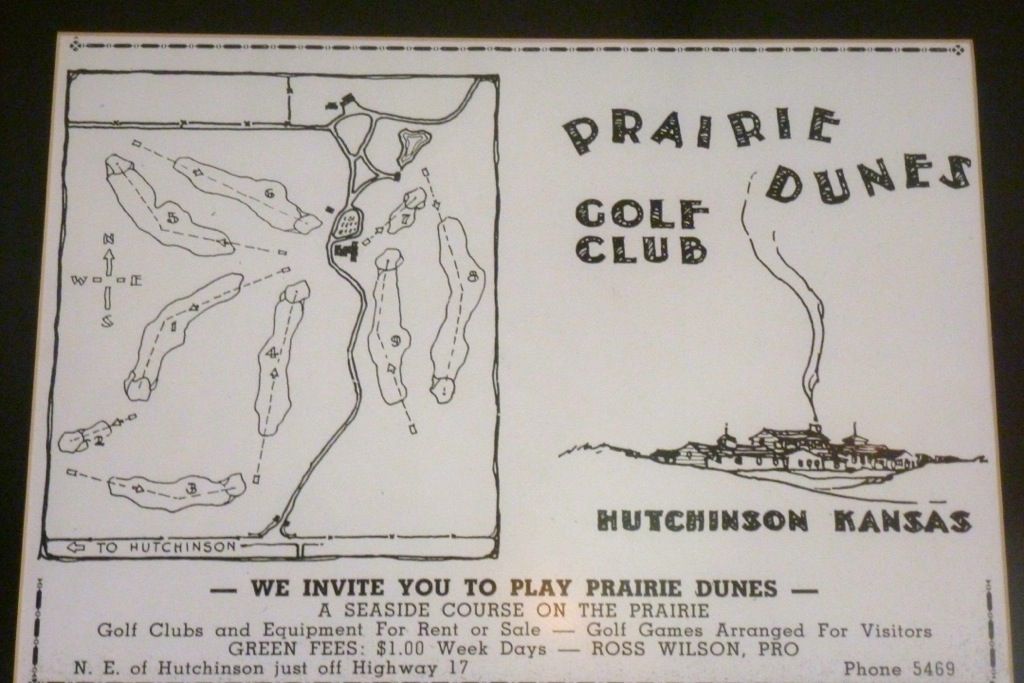
And the completed 18 looks like this:
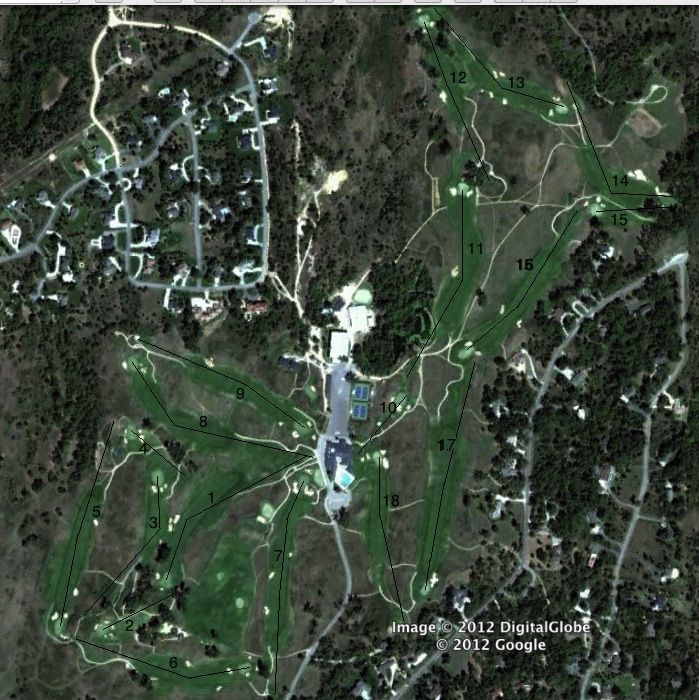
Perry's original 9 is completely intact, with the exception of hole 8 (now 17), which had its original tee moved farther to the left changing what was once a dogleg into a now straightaway hole.
The Perry holes are: 1, 2, 6, 7, 8, 9, 10, 17 and 18.
The Press holes are: the rest

Much like the acclaimed Crystal Downs, the routing at Prairie Dunes has two distinct sections. The first 11 holes at PD treks in and out of the, well, dunes. Once the golfer leaves the 10th green he finds himself on flatter, more links-like terrain (similar to the transition from 11-12 at Crystal Downs). Again, just like at CD, the final two holes return to the original character of the course, leaving the flatter terrain behind.

1st Tee:

Looking back from fairway toward clubhouse:
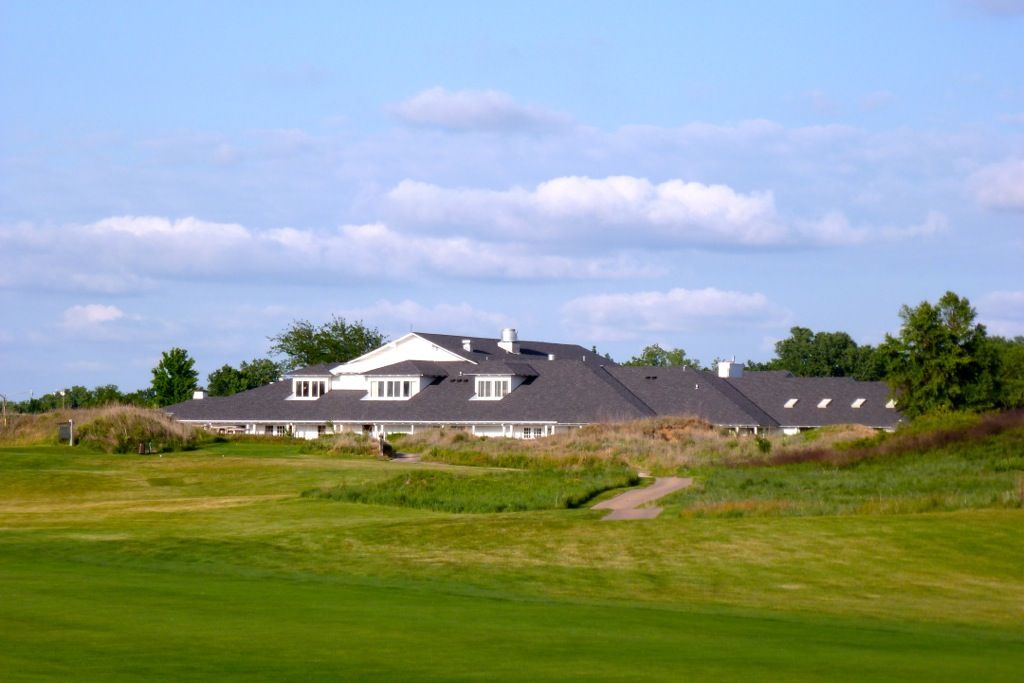

Approach from the inside of the dogleg leaves a shorter but semi-blind approach over the corner of a dune:
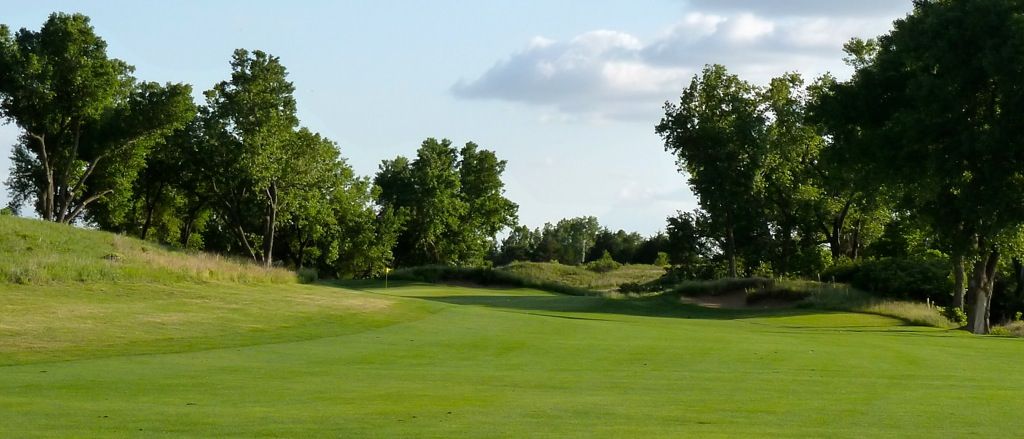
Approach from outside of the dogleg (bunker is a recent non-original but well-integrated addition). From here one has the option of running the ball onto the green, which lay in clear view:
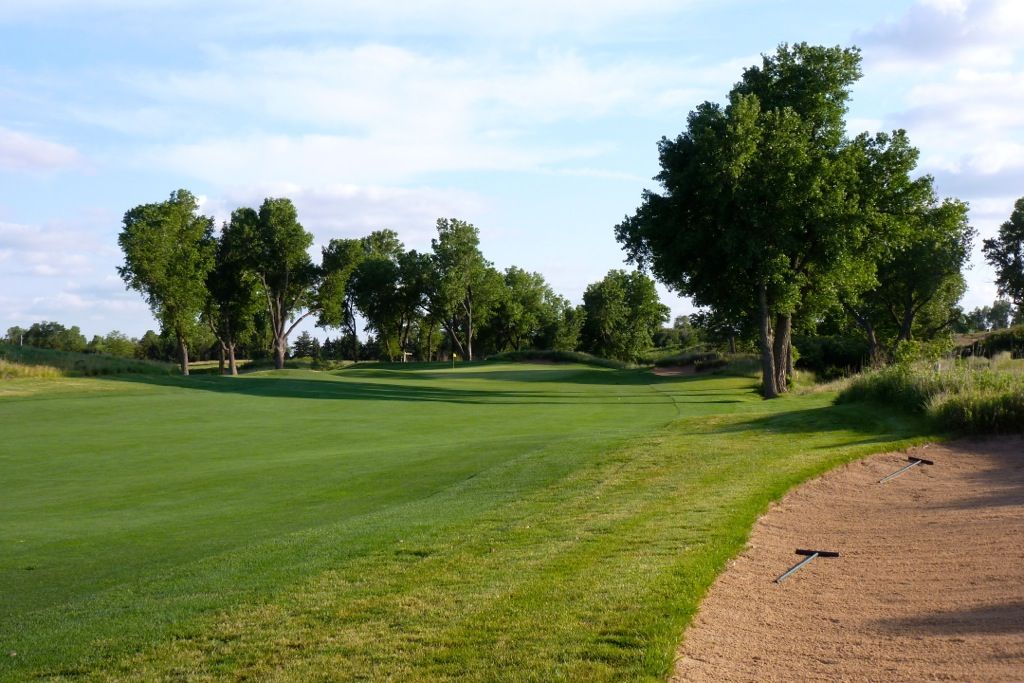
From short of green:
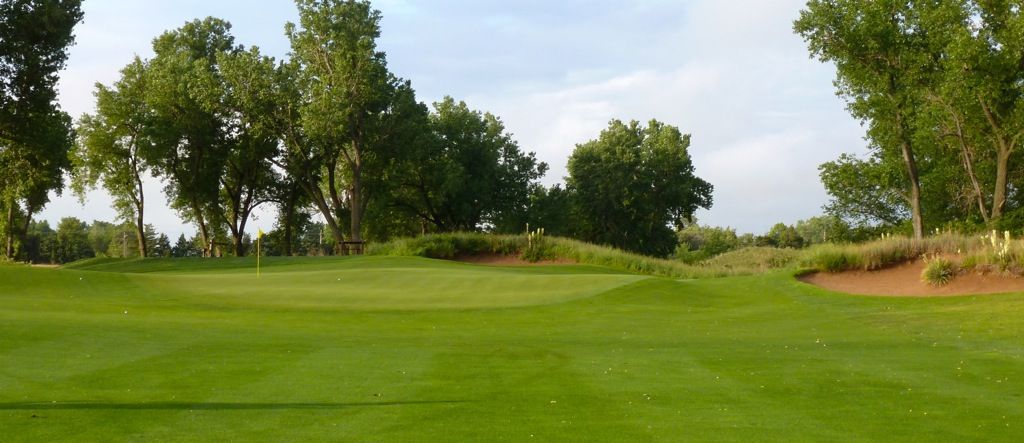
A bunch of looks at the green and the green site. On many courses the a green like the one found at the 1st would easily be the most severe on the golf course. At Prairie Dunes, it is just a sign of what is to come...
From short:
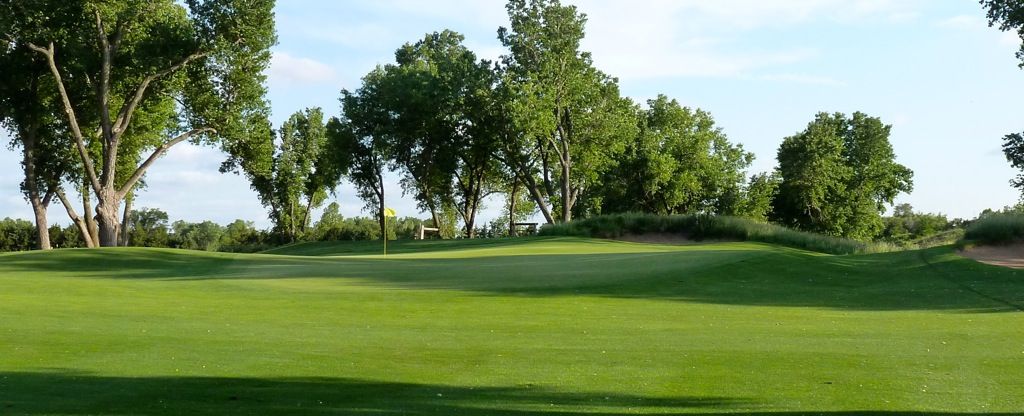
From short-left:
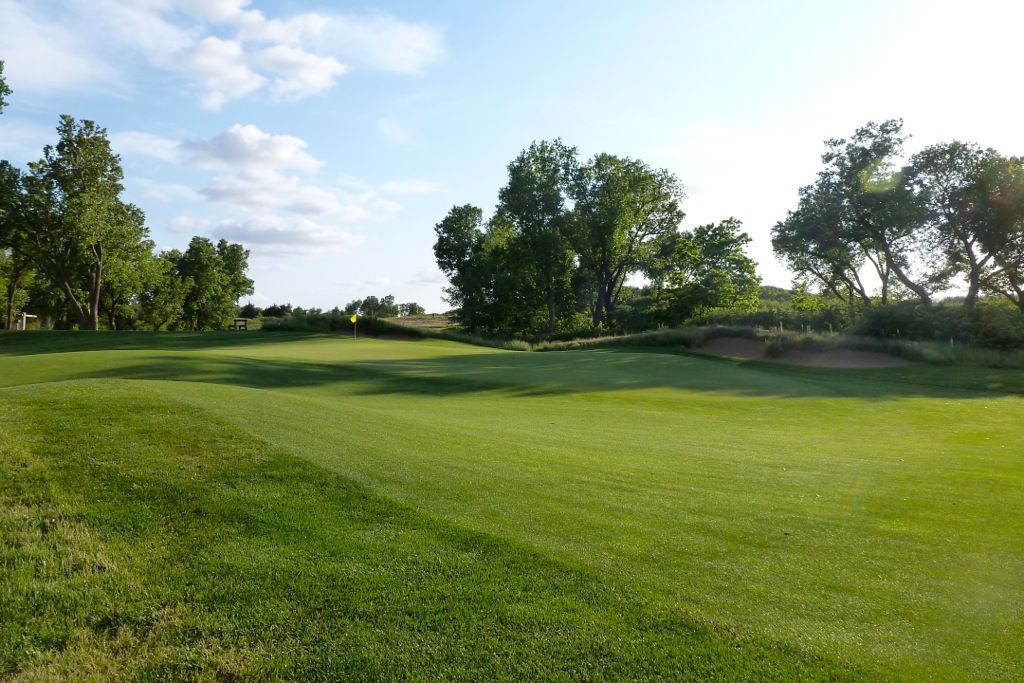
From left:
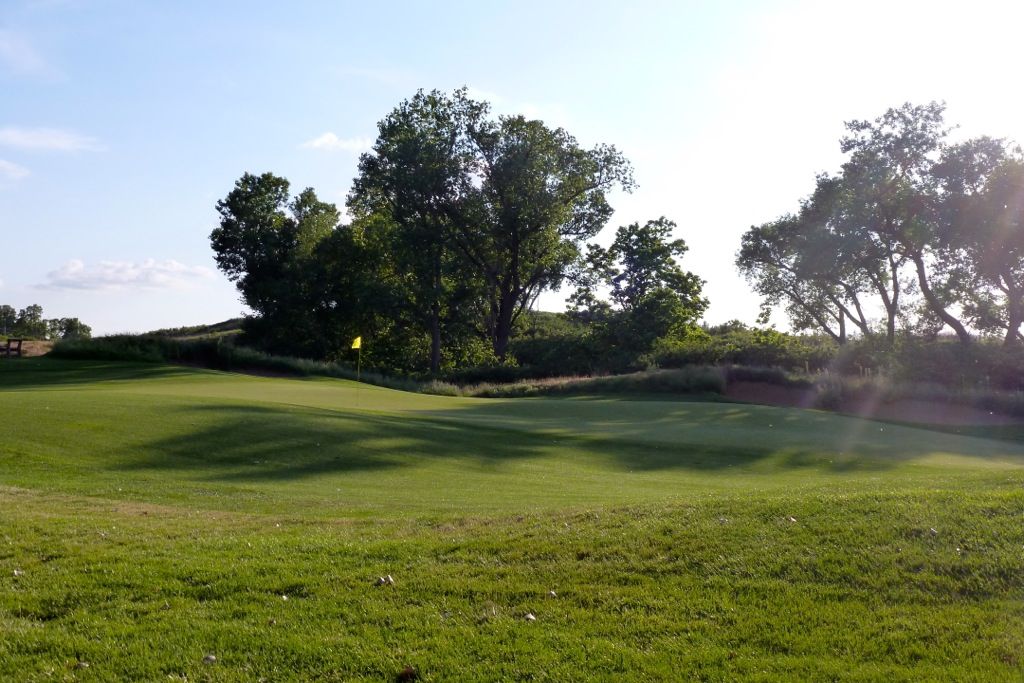
From right:

Back-Left:
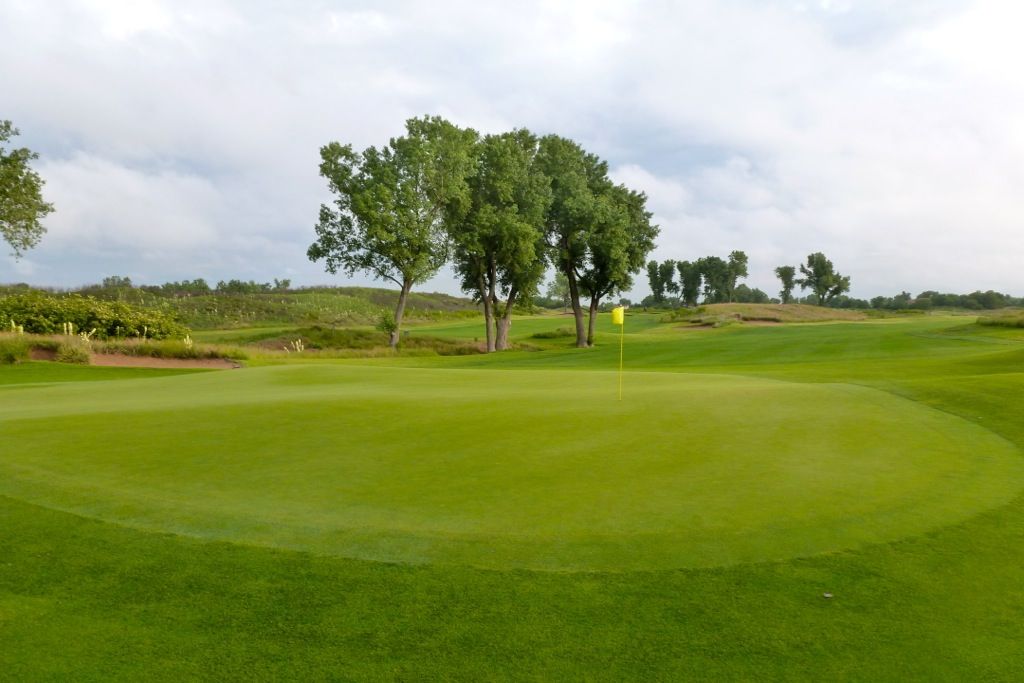
Behind:
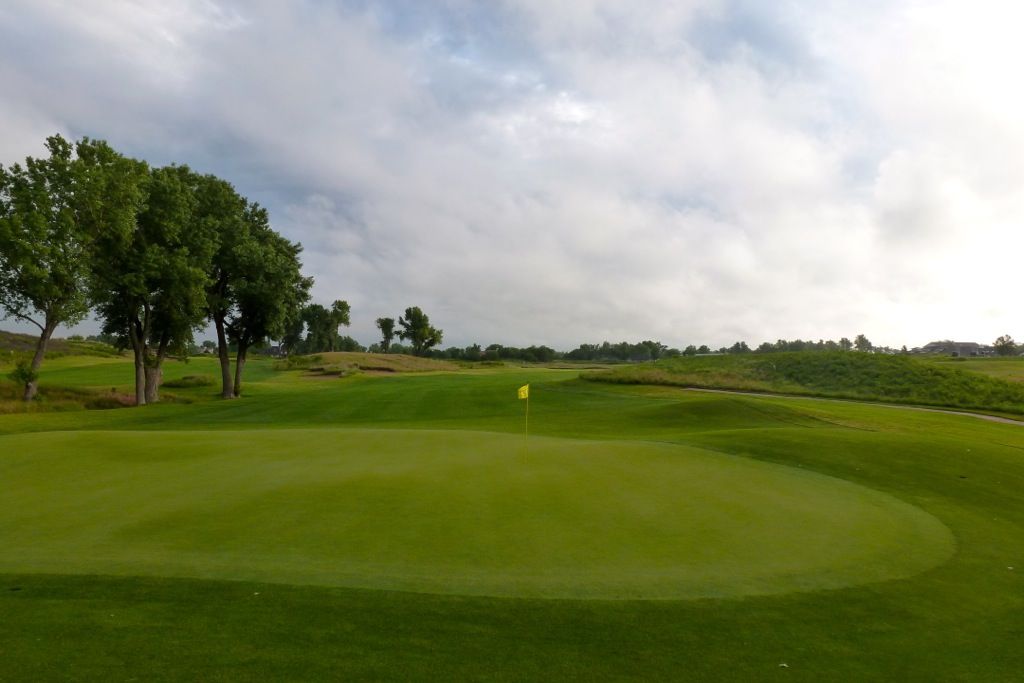
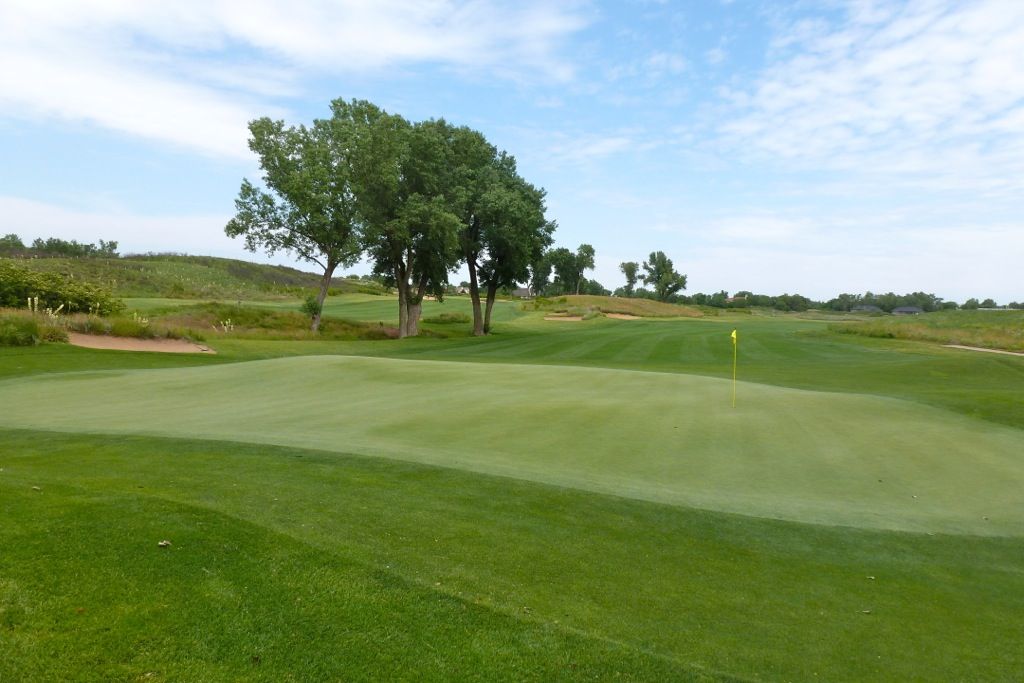
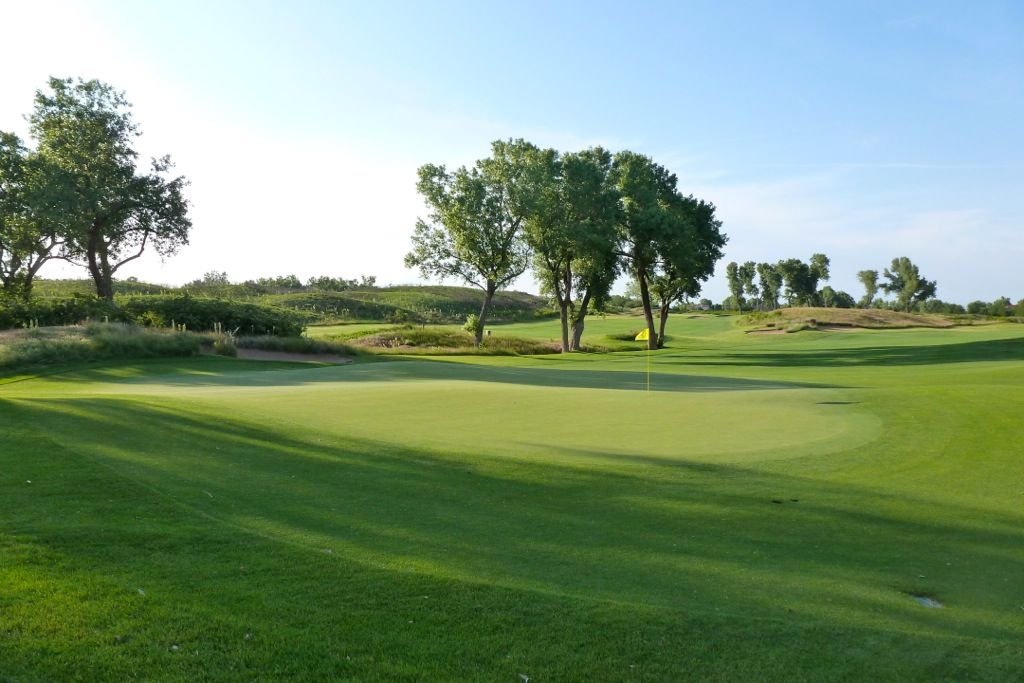
1st green with 3rd fairway in background:
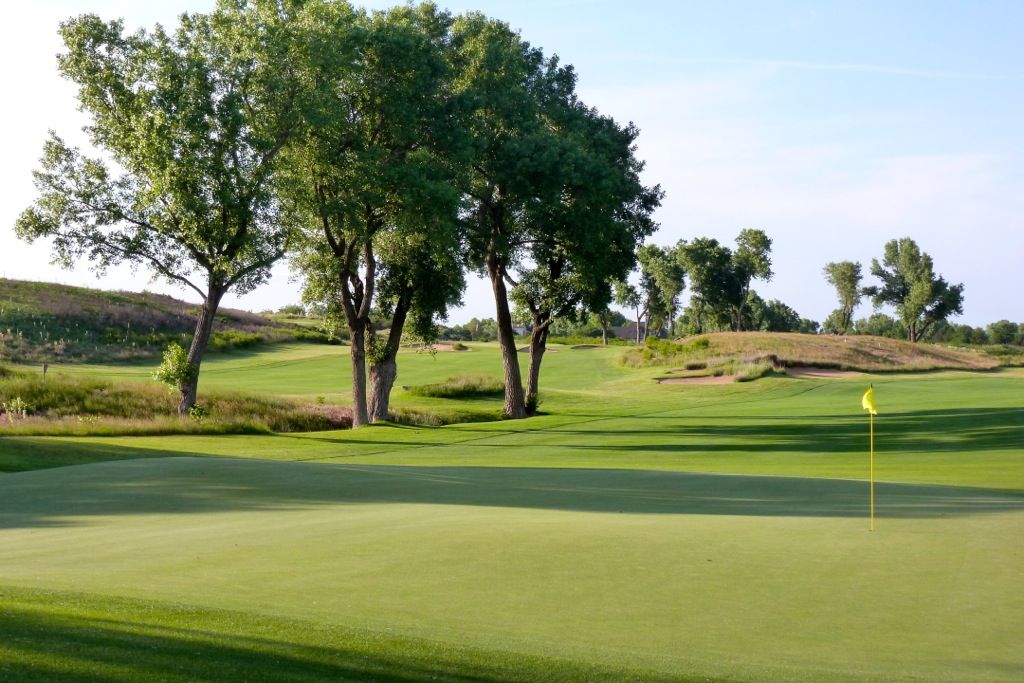
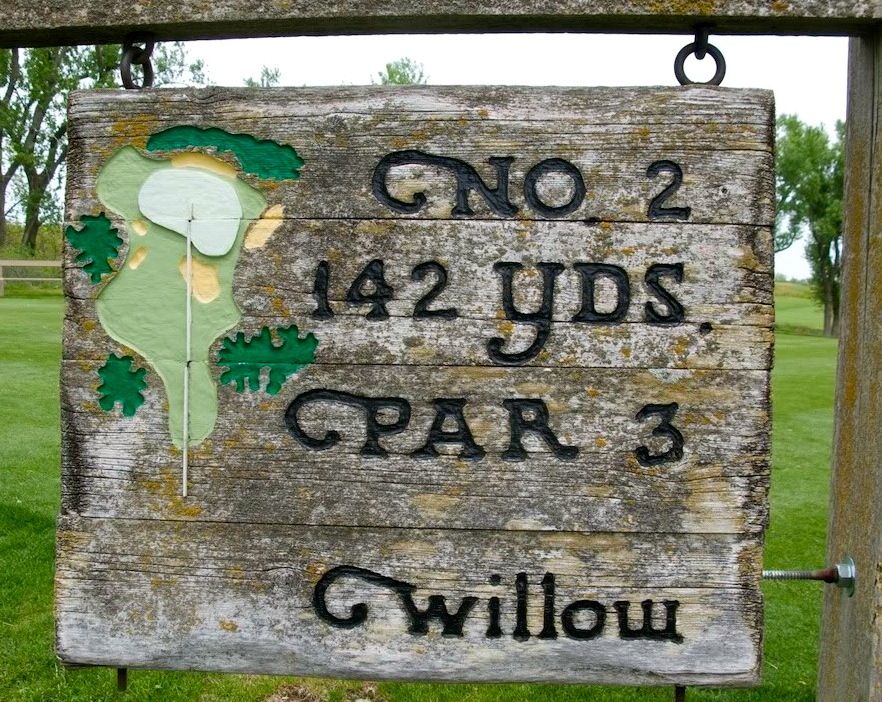
Note: Despite the yardage on the marker, this hole plays to 165 yards on the scorecard
The short but extremely difficult second is one of the best par-3s I have ever seen. The green is benched naturally into the side of a hill, just above a steep drop-off to the left. While the trio of bunkers left will intimidate the golfer, the golfer will find himself in the most severe trouble if he misses to the right.
Tee View:

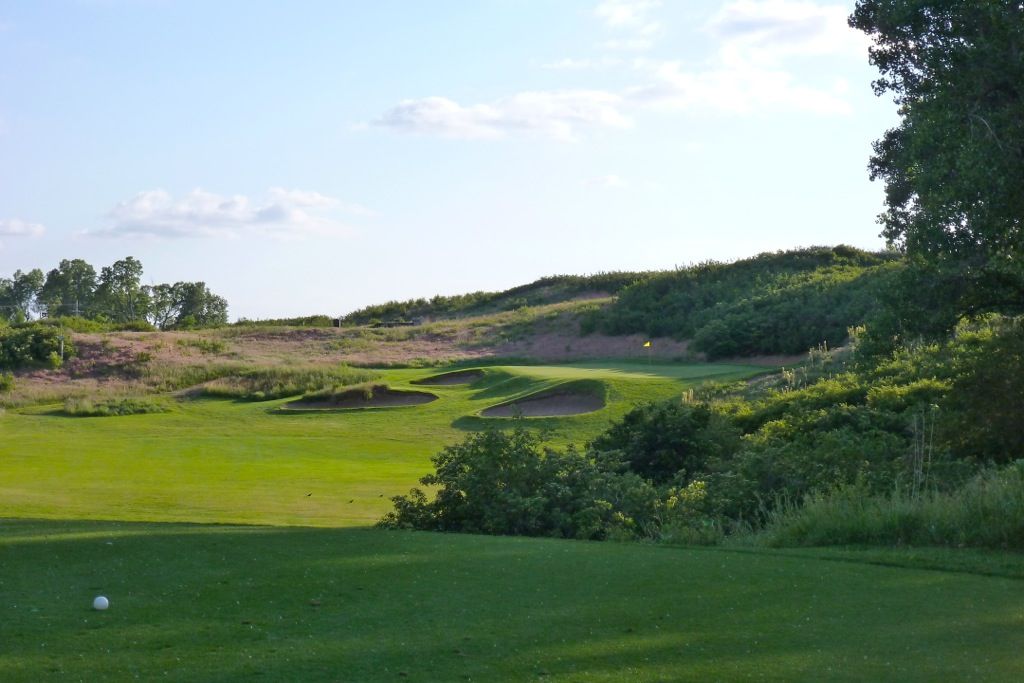

A photo of the hole from shortly after construction. Very nice to see how little this great par-3 has changed, though the bunkering now looks more uniform and slightly less natural.

A look at the bunkering/hill guarding the left side of the green.

This enhanced black and white photo is the best I have that shows the severe contouring on the second green. What it fails to show is how severely the green slopes from back-right to front-left. The pin position shown is unbelievably difficult, located on a tiny tier; any sensible golfer will aim for the front of the green and hope for a long, uphill two-putt. I didn't get to play it, but a front pin would be near impossible.
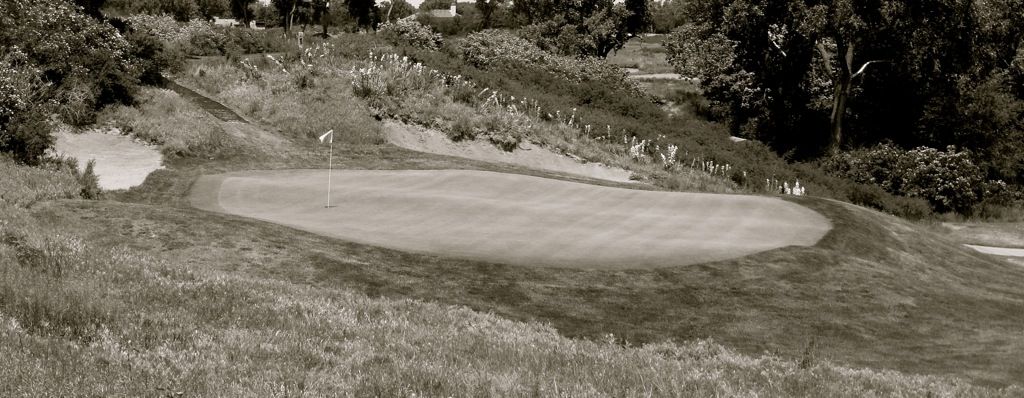
Green from short-right:
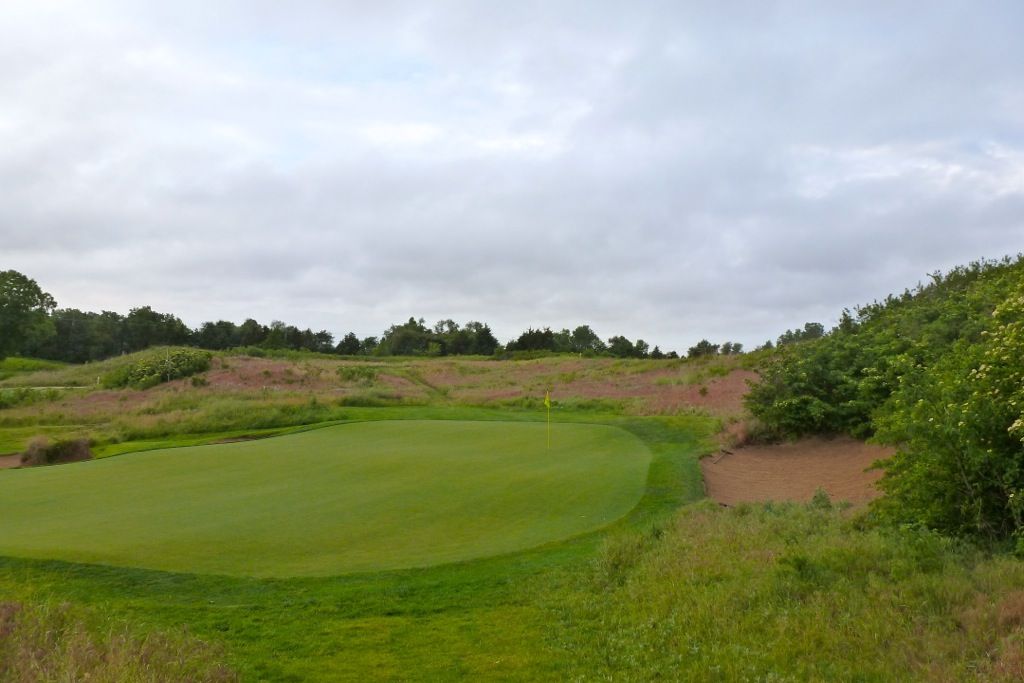
Green from Right:
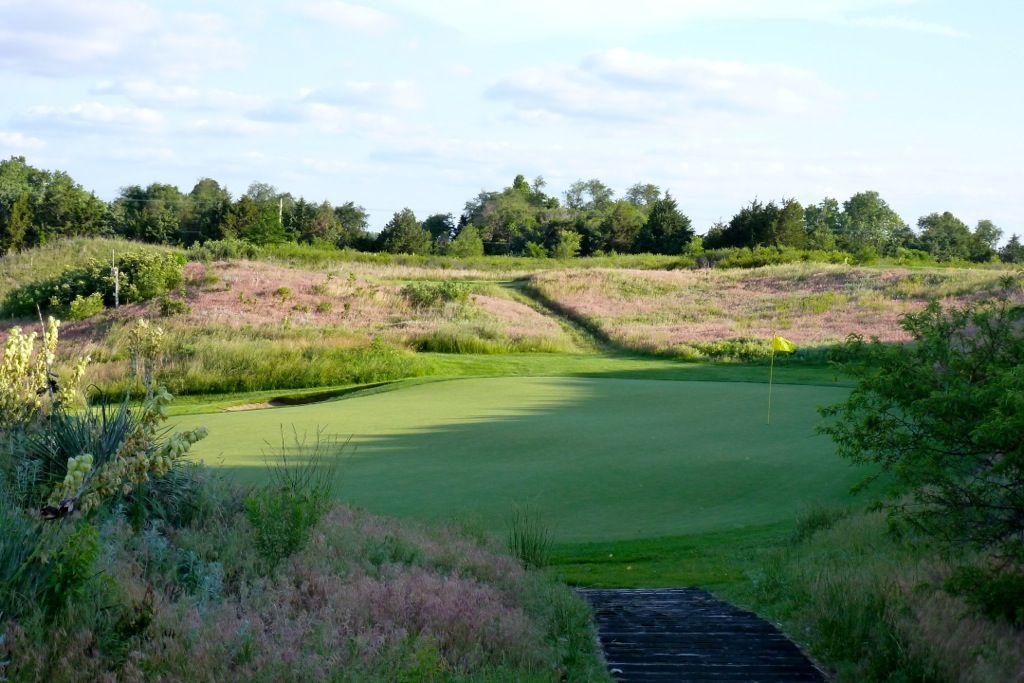
Green from Back-Left:
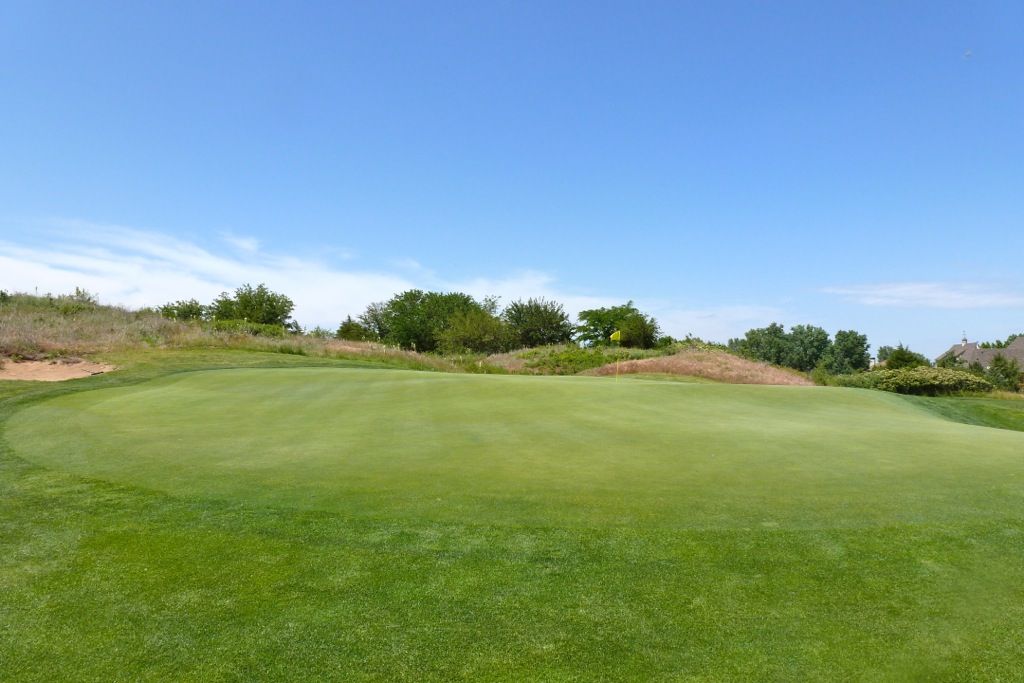
Green from 6th tee:
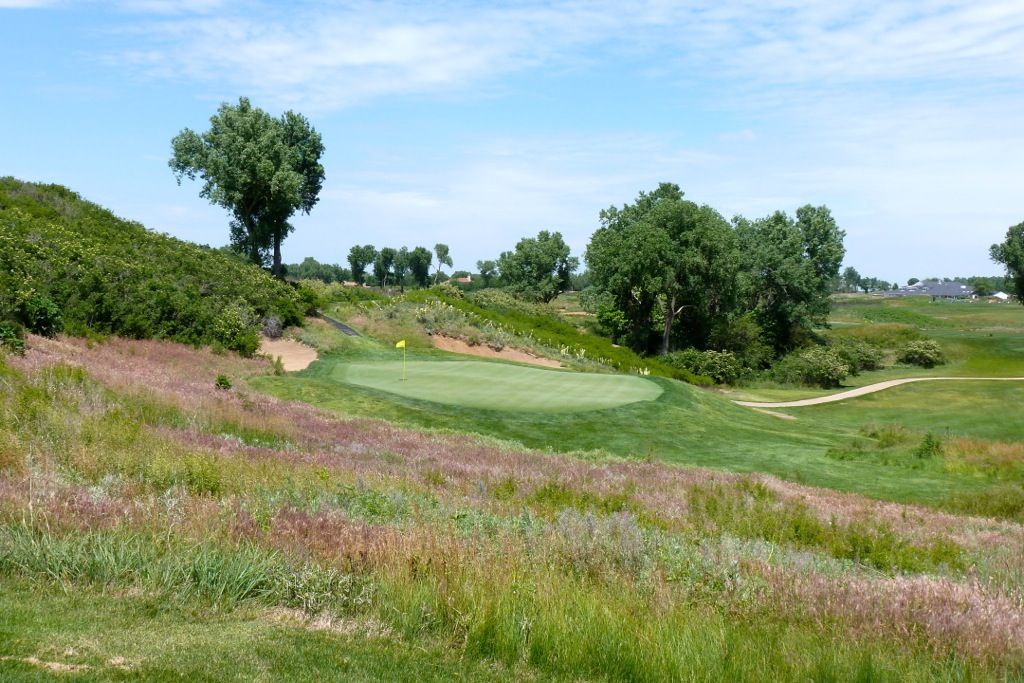
Green site from 6th fairway:

Hole 3: Par 4, 355 Yards
It's a bit of a trek up a set of stairs to reach the gold tee, but man is it ever worth it! The back tee is the highest point on the golf course and from there one is treated to some wonderful pan panoramas of Prairie Dunes.
The story goes that in Perry's original 18 hole routing the idea was for the third tee (presumably the lower tee?) to be the teeing area for the third, but the hole was to play to the 4th green. What an unbelievable hole that would be.
That being said, what's on the ground today is exceptional. Depending on wind direction, one must choose just how much of the bunch one wants to bite off. The bunkers on the outside of the dogleg serve to contain any errant shots, but also to protect the ideal line into the 3rd green.
Back Tee View (note the 4th green at far-left corner of picture):
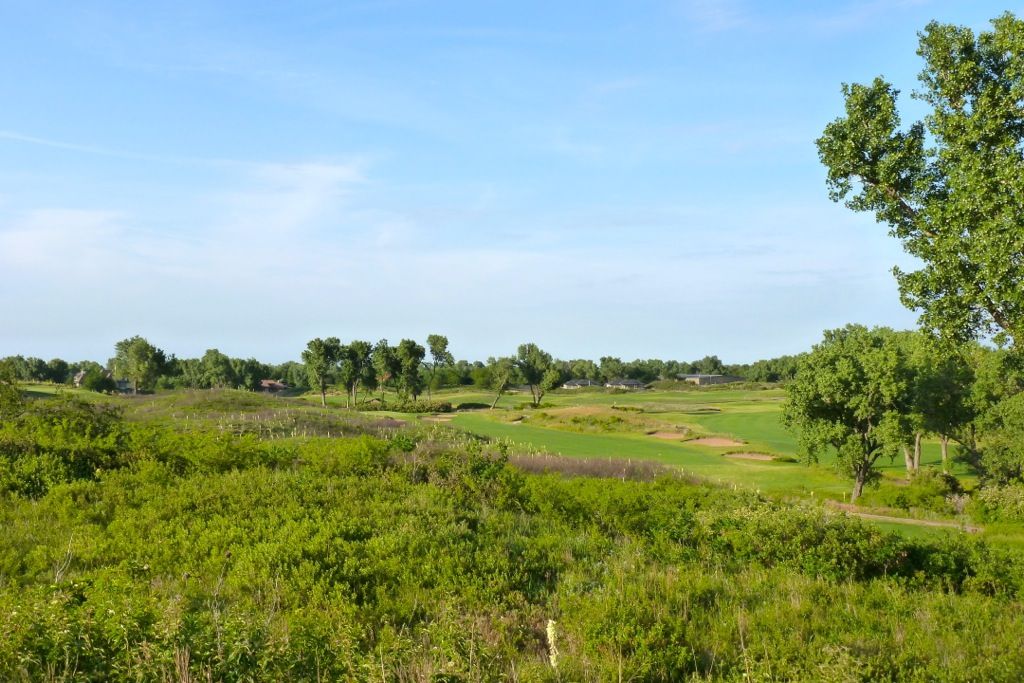
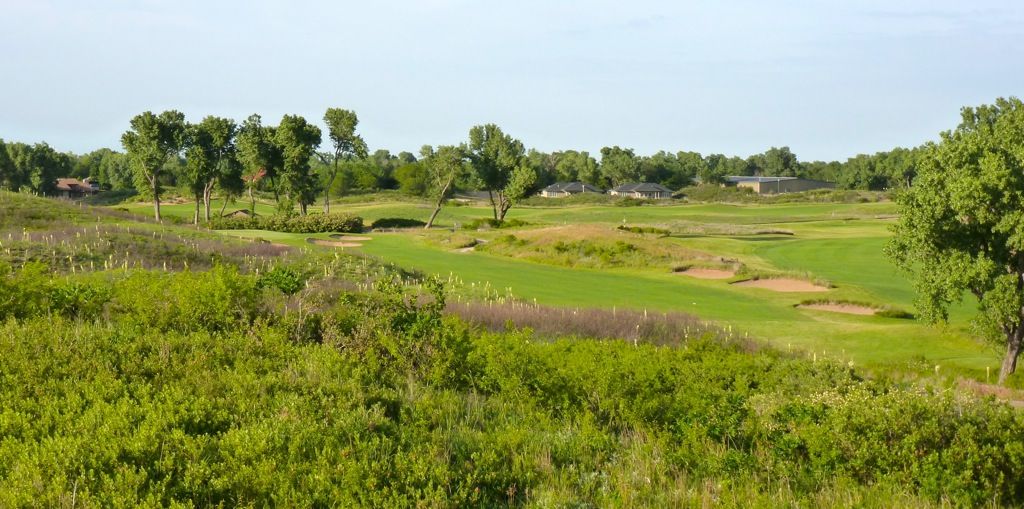
Lower Tee View:
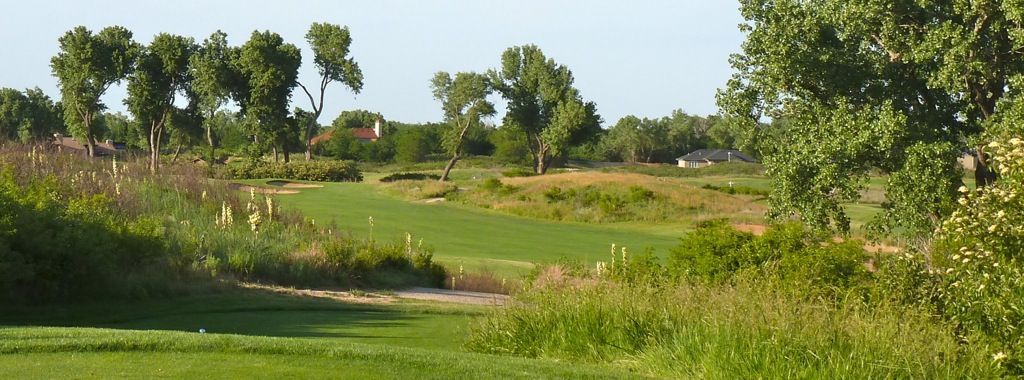
From just short of the fairway it is clear that there is just a bit of reverse-cambre on the 3rd fairway.
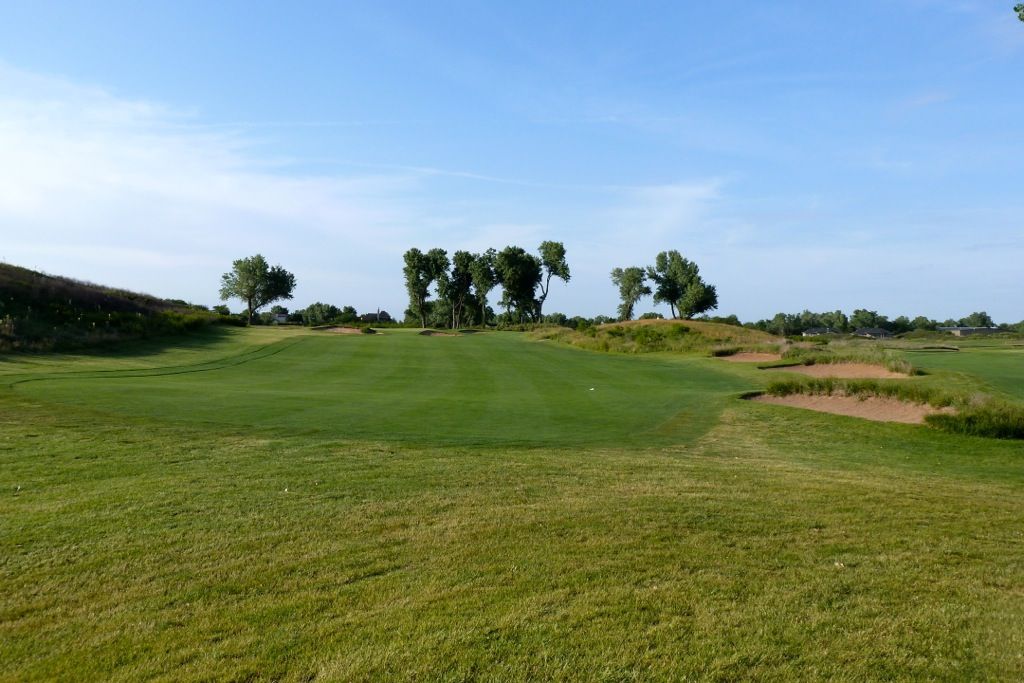
Approaches from the right have the option to run the ball onto the green through a narrow gap between the bunkers, but more importantly these approaches are played into the general tilt of the green making them easier to control.
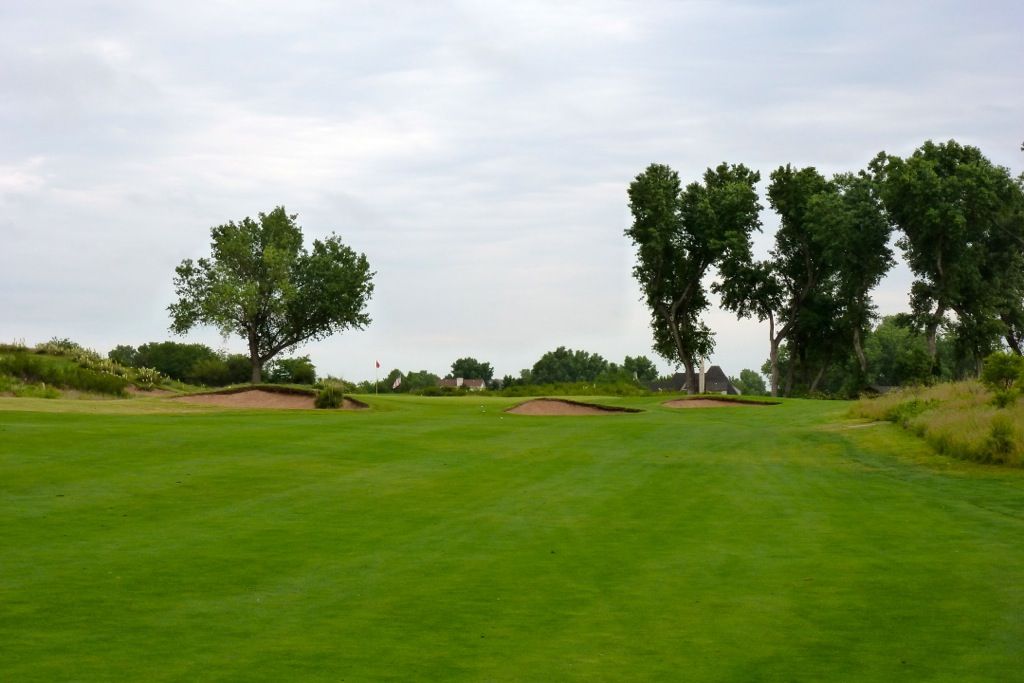
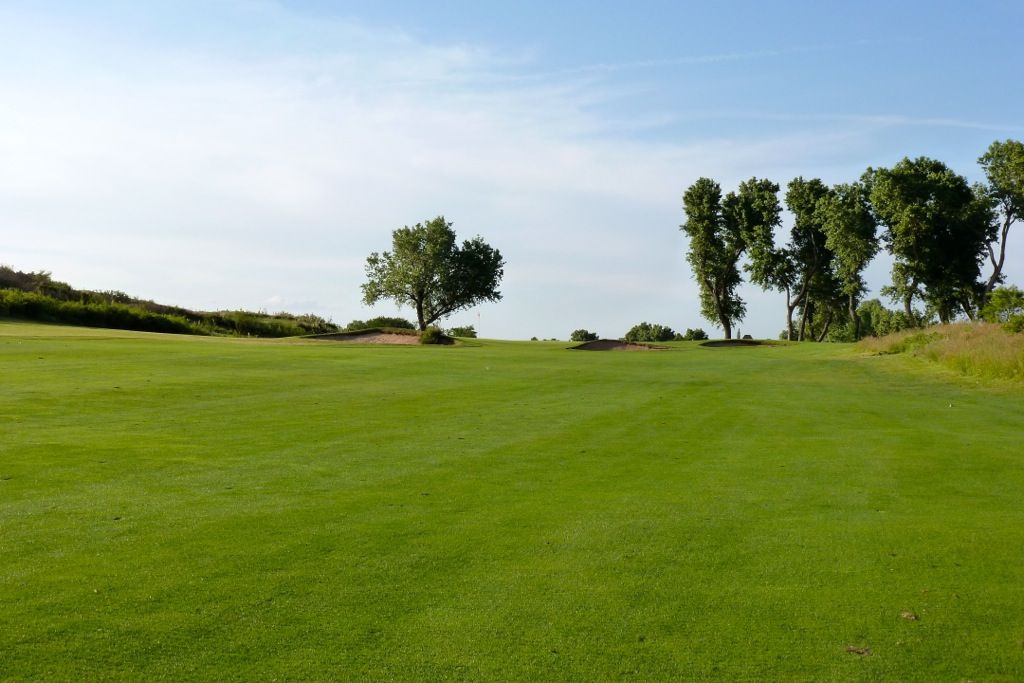

Bunkers short-left:
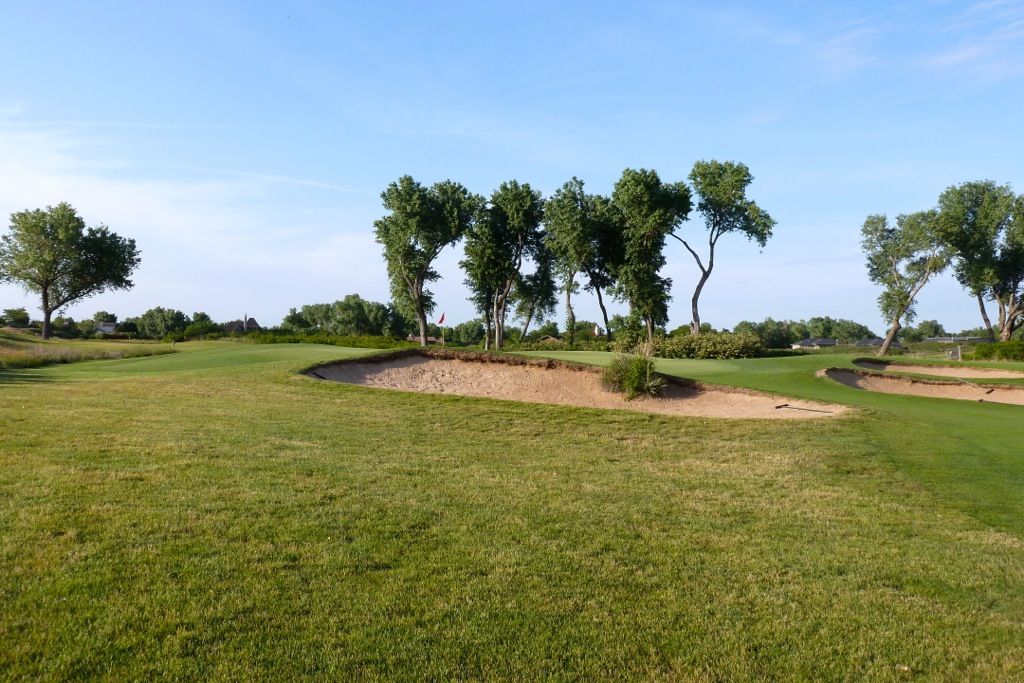
Bunkers short-right:
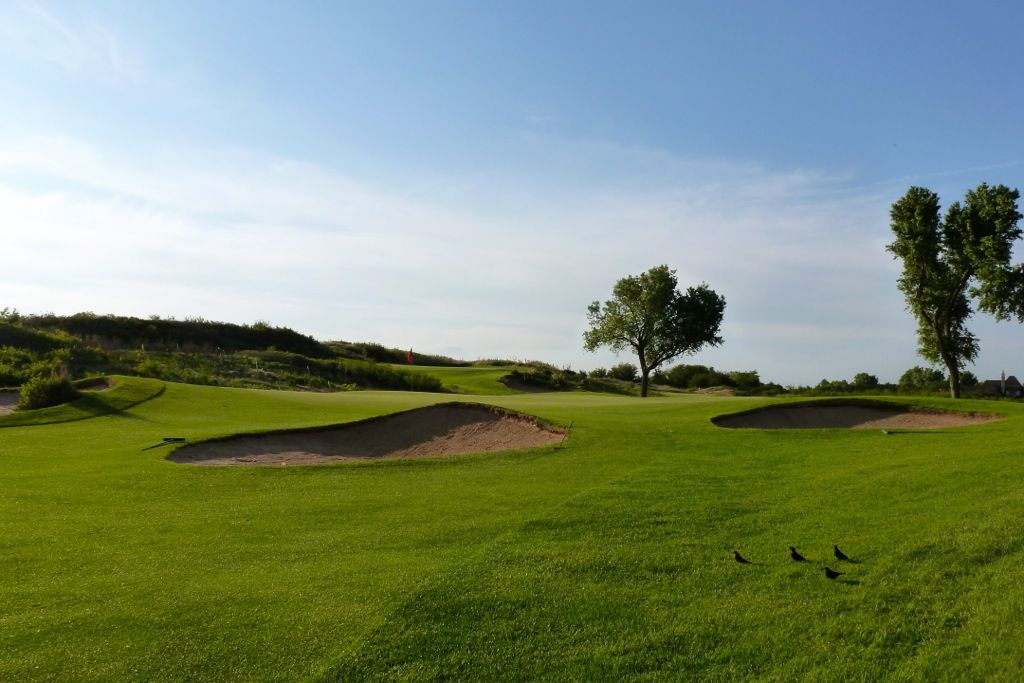
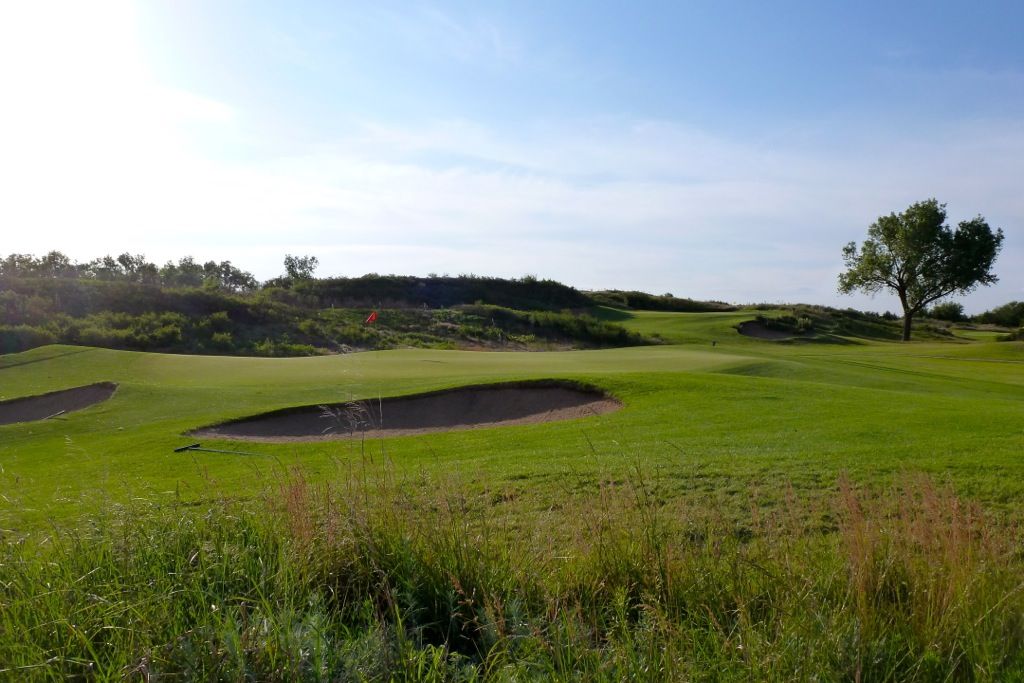
Another wild green with plenty of fairway cut surrounding the green to repel slightly errant approaches. A few looks at the green...
From short-right:

From right:
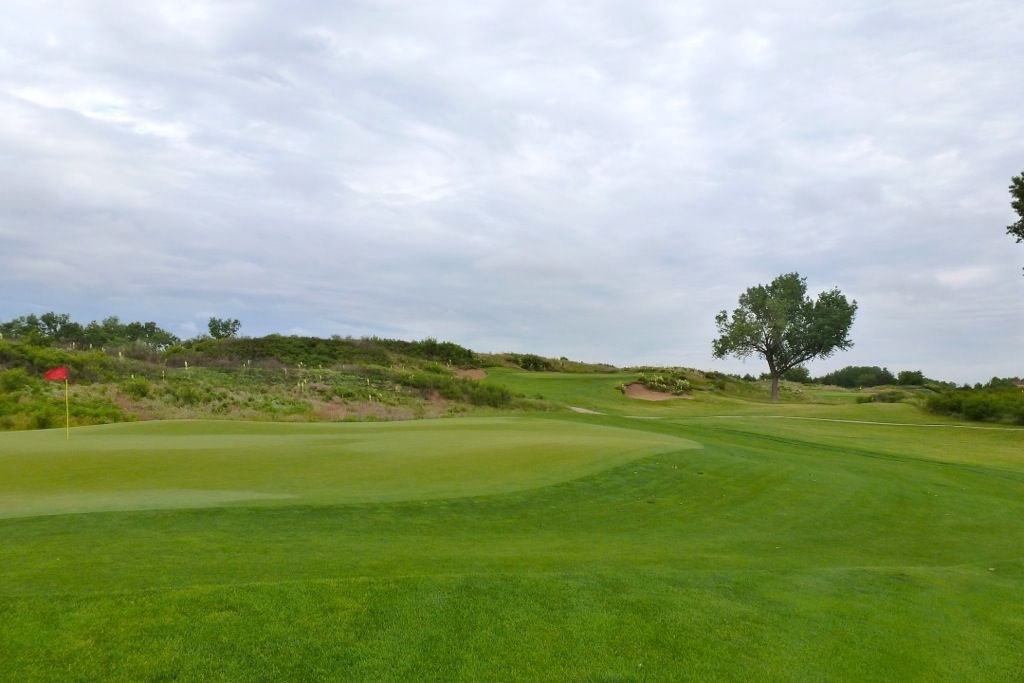
From long-left near 4th green:

From behind:

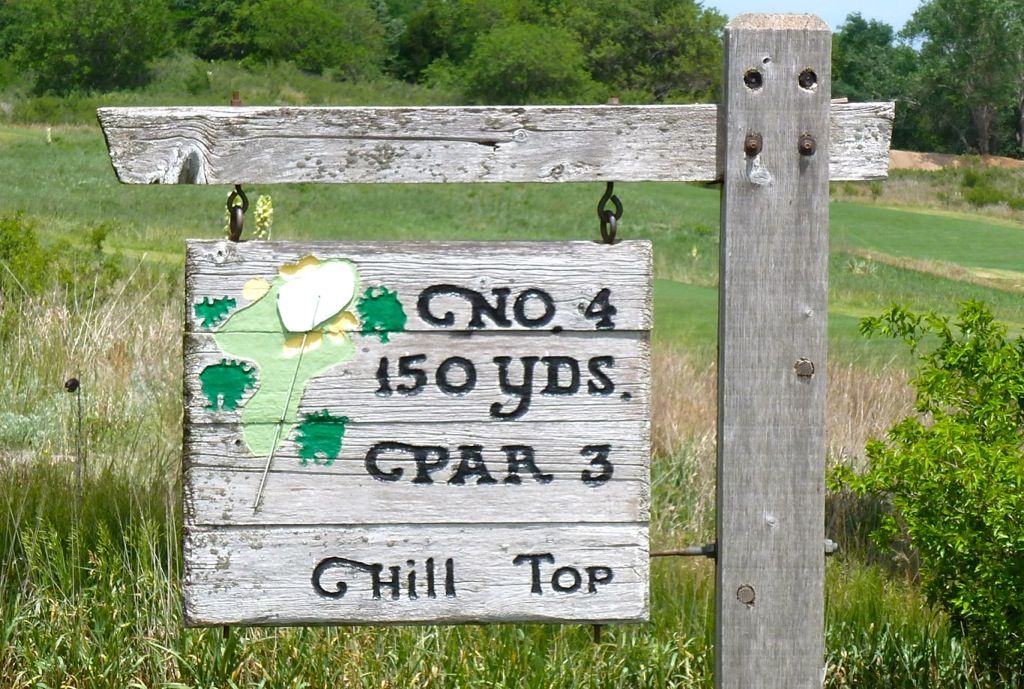
Note: Hole Plays to 168 Yards from Gold and Blue markers
The 4th is quite similar to the second, with its green benched into the side of the hill. Once again, one is intimidated by the bunkering short, but it is the areas long of the green that will really spell trouble.
A few looks from the tee, at different times of day:

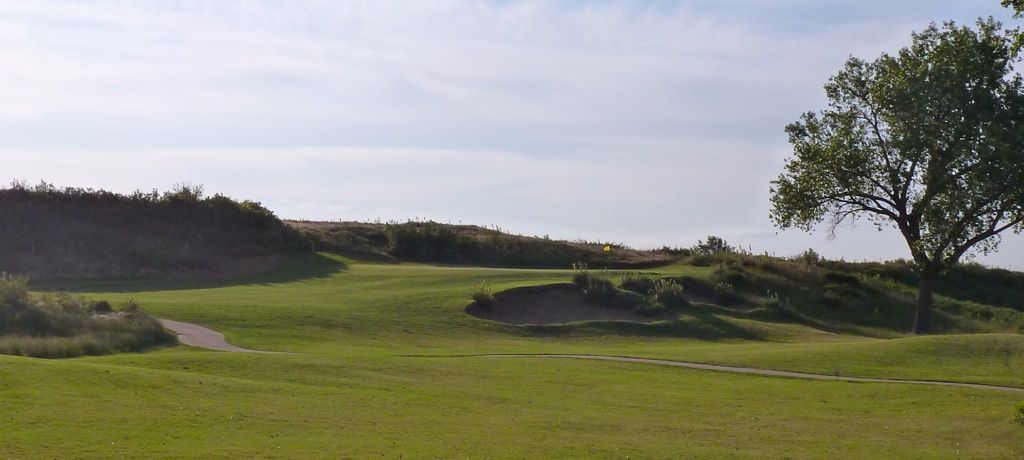

The bunkering benched into the side of the hill short of the green. Yucca plants grow out of the top of the bunkers, adding an element of luck as any shot that finds one of these plants will be an unplayable lie.
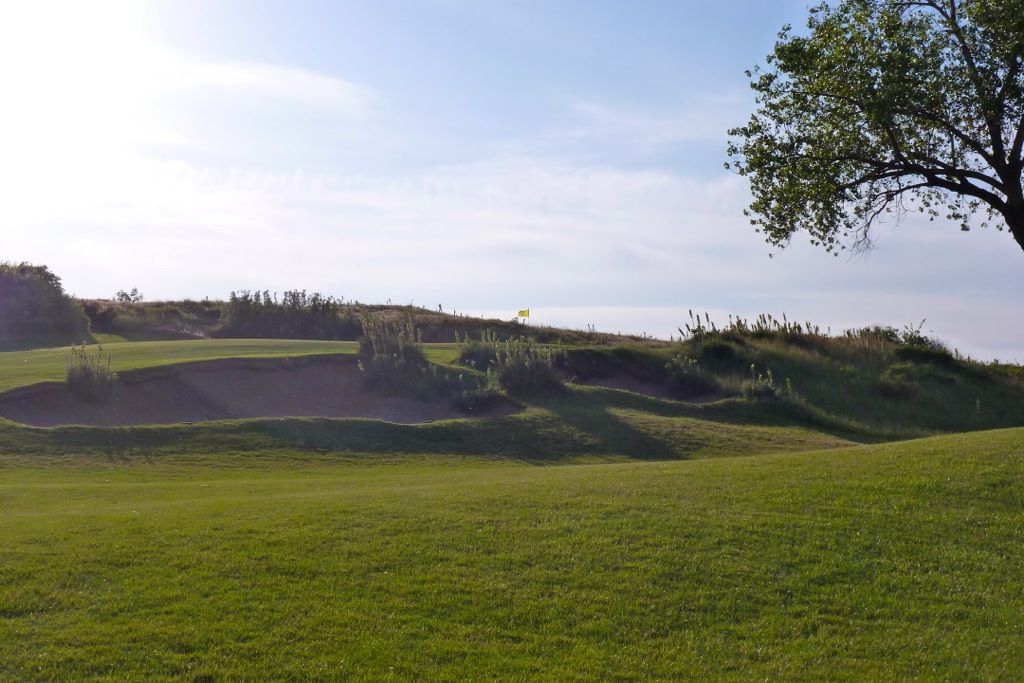
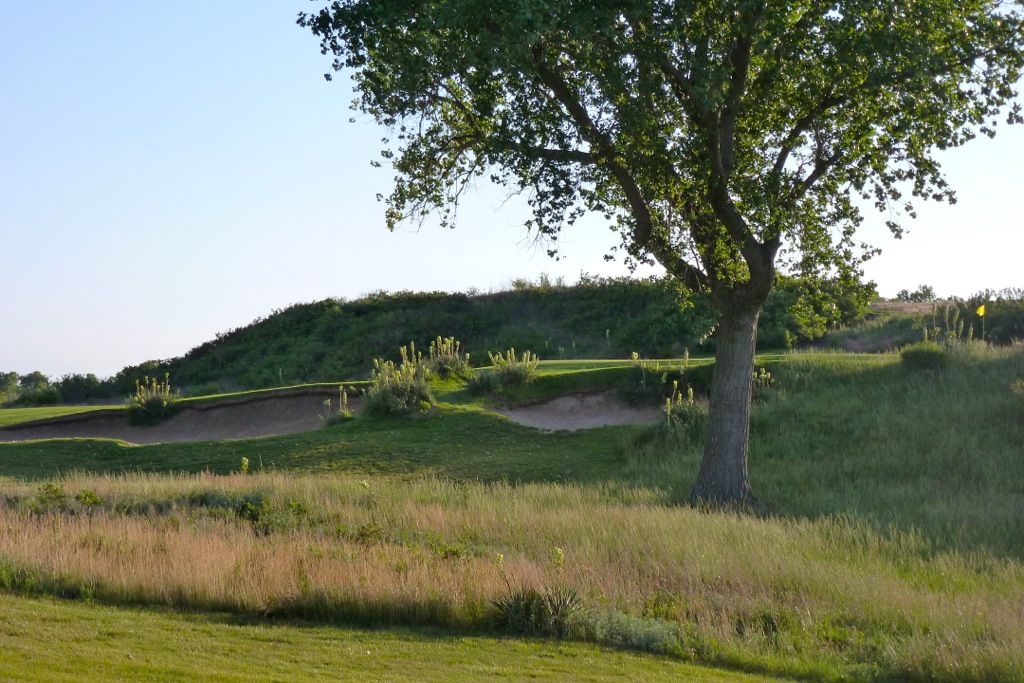
A significant false-front guards the left portion of the green. Shots a little short or left will trundle all the way back down to the rough line.
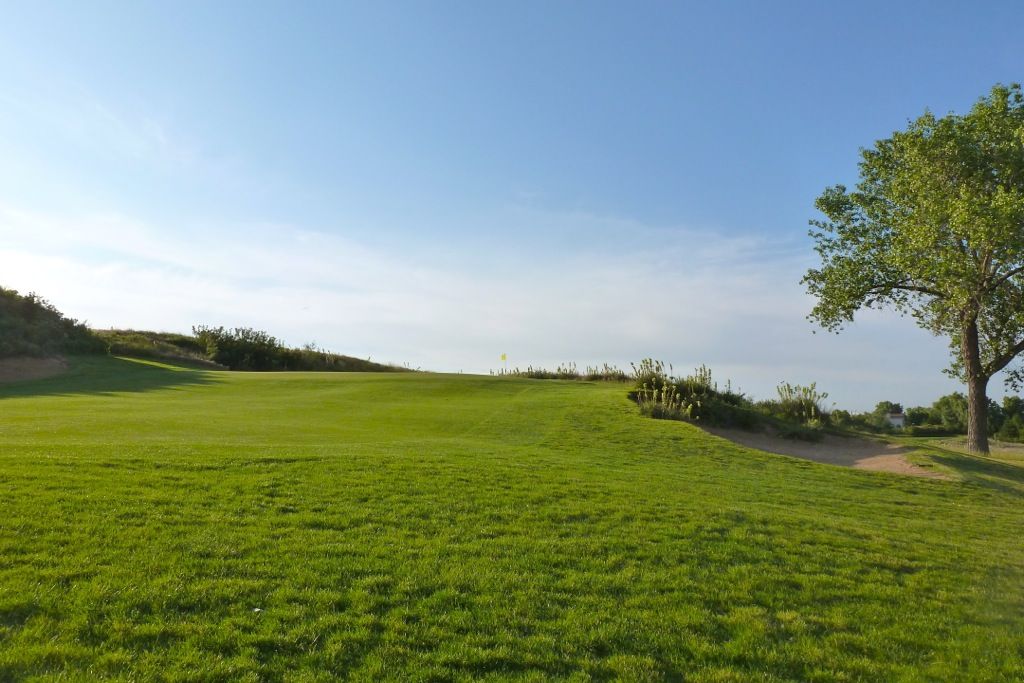
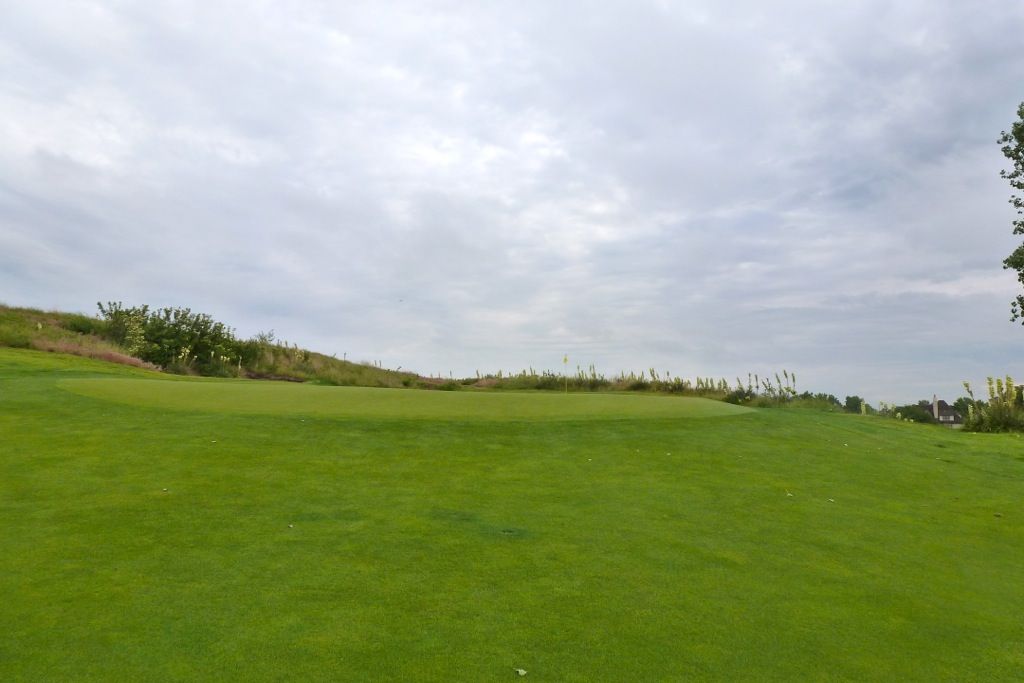
A few looks at the green. Easily the tamest thus far on the golf course, but maybe the hardest to hit.
From the front-left edge:
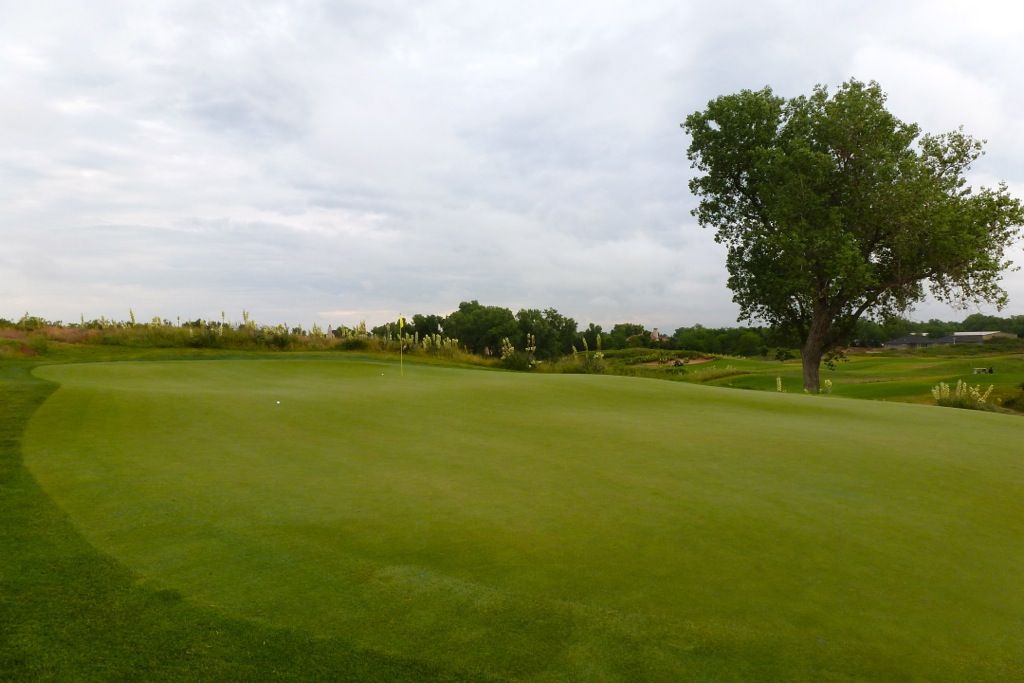
From front-right:
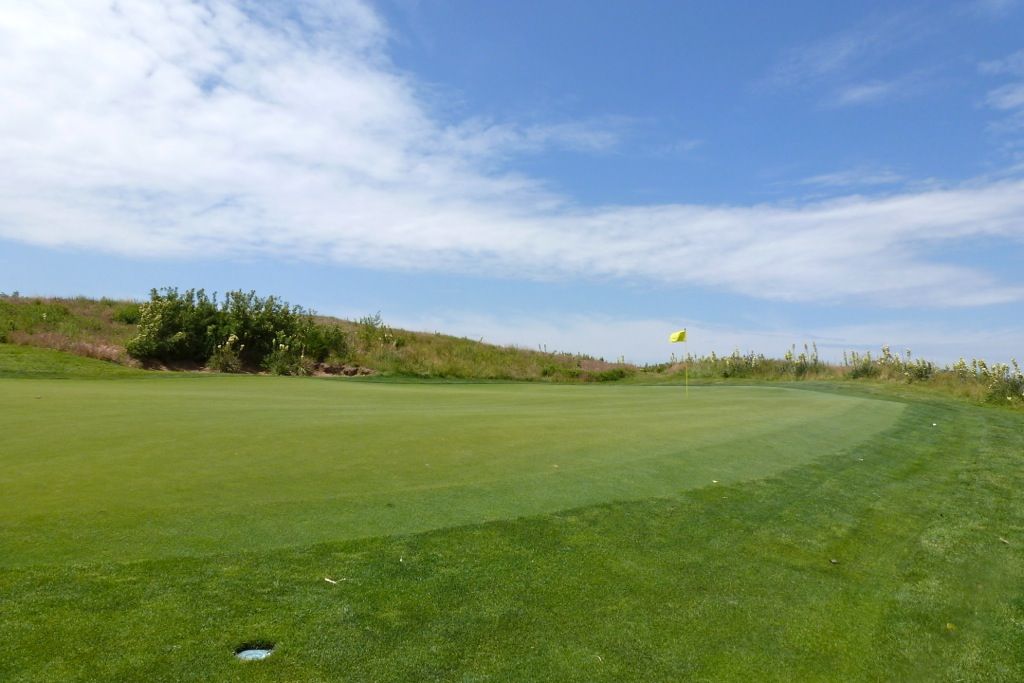
From back-left near the 5th tee:
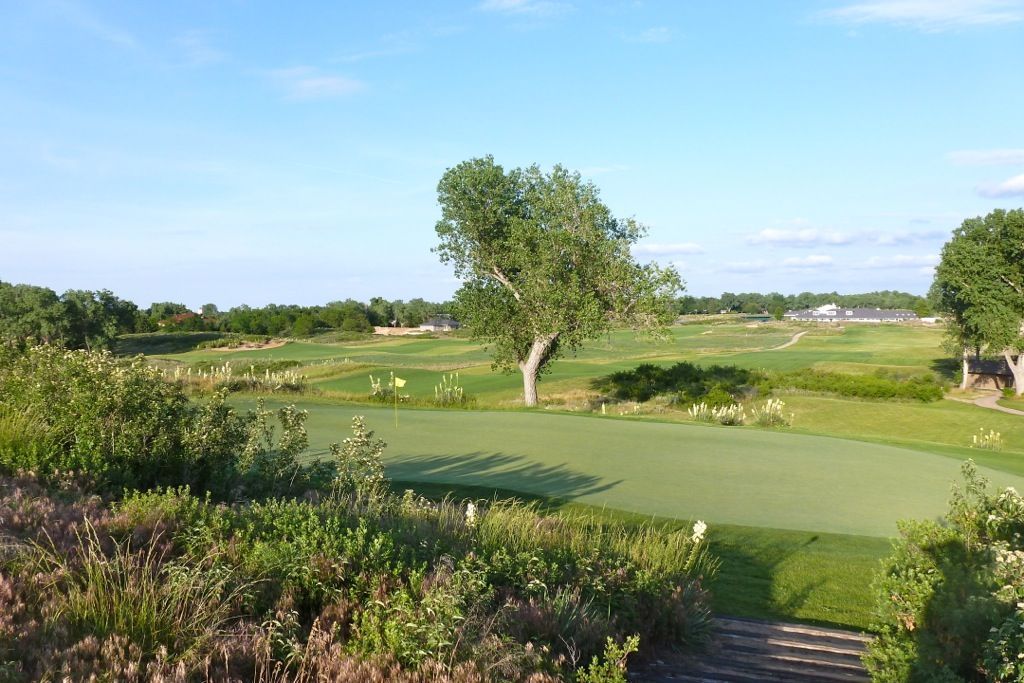
From front-left:

From back-left:
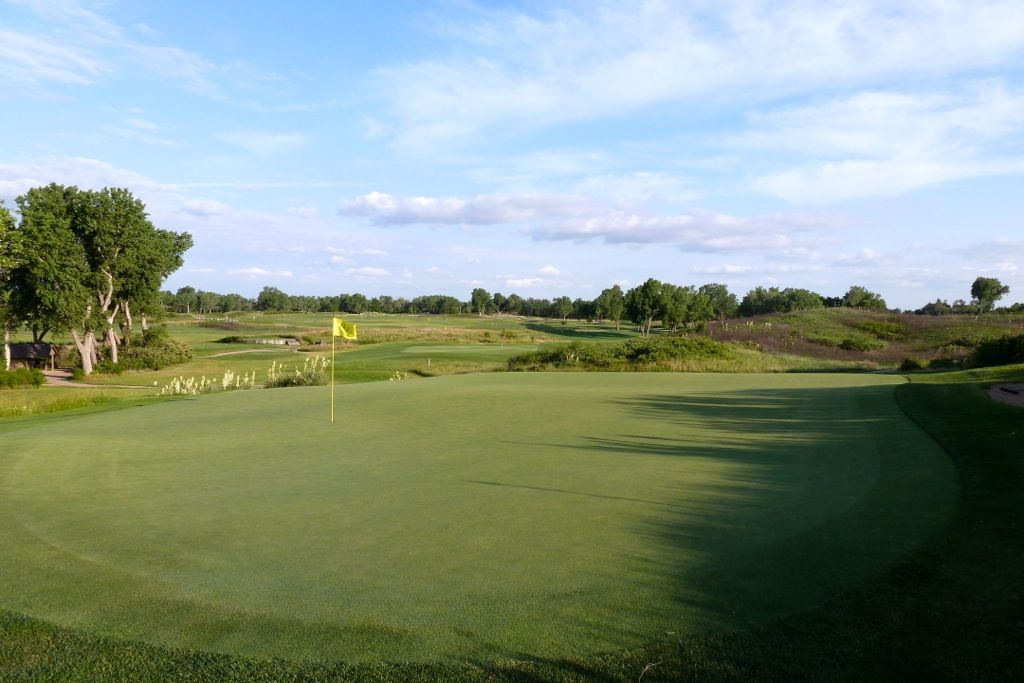
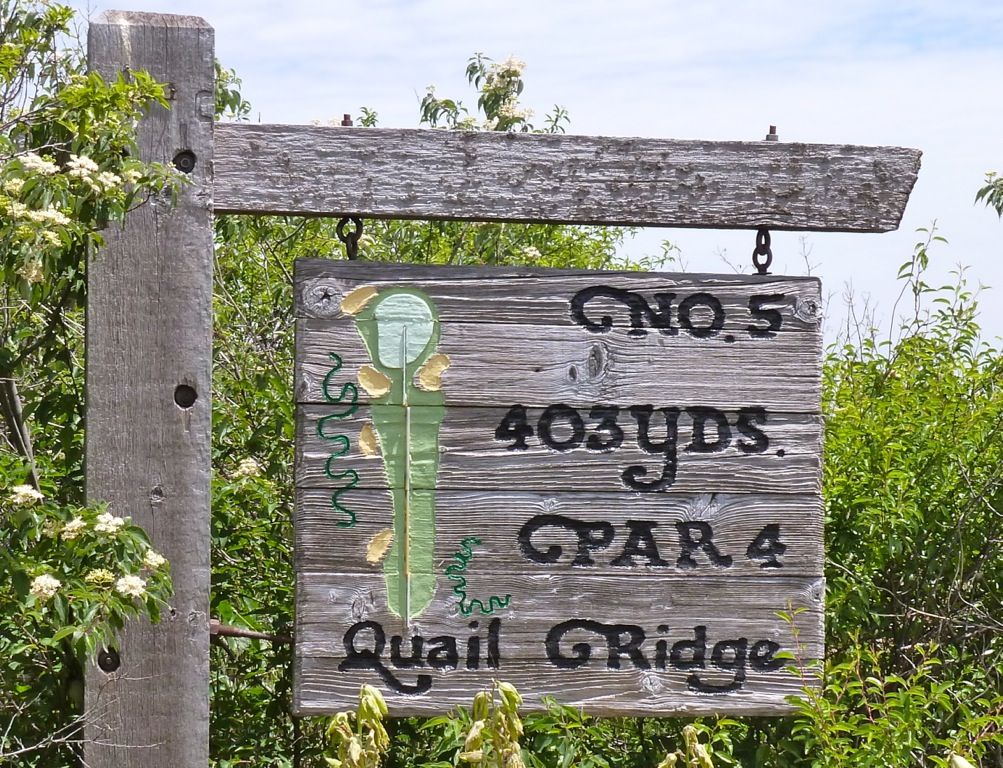
Note: The 5th plays from 490 yards from the new back tee and 438 yards from the old gold/blue tees
Playing into the prevailing wind, the 5th hole is unbelievably long. From the new back tee at nearly 500 yards, this hole will play much more like a par-5 than a par-4 (but hey, par doesn't matter, right?)
The 5th features one of the widest fairways on the golf course, protected by a single deep bunker on the left. The fairway tilts slightly from left to right and approaches from the right are ideal.
Back Tee View:
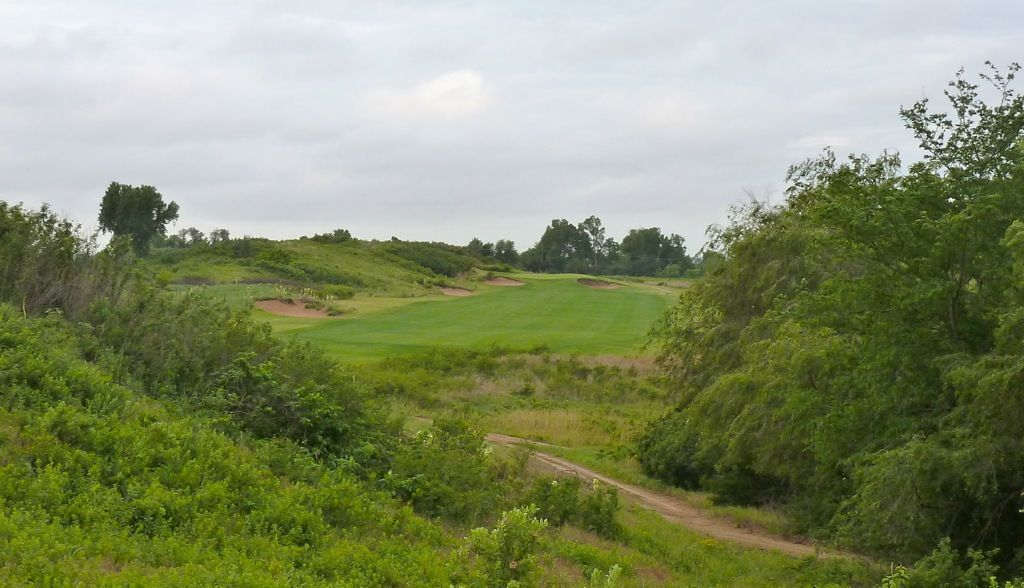
Gold/Blue Tee View:
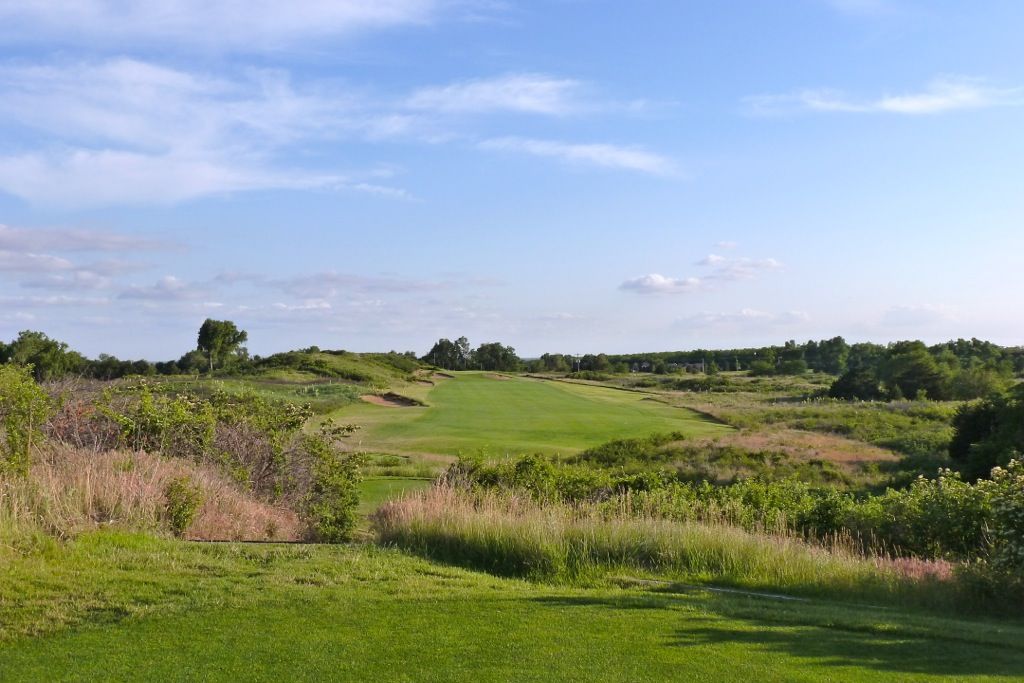
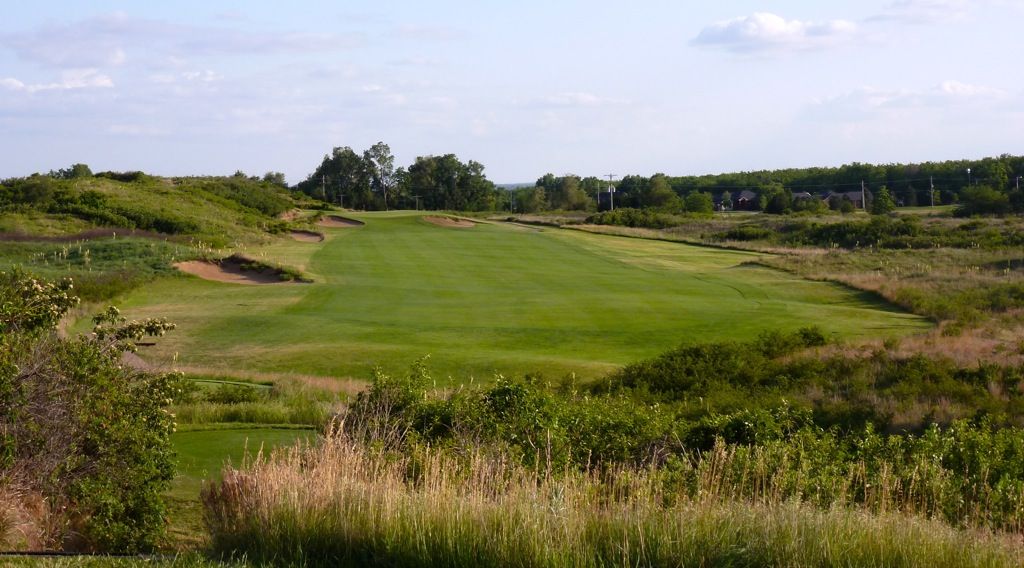
White Tee View:
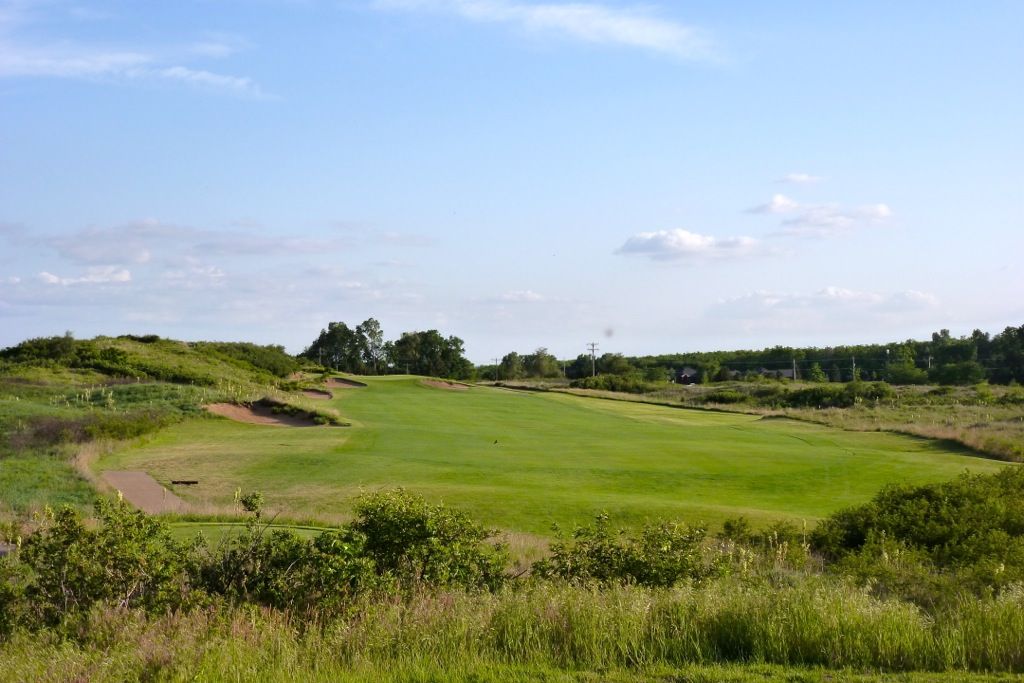
I'm not sure whether this green is harder to hit with 3W into the wind or 6i downwind. This uphill approach with little room to run the ball onto the green is very difficult downwind -- almost any shot landing on the putting surface will run through the green. The golfer must deftly land his approach into the upslope short of the green and have it trundle onto the putting surface.
Approaching from the left bunker is the worst spot (gunch excepted) to come in from:
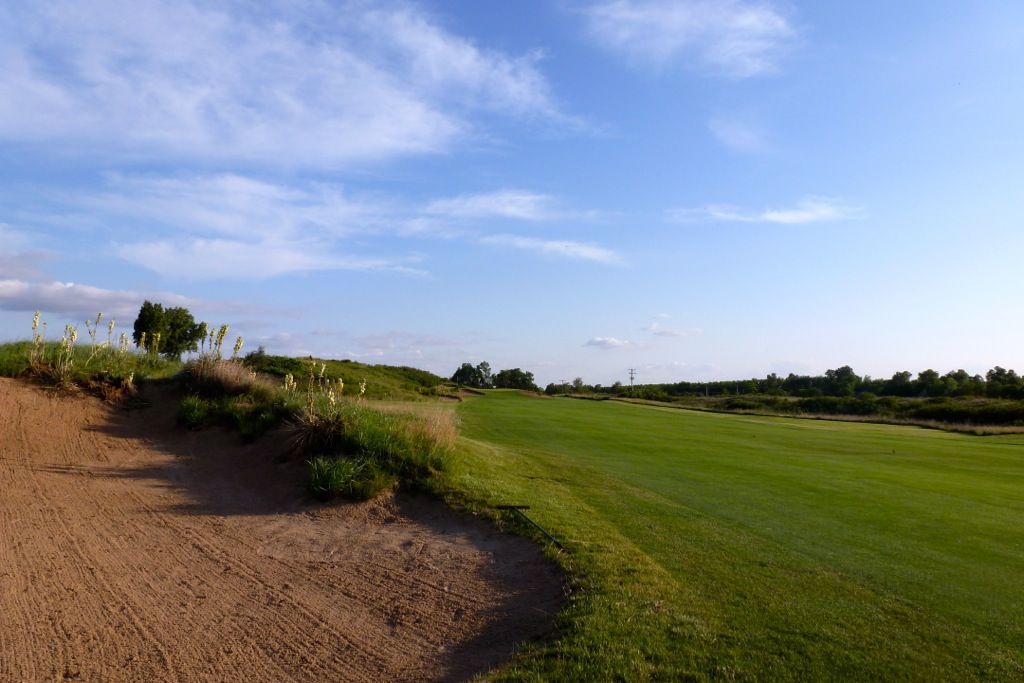
Approaches from the centre of the fairway must deal with deep bunkering left and right leaving no room to miss this approach:

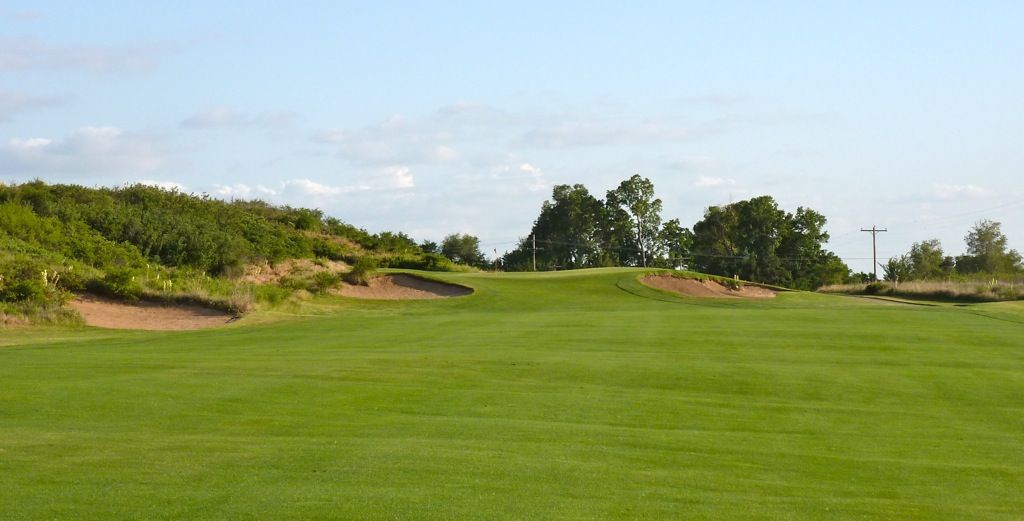
A closer look at the greenside bunkering:


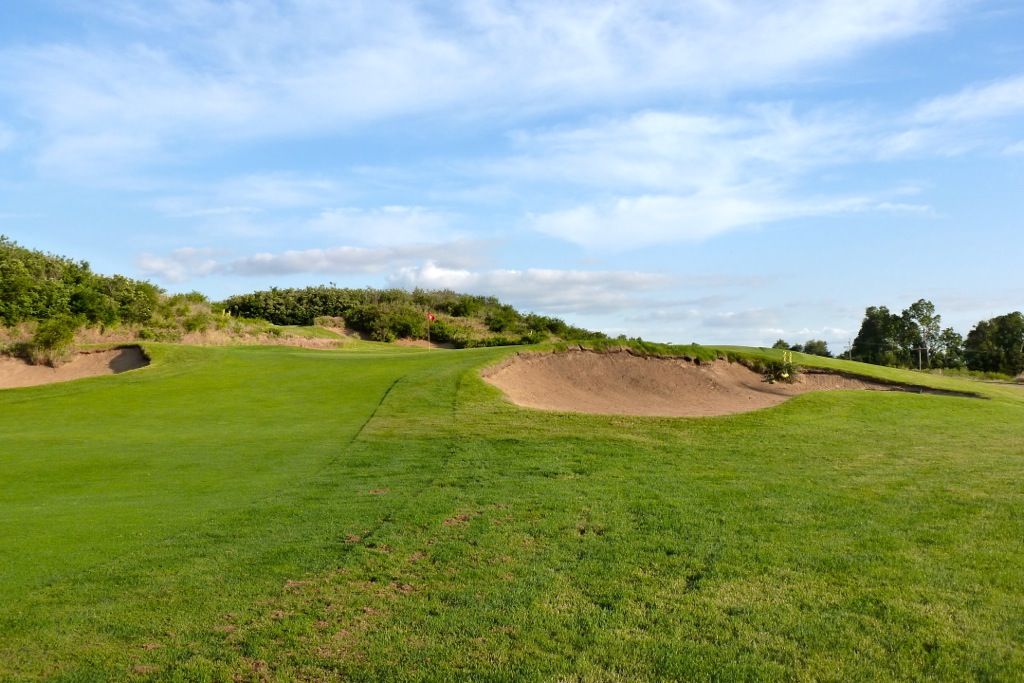
And the putting surface:
From front-left:
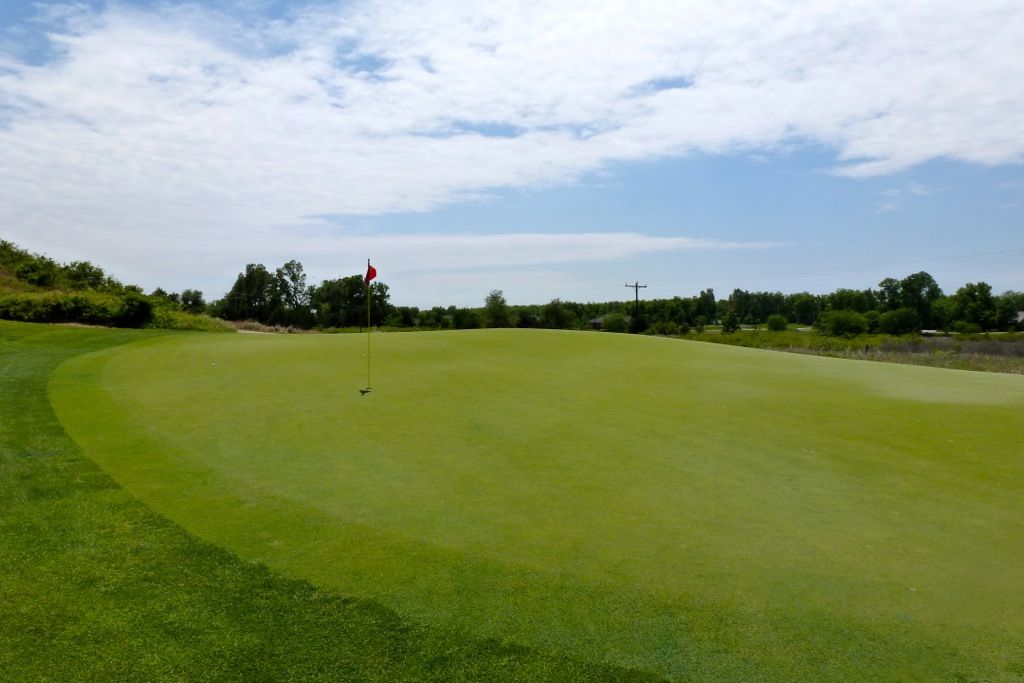
From back-left:
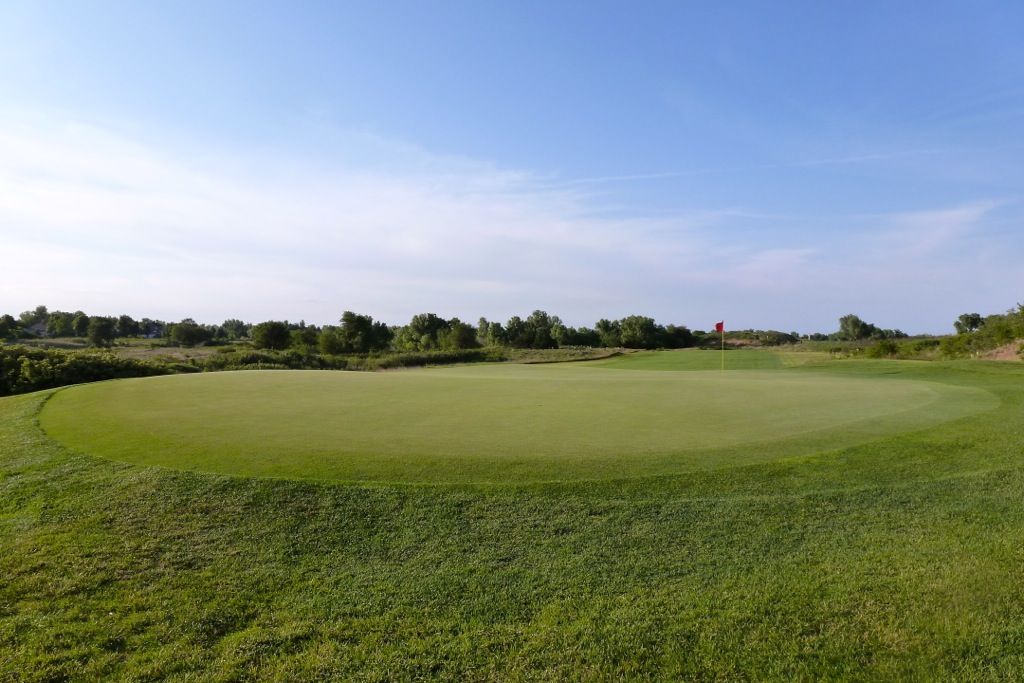
From behind:

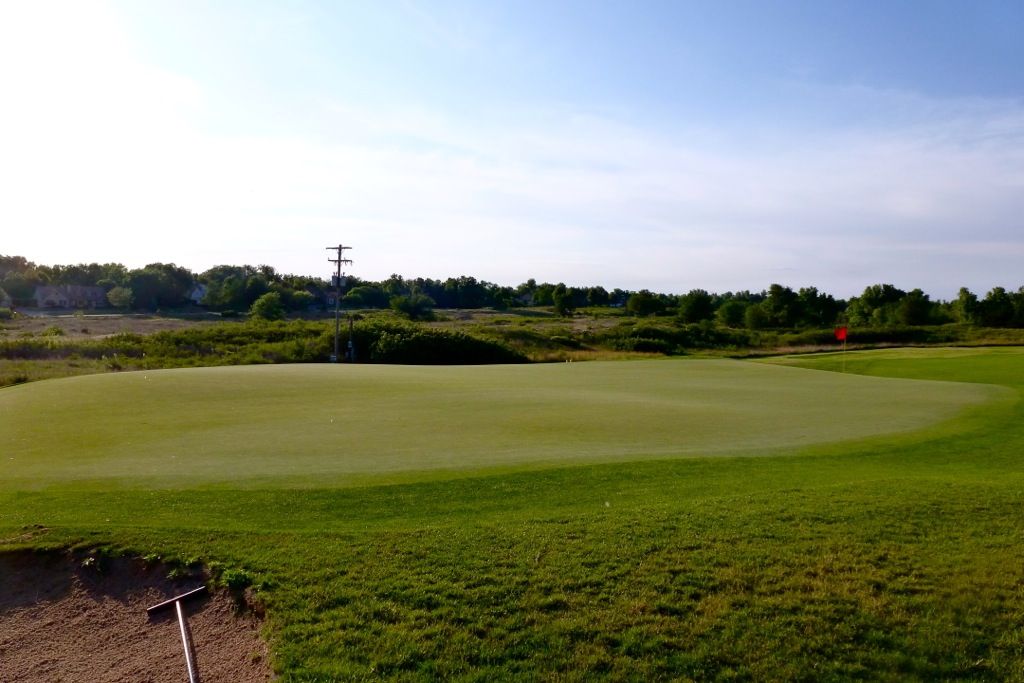
A couple of looks from near the 6th tee:
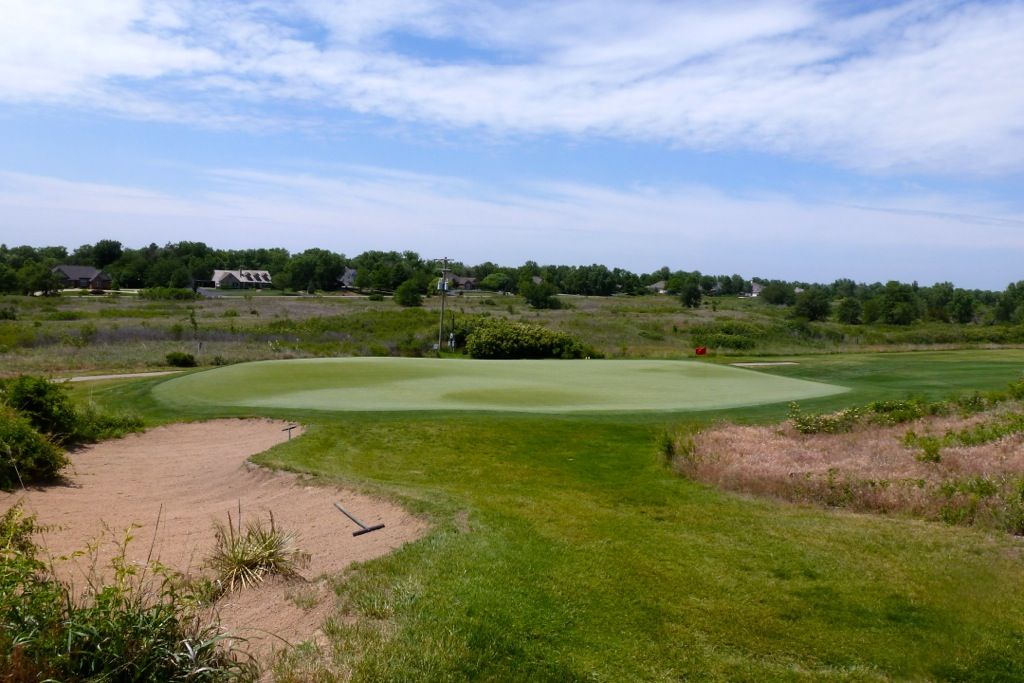

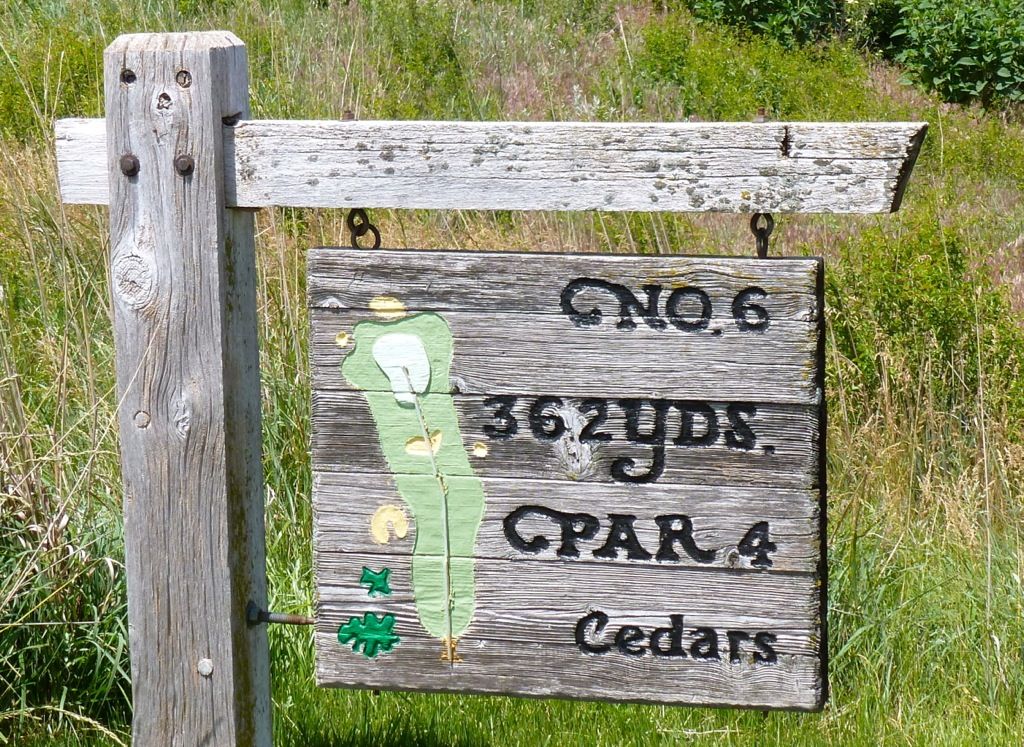
Note: Hole 6 now plays 378 yards from the gold tee markers
The 6th plays downhill to a diagonal fairway. When the prevailing wind is blowing from the right (I presume) it is very difficult to find the preferred right side of the fairway.
Back tee view:
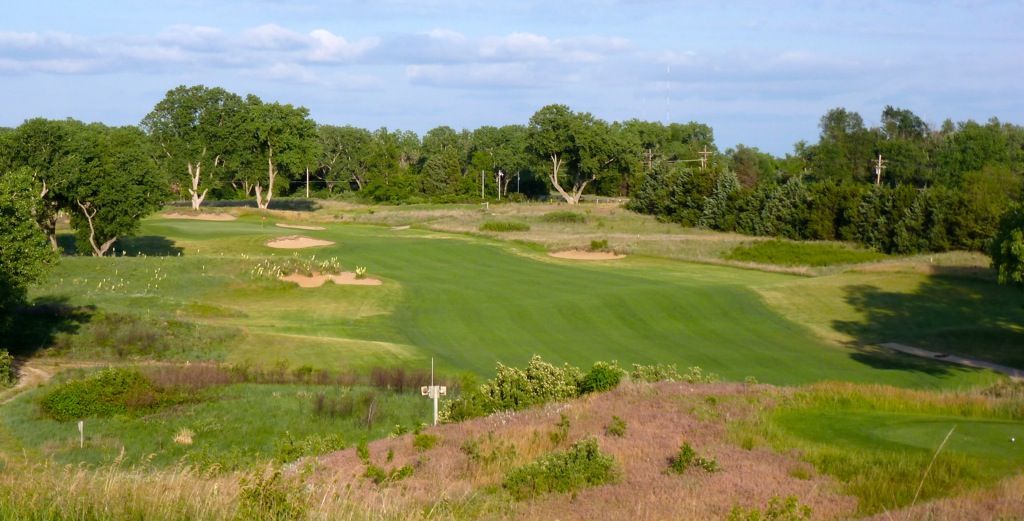
All tees but the back set play the hole more straightaway:

From the start of the fairway a large hump in the fairway is more easily seen. Most well-struck tee shots will easily clear this mound, but shorter tee balls (or tee shots played into the wind) will be semi-blind.
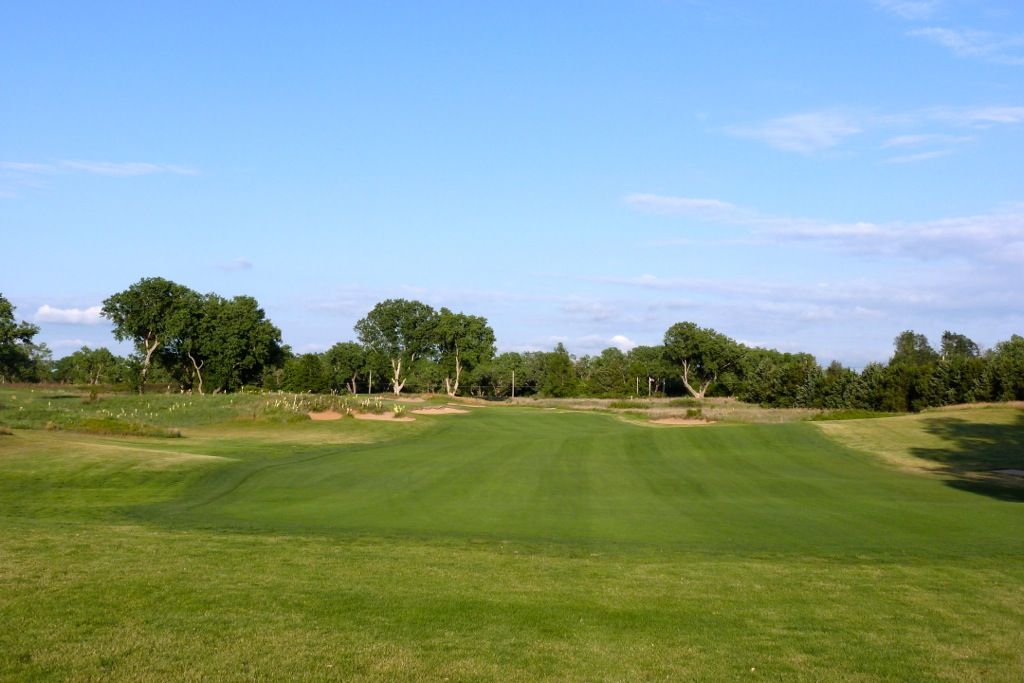
Much like the 1st, shorter tee shots that are played to the inside (left) portion of the dogleg will face a semi-blind approach over a dune.
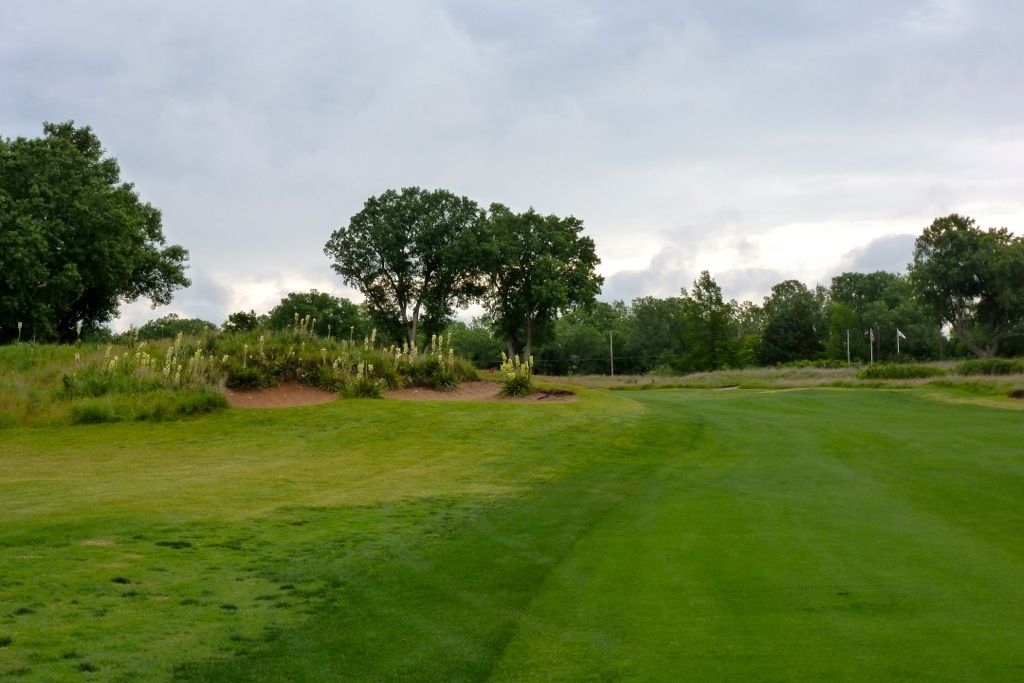
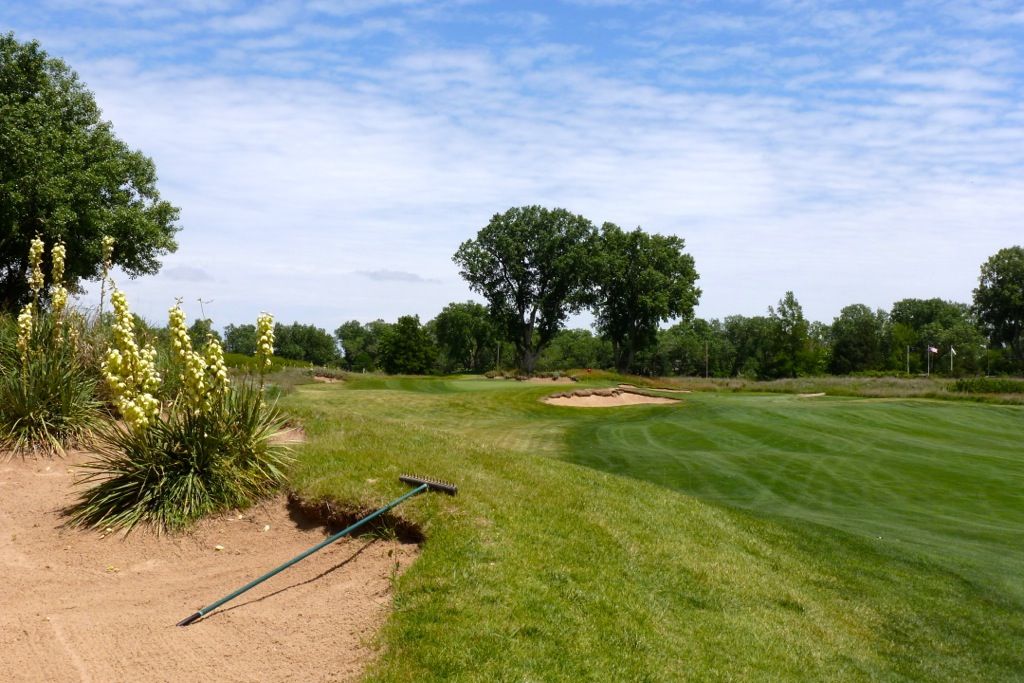
The single bunker guarding the front portion of the green must be carried from nearly all angles.
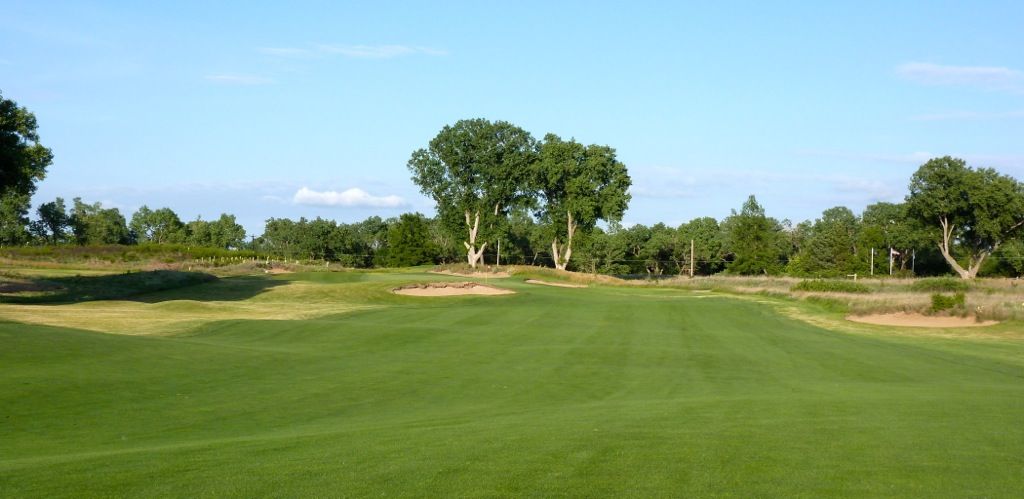
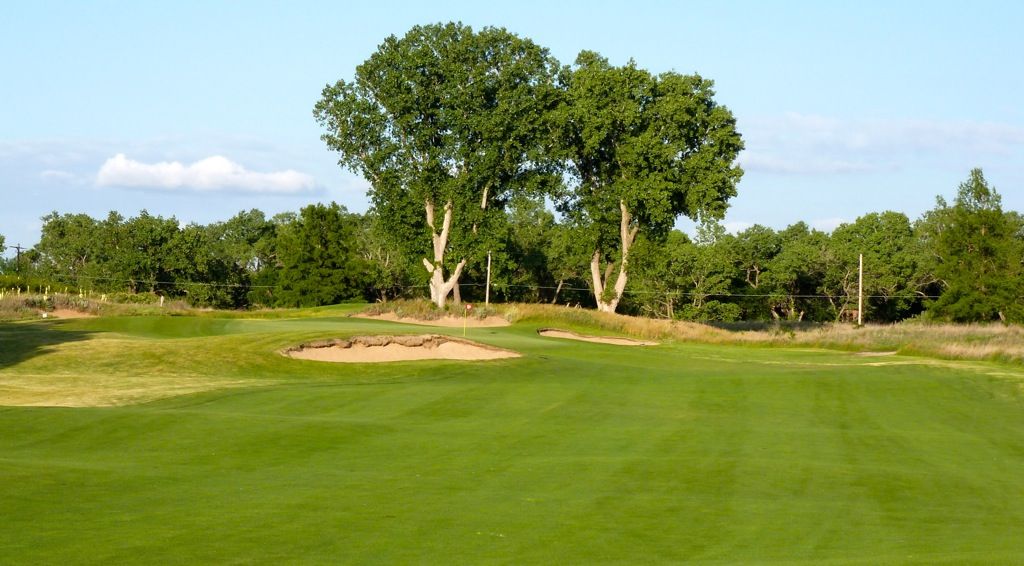
While the bunker appears to be green side from the fairway, there are several between the edge of the green and the bunker. A bit of visual deception and added penalty for a poorly struck approach.
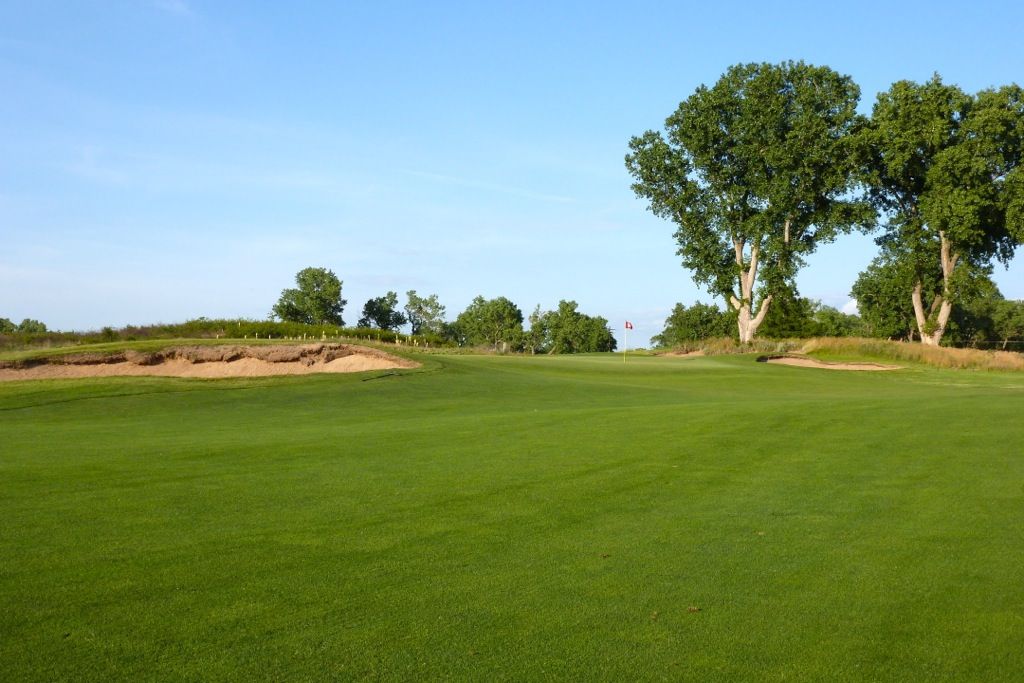
And many looks at the green:
From short-left:
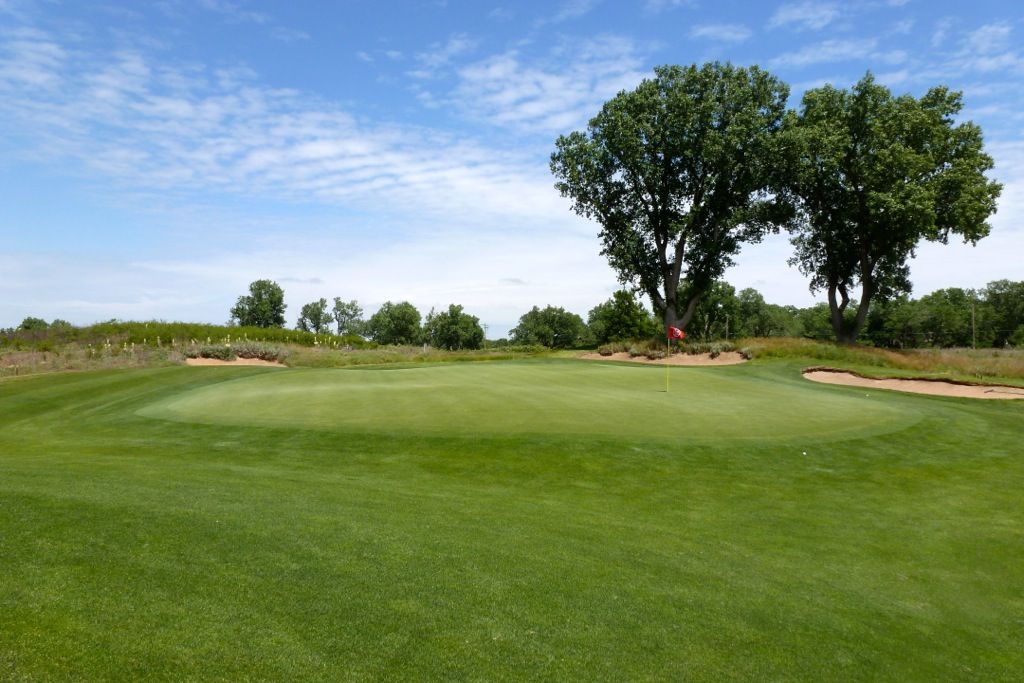
From short-right:
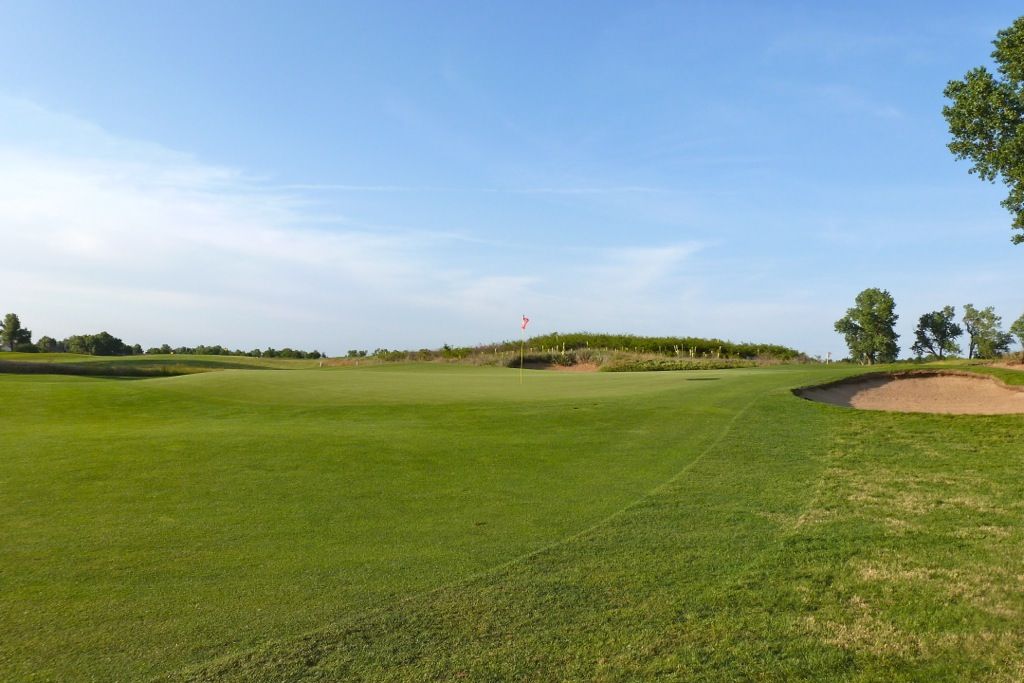
From right:
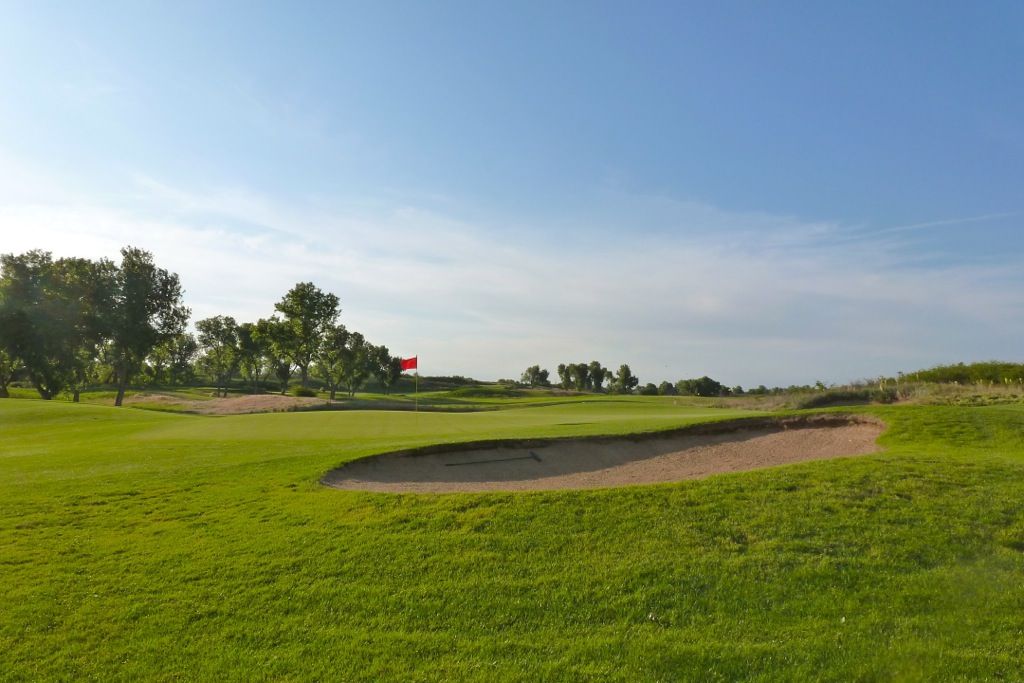
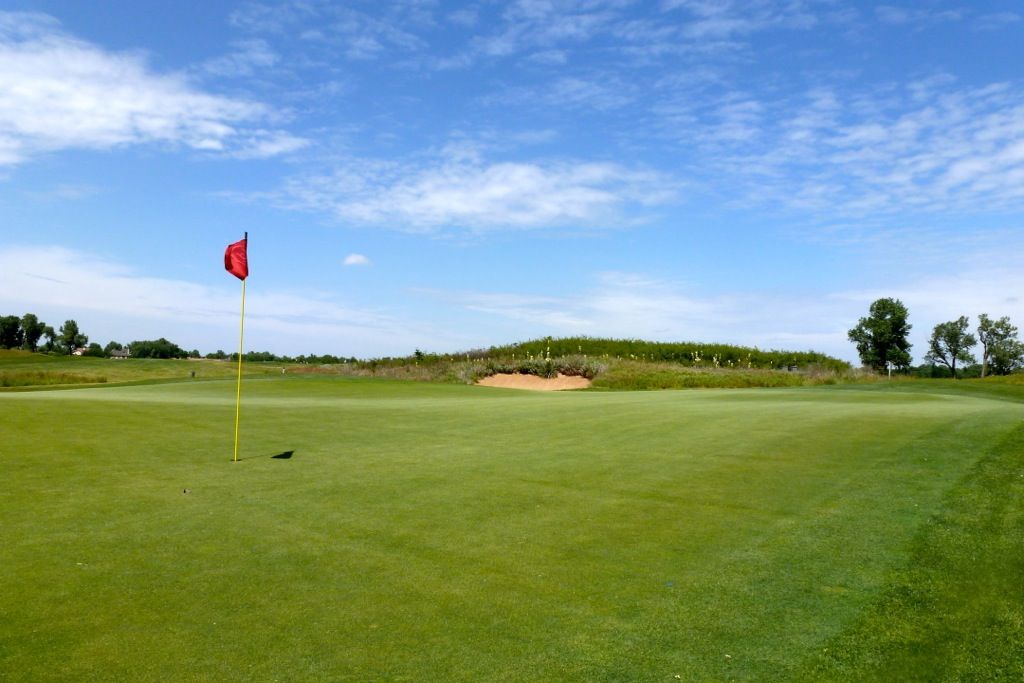
From back right:
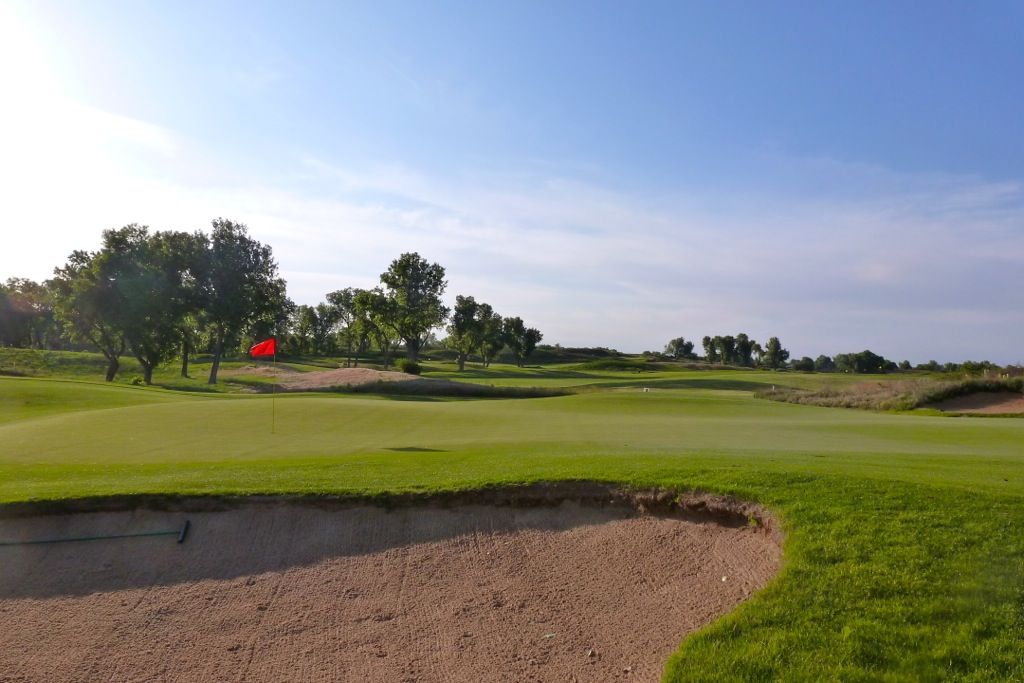
From behind:
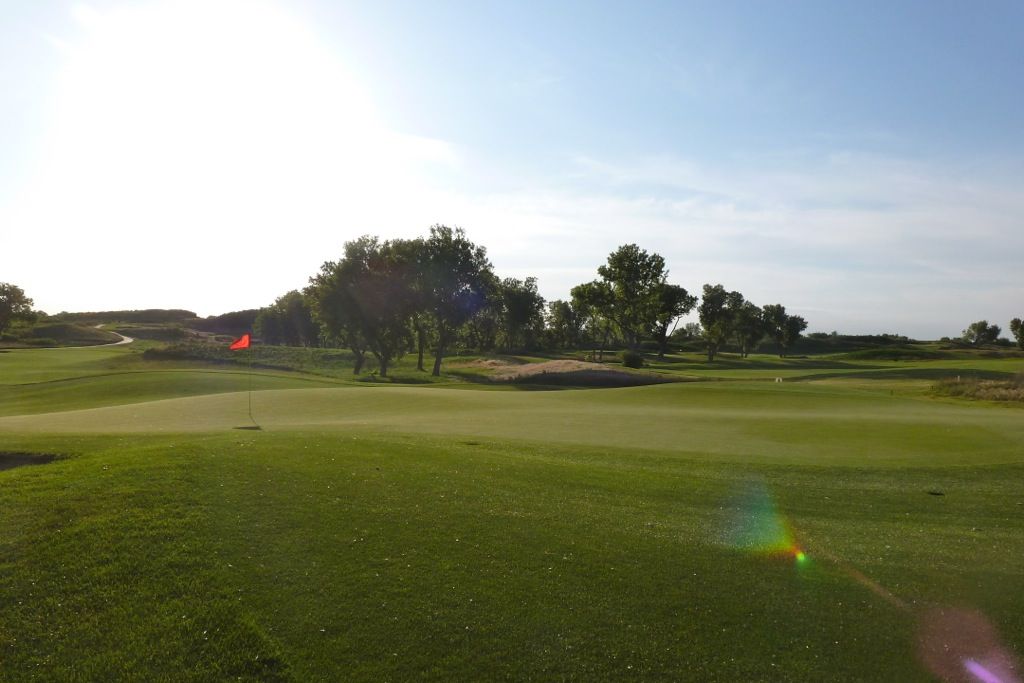
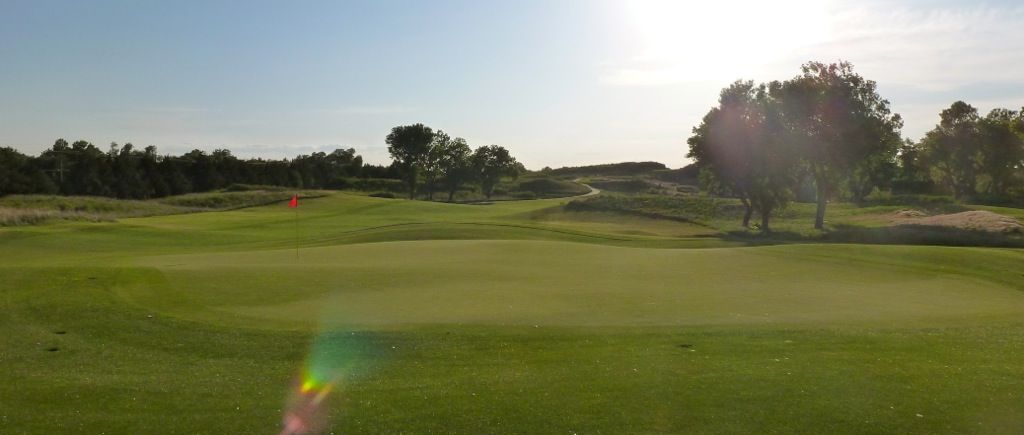
From back-left:
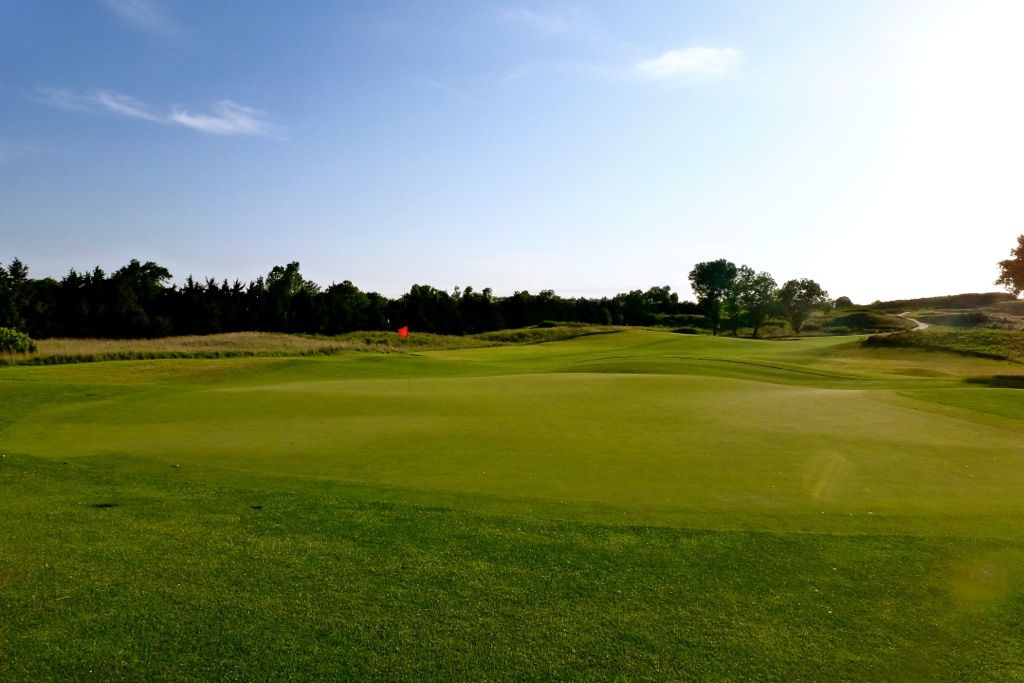
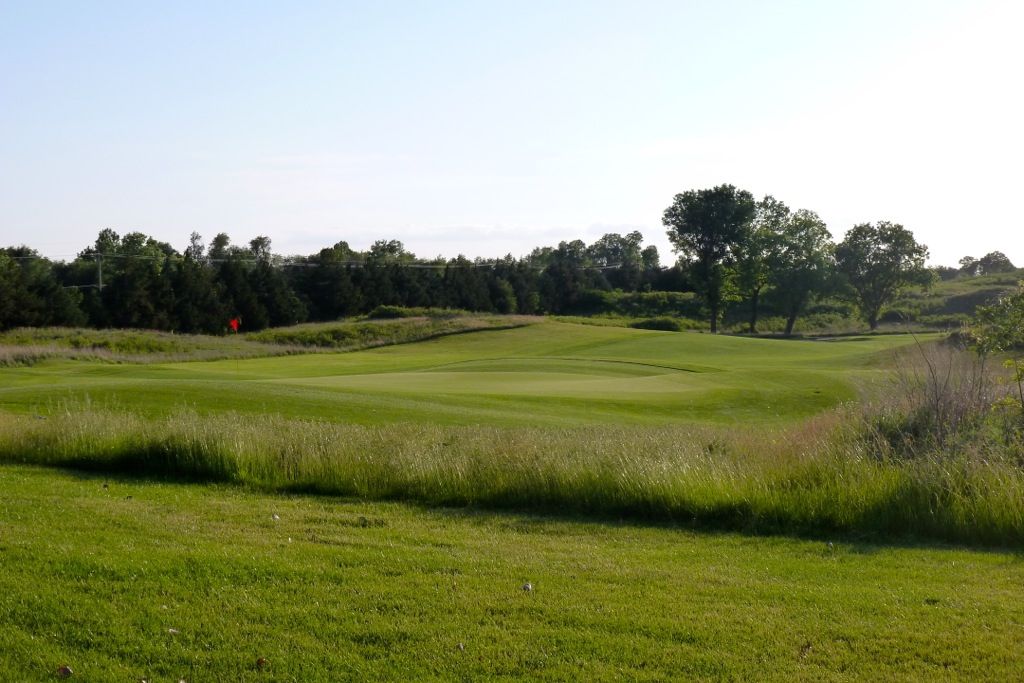
Hole 7: Par 5, 512 Yards -- 'South Wind'
Though this hole is designed to play with a 'south wind,' the day I played it we had a north wind and it was a brute. The first fairway bunker, at 215 yards, was just barely reachable, and the cleverly placed second fairway bunker at 270 yards was not in play. I can only imagine how different the hole would play with a south wind, and I suspect the speed-slot at 280 yards becomes easily reachable making the hole play as nothing more than a mid-length par-4.
Tee View:
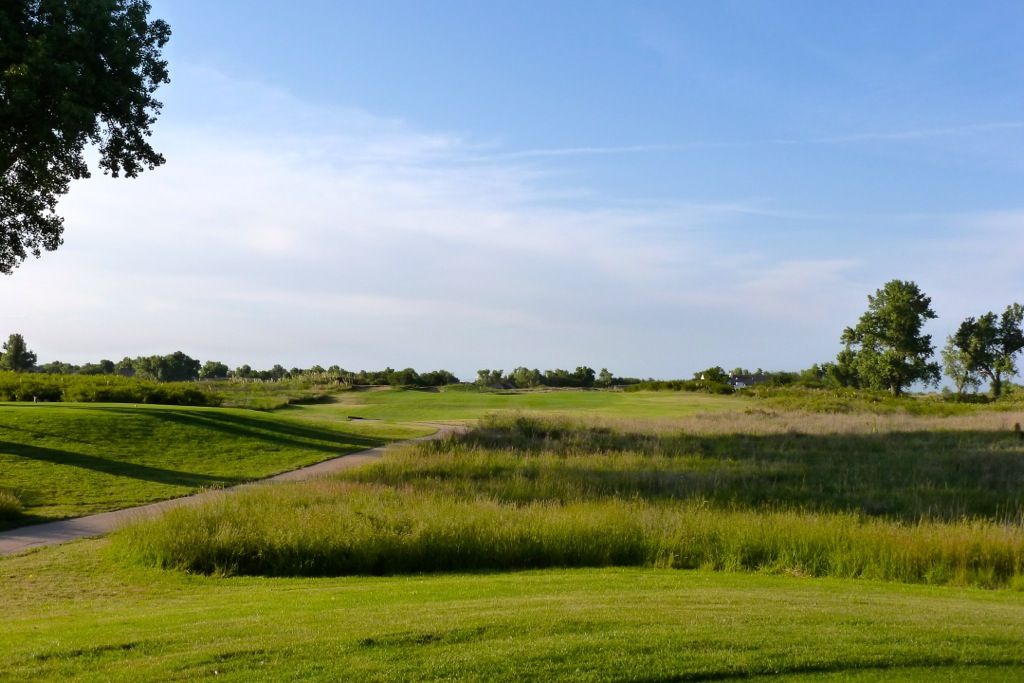
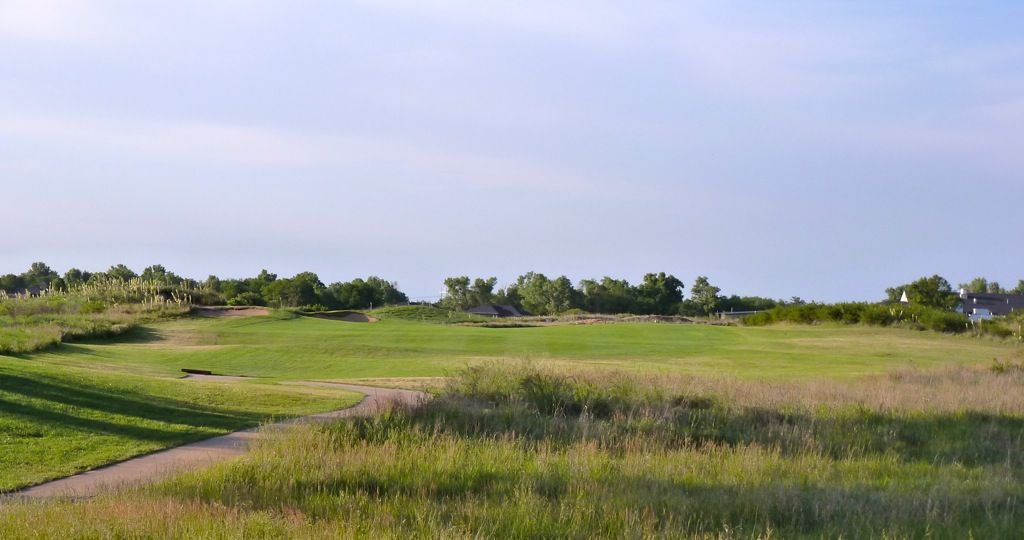
The bunkering on the outside of the dogleg guards the ideal line into the green:
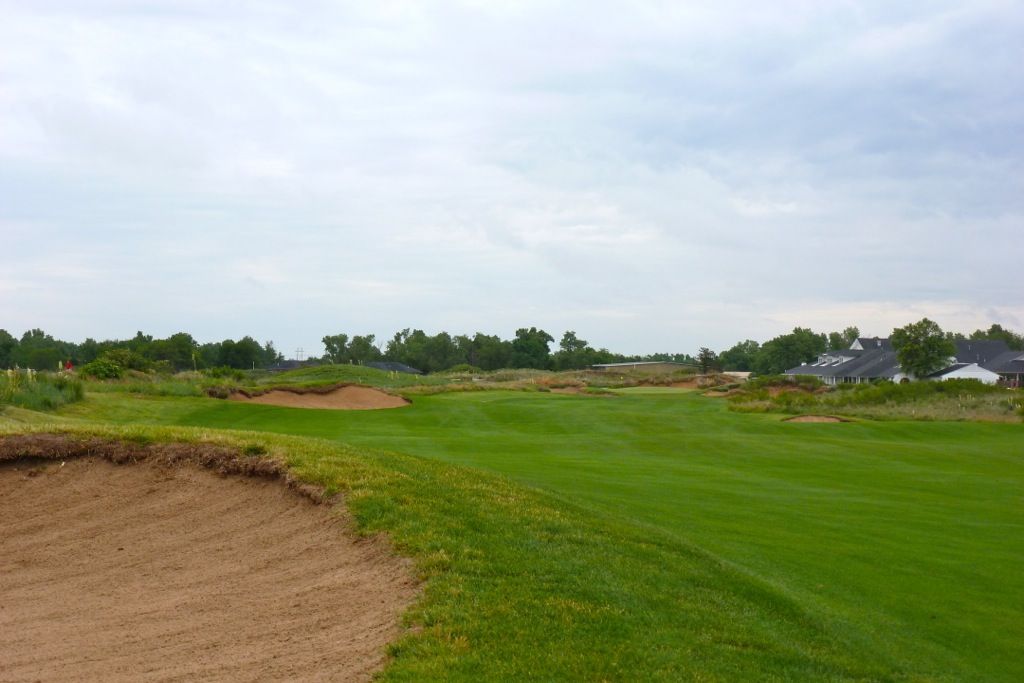
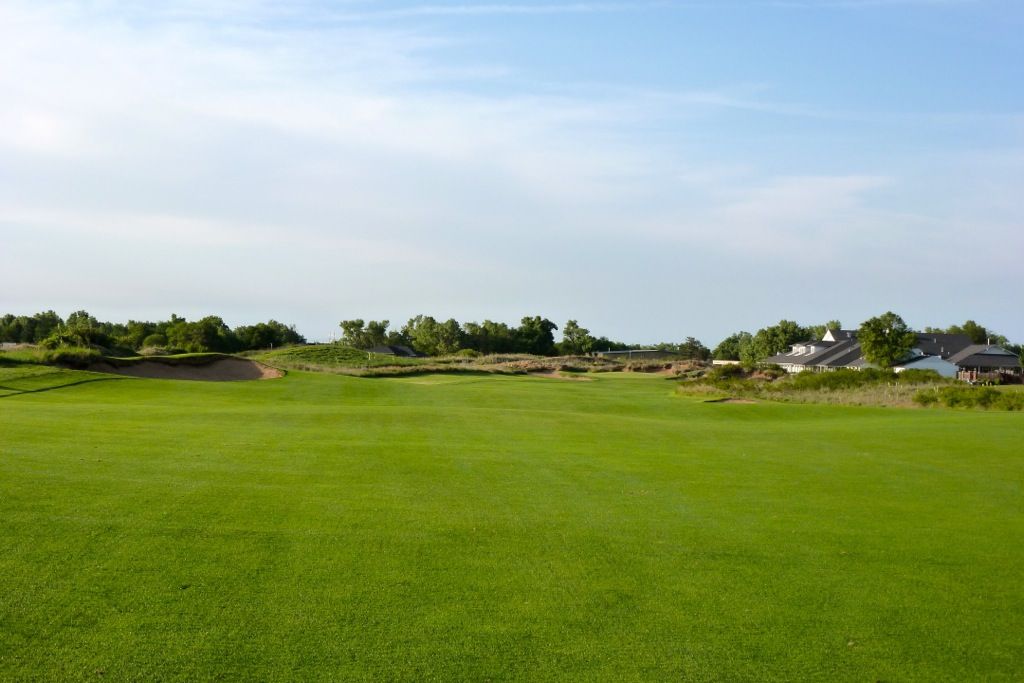
280 Yards from the tee the fairway dips, rewarding those golfers that can hit it long and straight with a few extra yards.
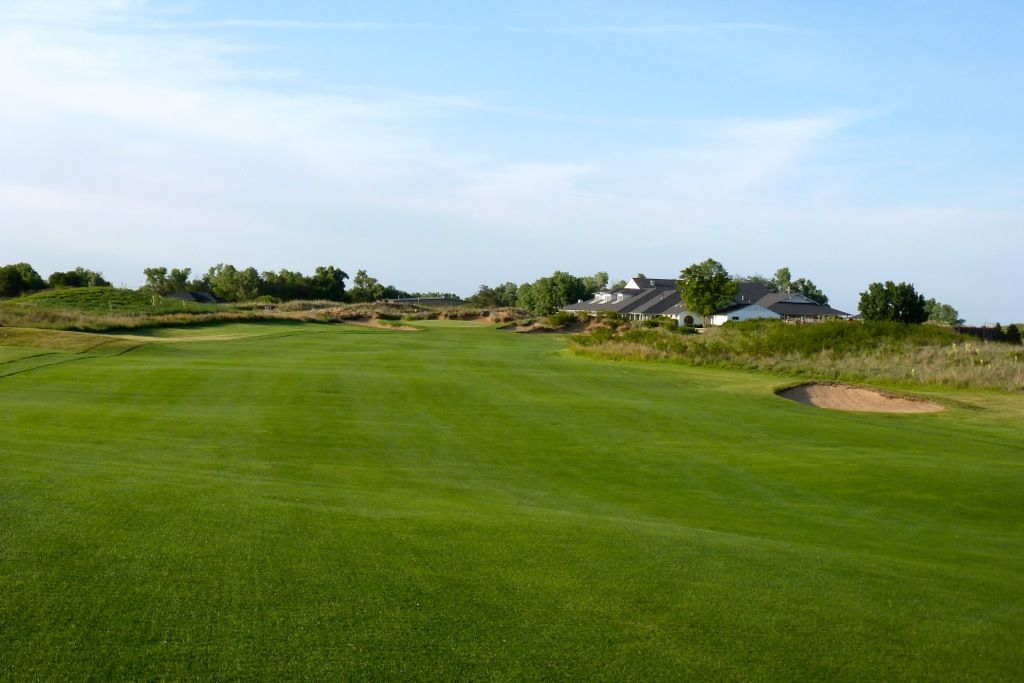
The approach to the 7th is an intimidating one. Though the green is open in front, bunkers and dunes surround the green on all sides, making the target appears smaller than it is.
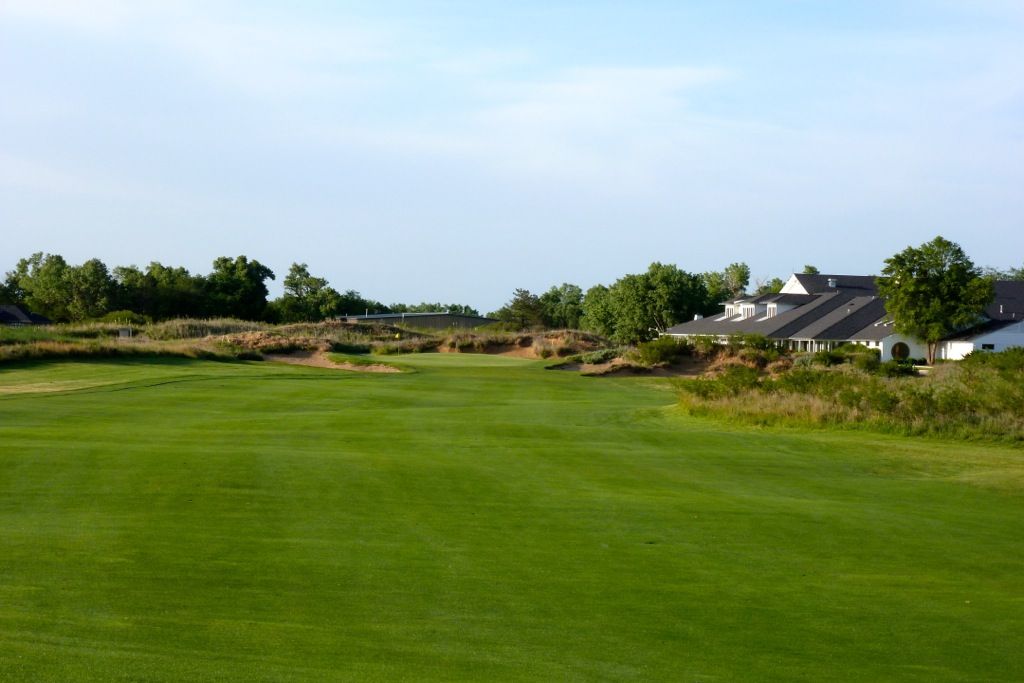
As the golfer nears the green he can see that while the bunkers do surround the green, there is some fairway grass long, left and right. I'm not sure it's easier to recover from the fairway grass, though.
It should also be noted that the rear-bunkerin is a recent C&C addition. Once again, it has been integrated flawlessly.
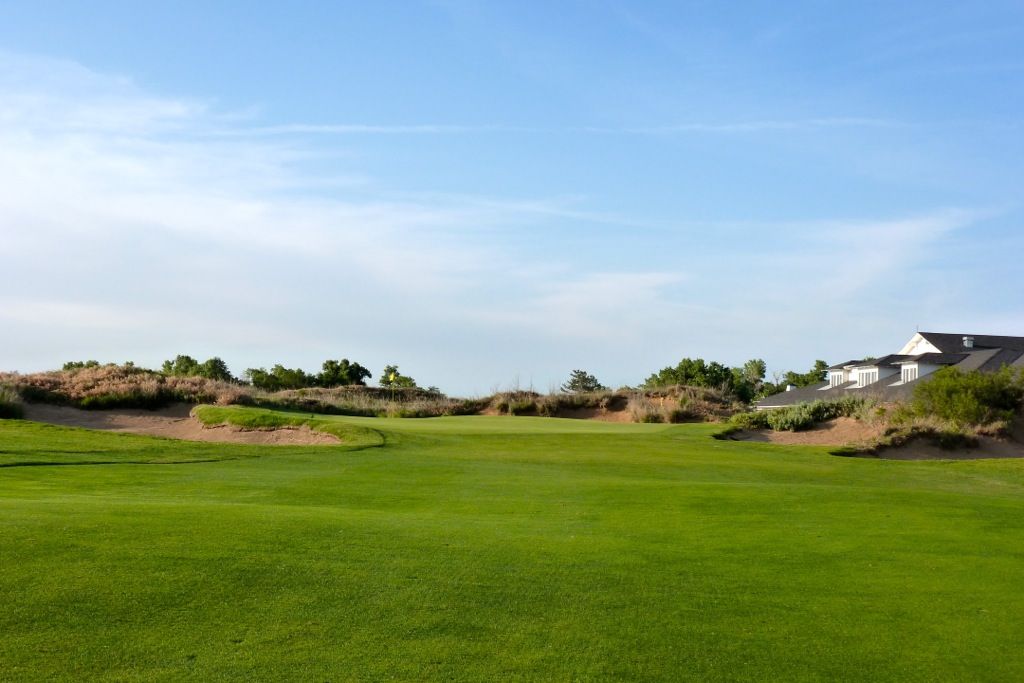
Green site from left shortly after sunrise:
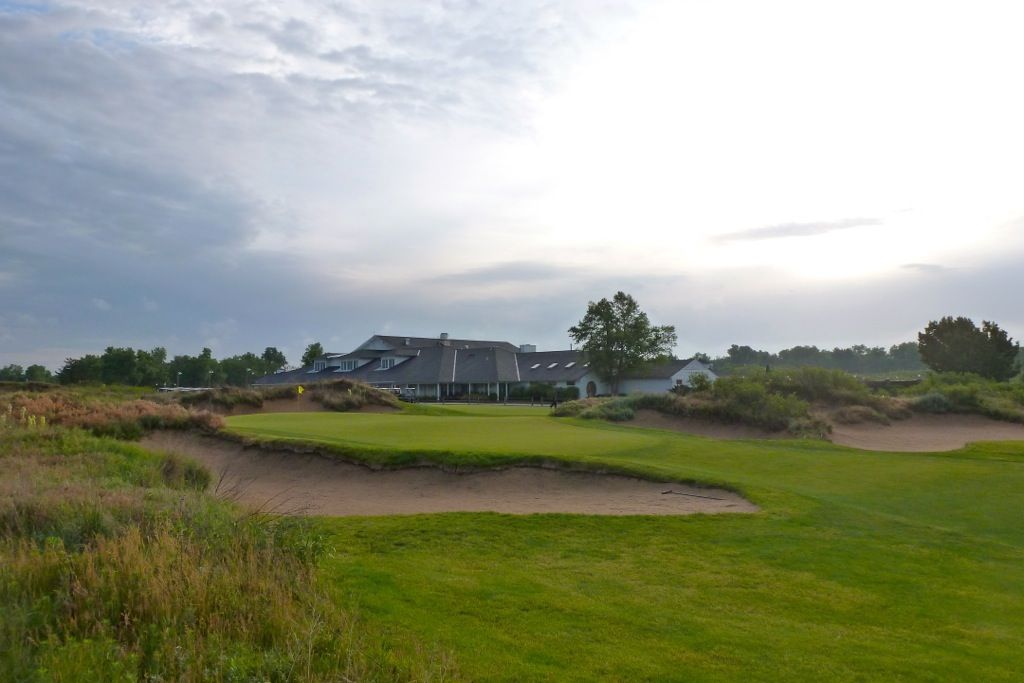
The 7th green has as much perimeter slope as any green at Prairie Dunes (and that's saying a lot). Shots that land near the edges of the green will not stay on the putting surface. Several looks at the green, including a couple of black and white photos to show off the contouring.
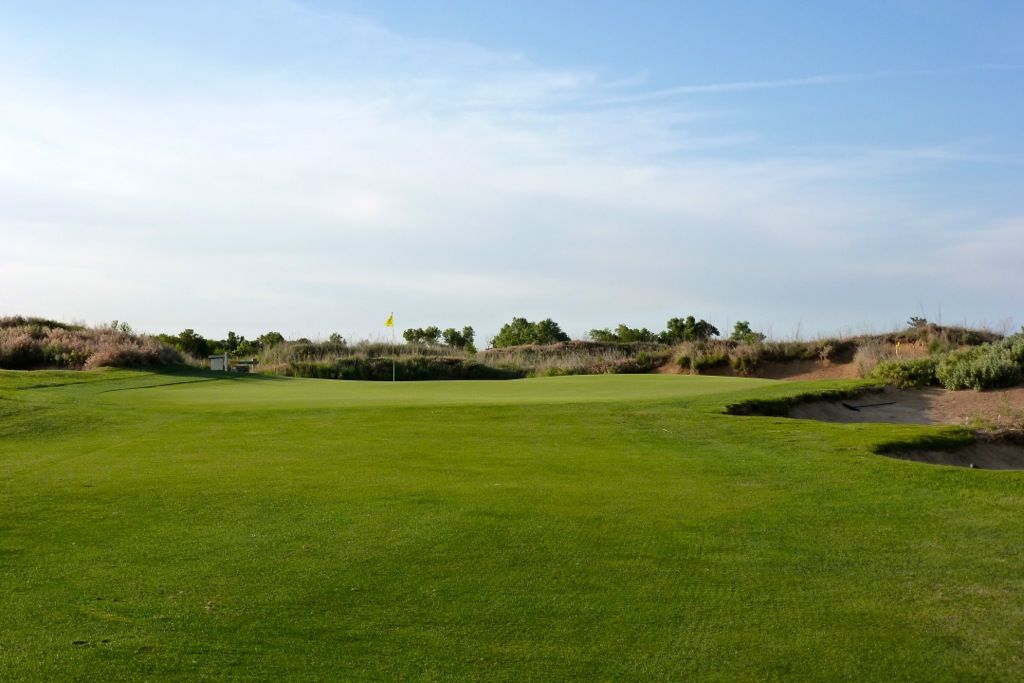
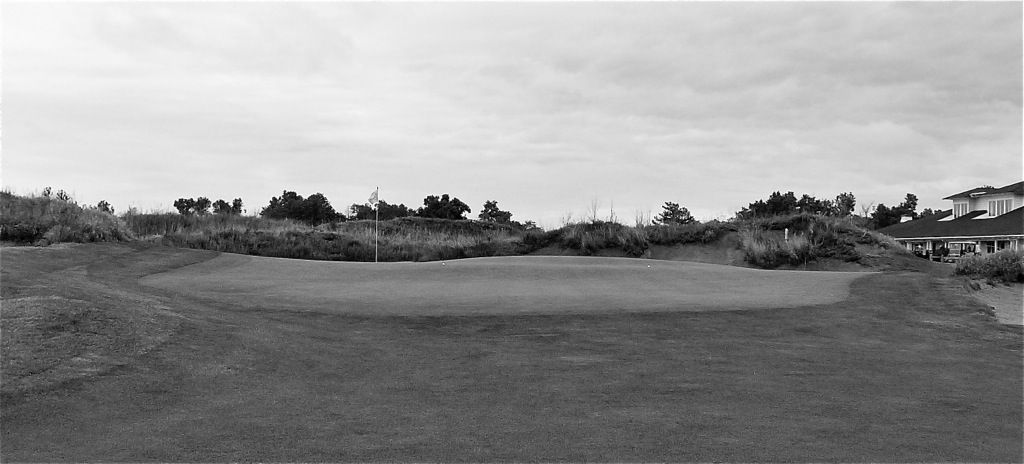

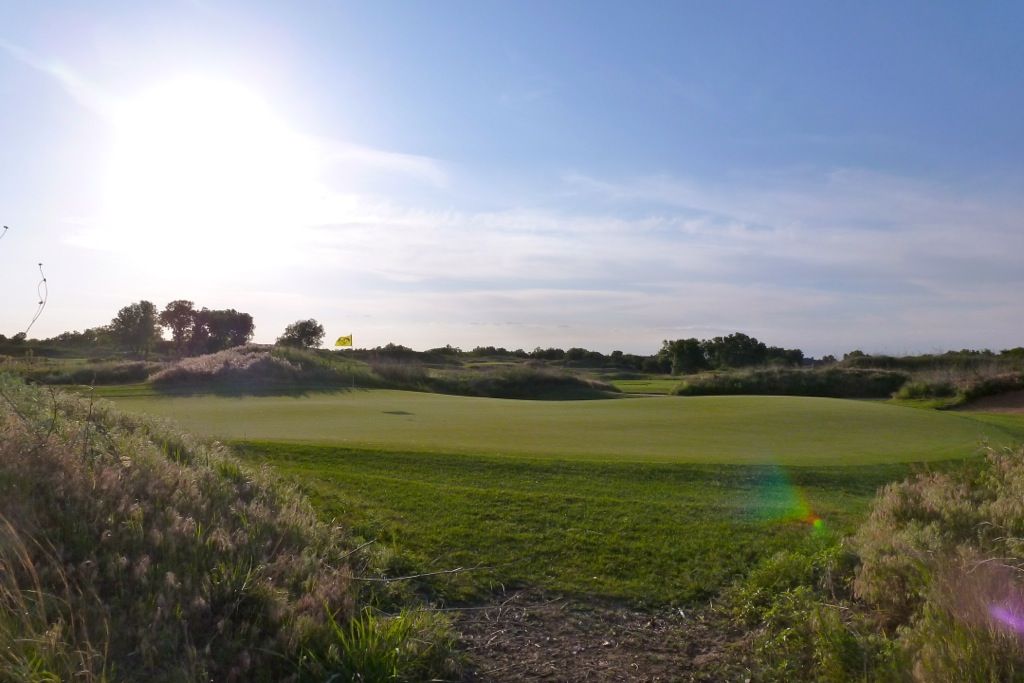
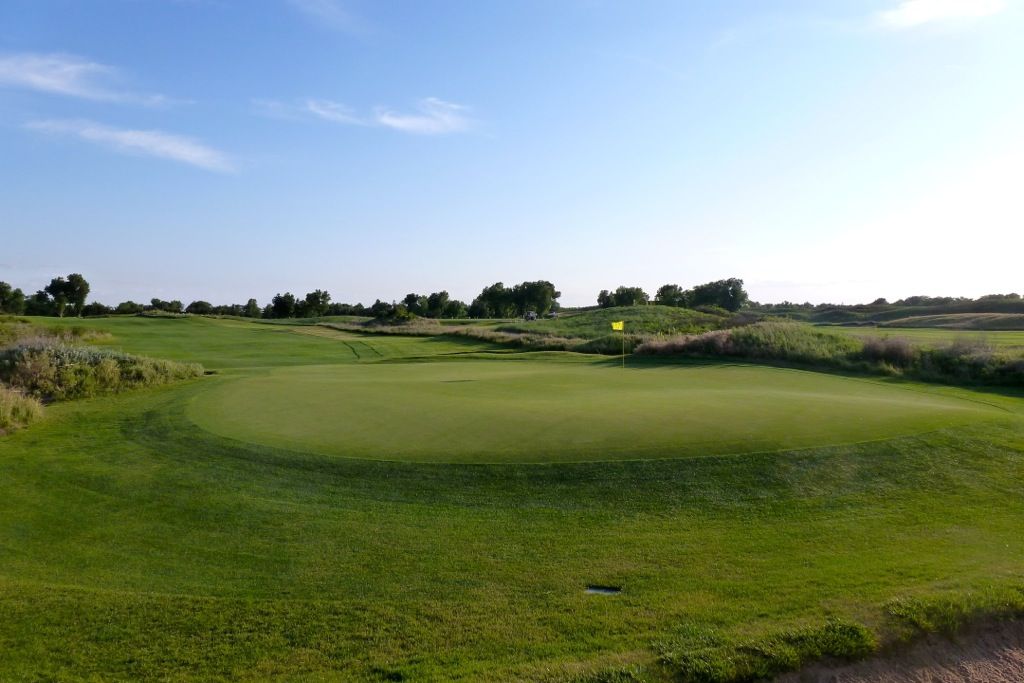
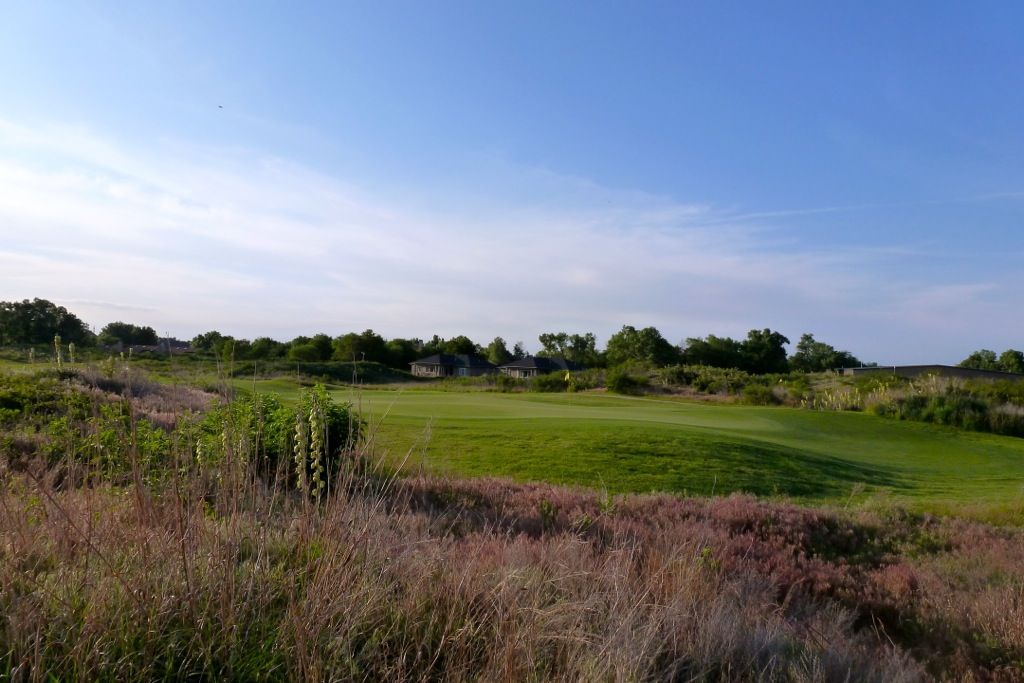

Note: Gold Tee plays 468 yards with the addition of new teeing grounds
The 8th tee shot is not a difficult when the wind is calm, bit with the wind blowing hard from the left, finding the fairway is no easy task.
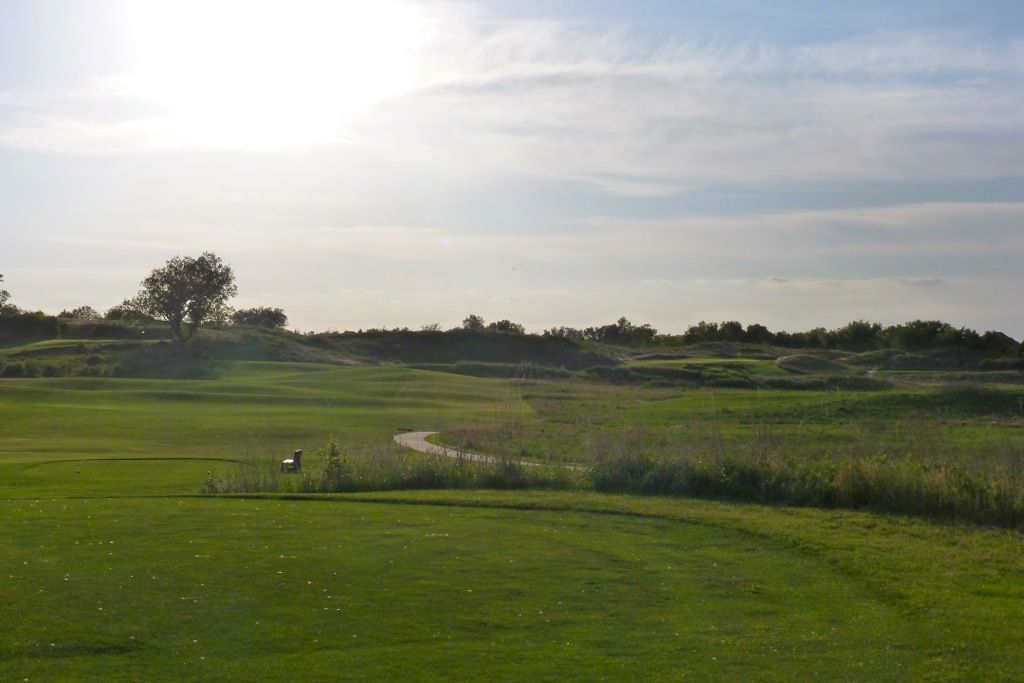
The 8th fairway is among the most undulating I have ever seen. Longer hitters, depending on wind direction, can play over this wild terrain, but many (like me) will be forced to play their second shot from an uneven lie.
A few looks at the undulating 8th fairway:
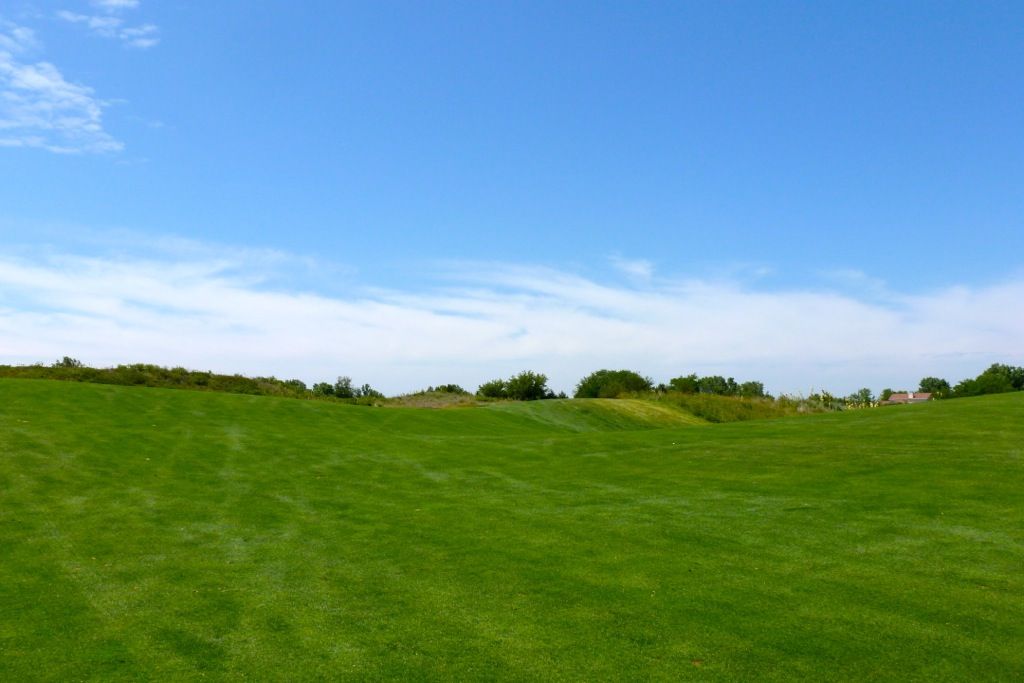
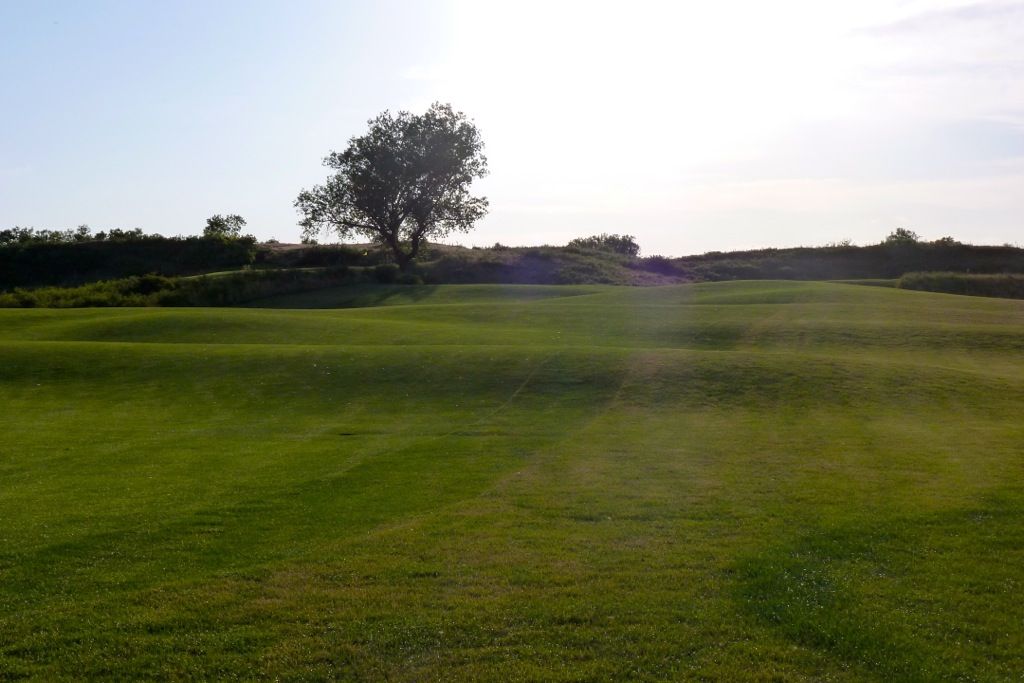

Shots on the left side of the fairway leave a very difficult and blind approach. Shots down the right side of the fairway leave a very difficult and semi-blind approach. The flag is in view, but the terrain surrounding the green and the putting surface are completely blind. There is plenty of room to miss left (though this is no easy recovery) but this fact is not obvious from the fairway.
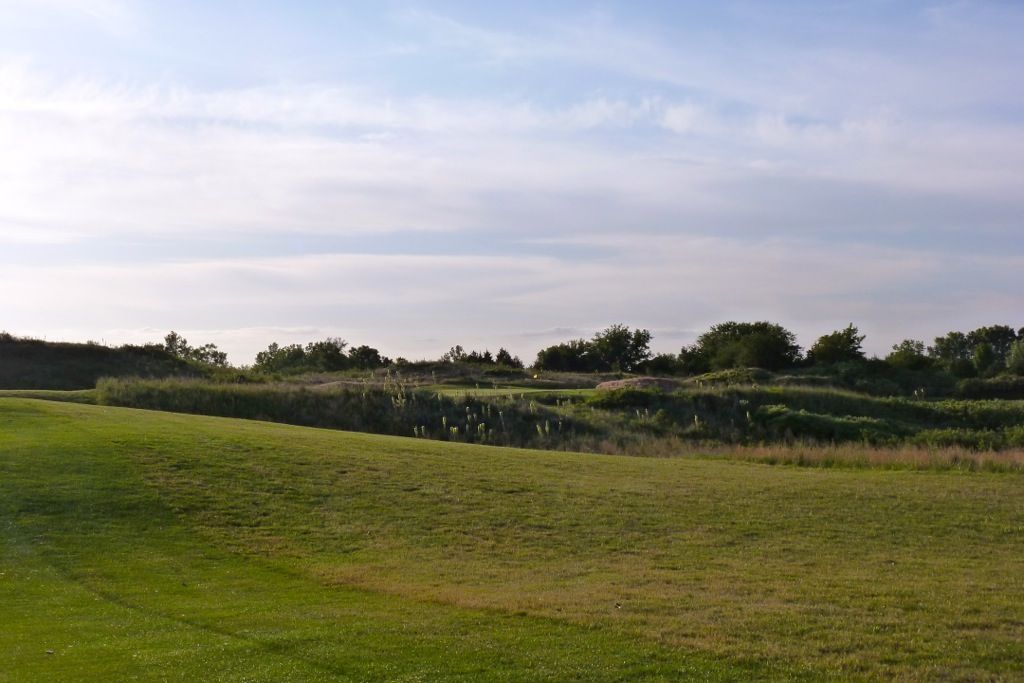

Longer tee shots may crest this hill 300 yards from the tee. If successful, the approach is far more appealing:
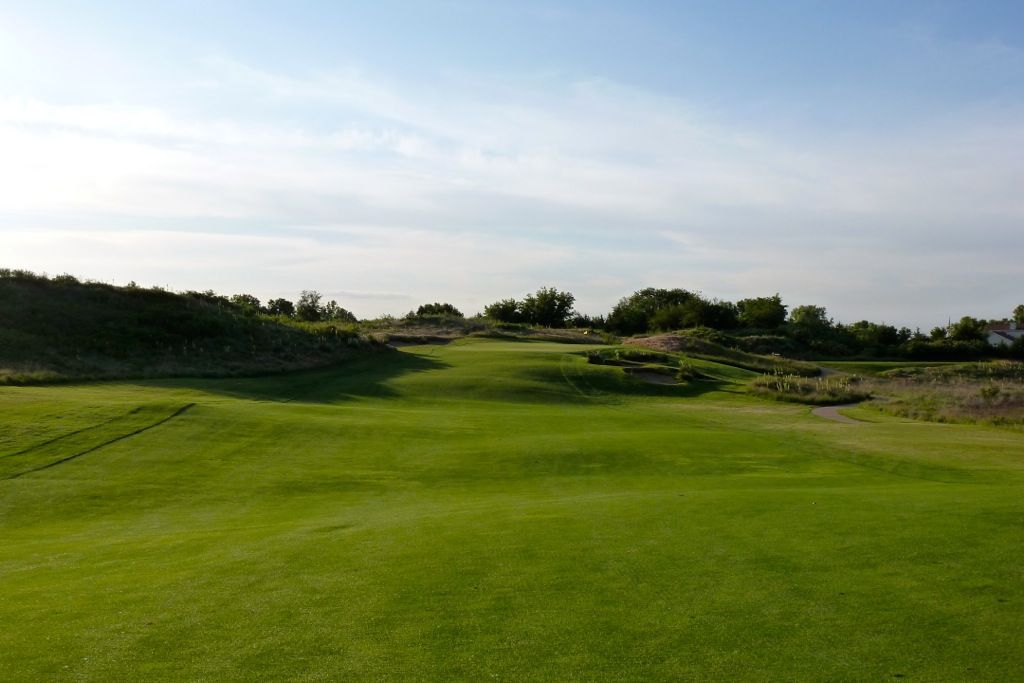

A look at the green site from the 4th green:
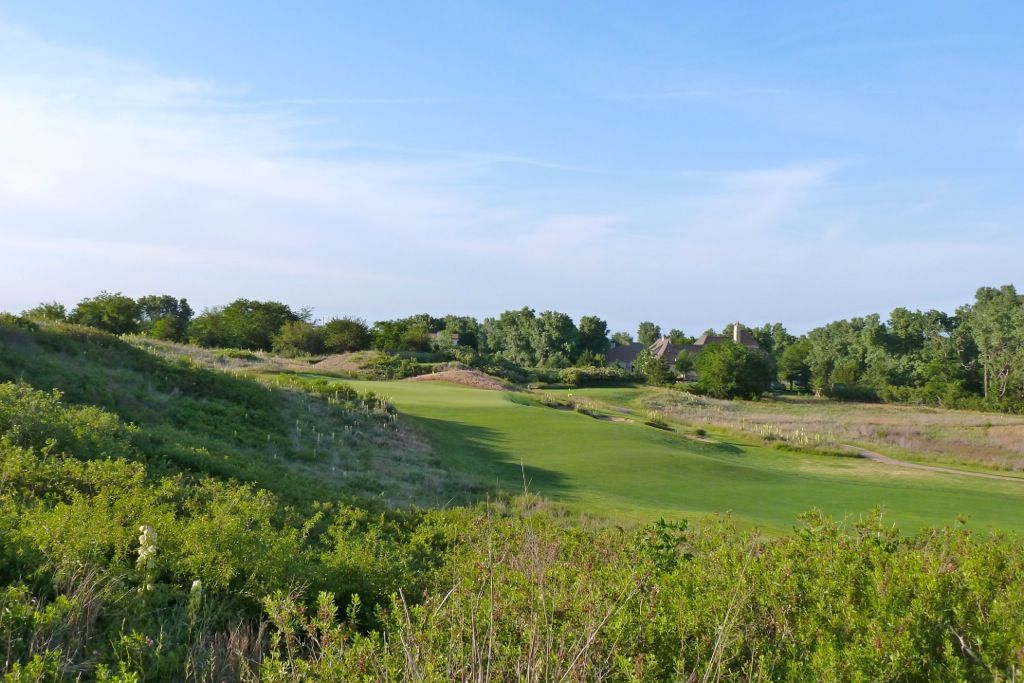
Once again, Maxwell intimidates the golfer into missing in the wrong place. A false-front short and a nest of bunkers (complete with Yuccas) guard the right side of the green. But, the green which slopes severely from back-left to front-right, must not be missed left or long -- from there finding the putting surface is near impossible. While intimidating, recoveries from the right are certainly the simpler task.
Short of green:
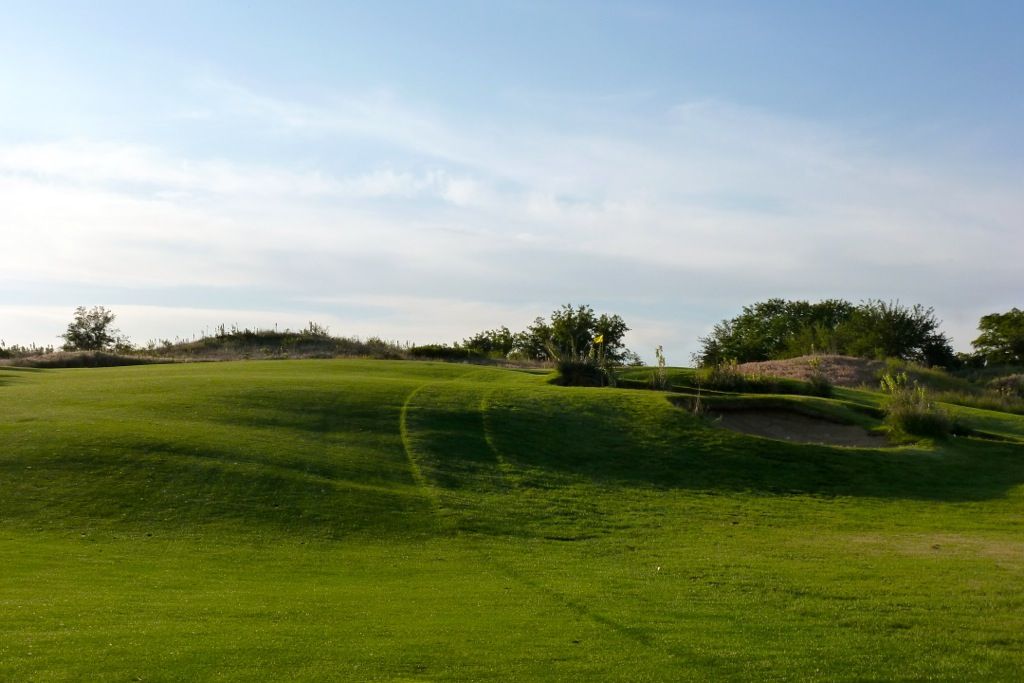
Right of green:
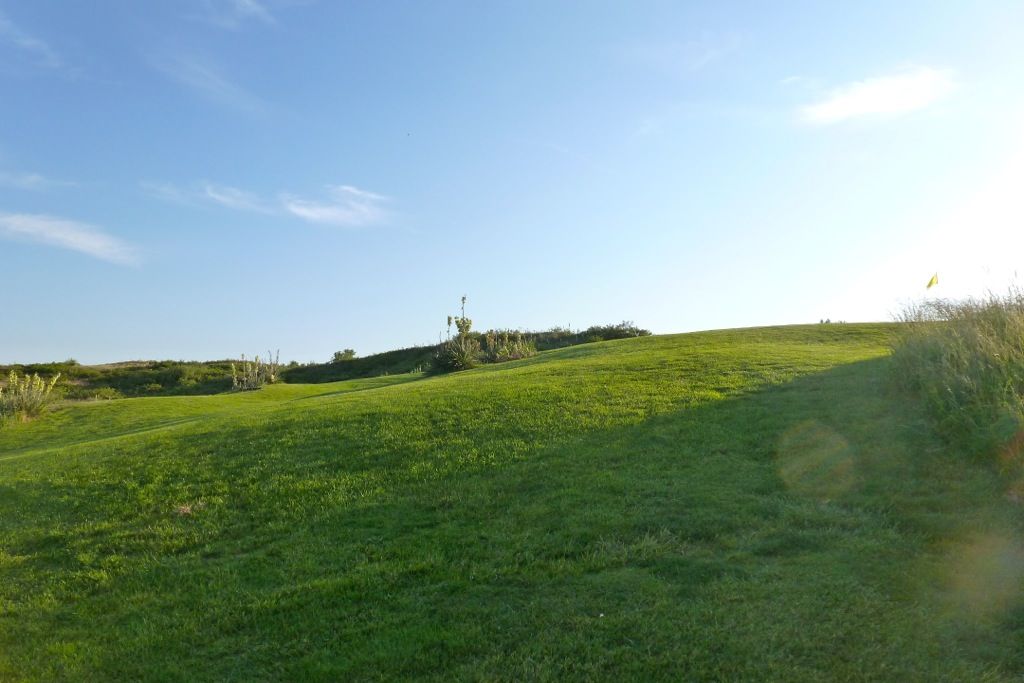
Green site from 9th fairway:
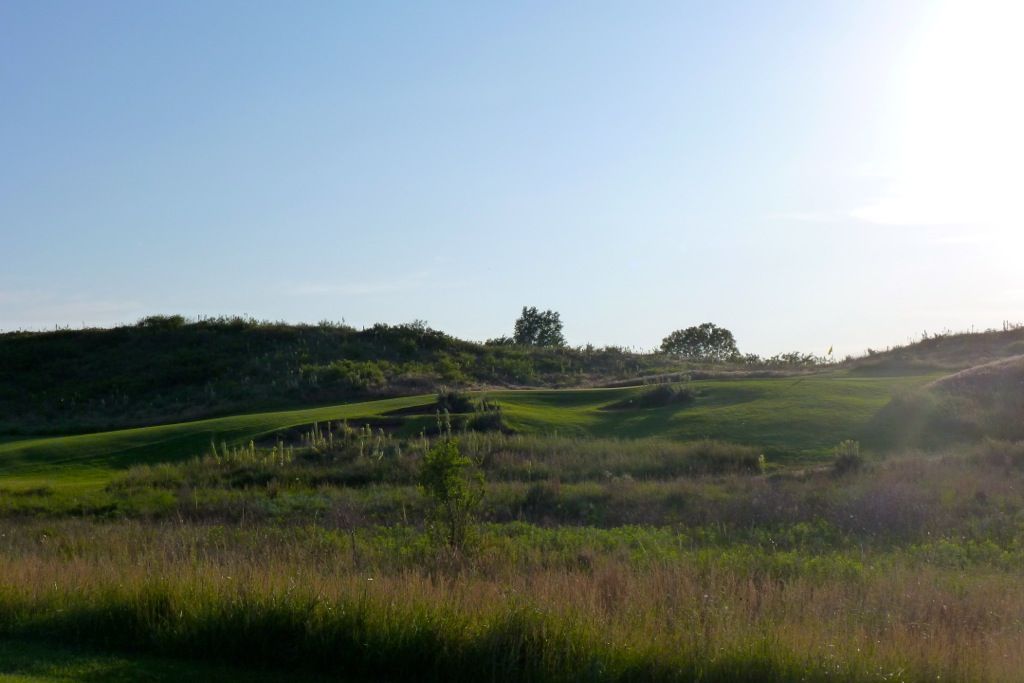
From Ran's Review of Prairie Dunes: "Not content with just the difficult tee to green aspect of the eighth, Perry Maxwell built what is possibly the course’s most severe green with four feet (!) of elevation change from back to front and a ridge through its back middle....Of all his work, no single green is any more impressive than the one here.
Several looks at the green:
Front-right:
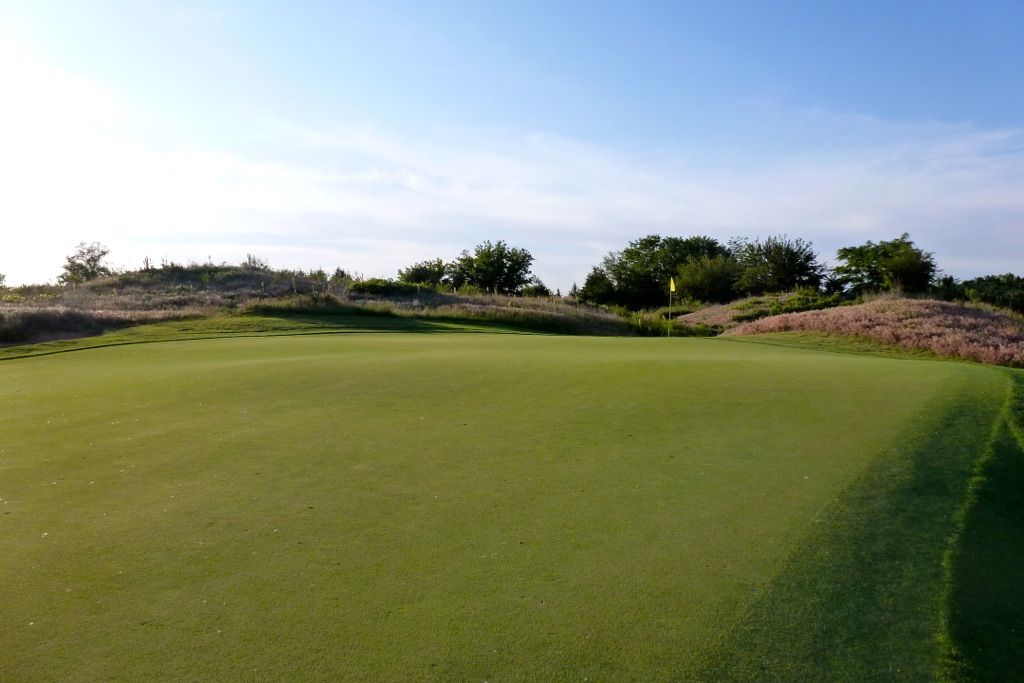
Back-right:

Back-left:
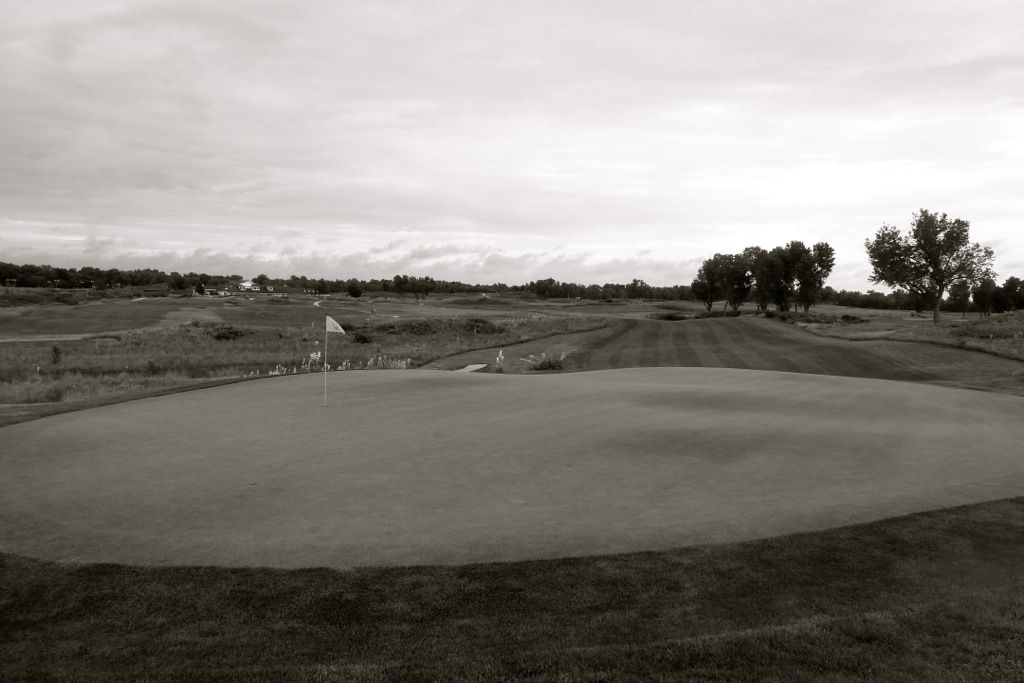

Behind:
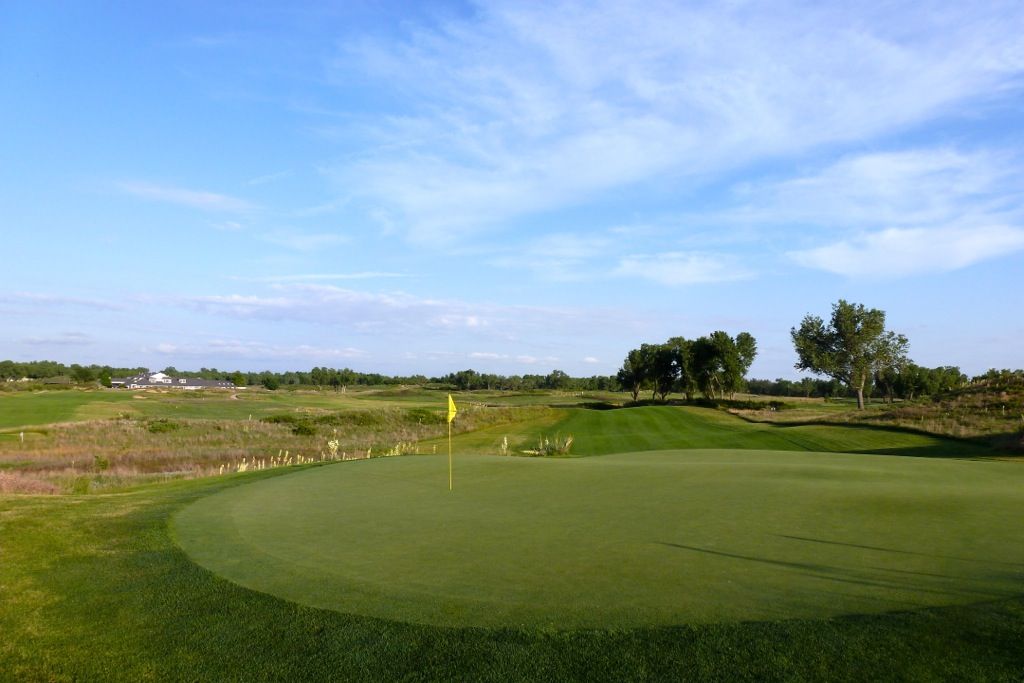
Hole 9: Par 4, 452 Yards
Played from an elevated tee and with a cross-wind, the wide 9th fairway can be difficult to hit. The bunker on the left side of the fairway protects the ideal line, though at only 225 yards to carry from the back tees, it should not be in play unless the wind is into.
Back Tee View:
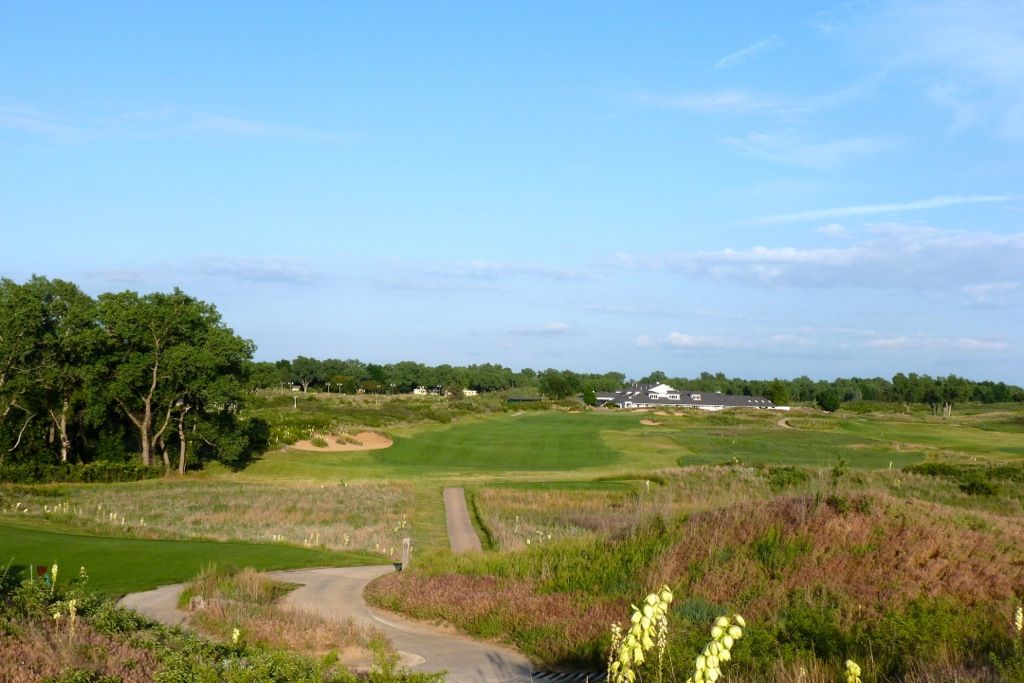
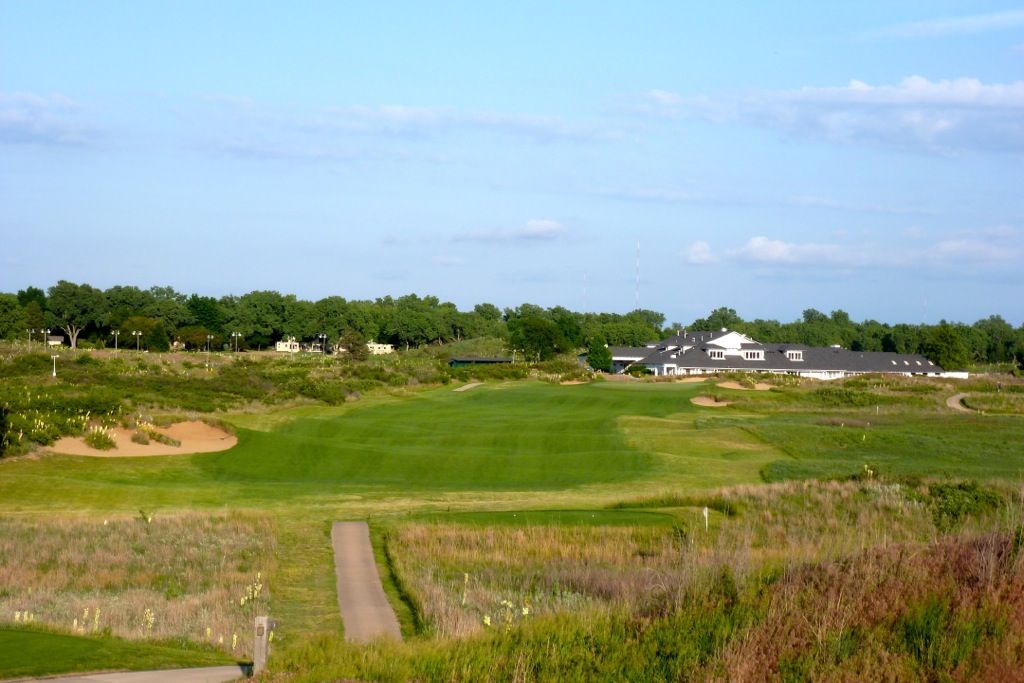
Blue Tee View:
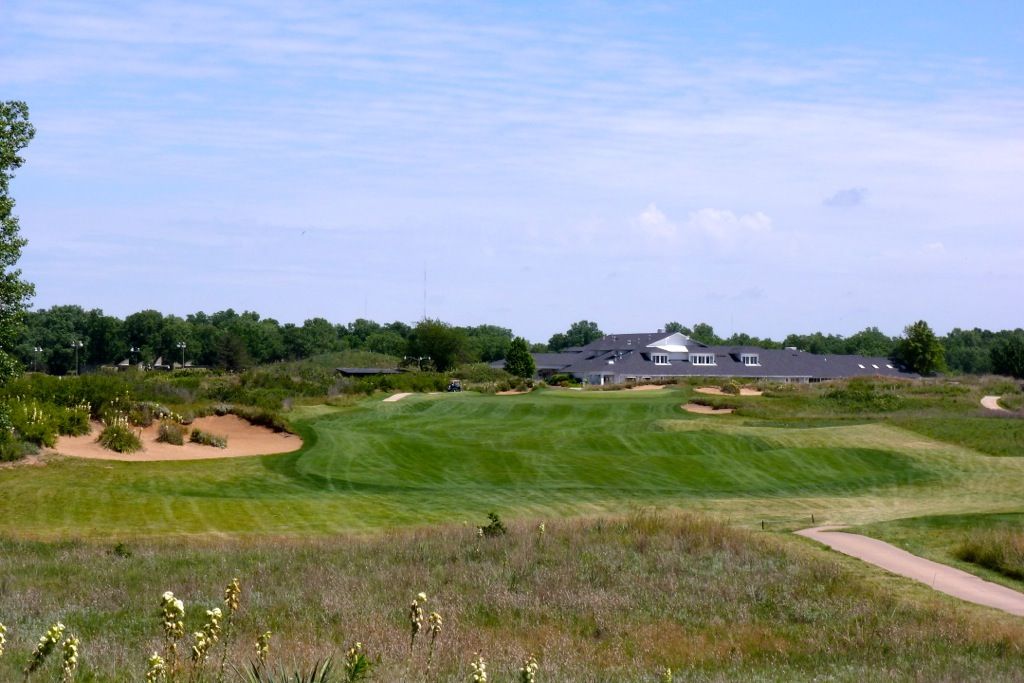
The fairway at the 9th, like the fairway at the 8th, is extremely rolling.


The approach is not intimidating, but it is subtly very difficult. Bunkering surrounds the 9th green, which is among the most undulating on a course full of undulating greens.
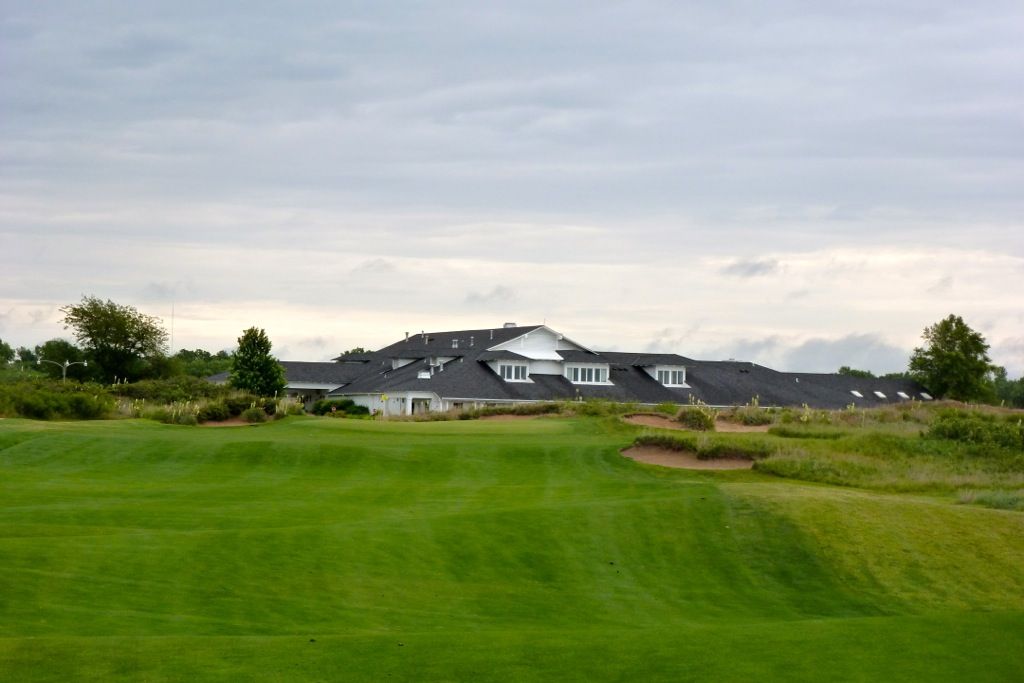

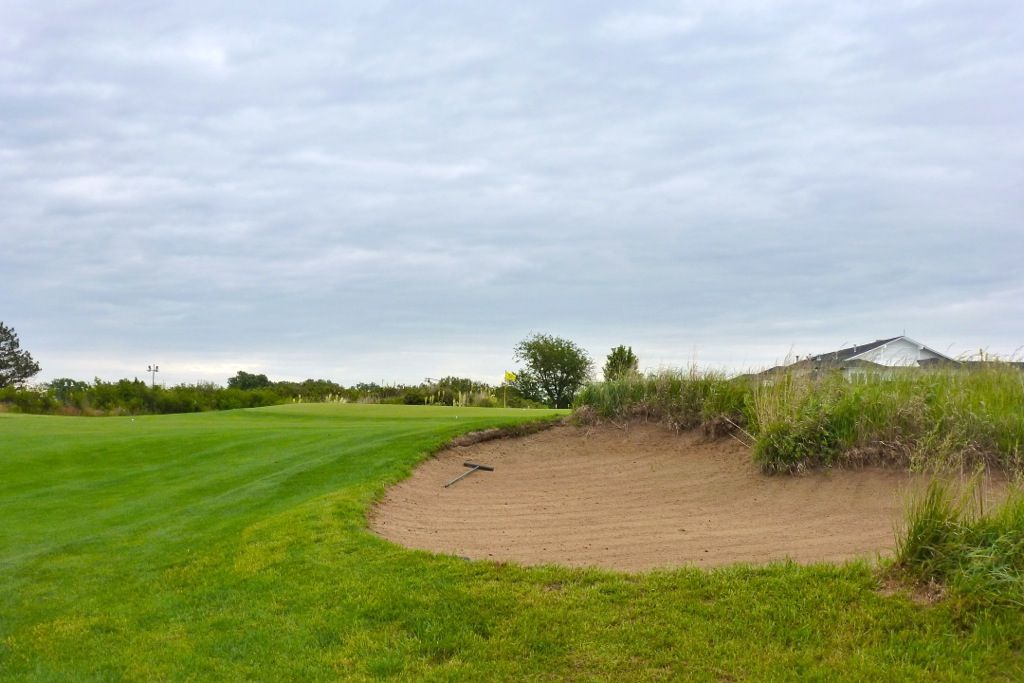
The very large false-front at the 9th green. Shots landing on the first 15 feet of the green will suffer the same fate as the three shots pictured.
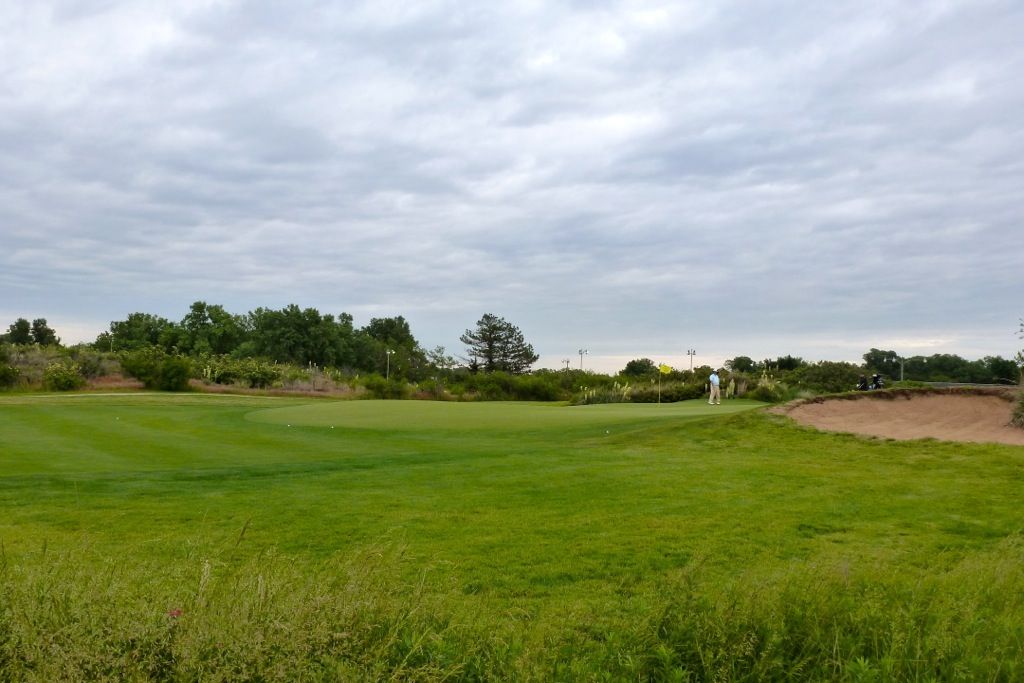
Look at the green.
From short:
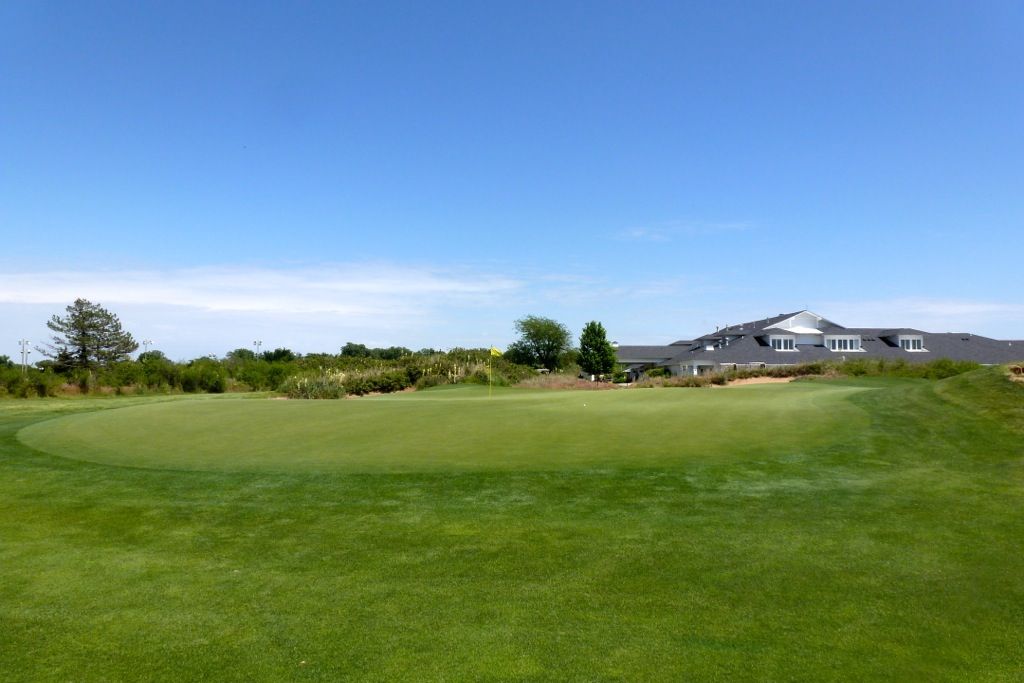
Back-right:
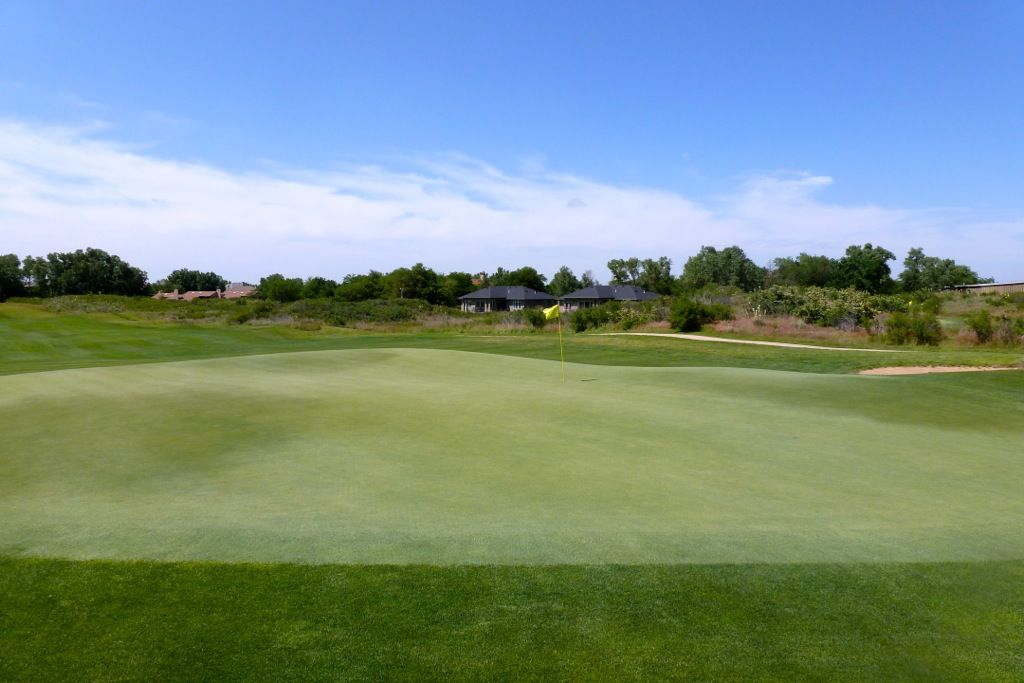
Right:

Left:
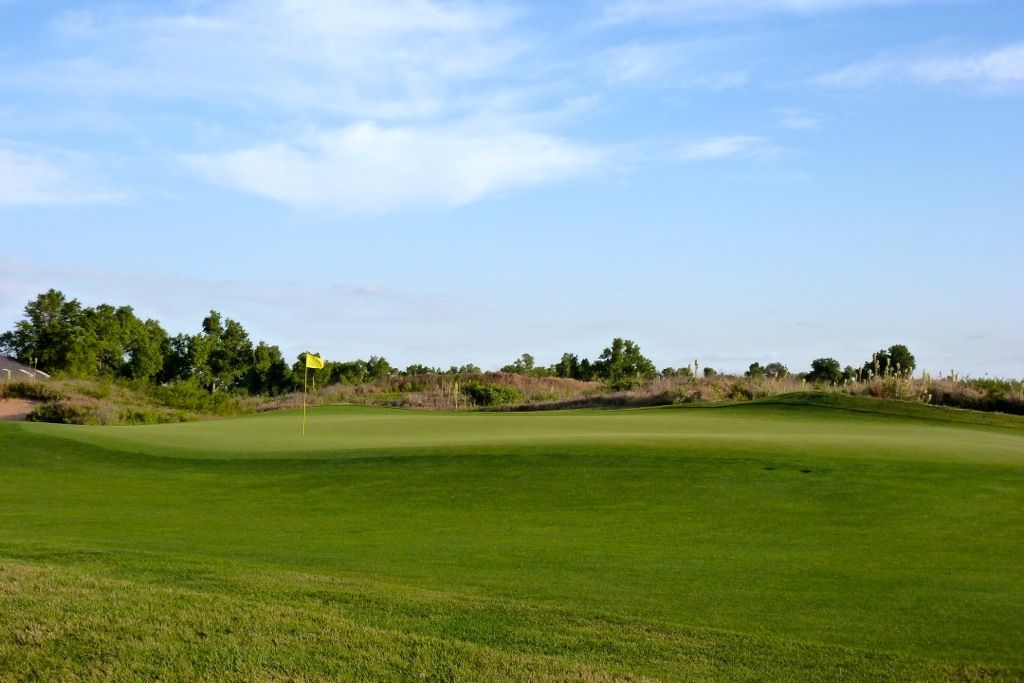
Behind:
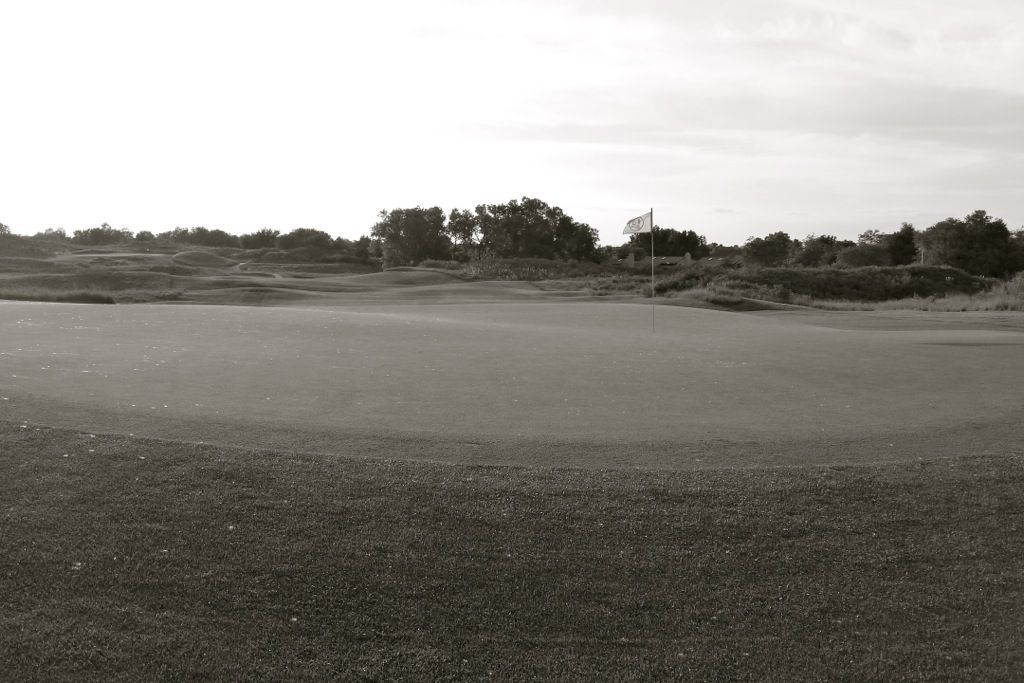

Back-Left:
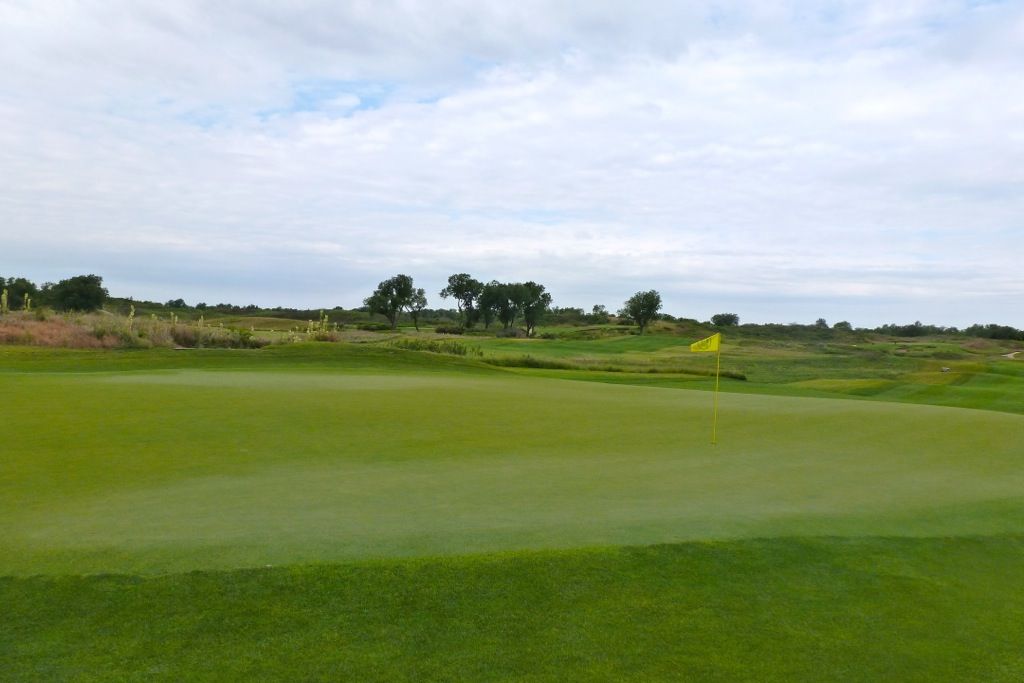
Behind:
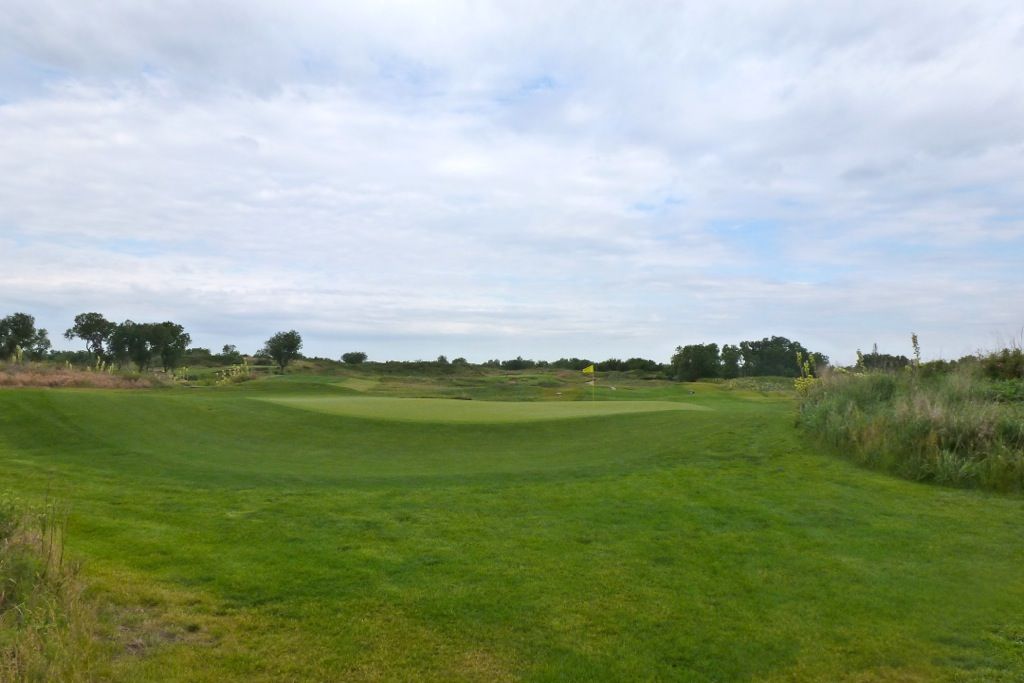
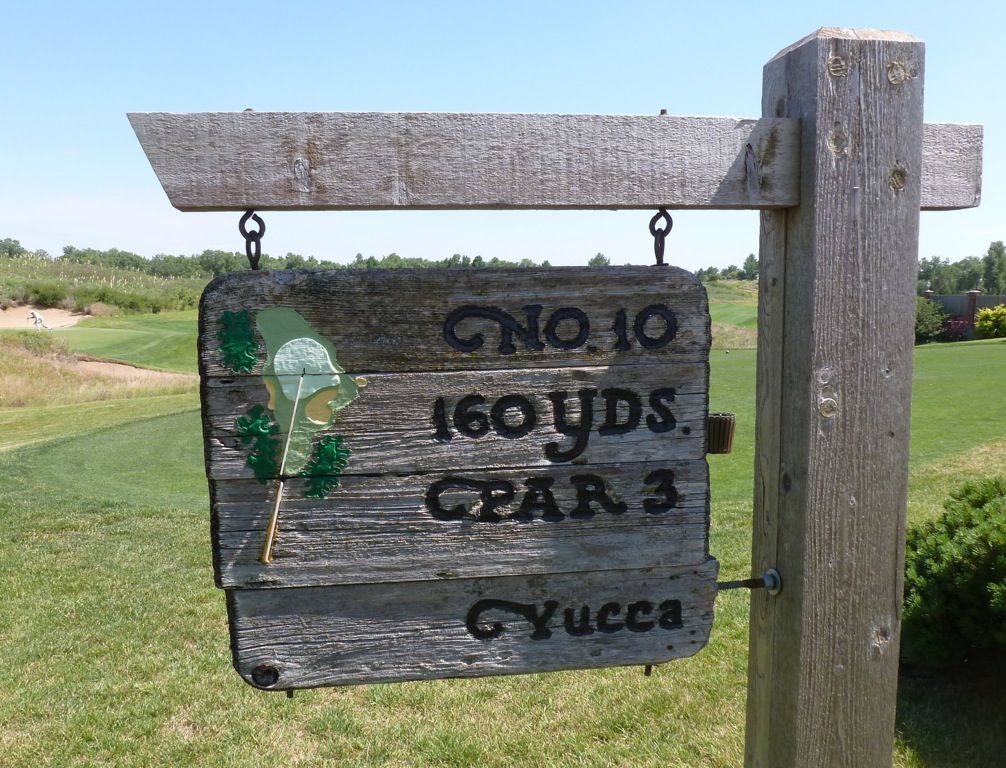
Note: Gold and Blue tees play 185 yards
Though few would identify this hole as the best par-3 on the golf course, I have heard and read that Perry Maxwell considered this the best par-3 at Prairie Dunes and one of the best in the country. Really it is a genius piece of routing to find this par-3 tucked between the dunes.
The 10th tee is only a handful of yards from the 18th green site, but one must not be too focused on the 18th as the short-ish 10th is no easy par. From the tee, the dunes hide most of the putting surface from view and make the demanding tee shot feel even more difficult. While a single bunker short of the green can be seen, there are two more bunkers -- one short of the visible one, and one left of the green -- that will catch errant shots.
Tee View:
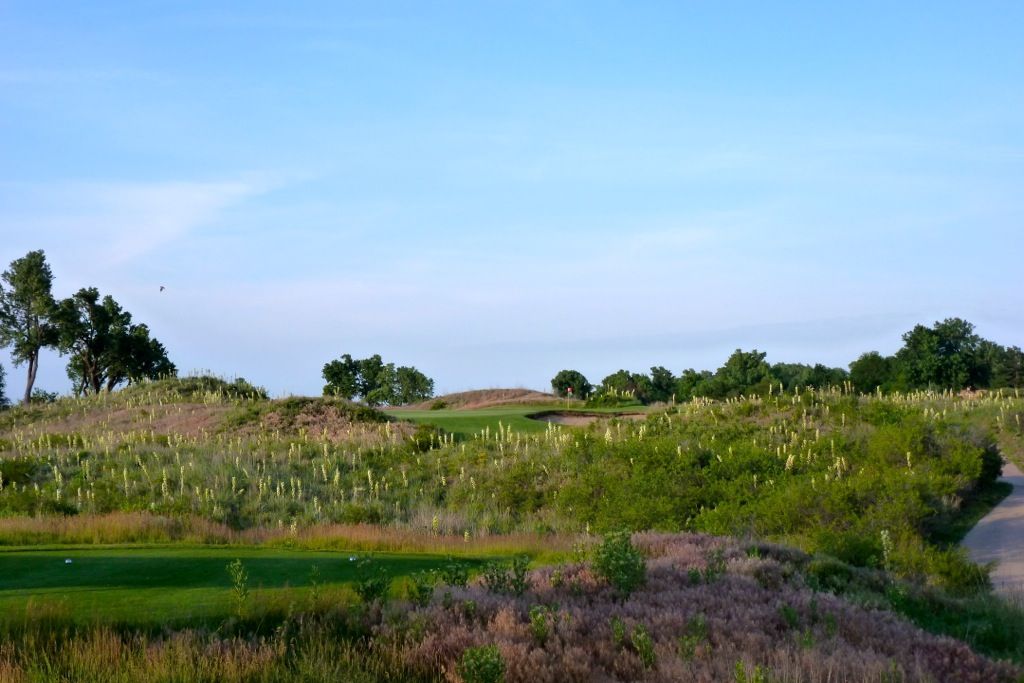
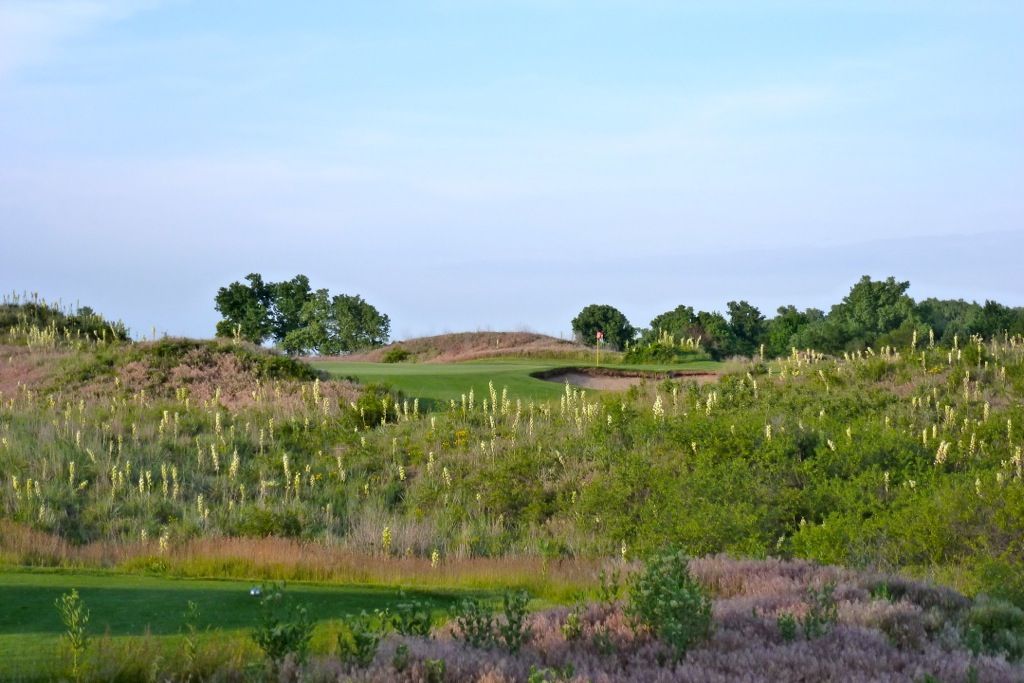
From 30 yards short of green the bunkering and green are more easily seen:
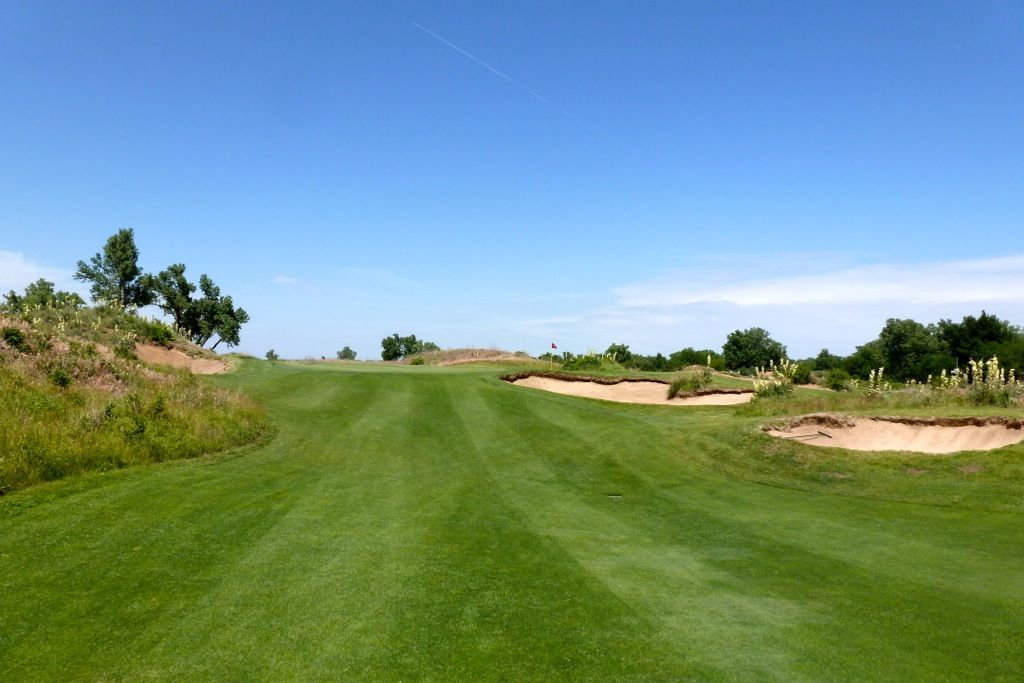
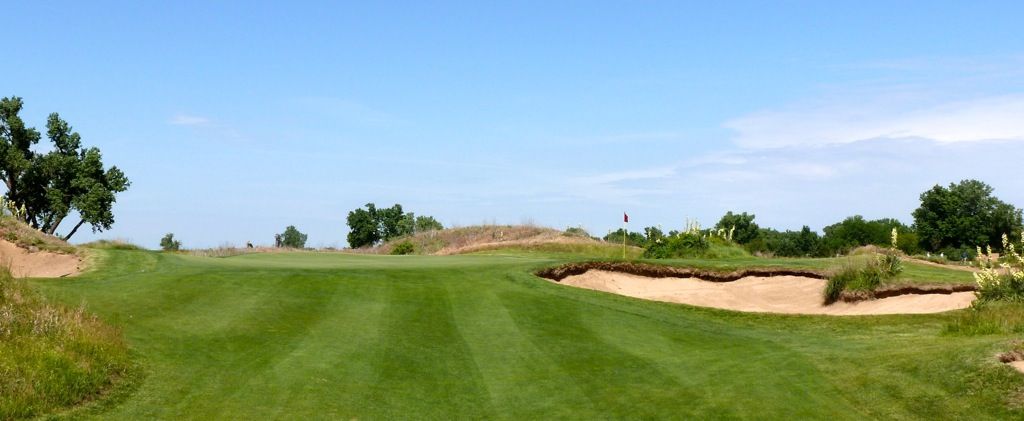
Another very good green, this one with portions right and back-left that are very well-guarded by the bunkers (and thus very difficult to access).
From short-right:

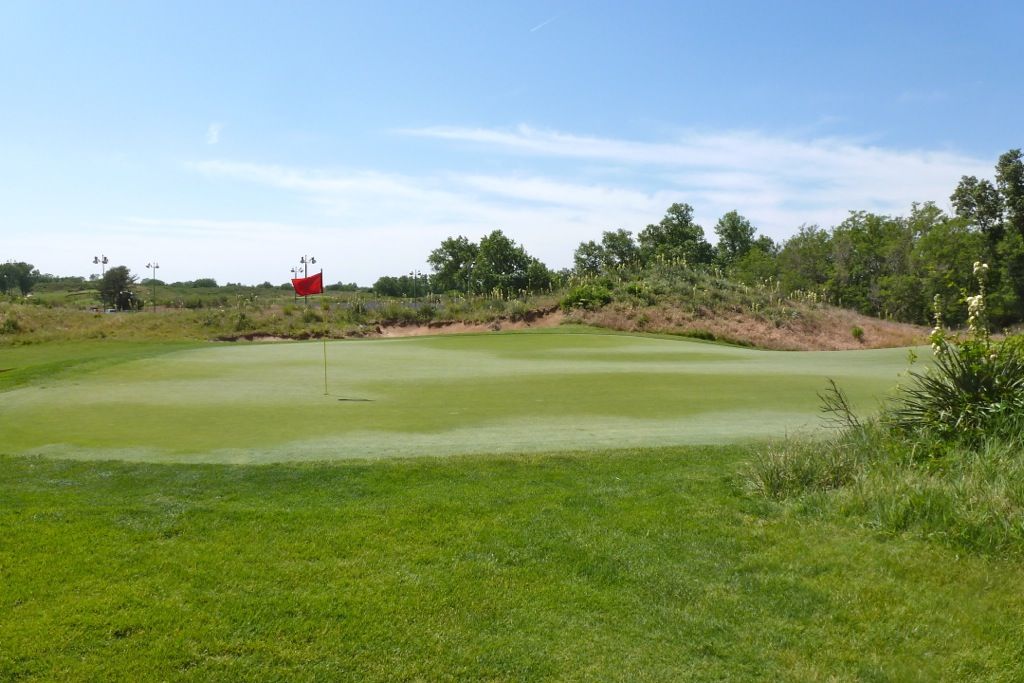
From right:
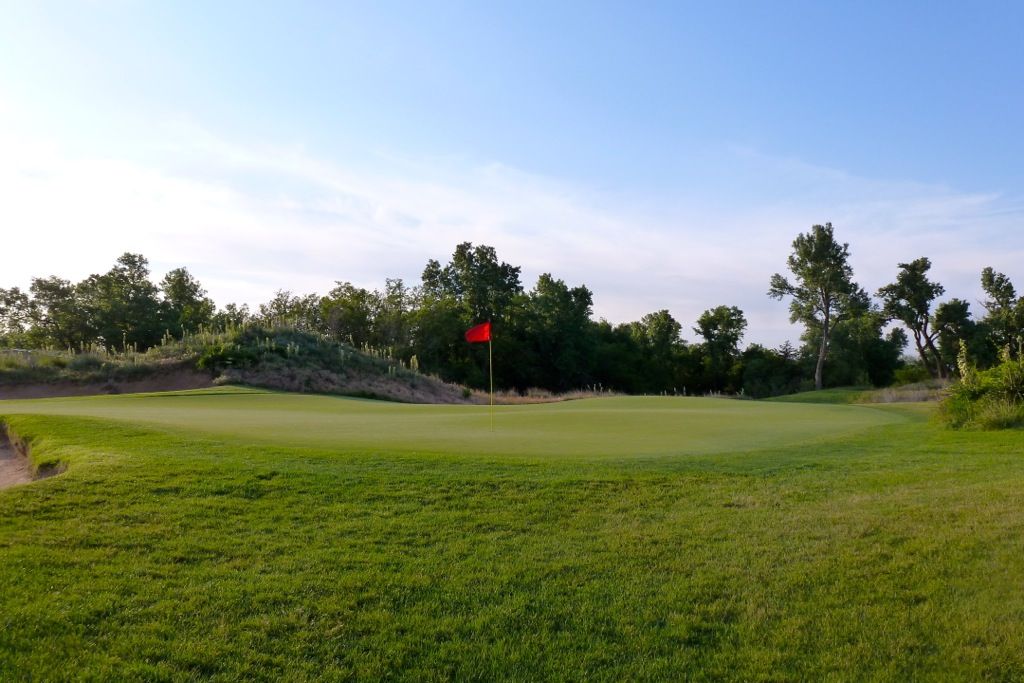
From back-right:


From back-left:
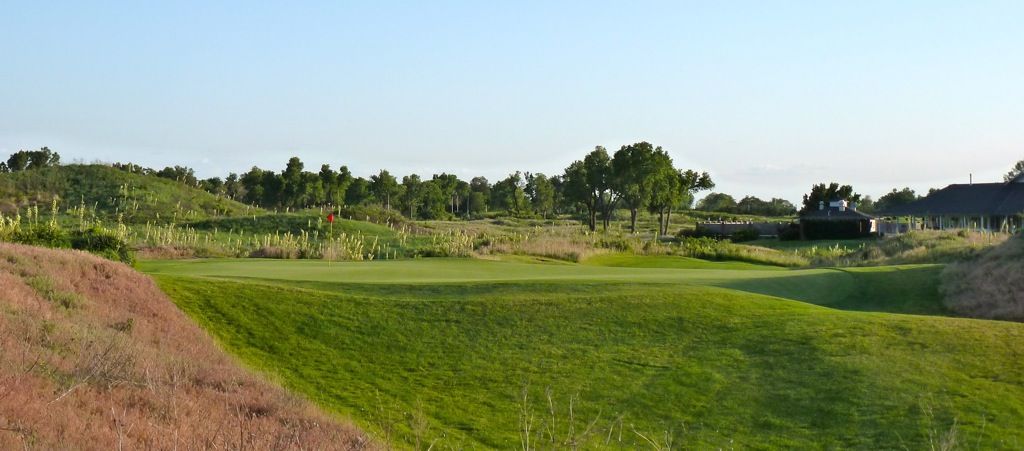

Note: Hole 11 plays 452 yards from Gold and Blue Tees
A new free-form tee has been added about 30 yards to the right of the original teeing ground laid-out by Press (interestingly, this teeing ground is likely near the original teeing ground for the current 17th, original 8th, hole). This hole is designed to be played downwind, with the bunker on the left carry able by some (about 270 yards) and tee shots can easily run through the fairway on the right. However, into the wind as it was the day I played it, four decent golfers had little hope of reaching this par-4 in two shots.
The new free-form 11th tee and a look at the tee shot:
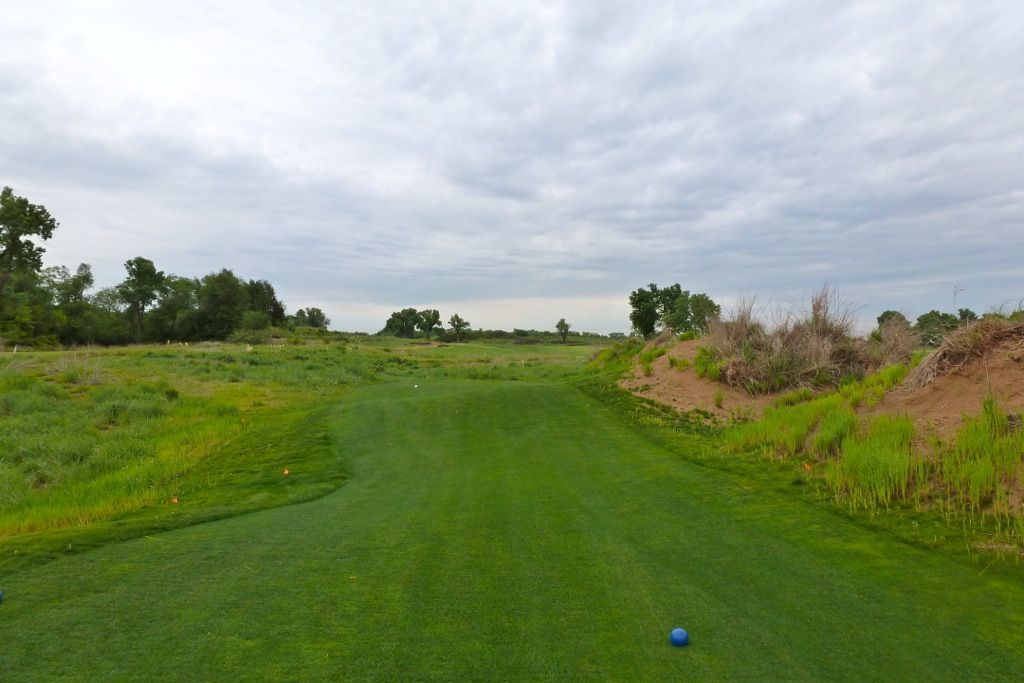
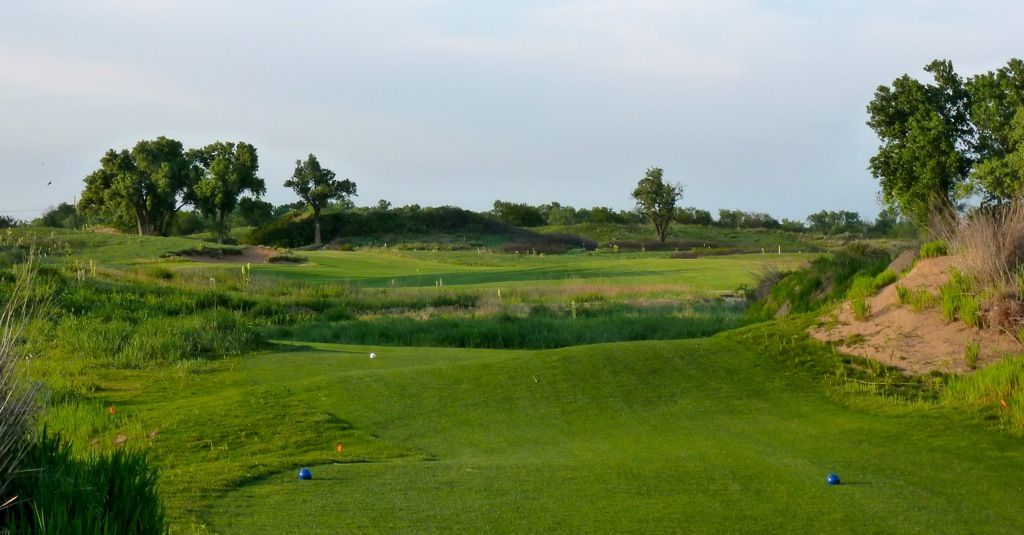
And the tee shot from the original left tee:
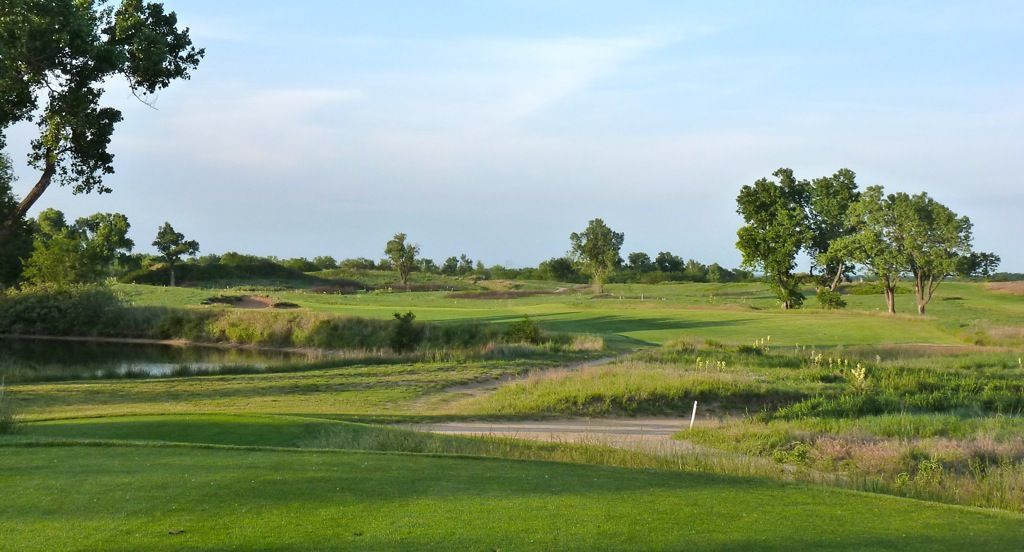
While few will face this shot on a downwind day, into the wind this massive fairway bunker hides the left-side of the fairway making the lay-up more difficult.
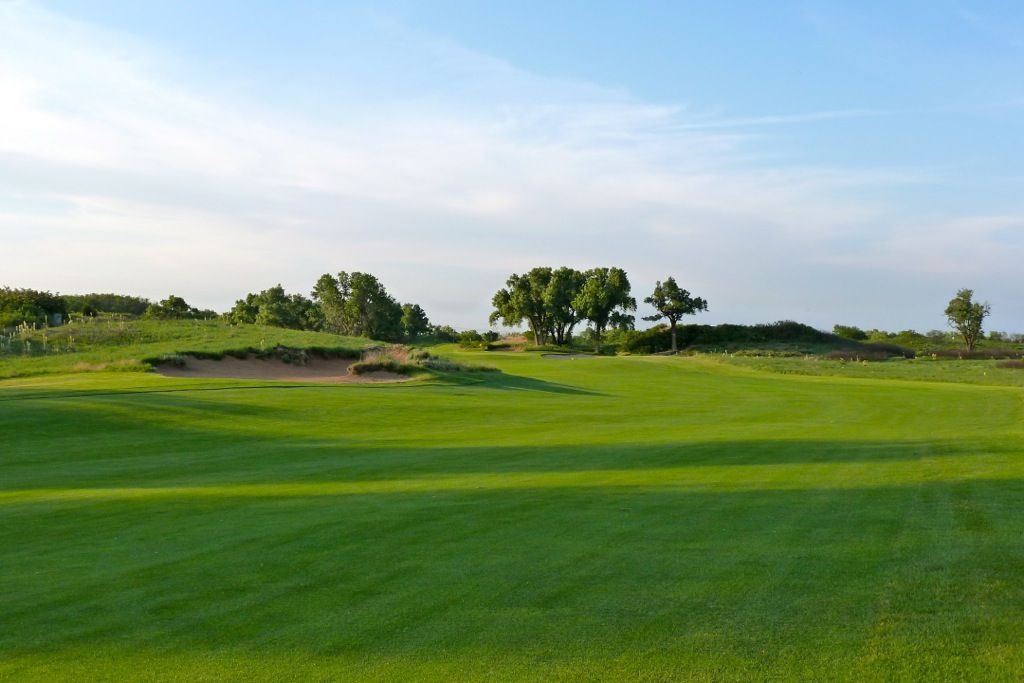
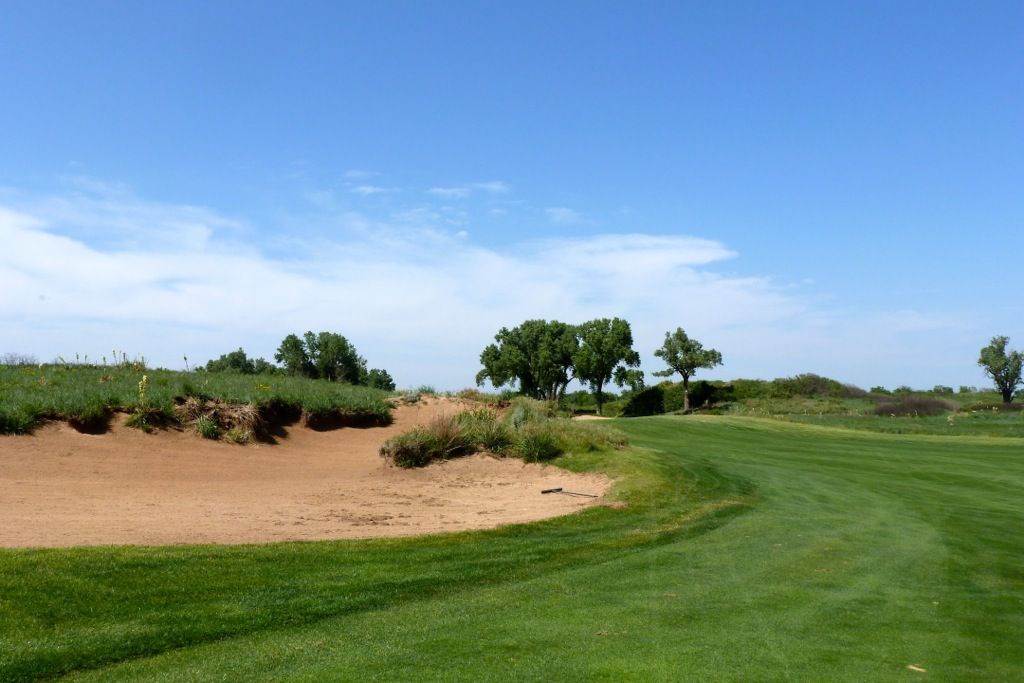
Once passed the corner the entire green site comes into view. It seems Perry chose many of the very best green sites in the original 9 holes as several of the Press greens have a less natural and less dramatic feel to them. While the contouring of the green is excellent, on par with much of Perry's work, somehow it feels that the integration of the green into the surroundings was a skill uniquely possessed by Perry.
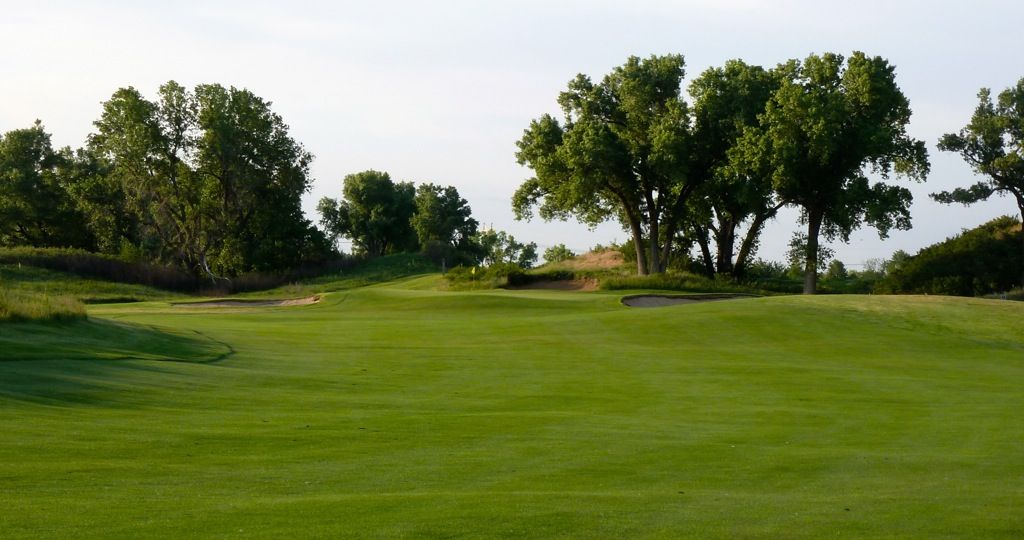
Several looks at the green and green site. Note the severe false-front...
From short-left:
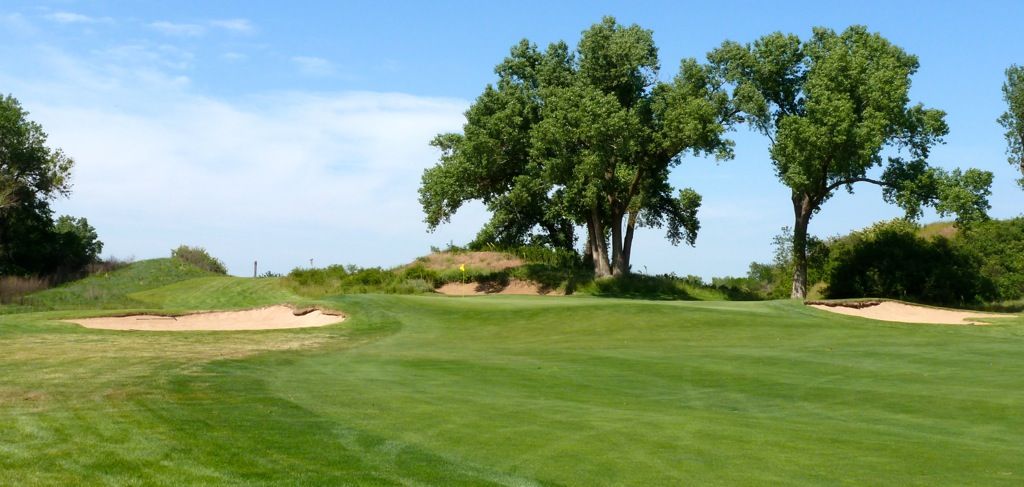
From short-right:
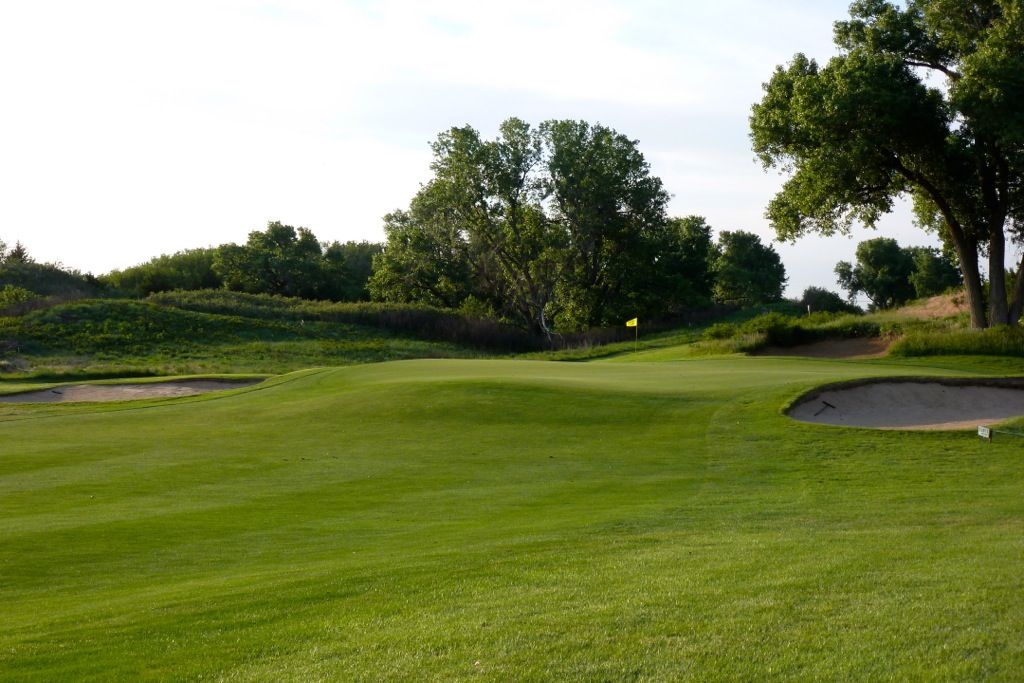
From short:
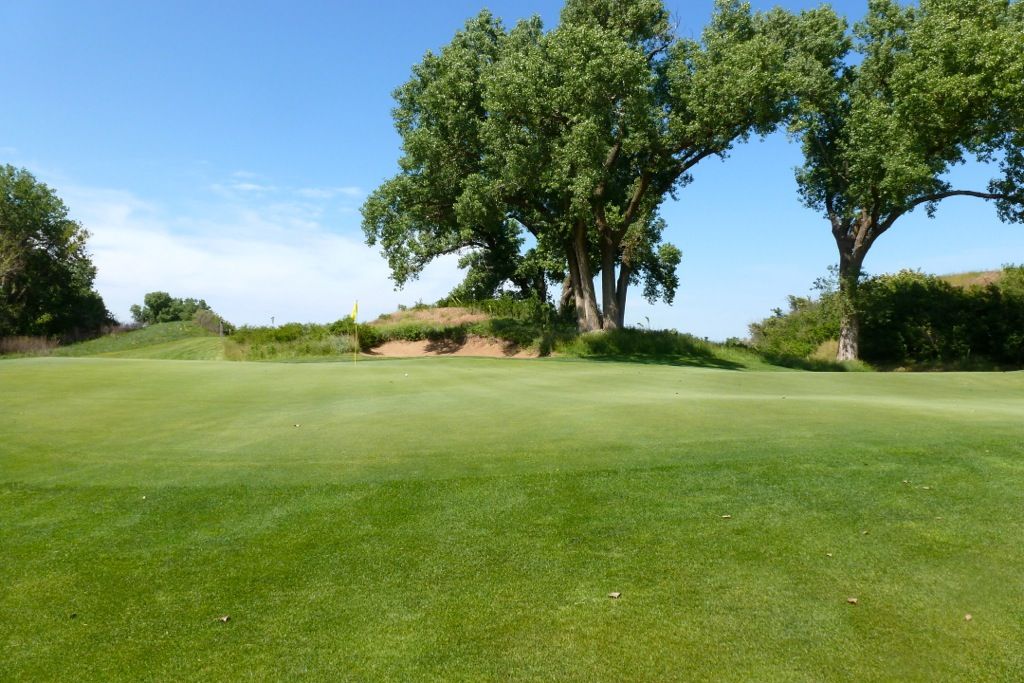
From back-right:
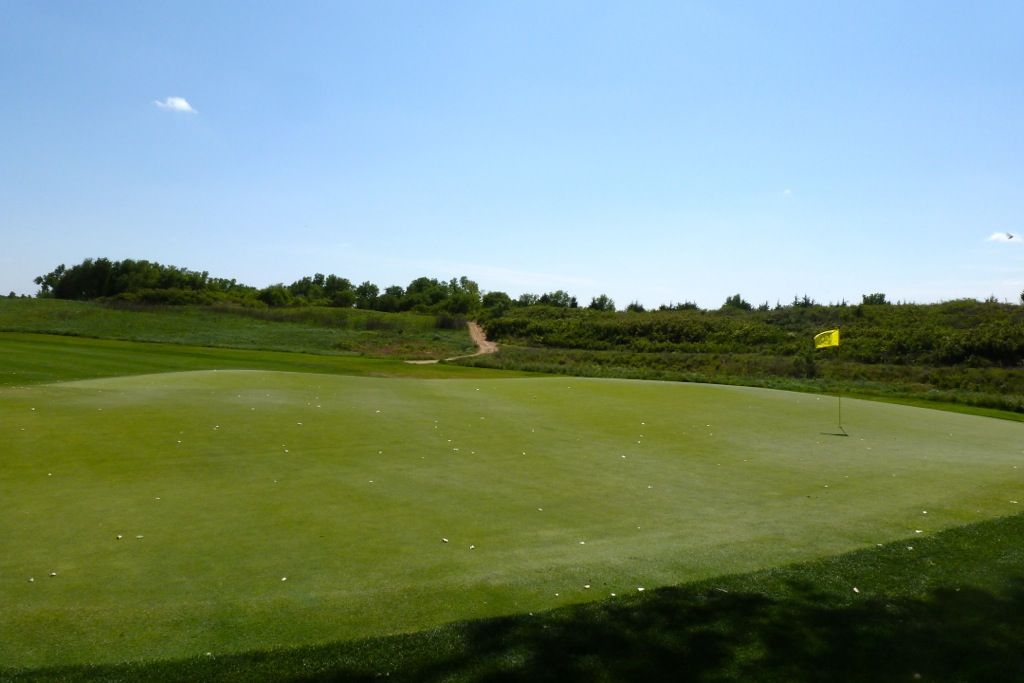
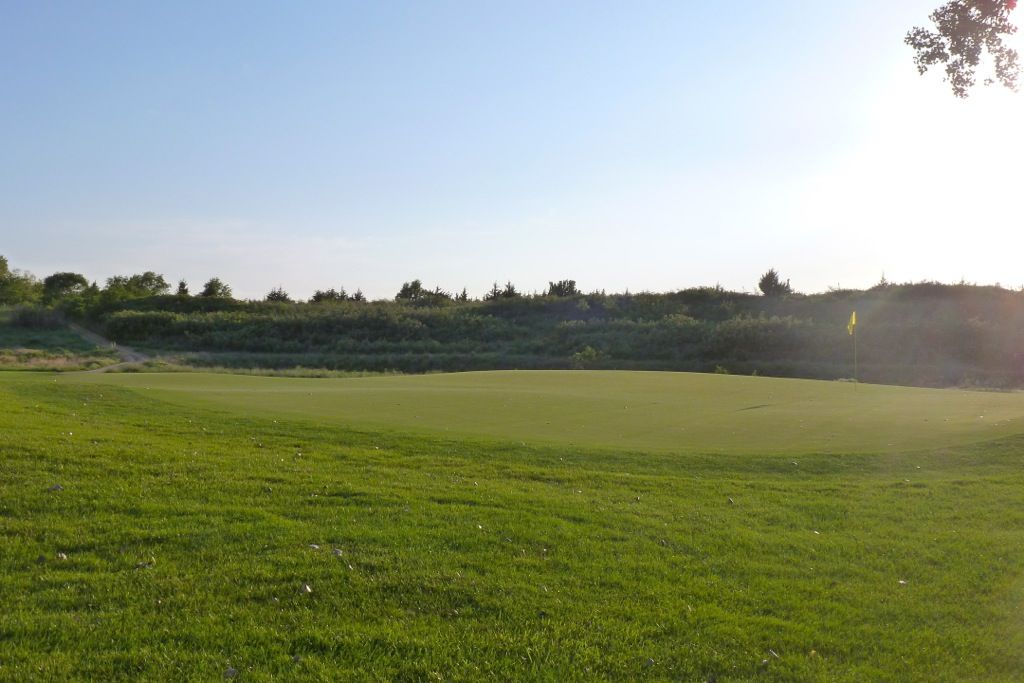
From 12th tee:
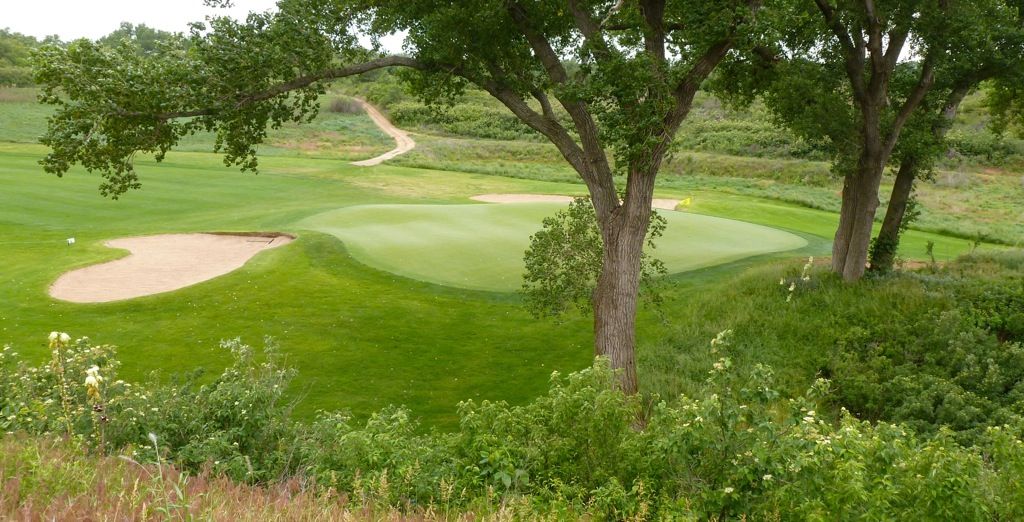
Hole 12: Par 4, 390 Yards
Accuracy is at a premium on the 12th as a series of Cottonwoods (yep, trees at Prairie Dunes!) guard the entrance to the green. Shots that are even slightly off-centre will have to deal with some tree-limbs.
A series of bunkers from 200-270 yards guard the left side of the left-to-right tilted fairway -- finding the centre will require challenging these bunkers.
Upper Tee View:
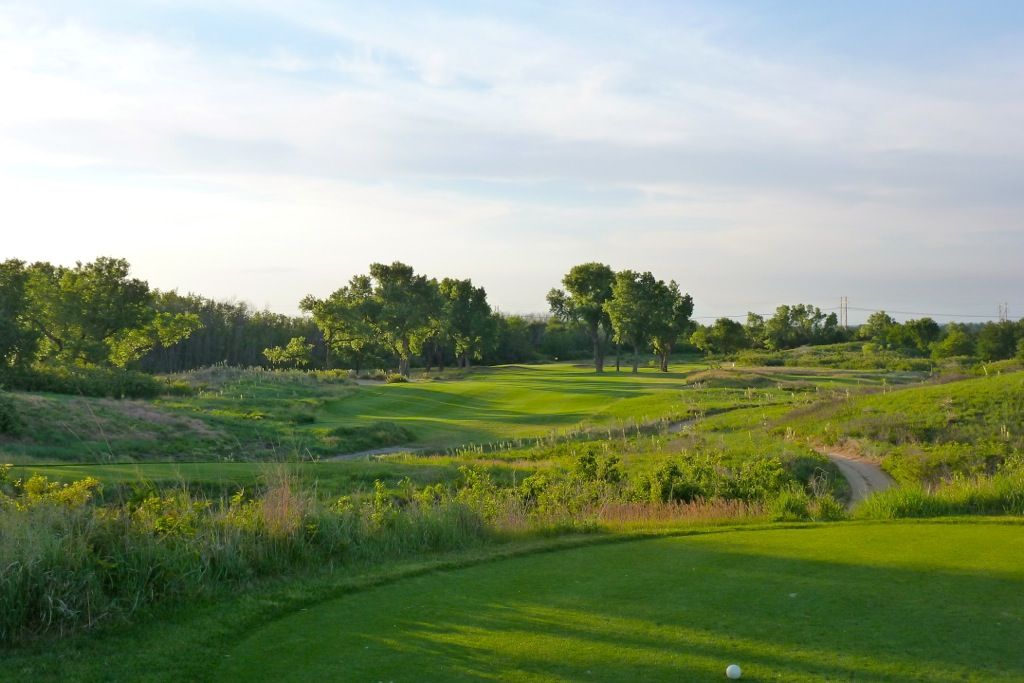
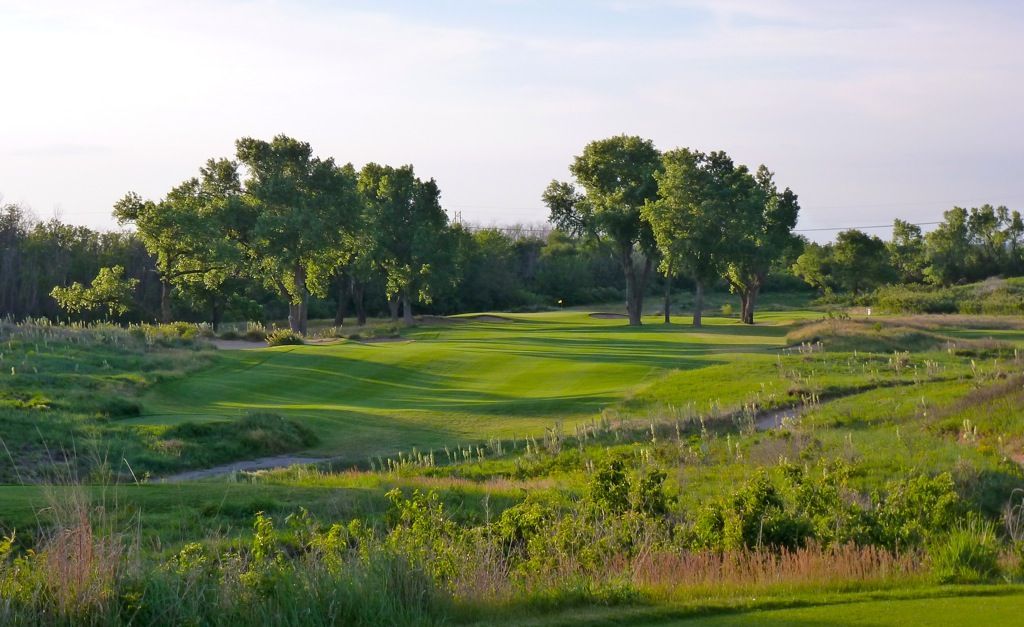
Lower Tee View:
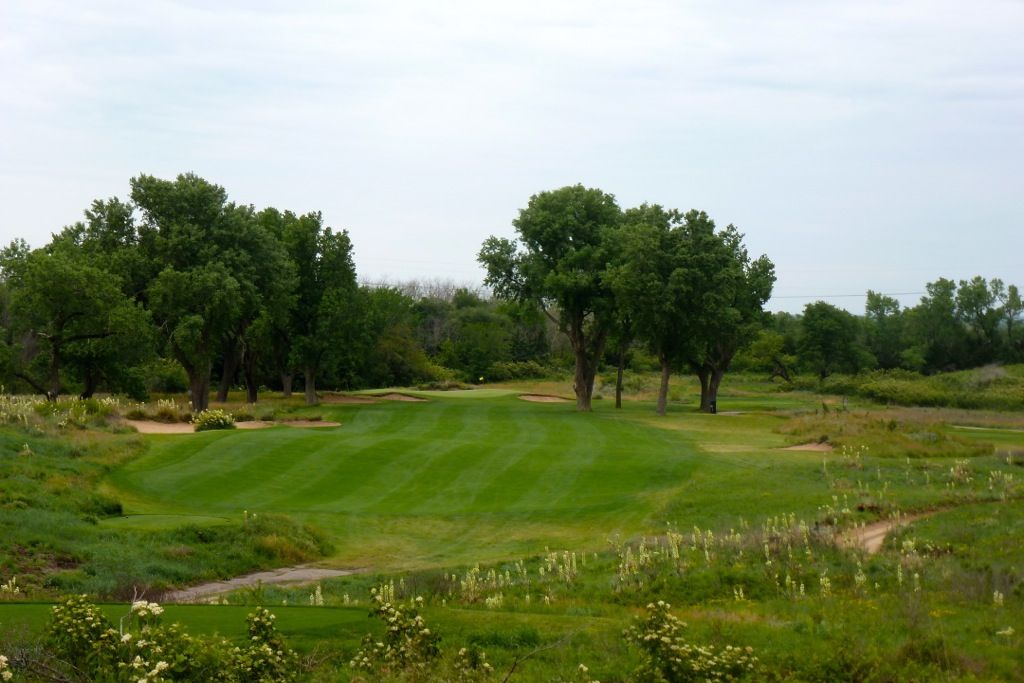
Finding the left-centre of the fairway is extremely important if one wants a clear look at the green...
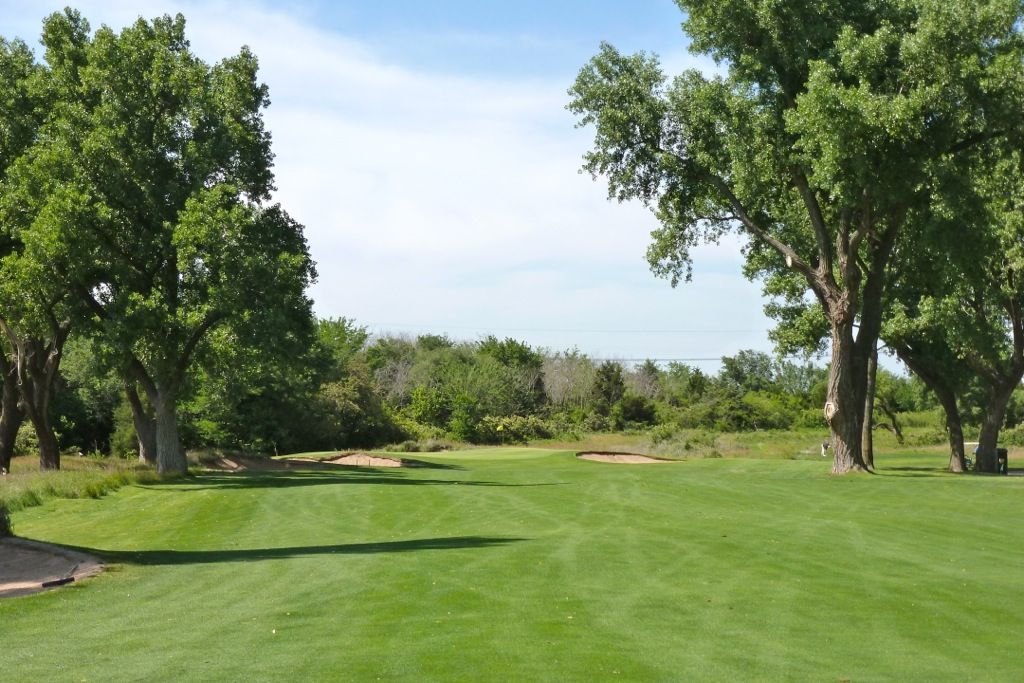
As even approaches from the right side of the fairway must deal with limbs...
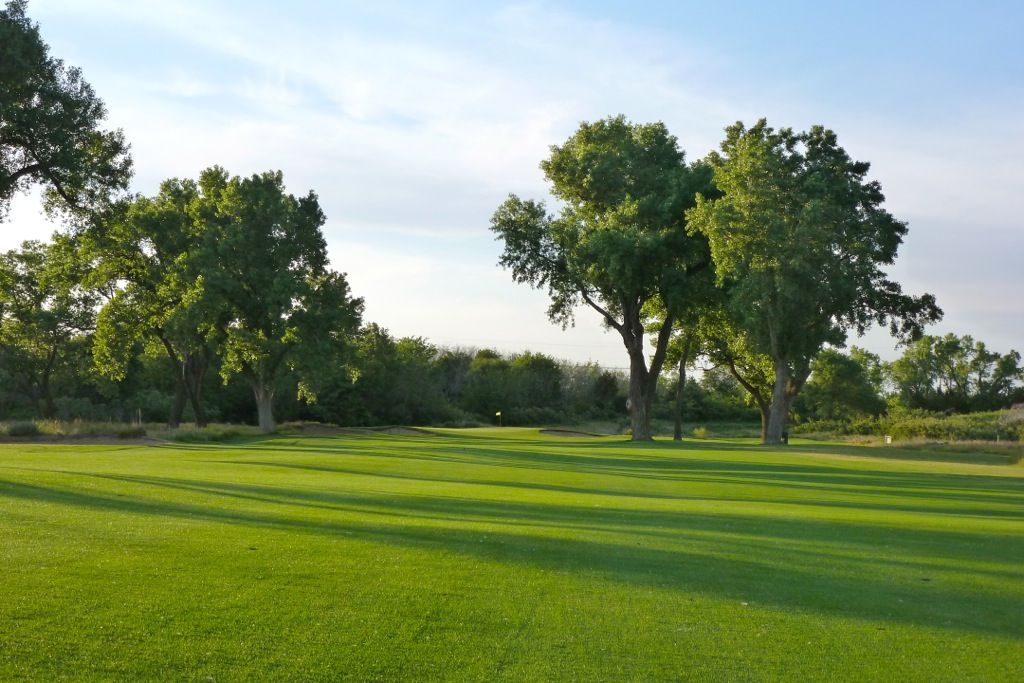
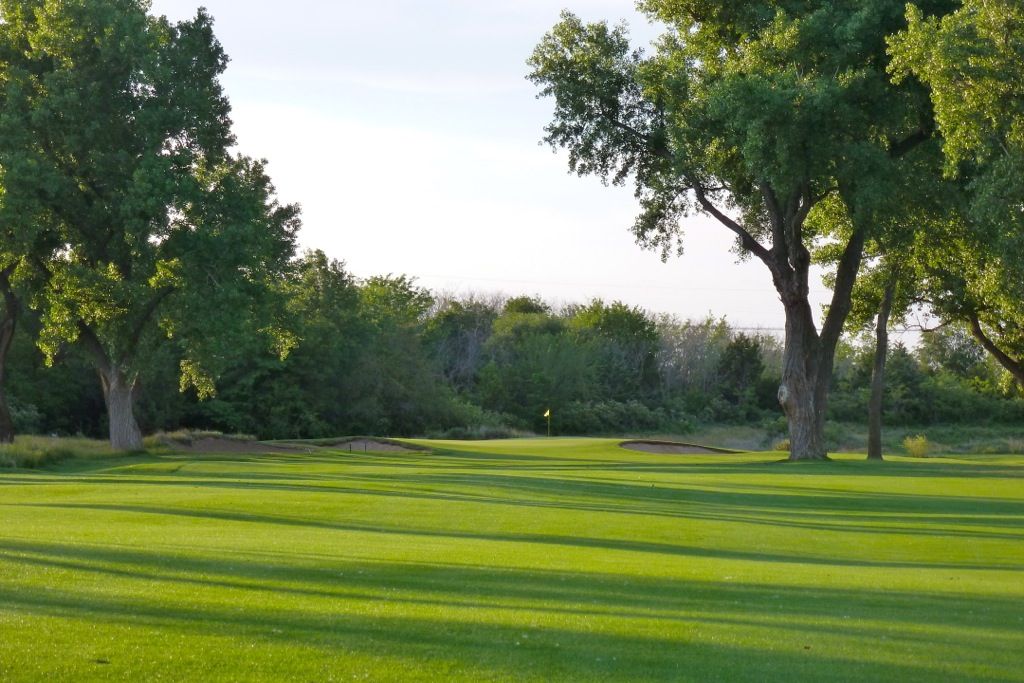
Bunkers short-left and short-right will catch most balls played under the tree limbs...
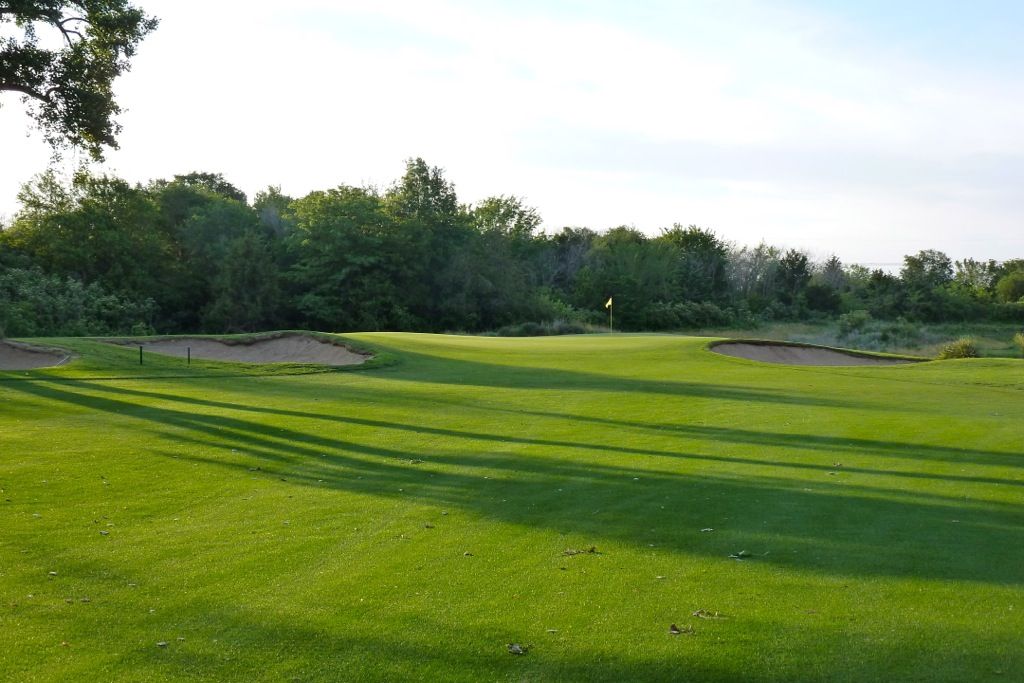
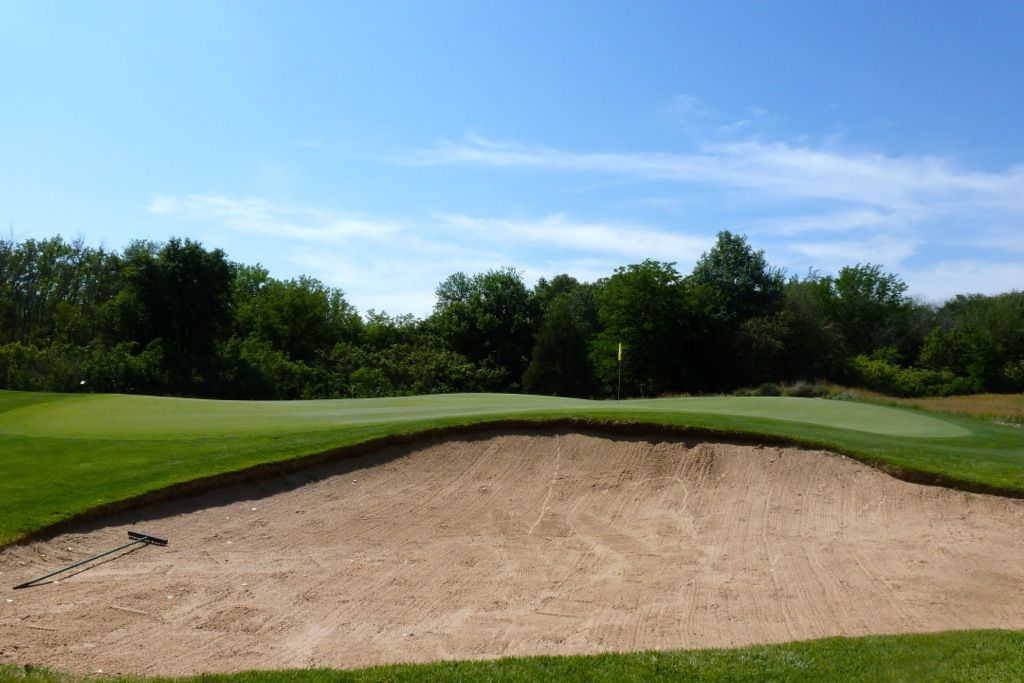
But the real trouble starts when balls run through the green and down the swales back-left and back-right of the 12th green:
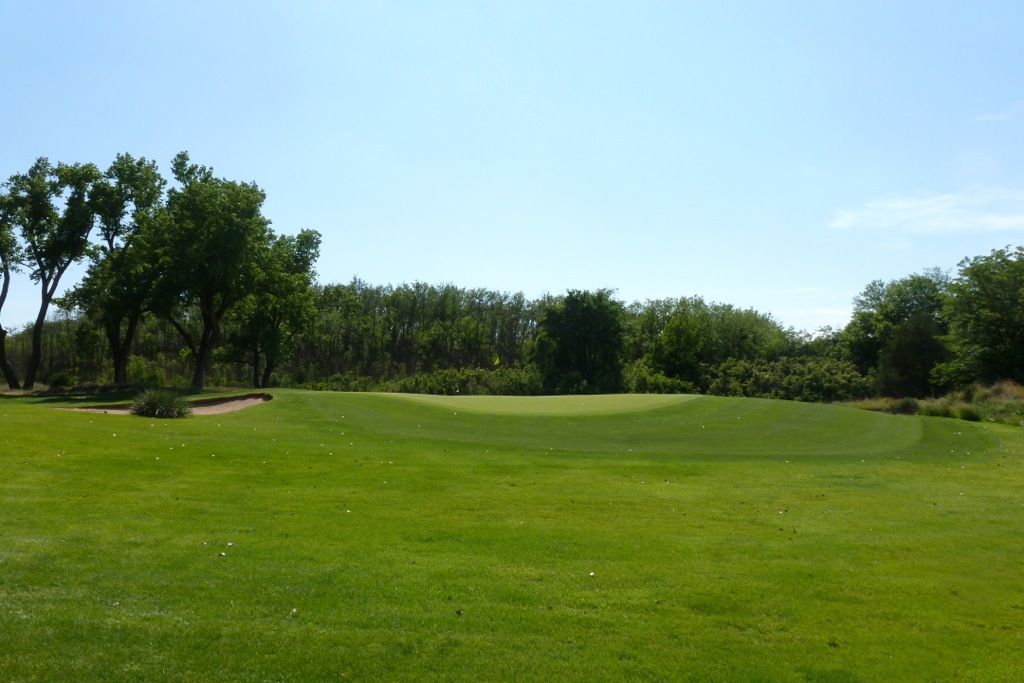
This may be the most contoured green on the golf course, with 'wings' on the back-left and back-right portions of the green. Clever golfers can use these contours to attack a pin position, but find yourself on the wrong side of the wing and you have a very difficult two-putt.
Several looks at the green.
From short:
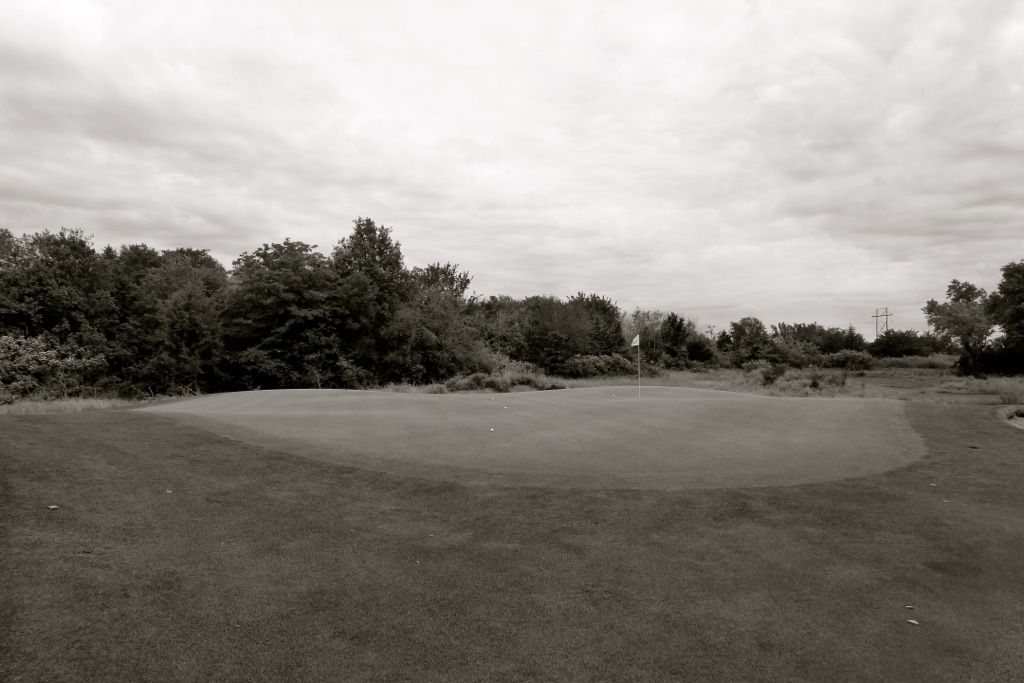
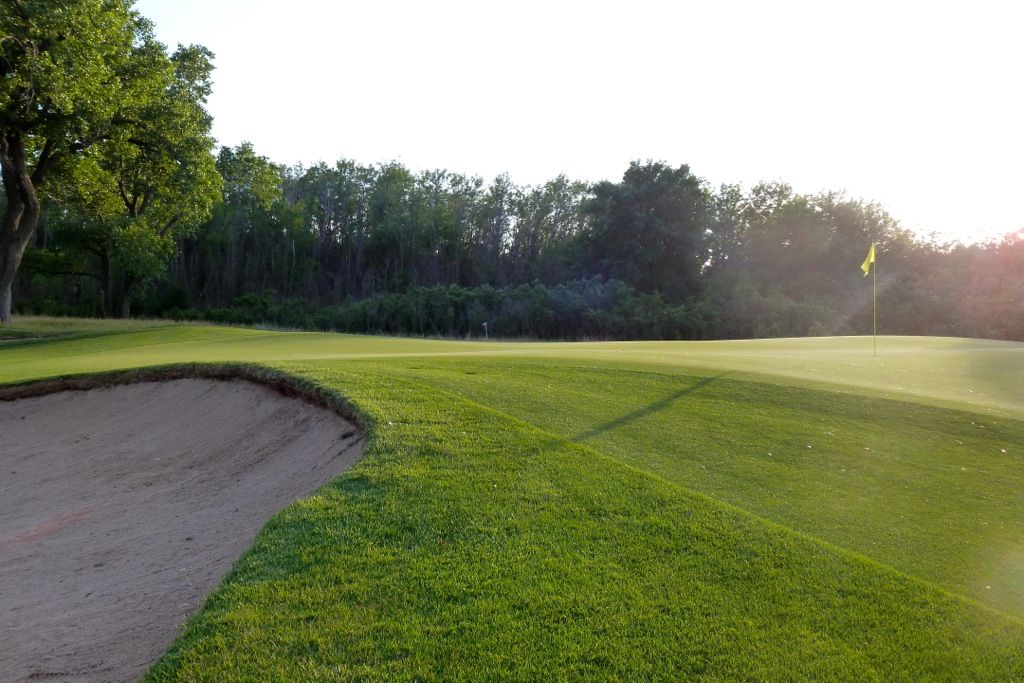
From right:
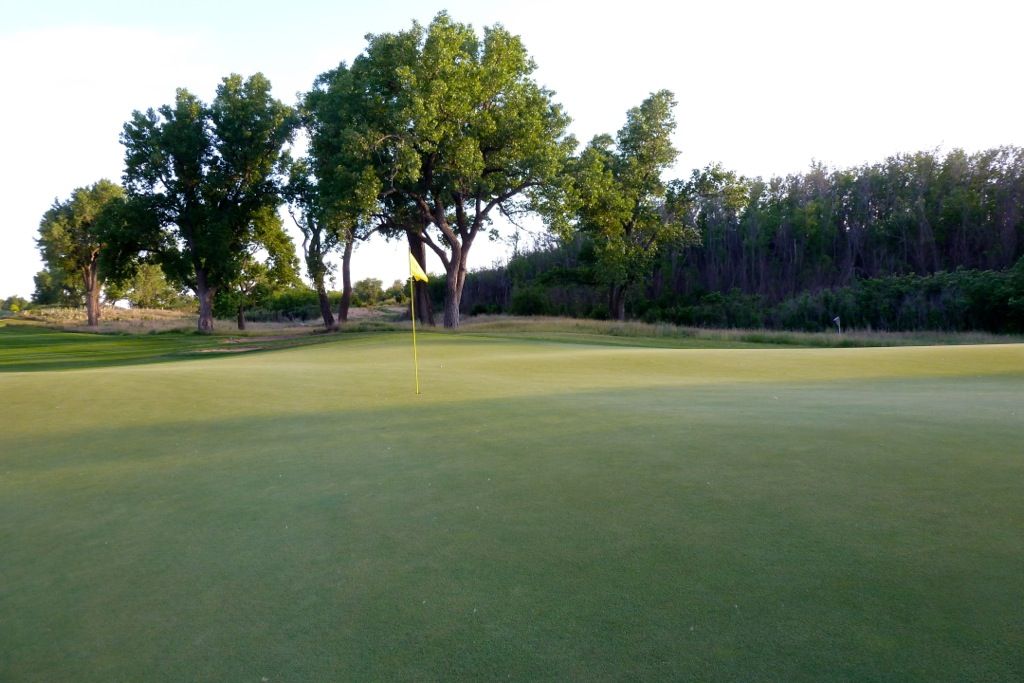
From back-right:
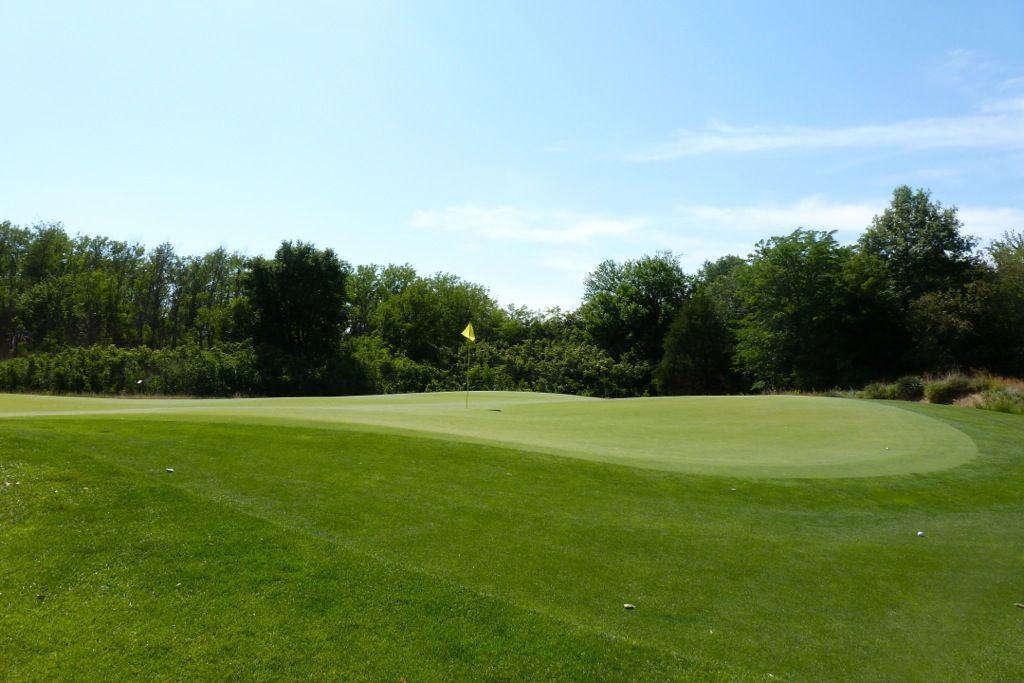
From behind:

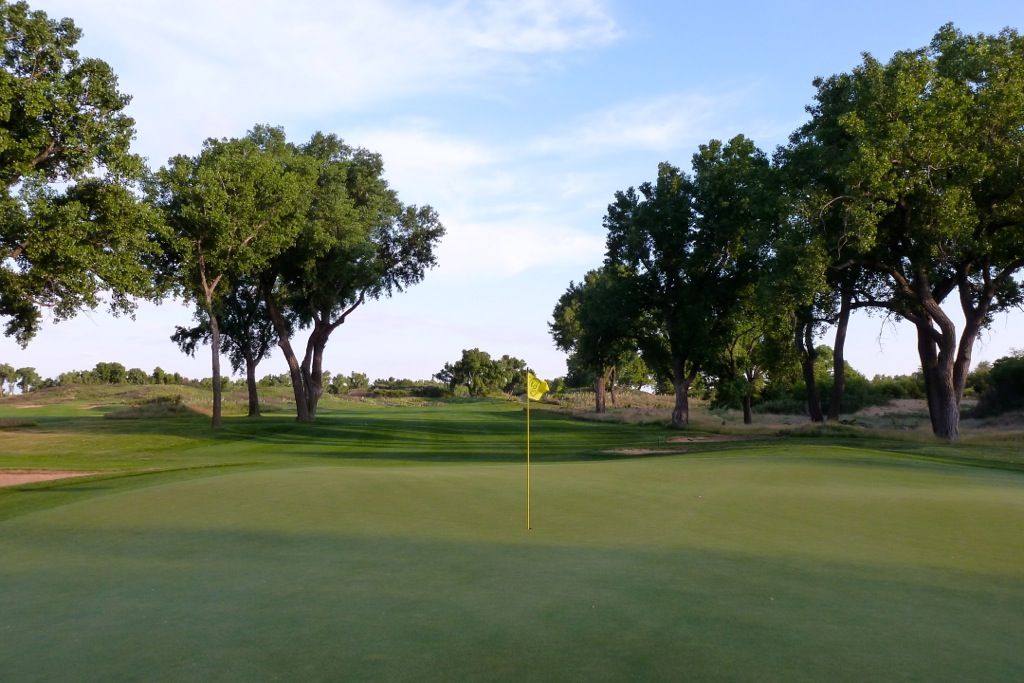
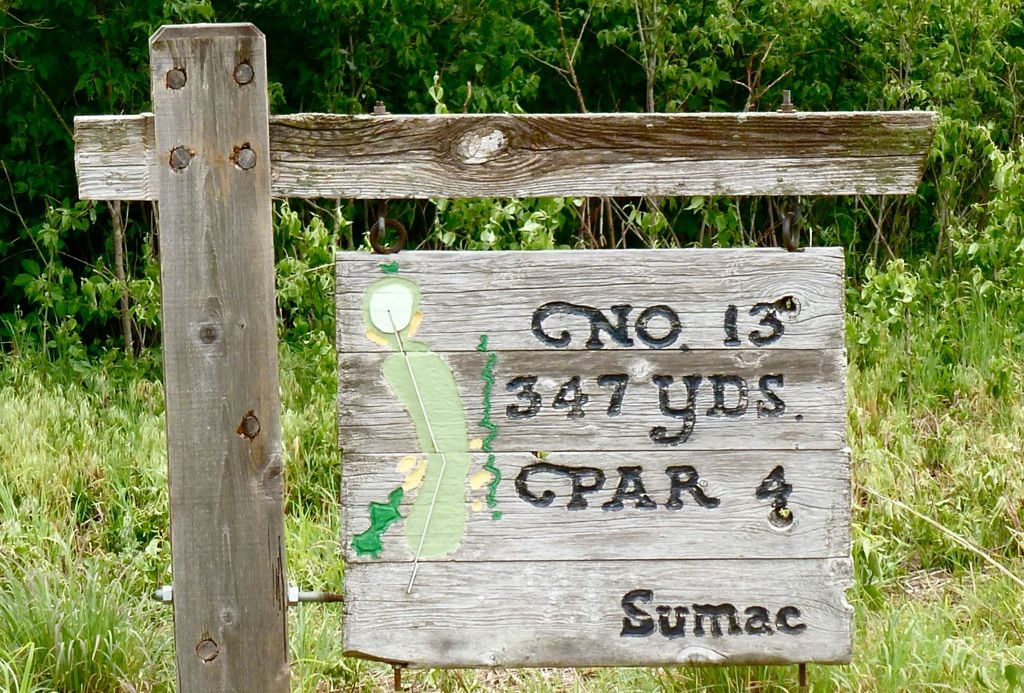
Note: Gold tee now plays 445(!) yards
A tee shot that requires some thought, especially if the wind is blowing. Longer hitters will consider playing over the bunker on the left to leave a short-iron into the green, but, appropriately, this is one of the deepest and most penal fairway bunkers on the golf course. Running along the right side of the fairway are a trio of fairway bunkers to catch those golfers bailout out on the tee shot.
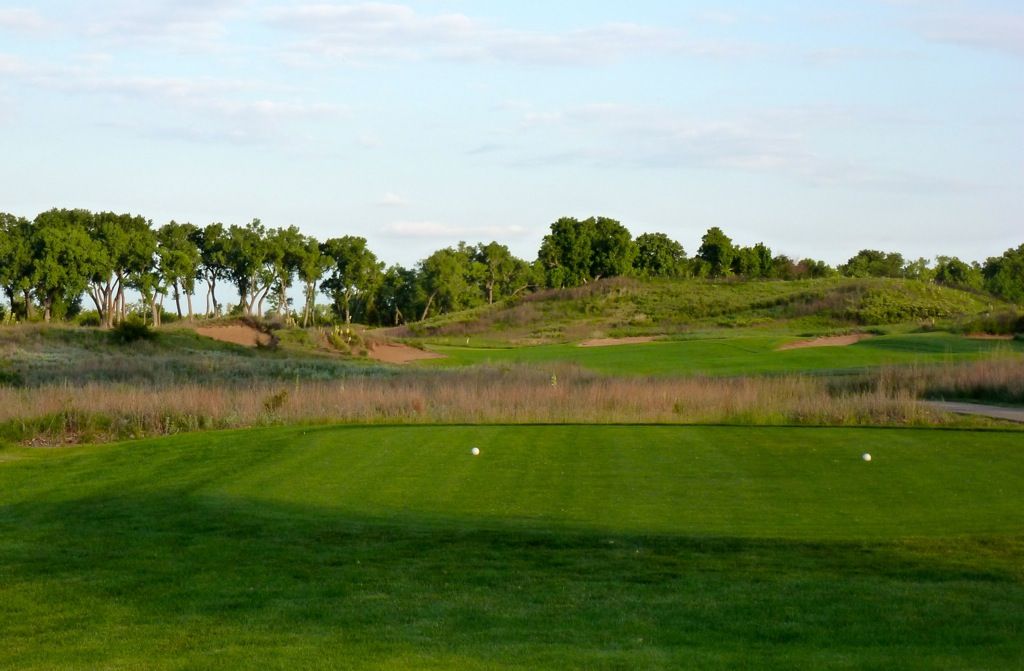
A closer look at the left-side fairway bunker. Look at all that yucca!
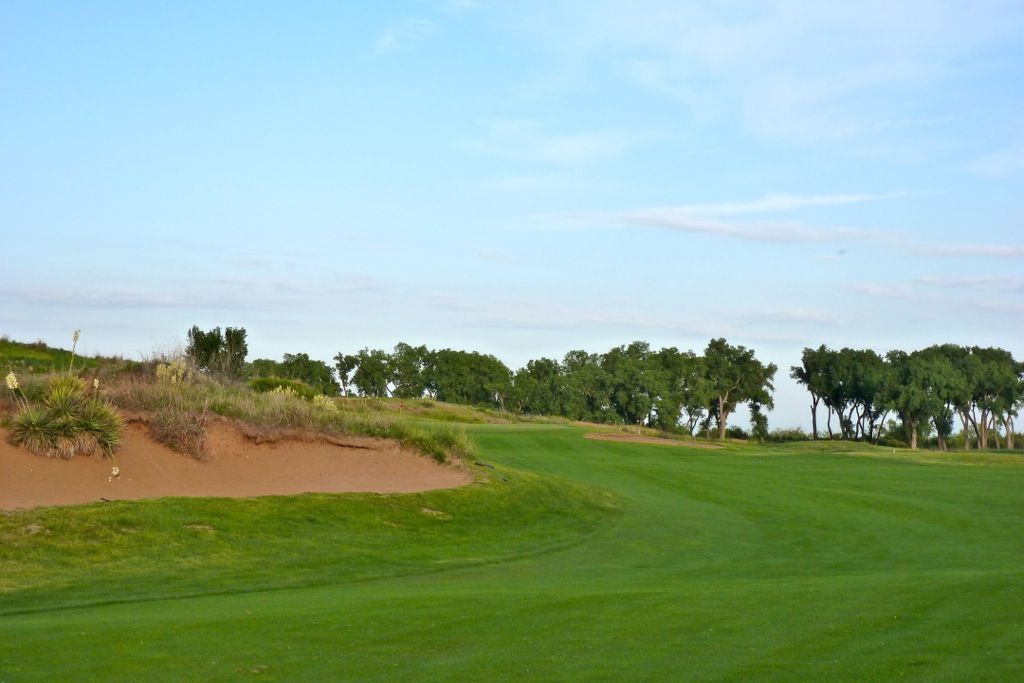
Shots that successfully carry the bunker will be rewarded with this speed-slot in the fairway and a very short shot into the green.
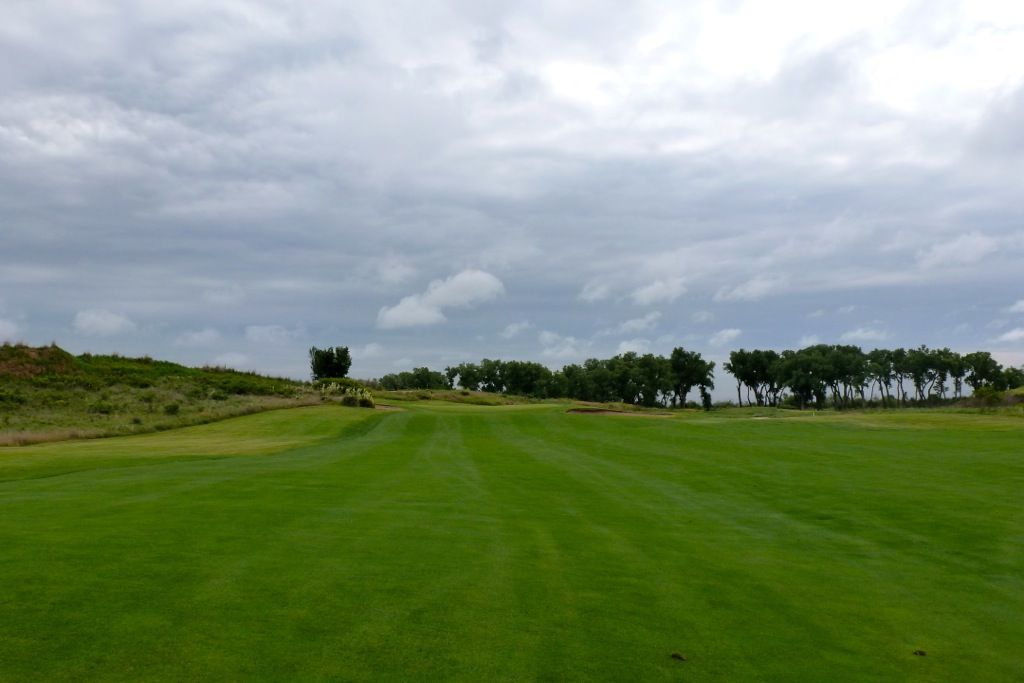
As was typical of Perry (and I suppose followed by Press), the ideal angle of approach is from the outside of the dogleg -- a clearer line into the green and a shot played into its slope.
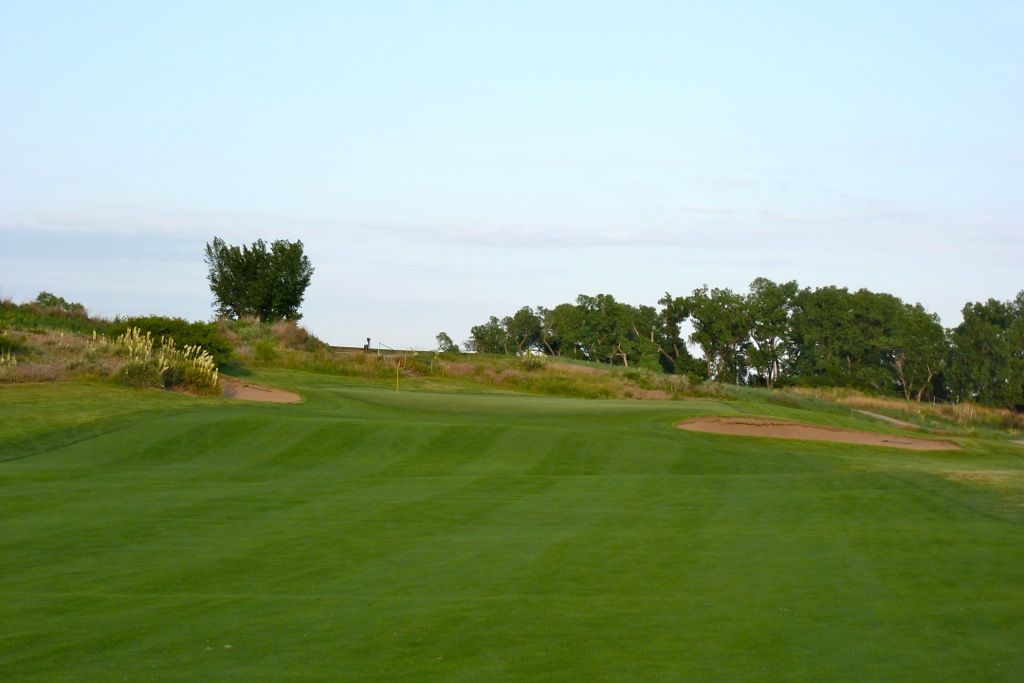
Several looks at the green...
From short-left:
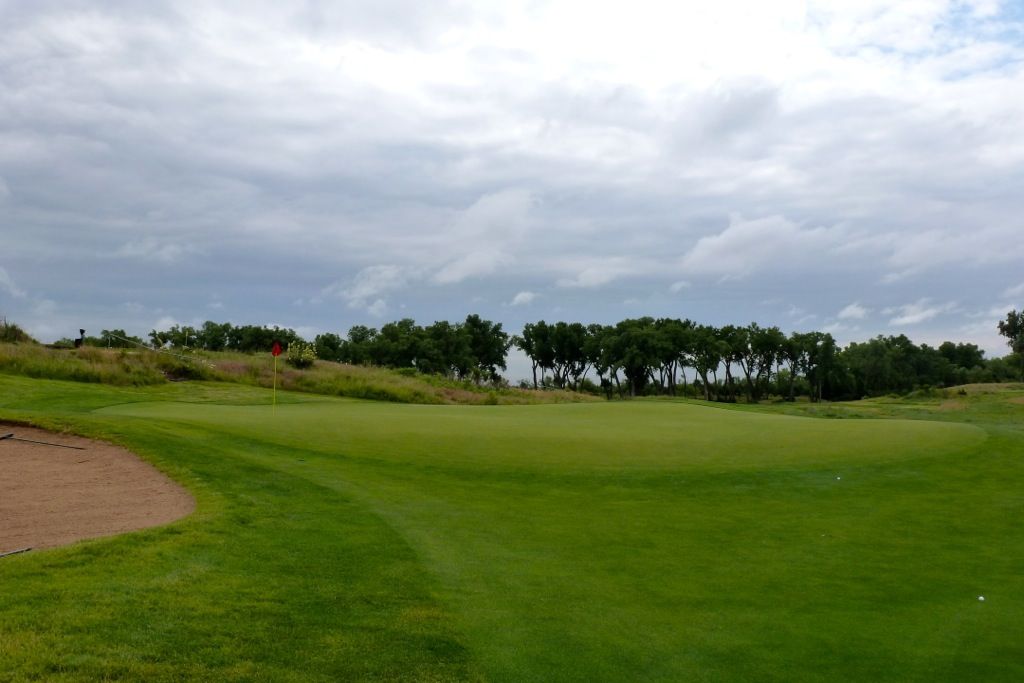
From left:
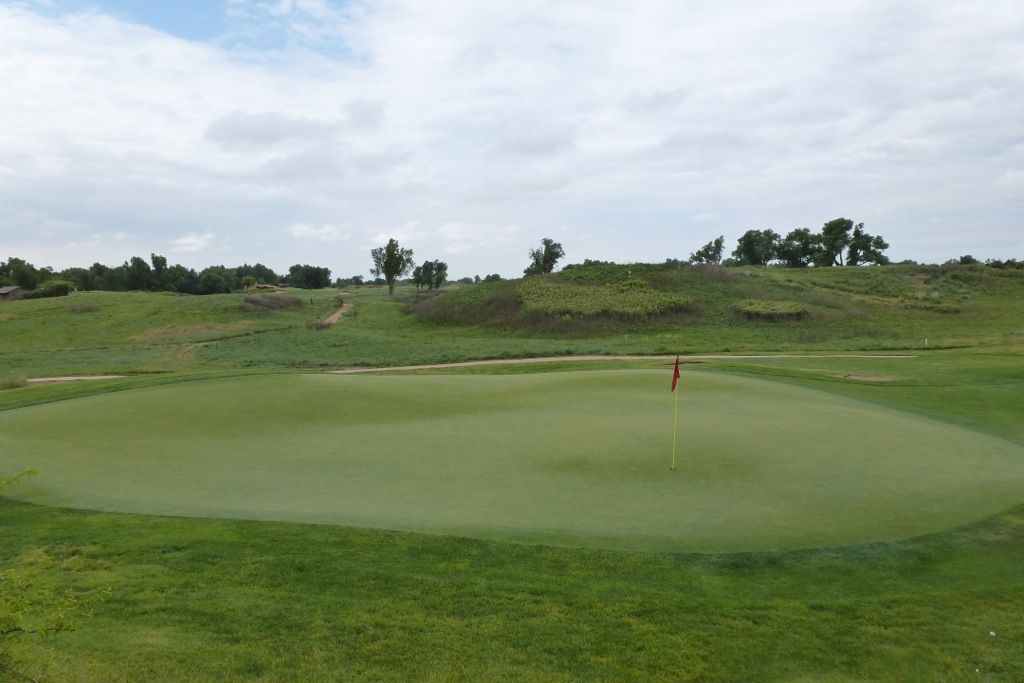
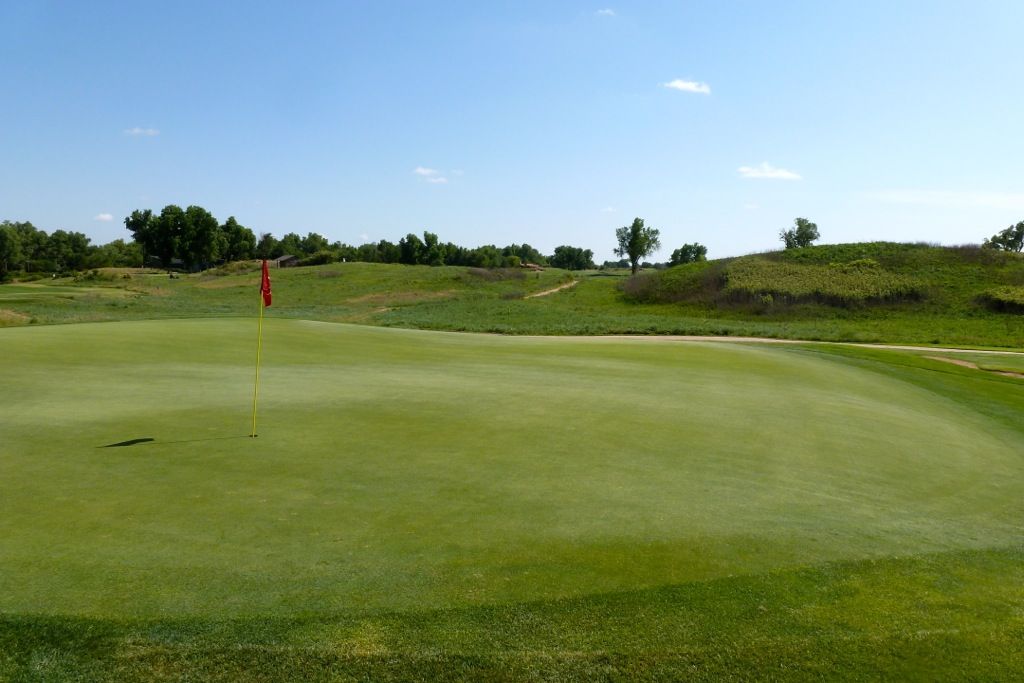
From back-left:
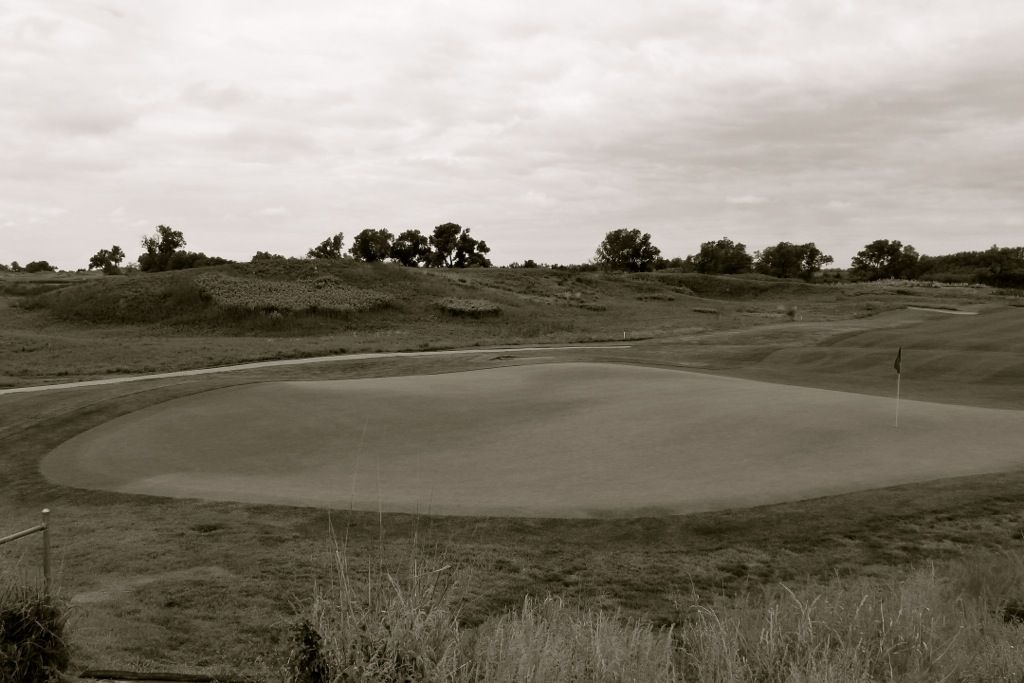
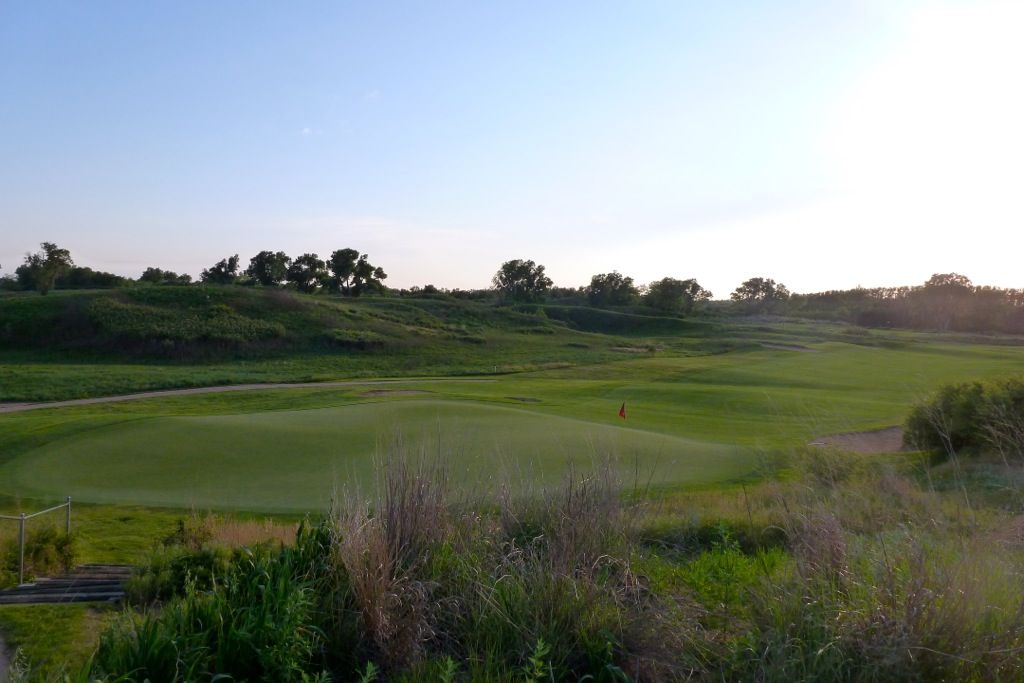
From 15th green (right):
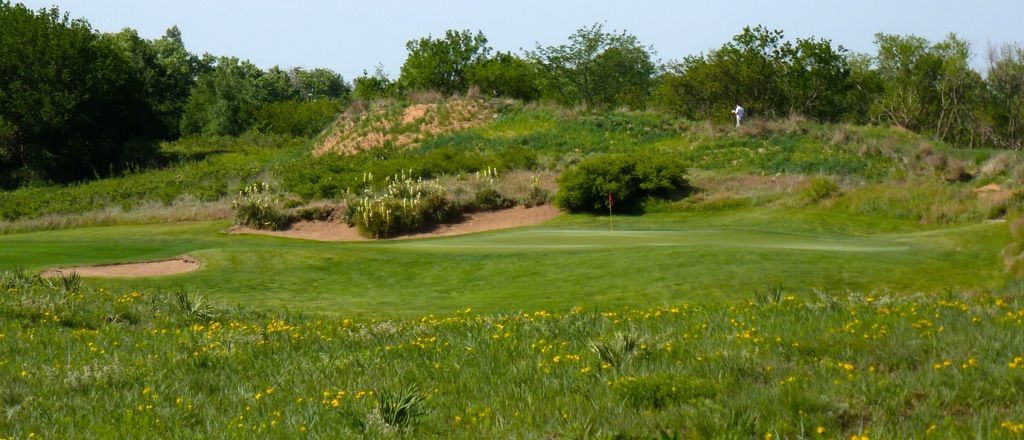
From behind:
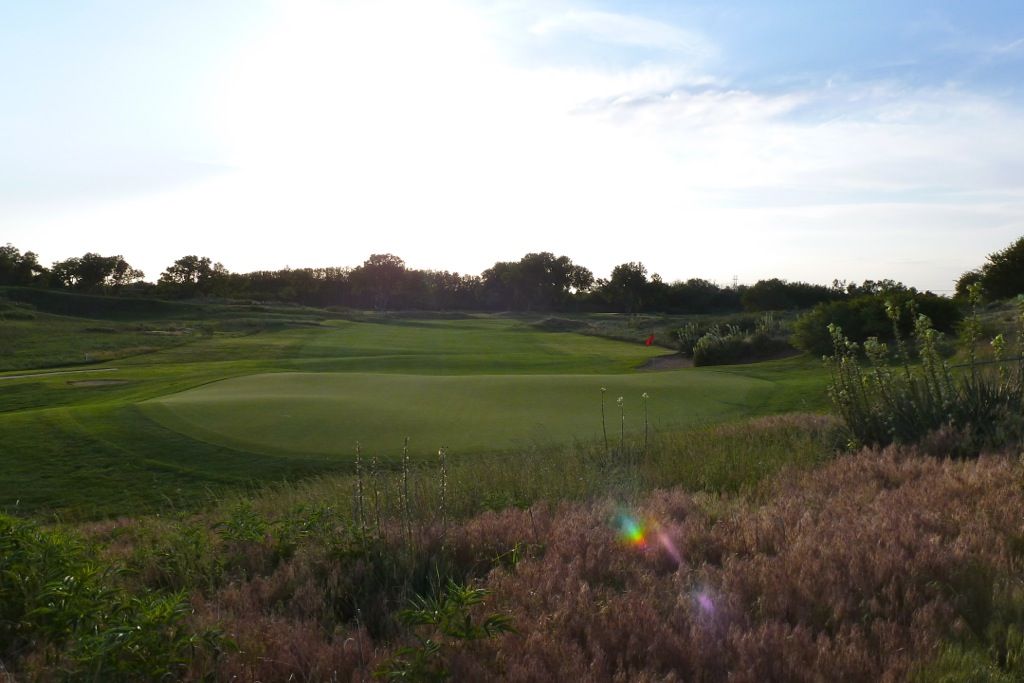
Hole 14: Par 4, 370 Yards
Another free-form tee box on the 14th (though per Mr. Kelly this one's on its way out as well). The ideal line from the tee will vary based on the wind and one's carry distance. The flag lay clearly in view, tempting the golfer to cut-off perhaps more than he should (aka the line of charm). Deceptively, it is nearly 250 yards just to reach the first bunker on the left and as such, most golfers would be well served to aim well to the right of there.
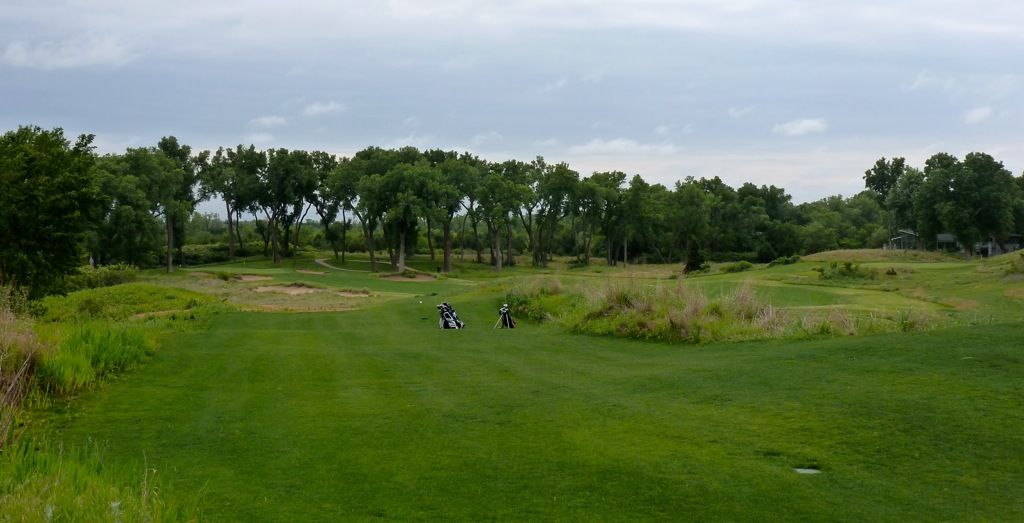

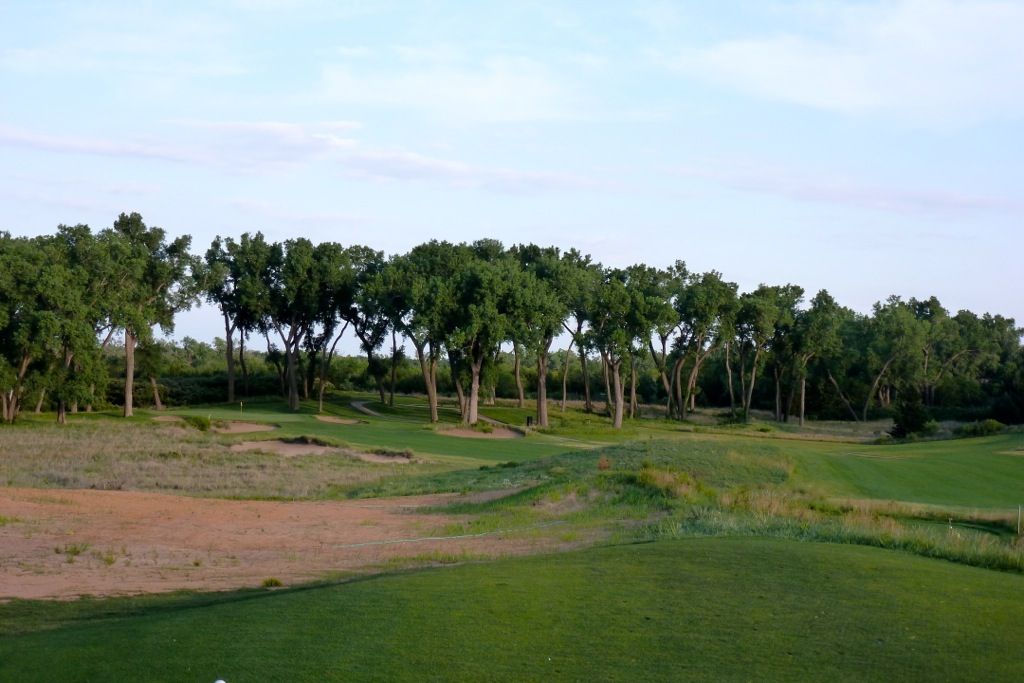
A closer look at the fairway bunkering and the DZ:

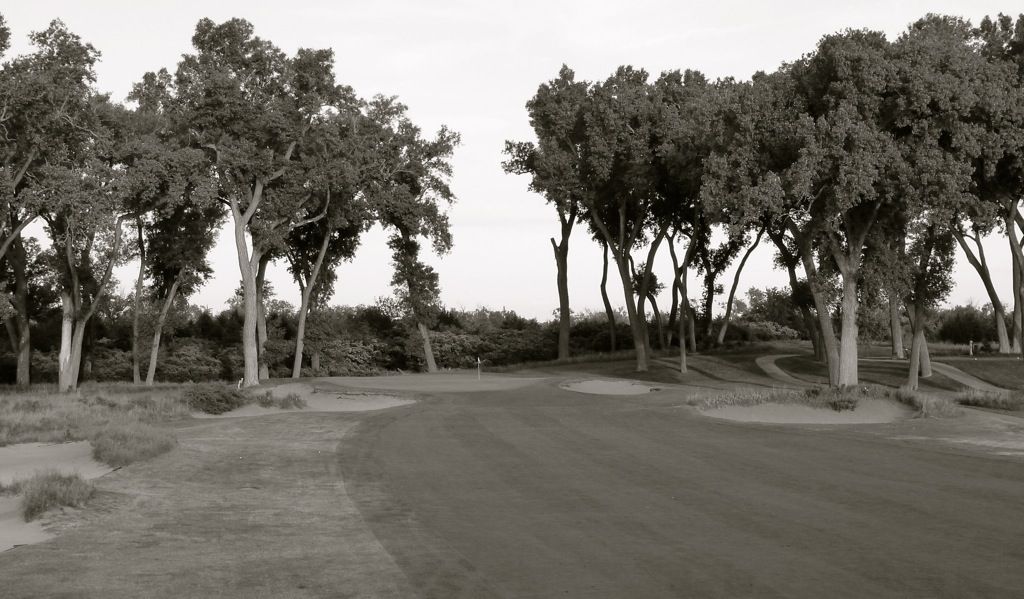
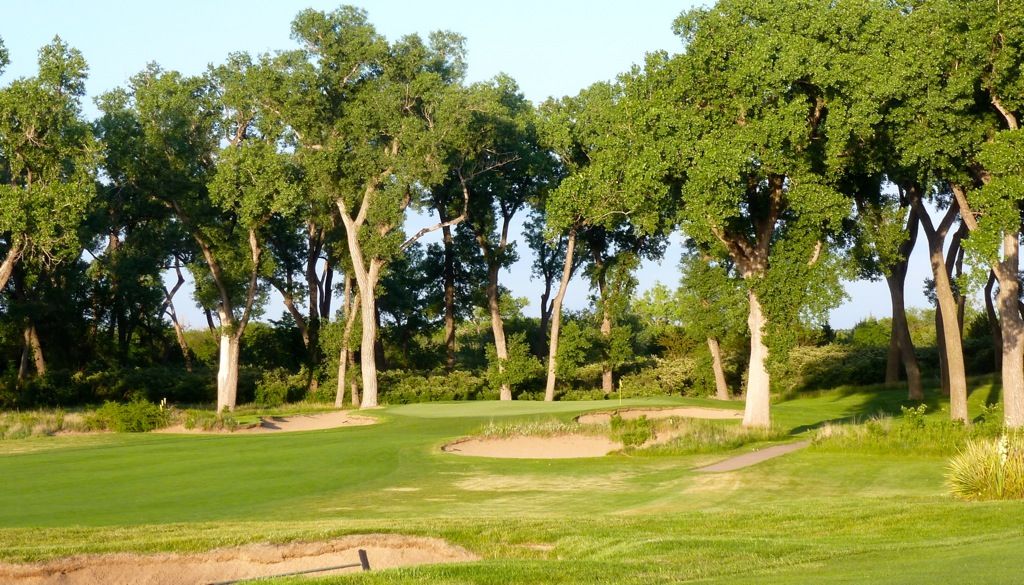
As long as the fairway is found the approach is really one of the simplest on the golf course. Unlike many of the greens at PD, the 14th lay closer to grade and a fairly wide gap is left between the bunkers to allow balls to be run onto the green.
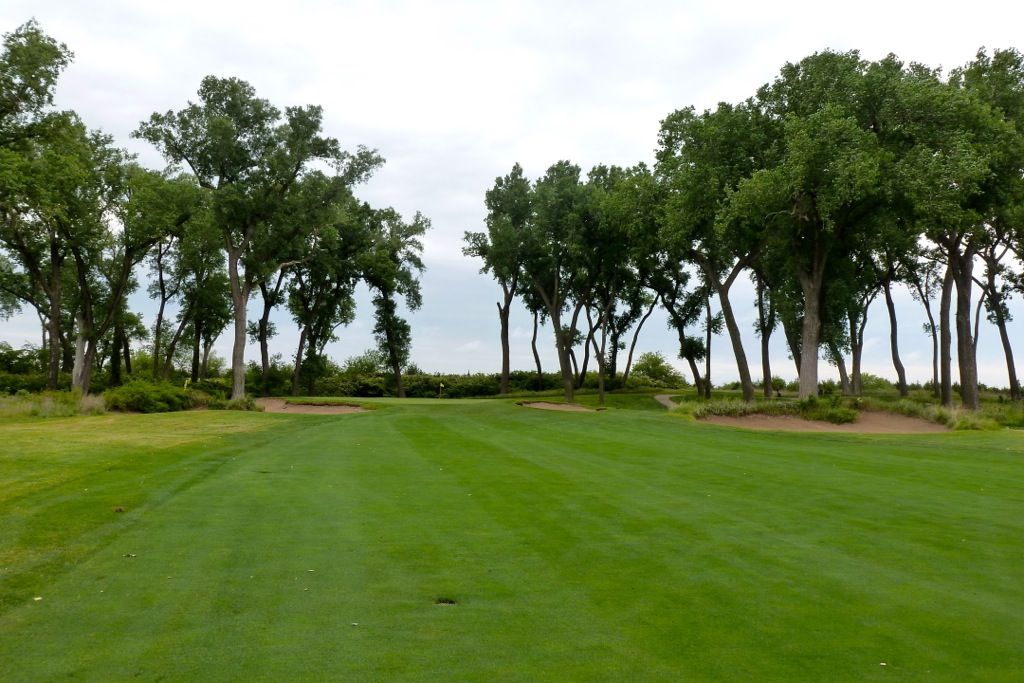
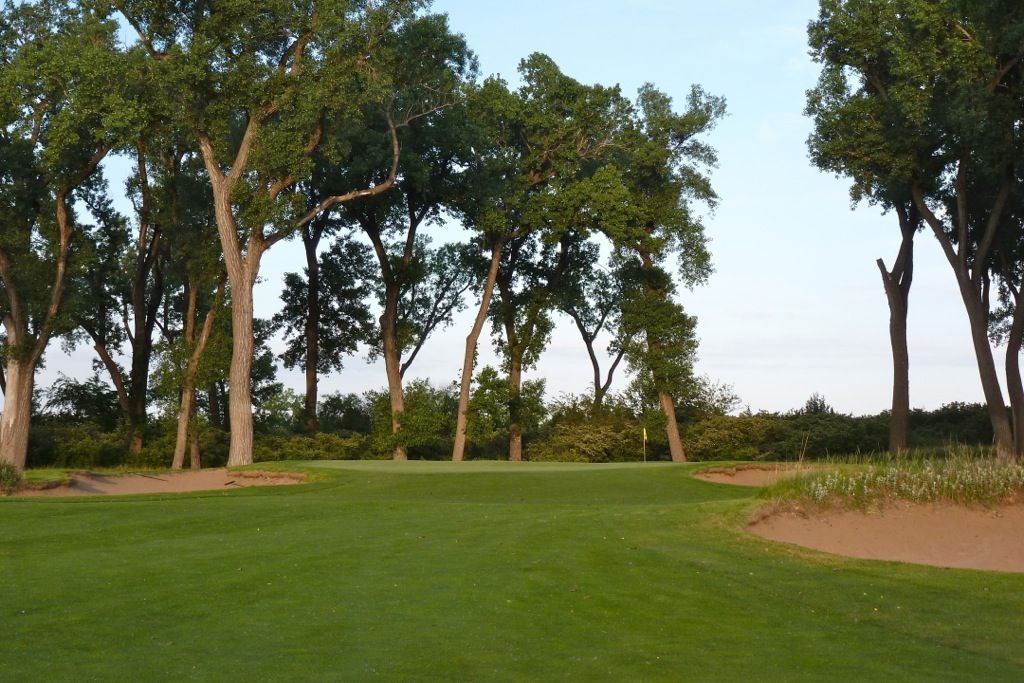
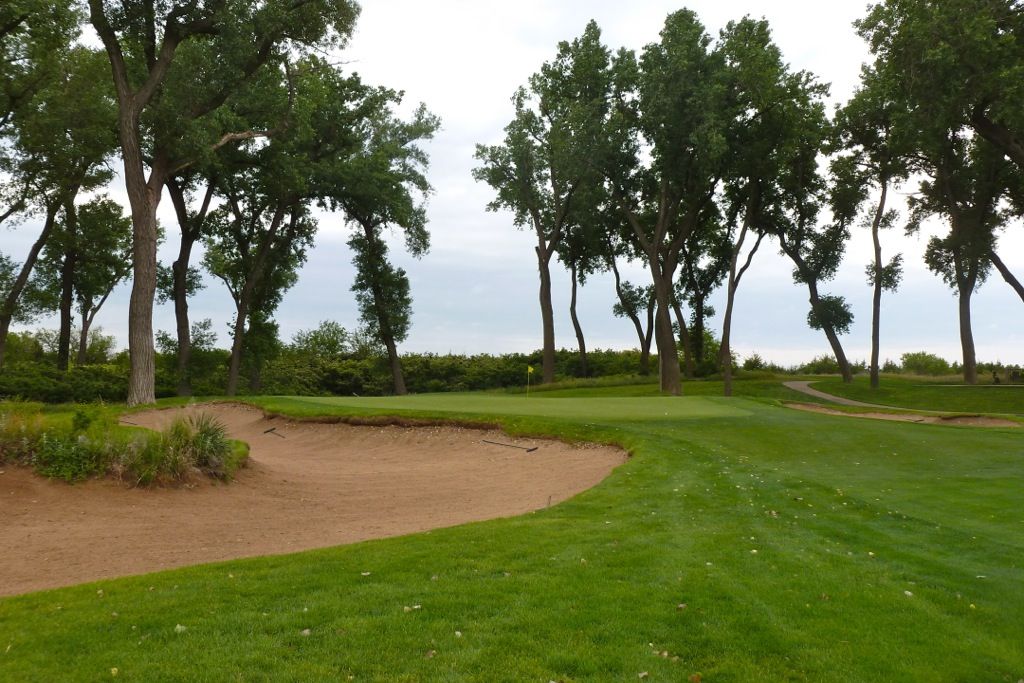
The front 1/2 of the green slopes back toward the fairway. A ridge separates the front and back portions of the green and a small bowl is formed in the back-right portion of the green (the pin pictured). Really not one of my favourite greens at PD; it has a more formulaic feel to it than many of the other greens with their (seemingly) random rolls.
From short of the green.
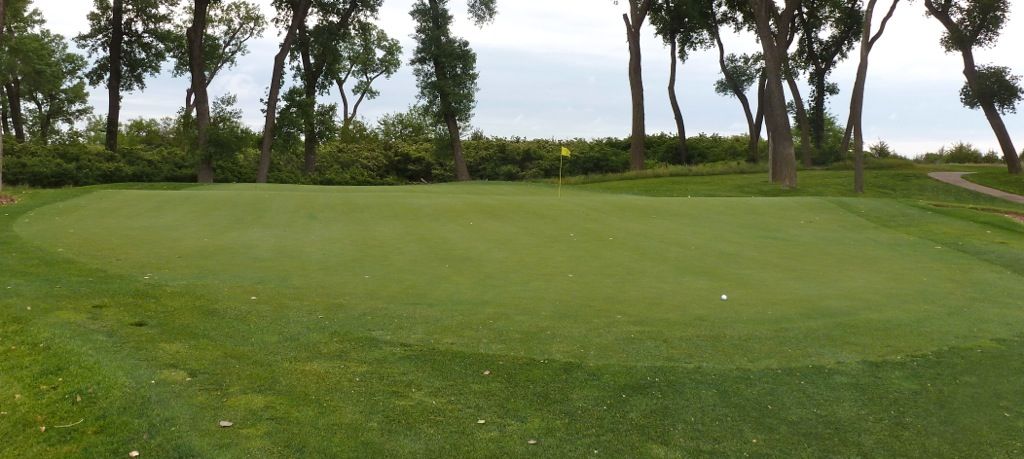
And from right of the green.
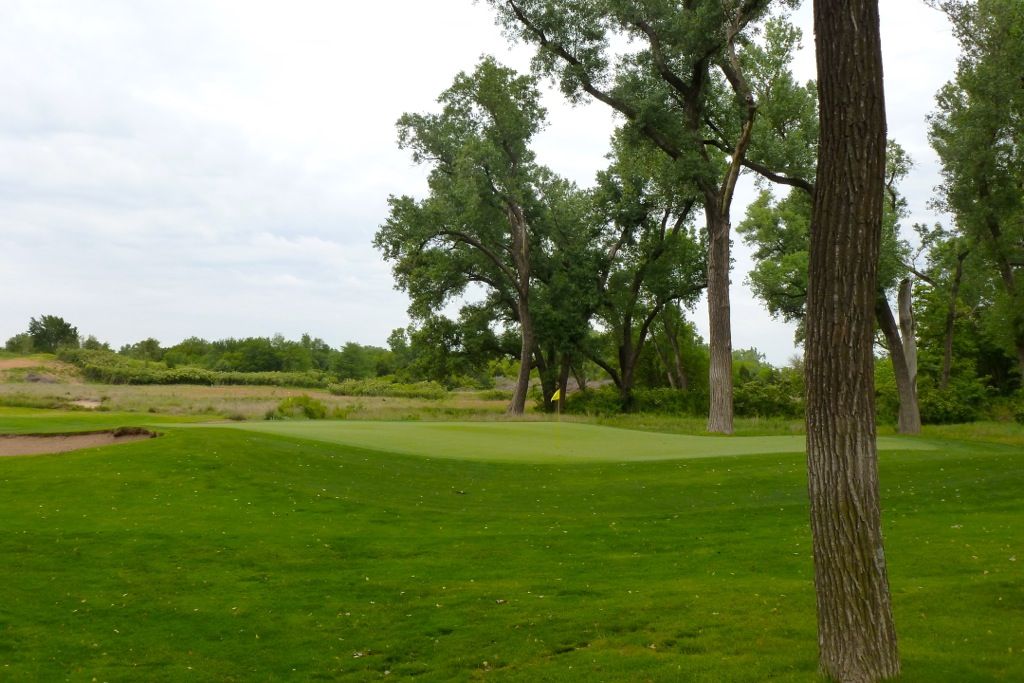
And a look back at the 14th:
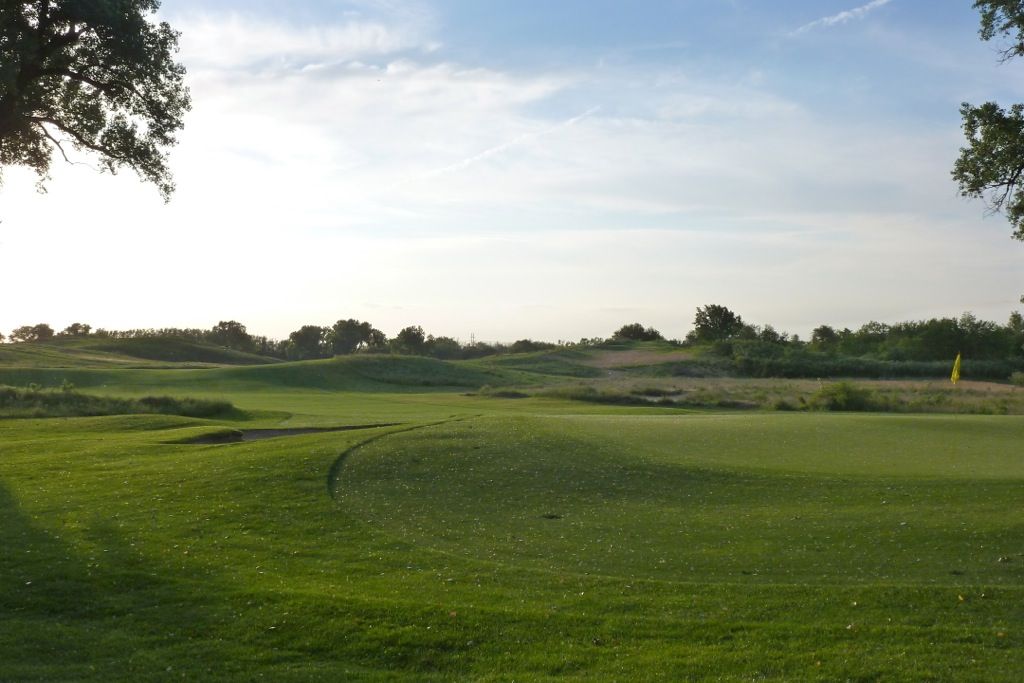
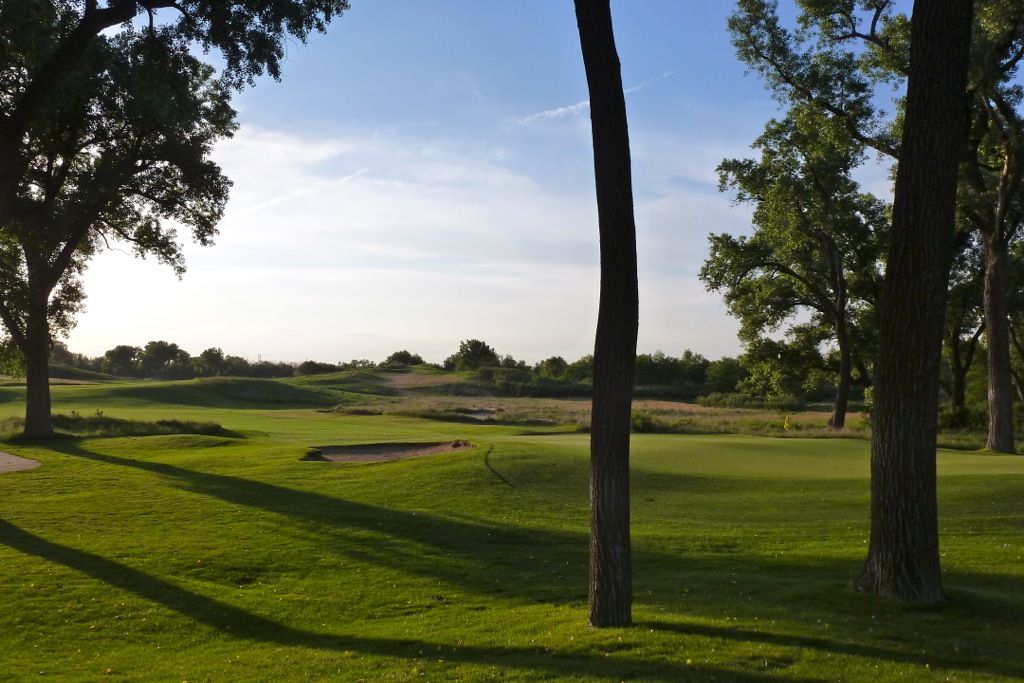
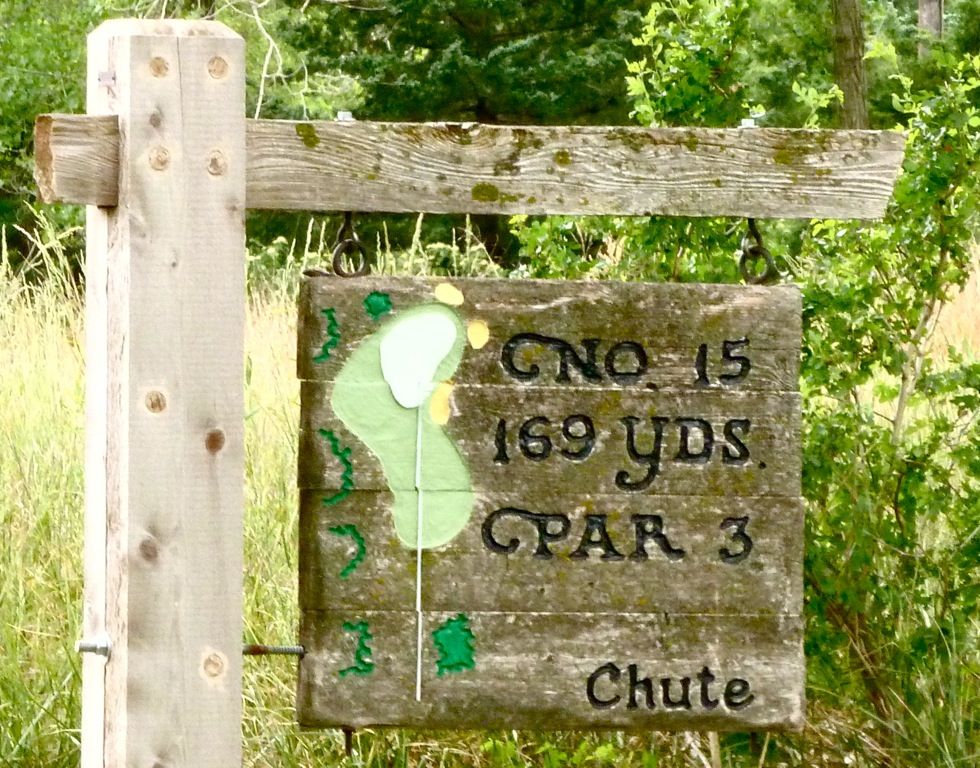
Note: Gold tee now plays 200 Yards
Though the 15th has the biggest green on the golf course, playing uphill through a chute one feels as though he is playing to a tiny (and very difficult to hit) target. The ledge short of the green combined with the bunkering short and long of the green give the impression that there is no room to miss, but there is...some
Tee View:
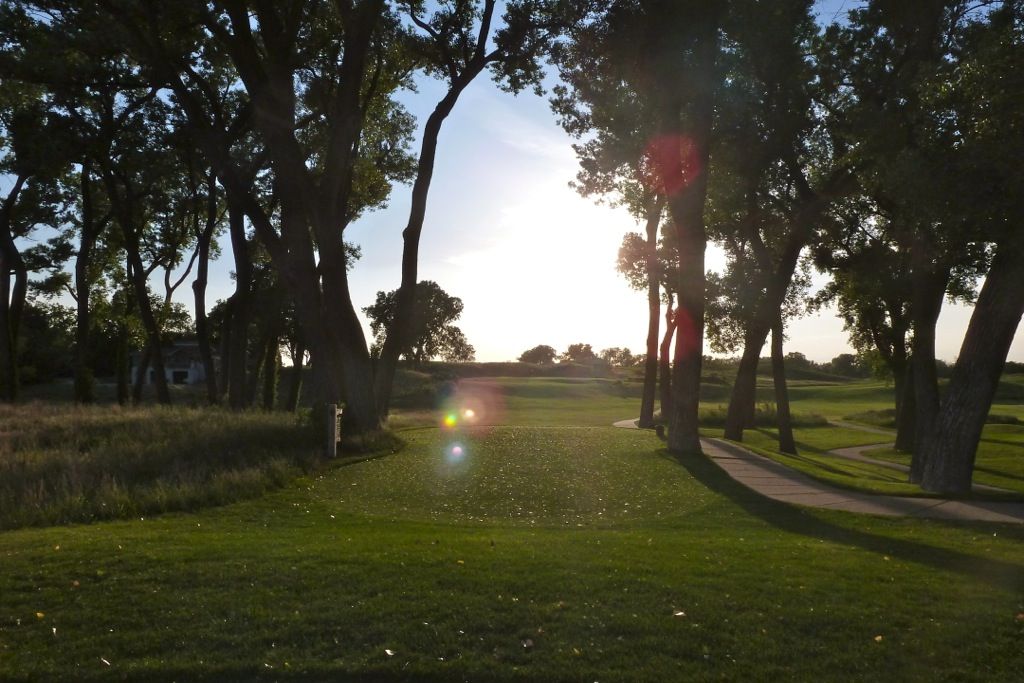
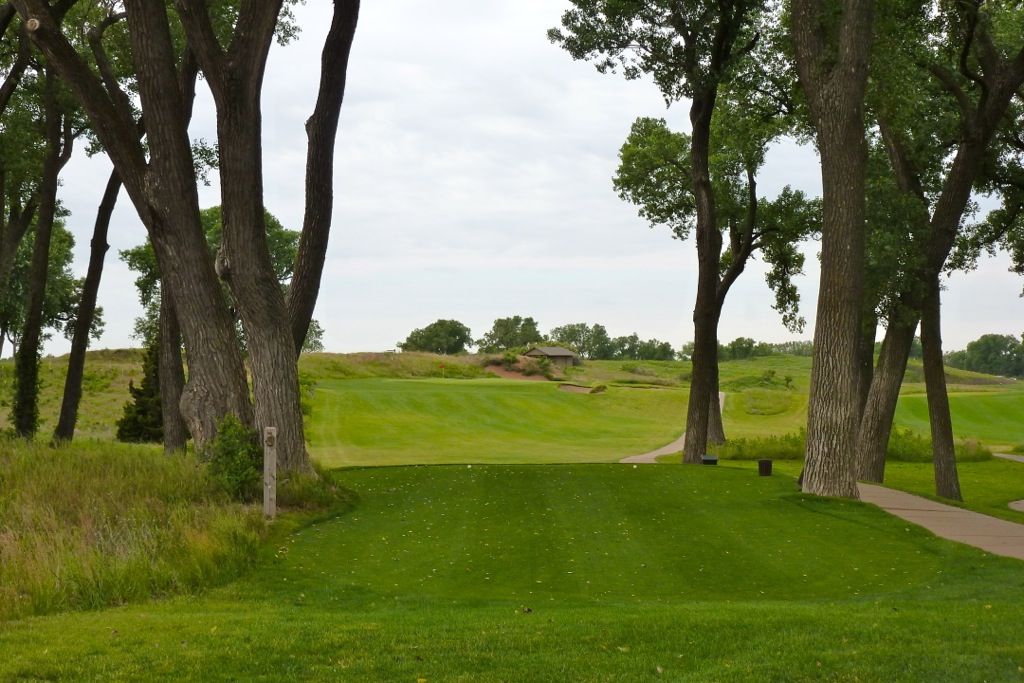
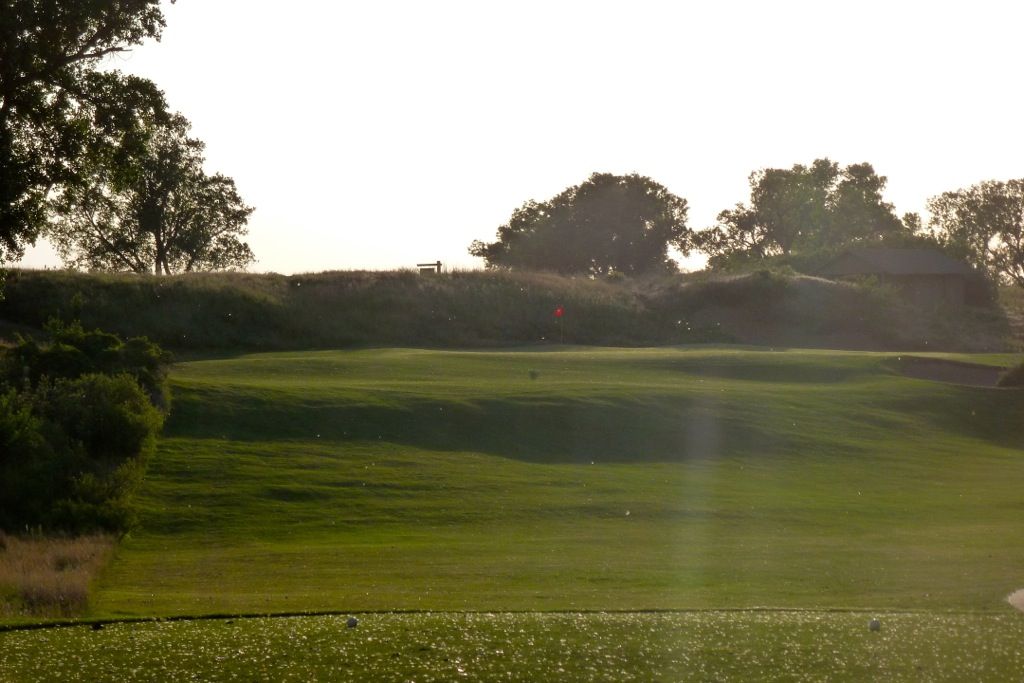
Green from right:
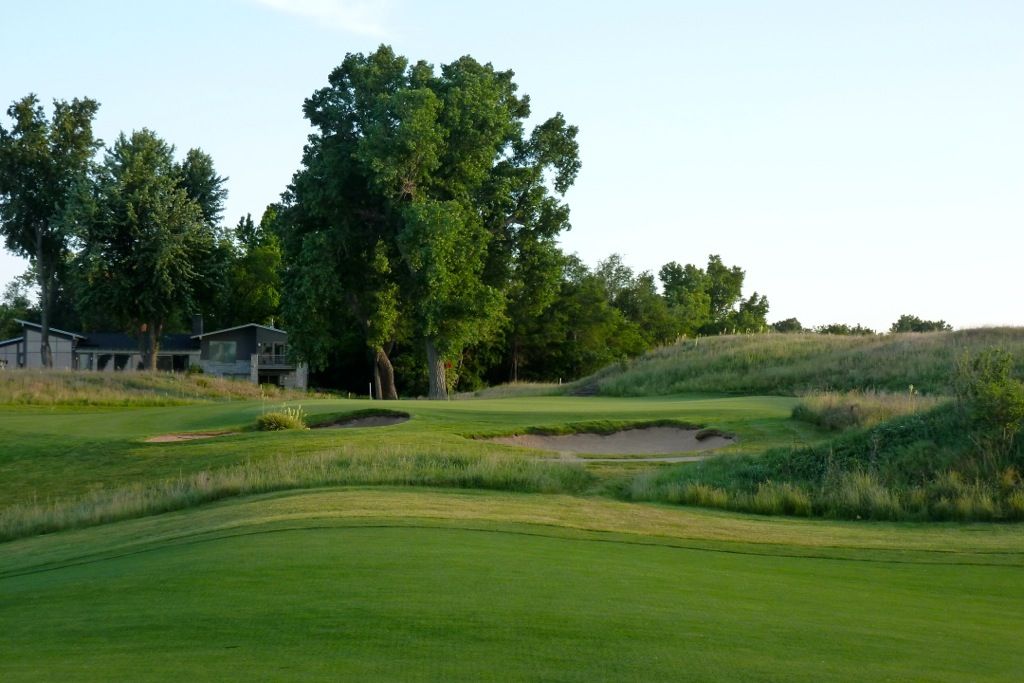
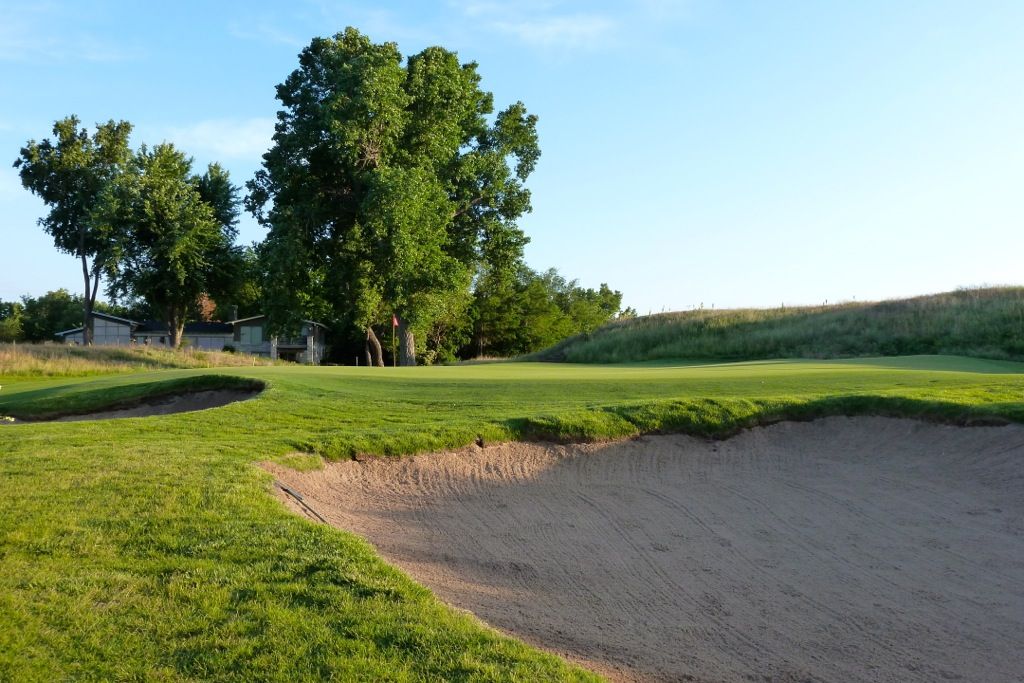
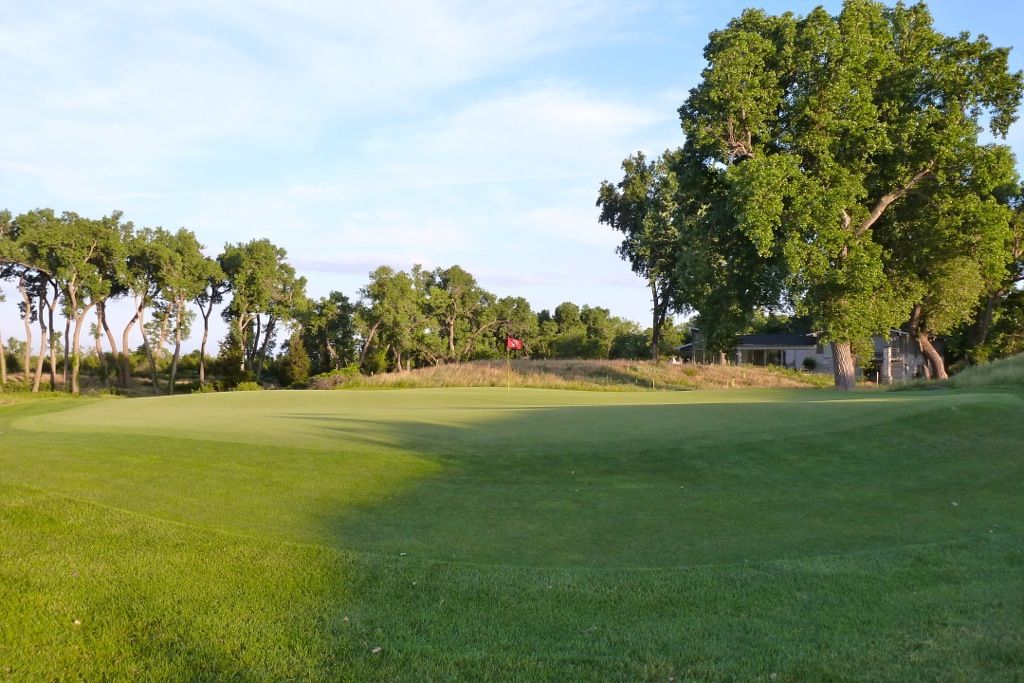
Green from left:
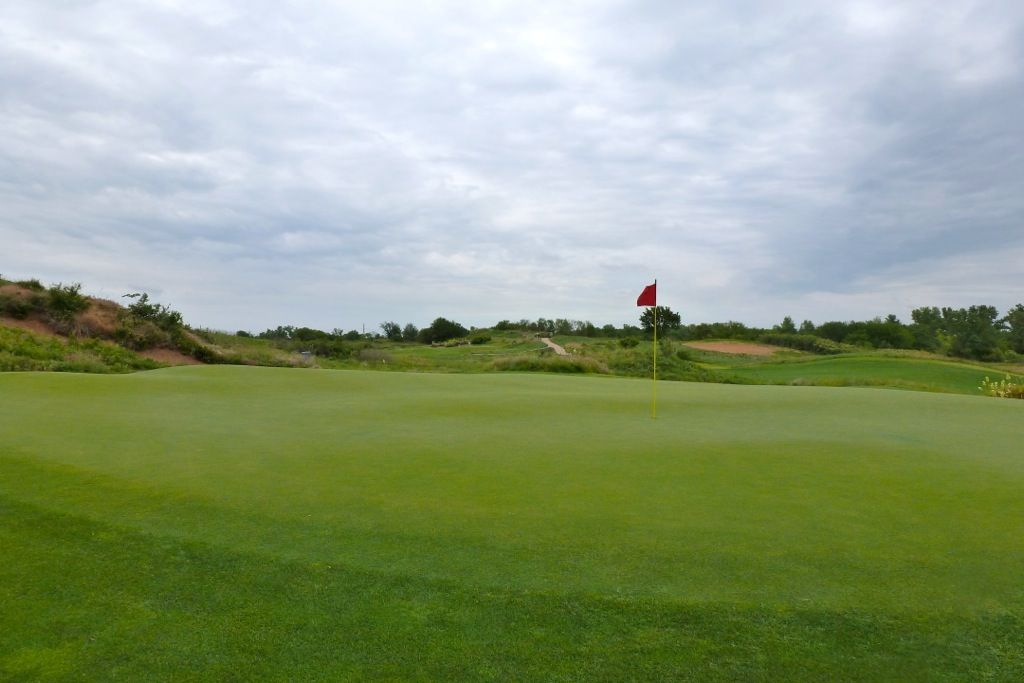


Green from behind:
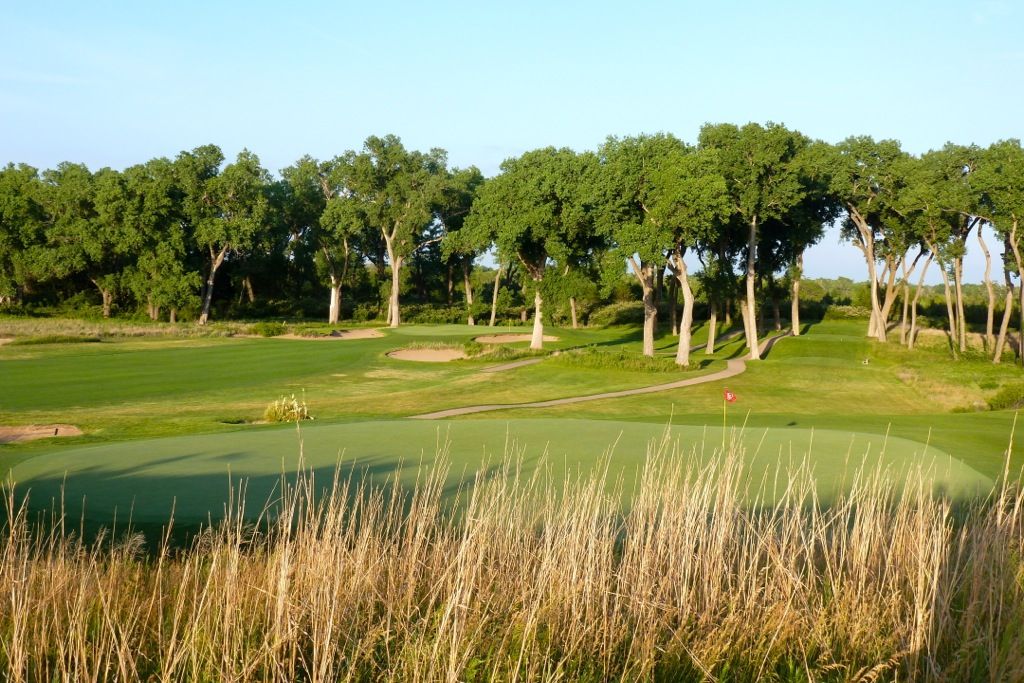
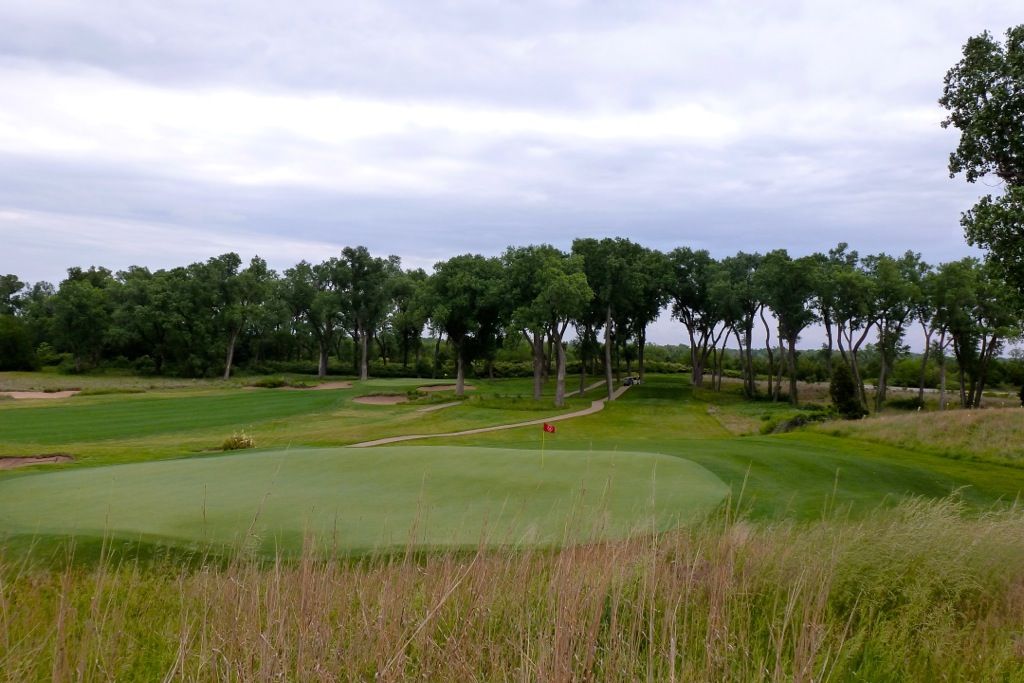
Hole 16: Par 4, 415 Yards -- Blue Stem
The gold and blue tees play nearly the same yardage, but with the gold set some 20 yards farther right, the angle of the tee shot is very different -- while the blues play a straightaway hole, the gold tees play to a fairway that lay at a diagonal to the teeing ground.
It is 280 yards to the bunker on the right and almost 300 yards to the bunker to the bunker on the left, and if the wind is into (as it usually is) the bunkers are unreachable.
Back Tee View:
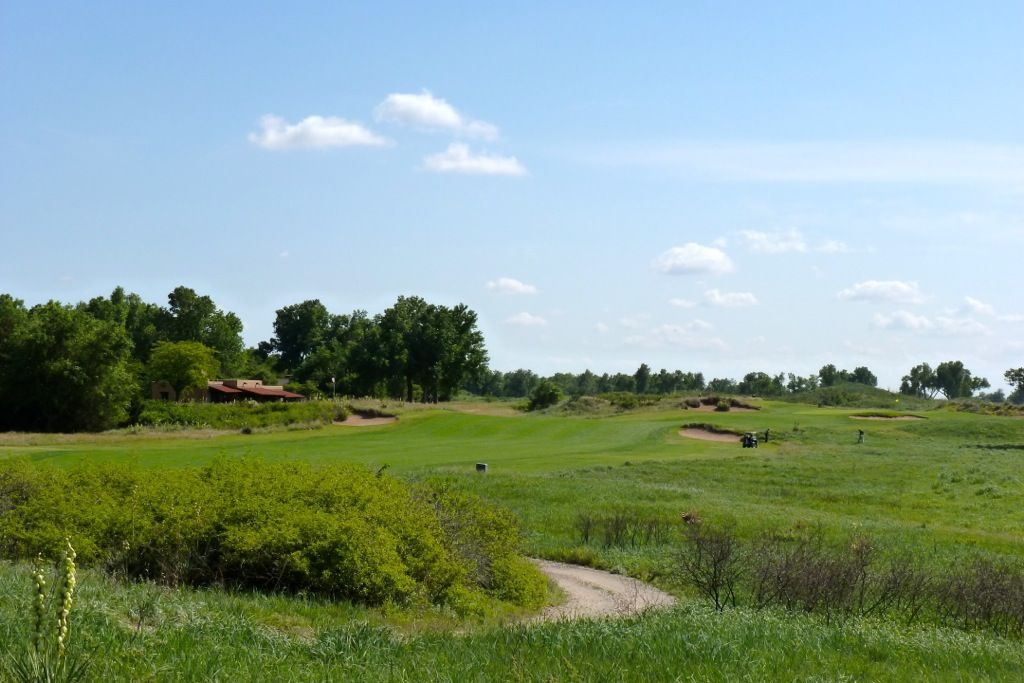
Blue Tee View:
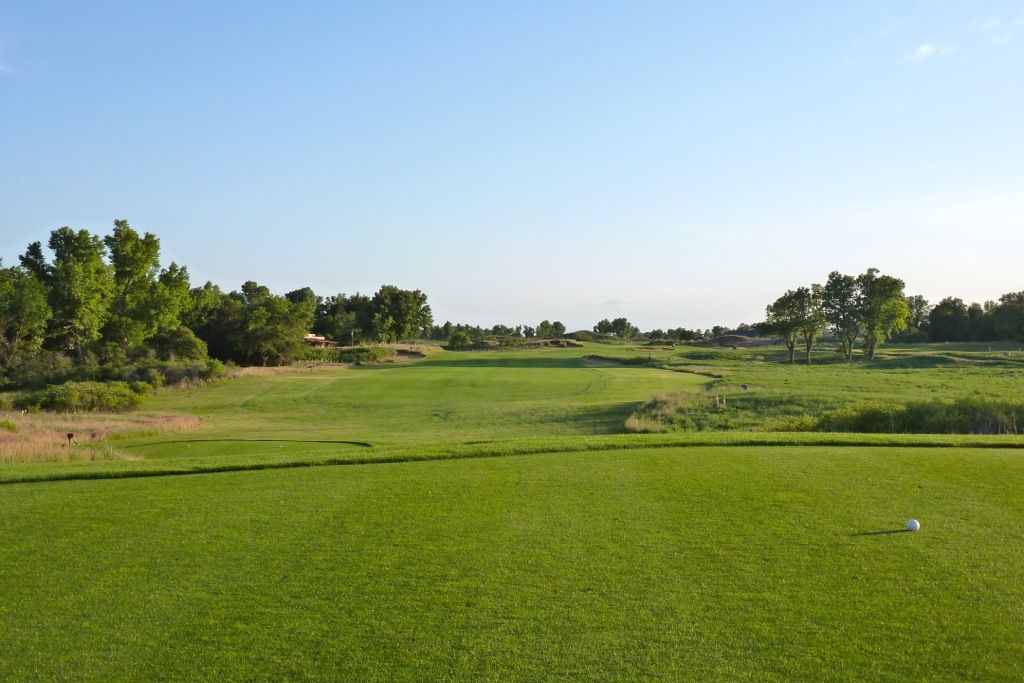
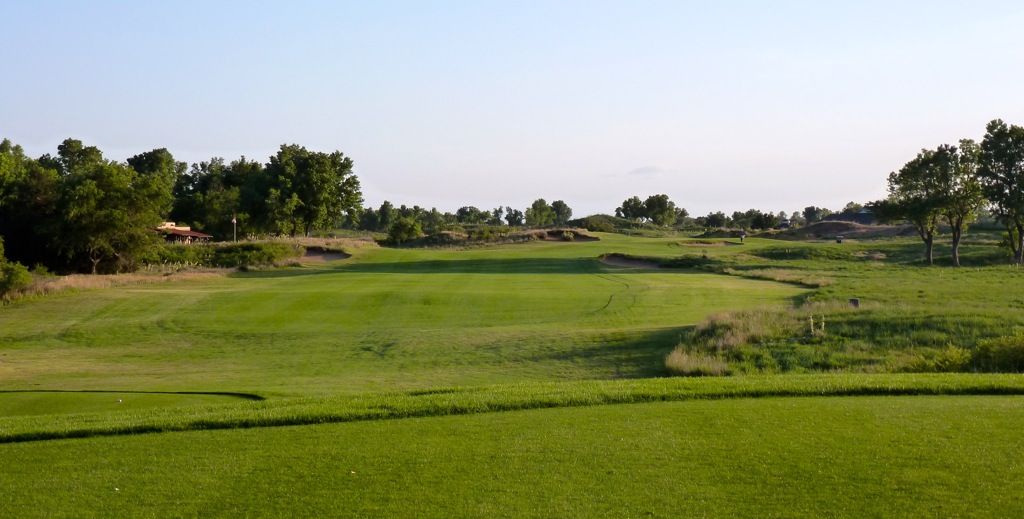
With the flag in clear view from the tee, the golfer may be tempted to play to the right side of the fairway; however, the preferred line into the green on this dogleg right par-4 is from the outside of the dogleg (a trait common to messers Maxwell and Maxwell). From the inside of the dogleg the approach is semi-blind and must be played over a green side bunker.

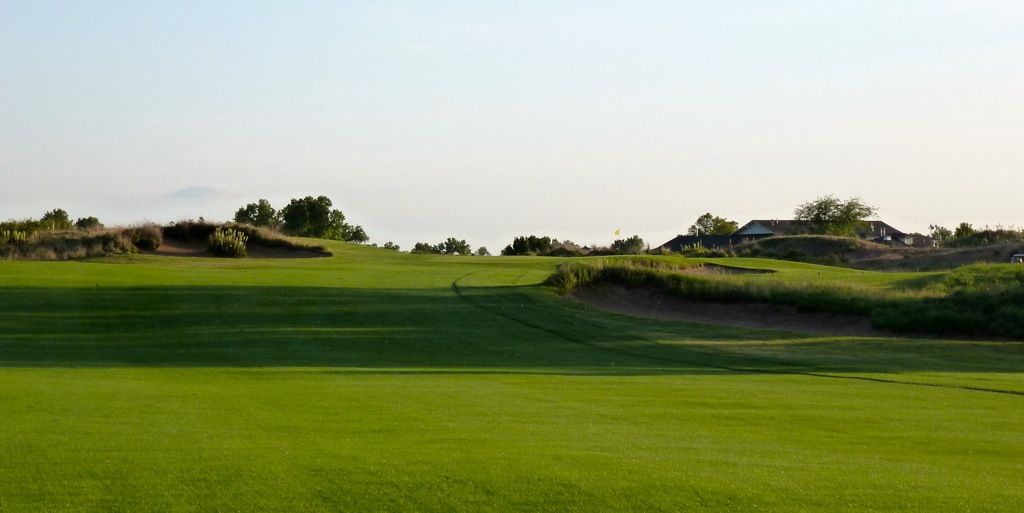
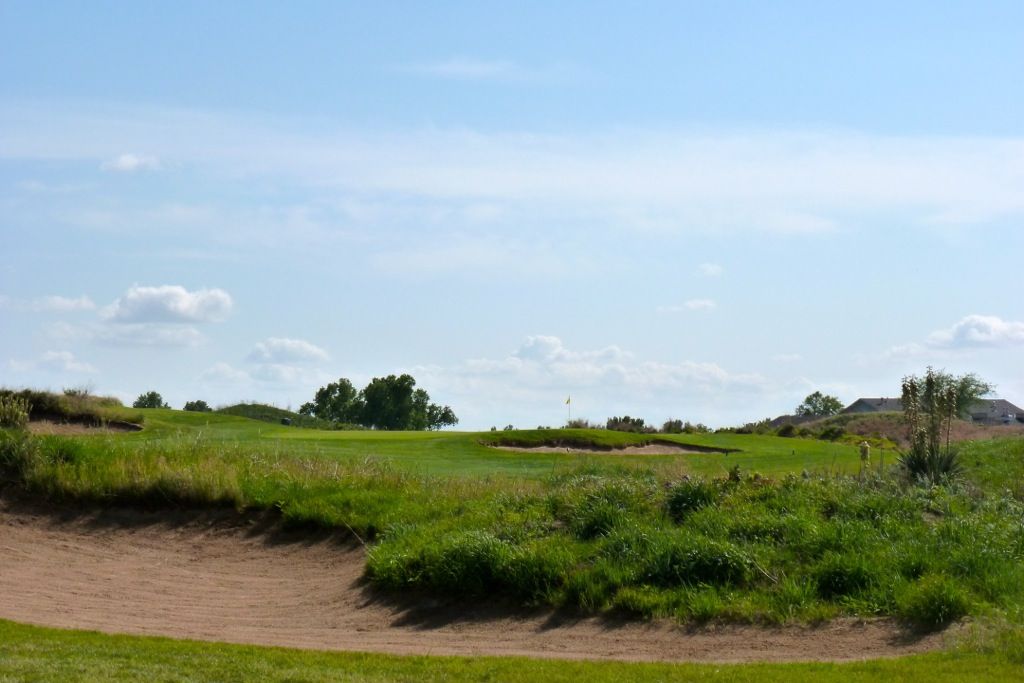
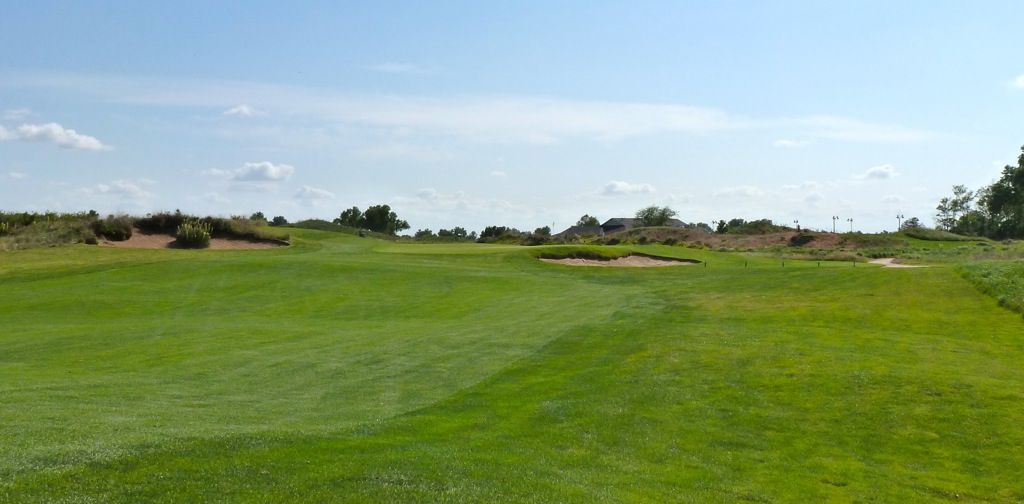
From the outside of the dogleg the golfer has the option of running the ball onto the long and narrow 16th green.
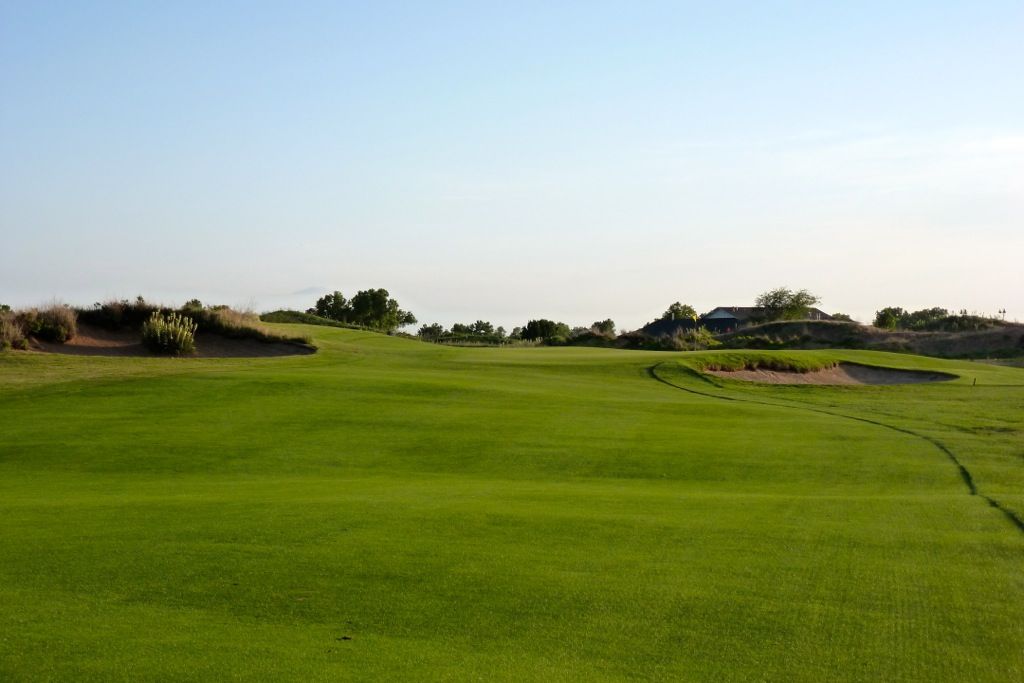
Contouring on the 16th green is somewhat more subdued than the contouring on most other greens at Prairie Dunes. A ridge running along the left side of the green allows a thinking golfer to reach a back-right pin without challenging the bunker/runoff on the right.
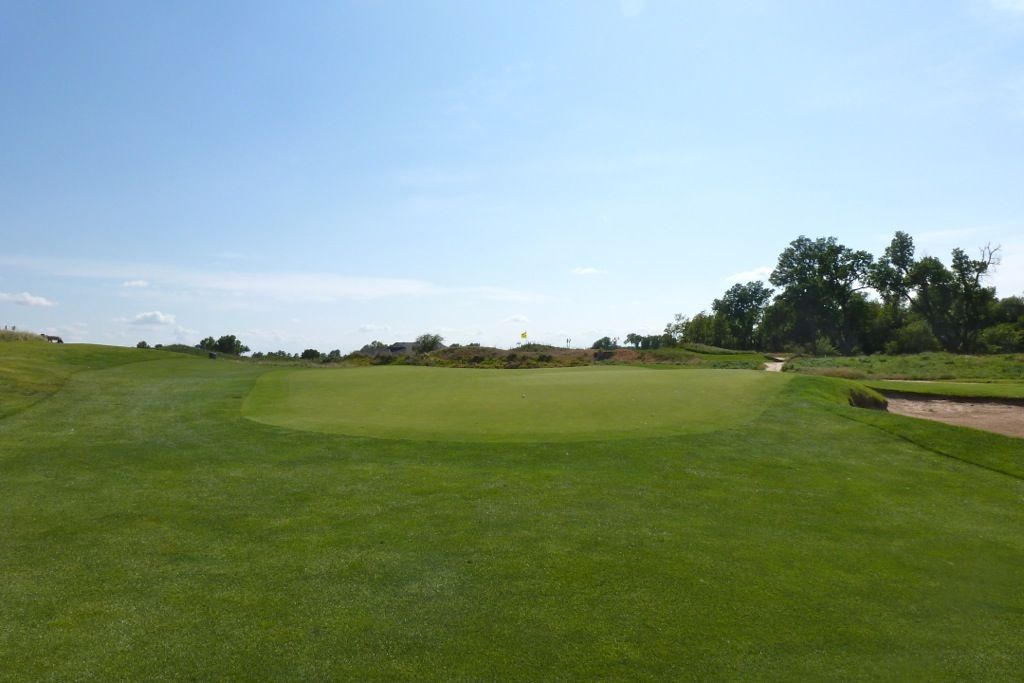

Shots missing right will find this moderately deep run-off:
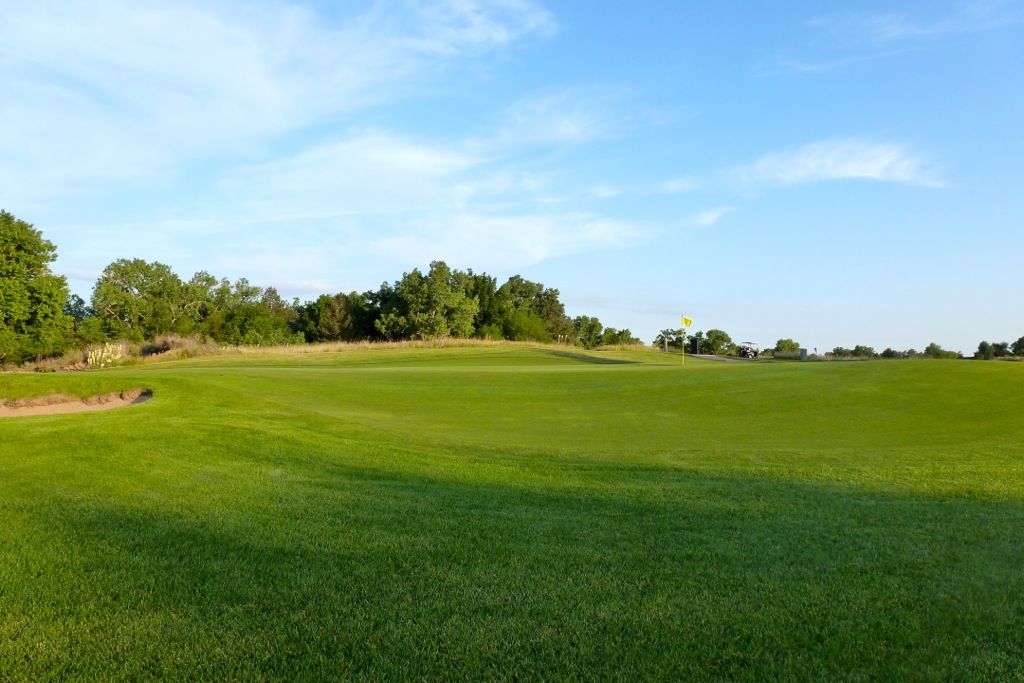

From behind:
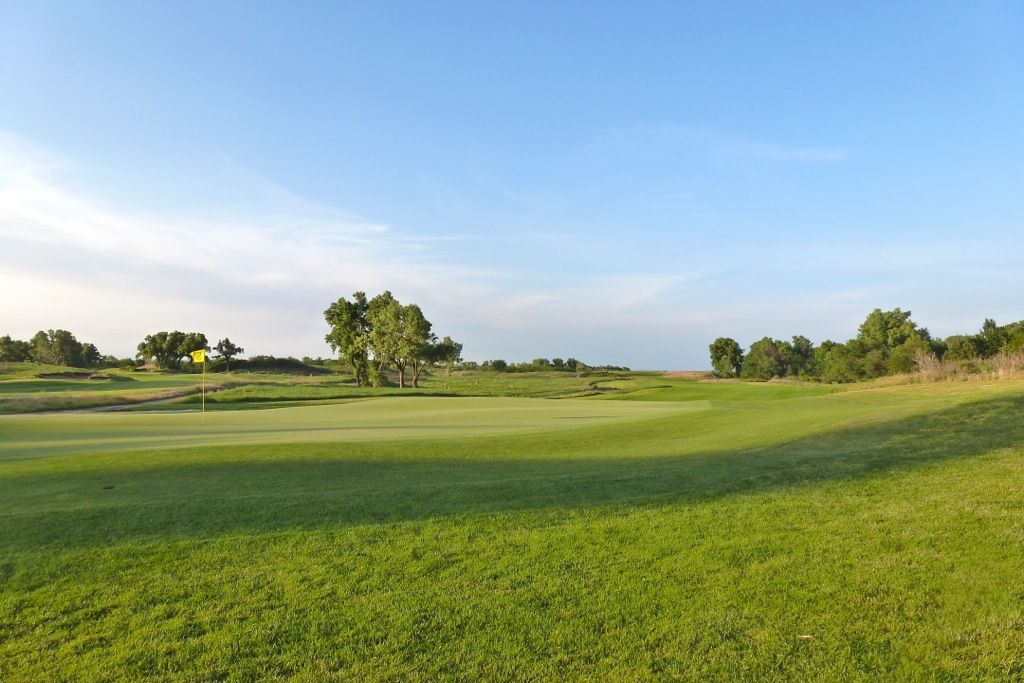
Hole 17: Par 5, 500 Yards
Playing into the wind (as the 17th usually does) the golfer plays to the widest portion of the fairway. Downwind, however, the tee shot is played to an ever-narrowing fairway.
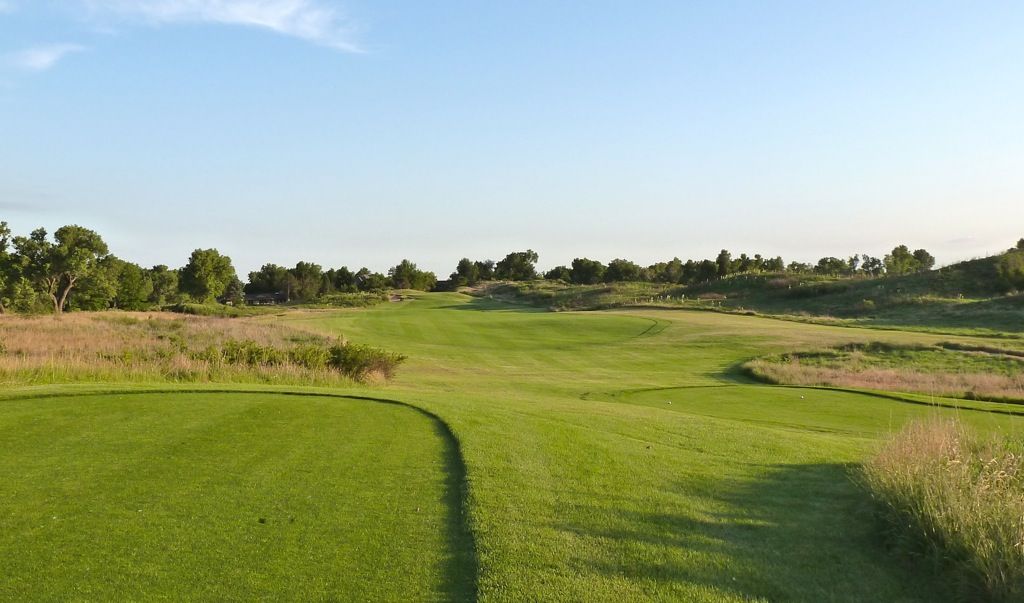
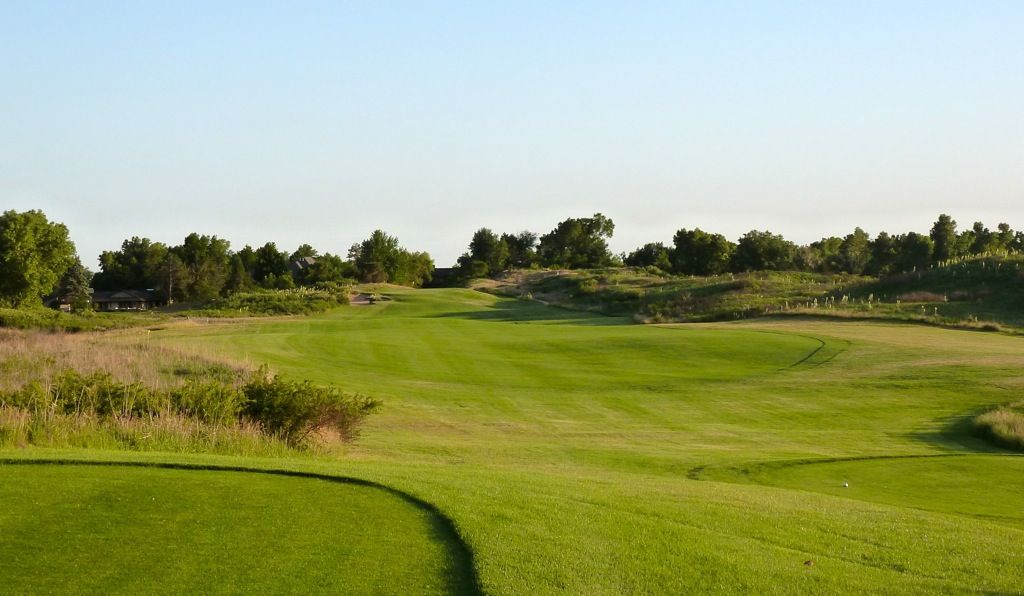
The original 17th tee (then the 8th hole) was located somewhere near the new 11th tees. The tee shot was played from a diagonal to the fairway, and, in my opinion, was a more interesting tee shot than the current iteration. The original tee shot would have looked something like this:
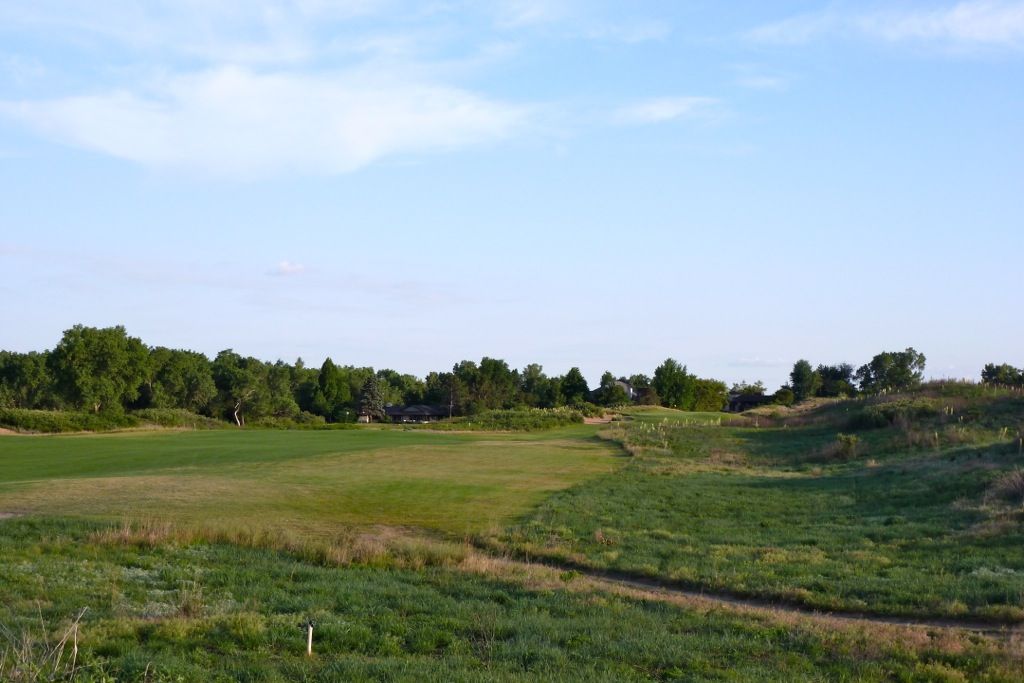
Another rolling fairway at the 17th...

There is no water, no out-of-bounds and only a single bunker, but this is one of the most well-protected greens I have ever seen. As a result, few golfers choose to challenge this green in two, preferring to lay-up and leave a simple (or not) wedge to the green.

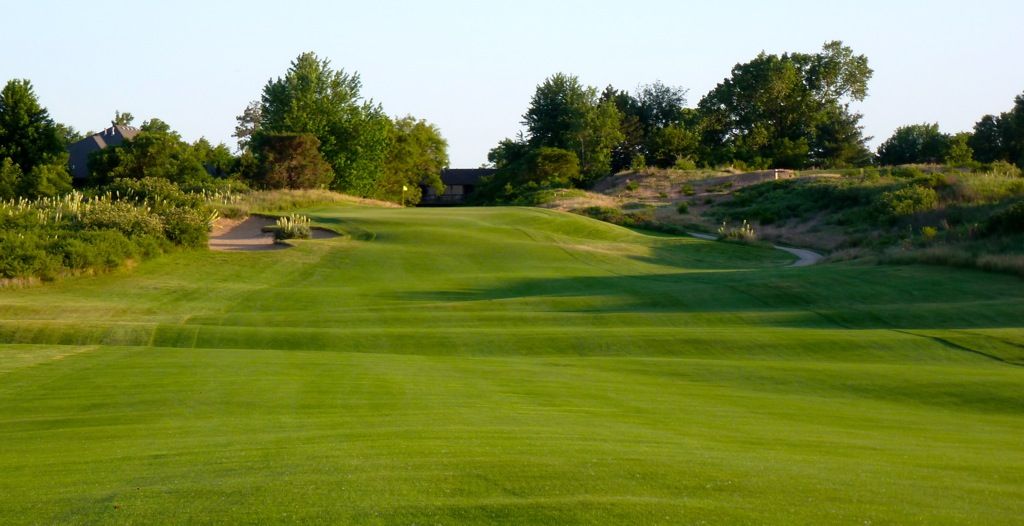
The ideal lay-up in the right side of the fairway leaves a daunting approach over a very deep gully to the right of the green. Though the ideal approach would appear to be from the left side of the fairway, the tilt of the green from back-left to front-right makes approaching from the right preferred.
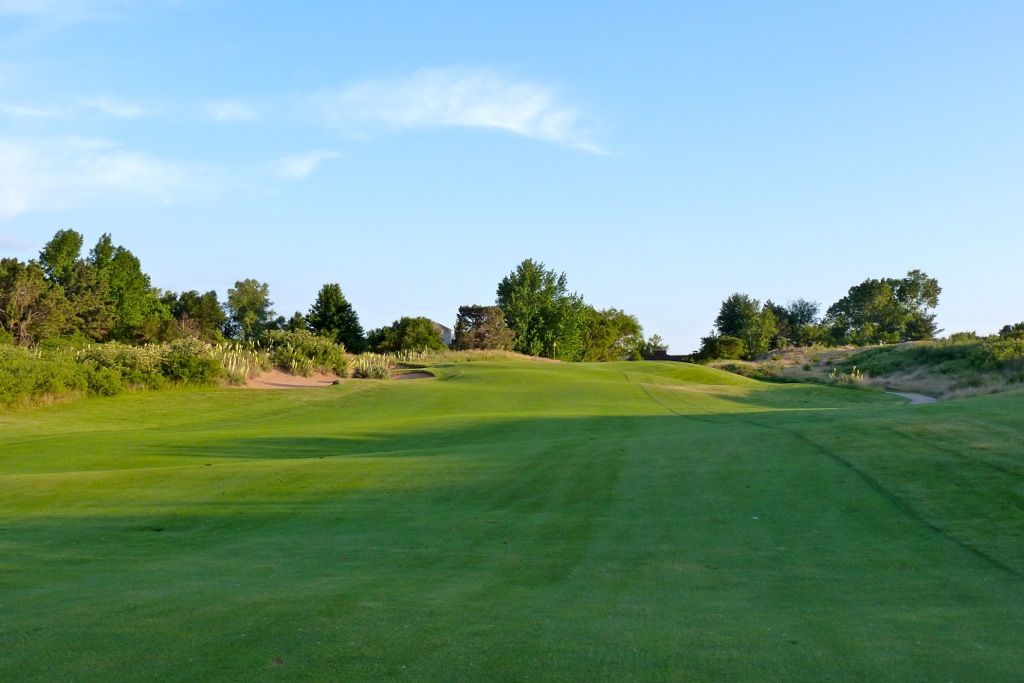

This approach from the left is more visually appealing but in practice is a more difficult shot.
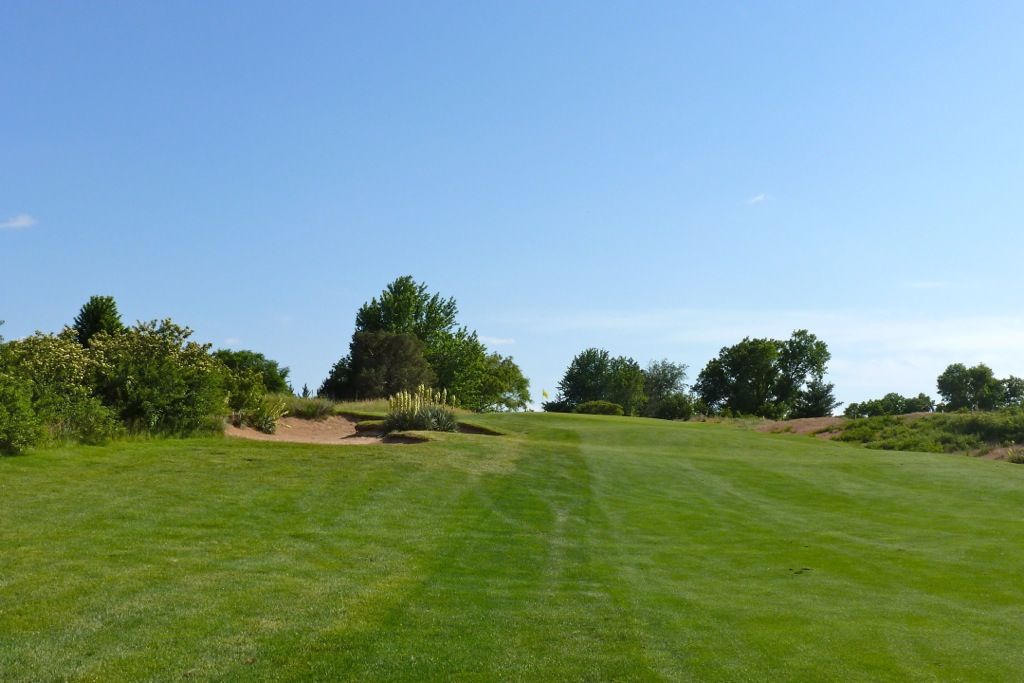
This fortunate golfer (ok, it was me) has ignored his hosts' suggestion to lay-up and has found a tiny sliver of rough short of the green. A relatively simple chip from here.
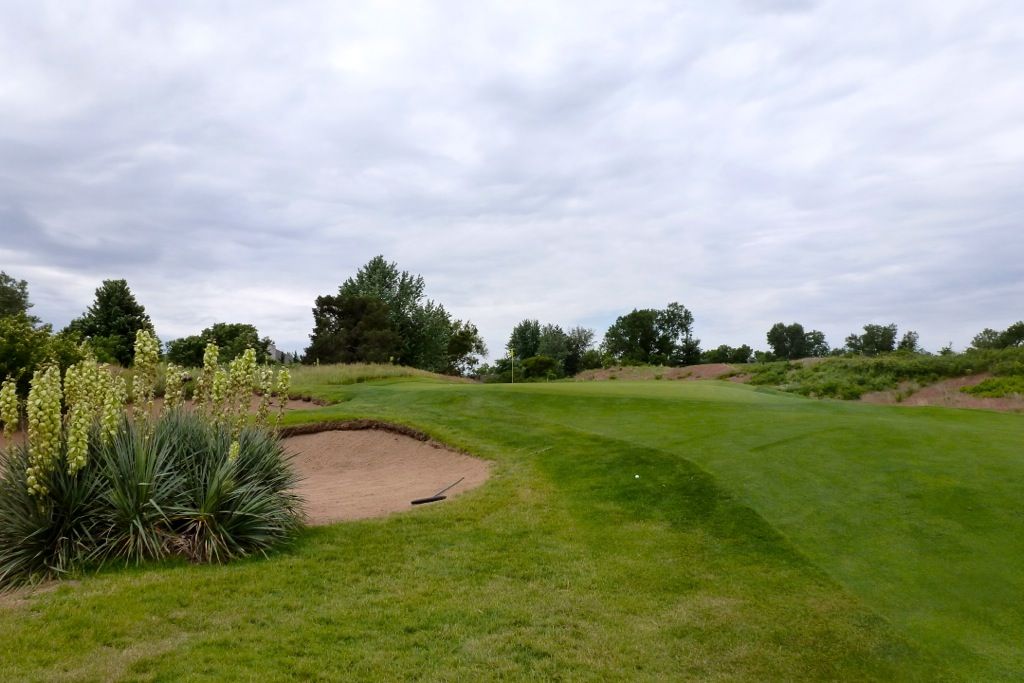
The area right of the green:
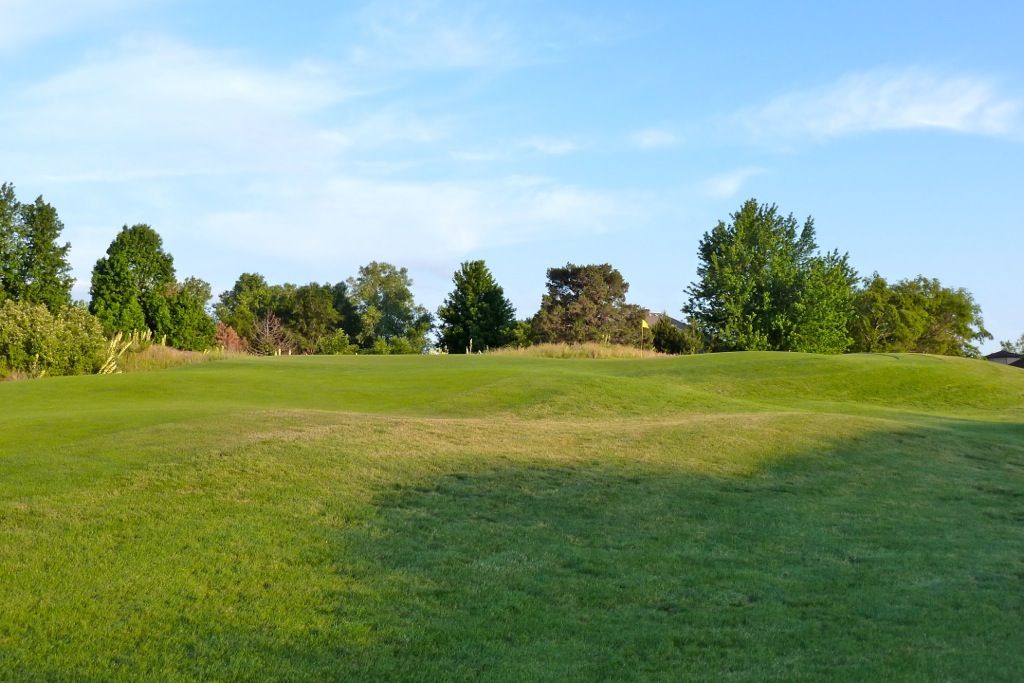
The 17th green is one of the smallest on the golf course, and because of the rounded perimeter contouring, the green feels even smaller. Shots landing near the front or right edges of the green are not long-destined to remain on the putting surface.
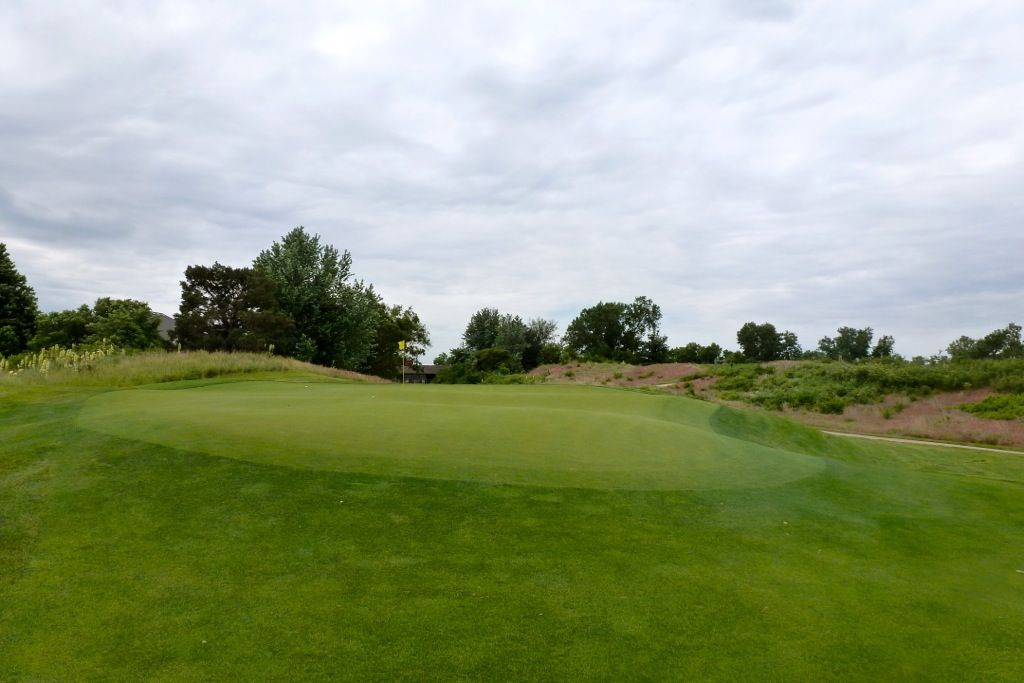
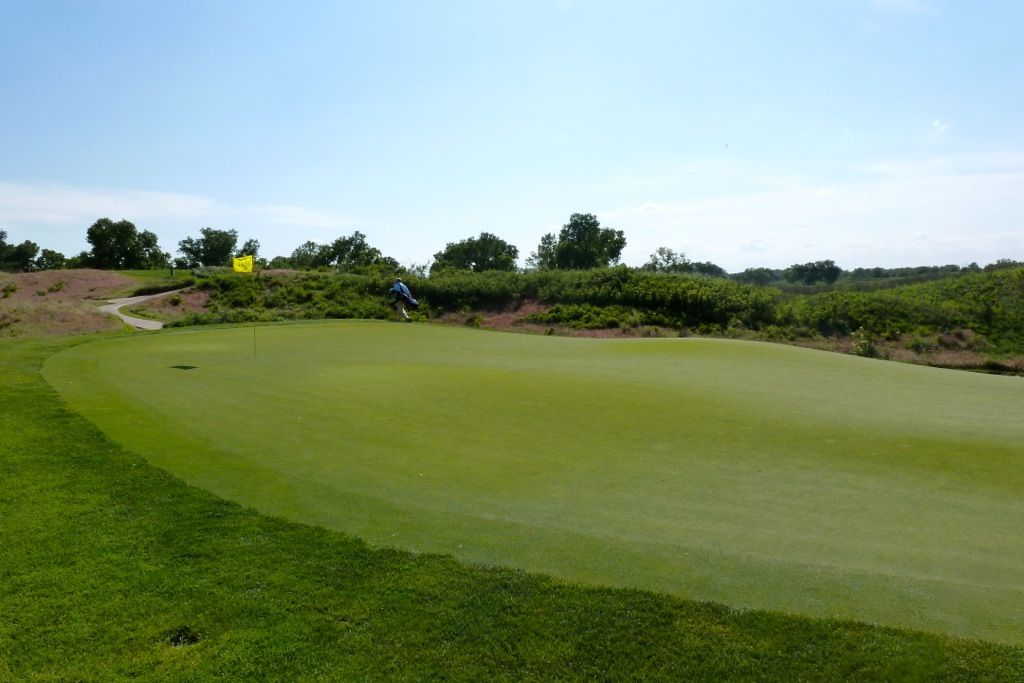
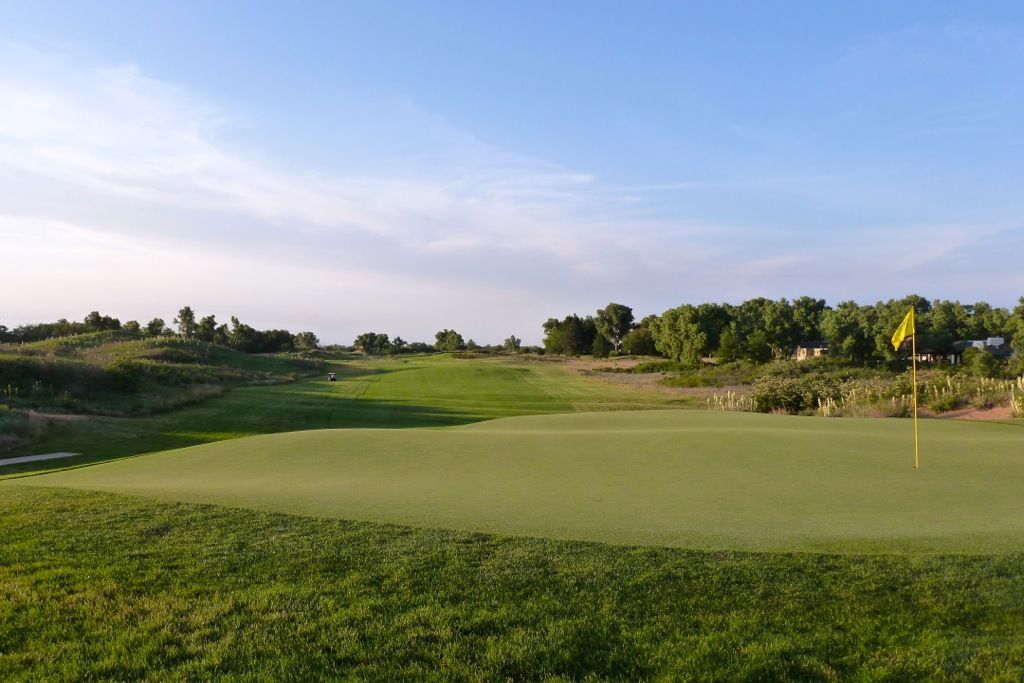
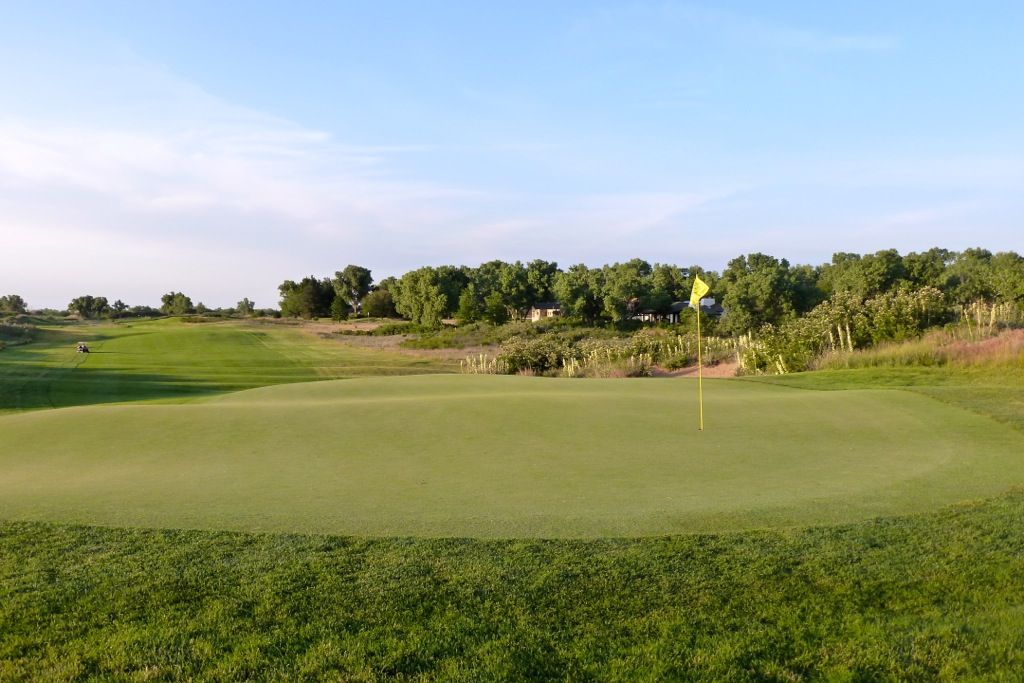


Missing long or right is no picnic either. A wonderful green and green site; certainly of a greater quality than any of the Press greens.
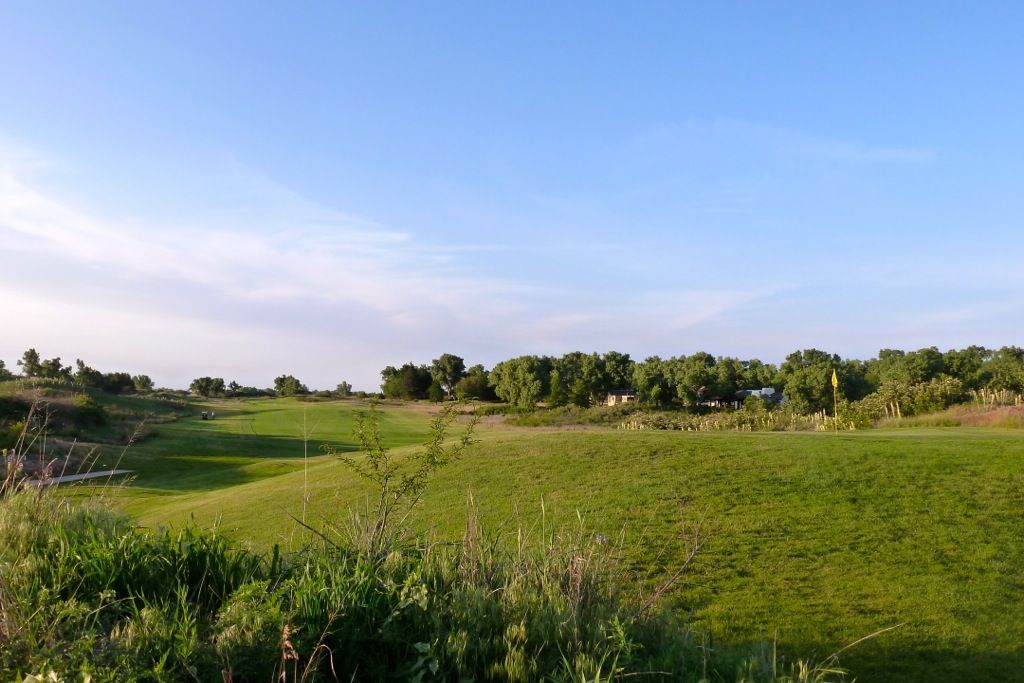
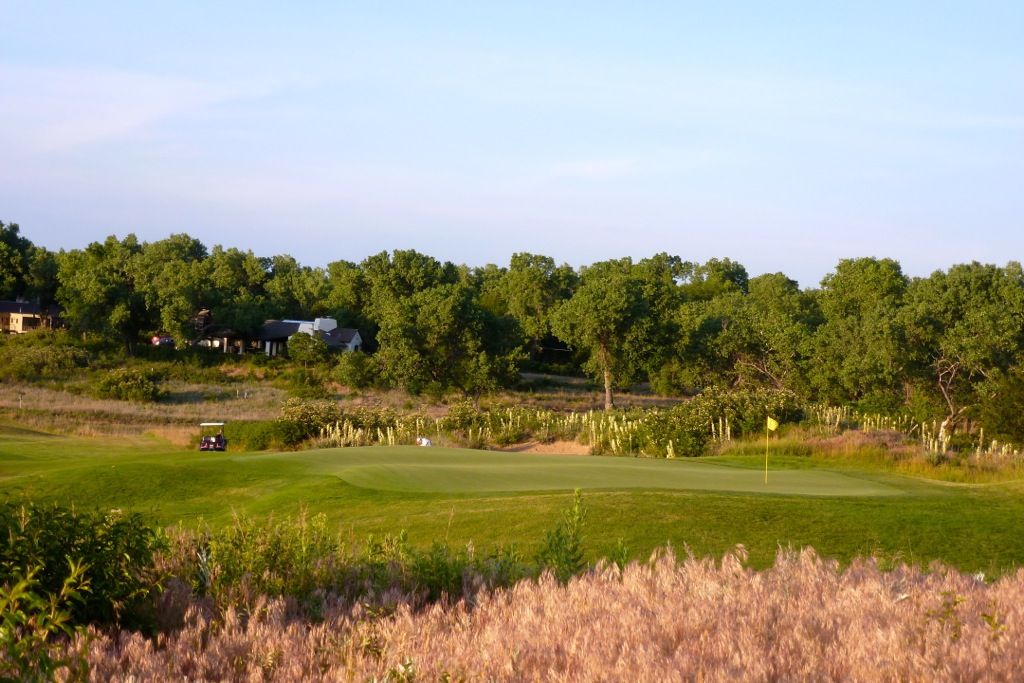
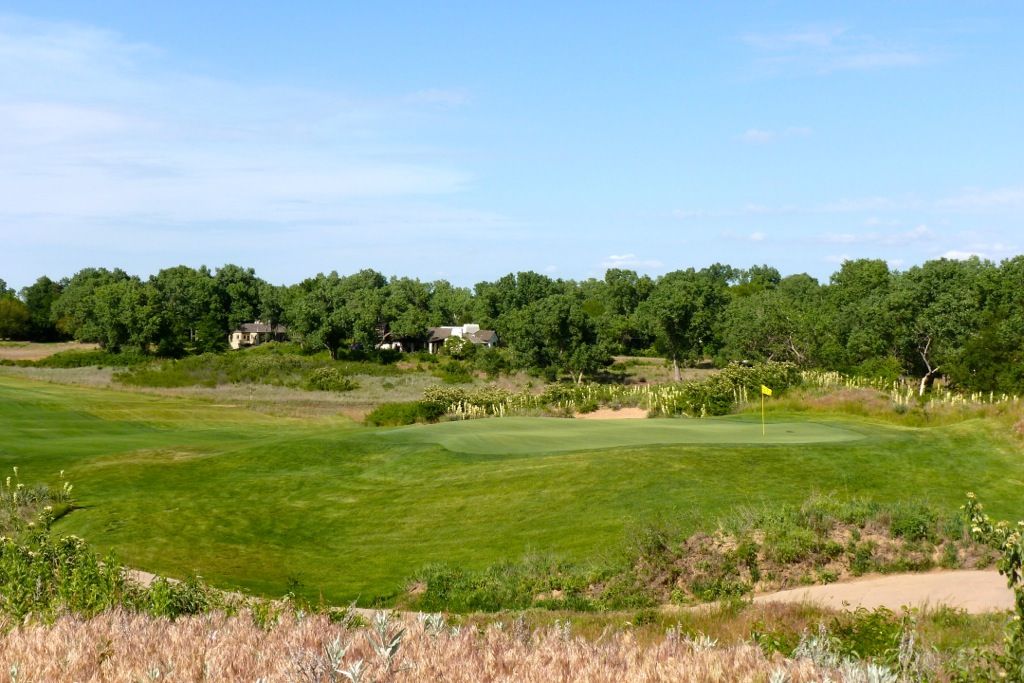
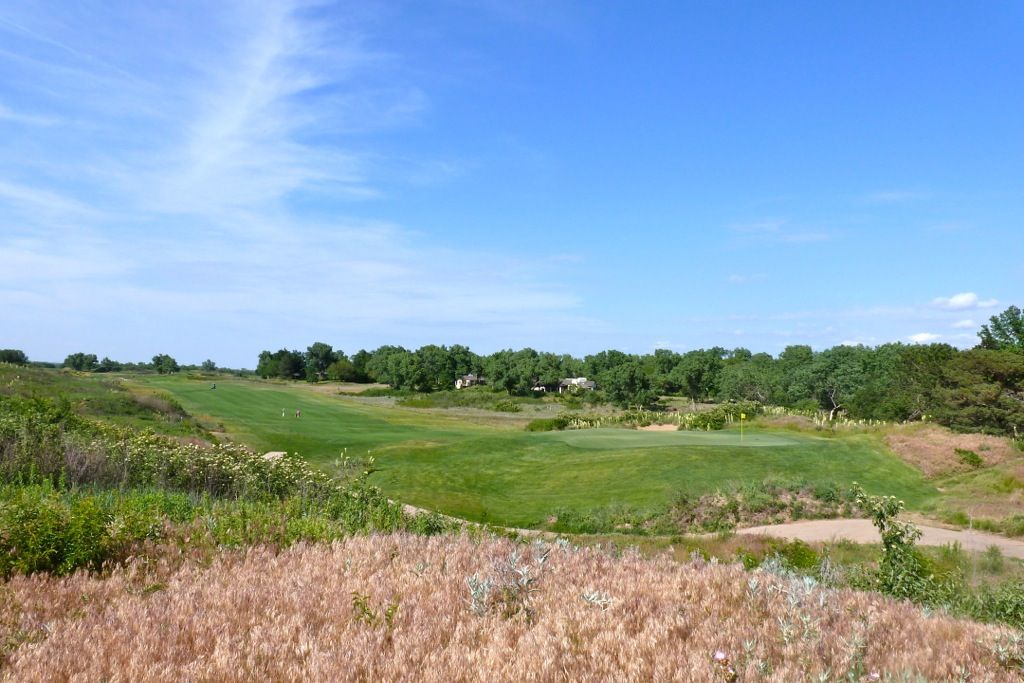
Hole 18: Par 4, 390 Yards -- A relatively benign finisher downwind, but a brute into a headwind. Downwind most golfers will hit less than driver from the tee to play to the wide portion of the fairway and to avoid running through the fairway. Into the wind, this hole played as driver-5iron+ for four pretty decent golfers -- a beast of a golf hole.
From the back tees the view of a good portion of the fairway is blind, and the trouble to the right of the fairway lay intimidatingly in view; I am sure many golfers pull their tee shots into the left rough, leaving the more difficult angle of approach.

From the white tee the entire fairway is in view:
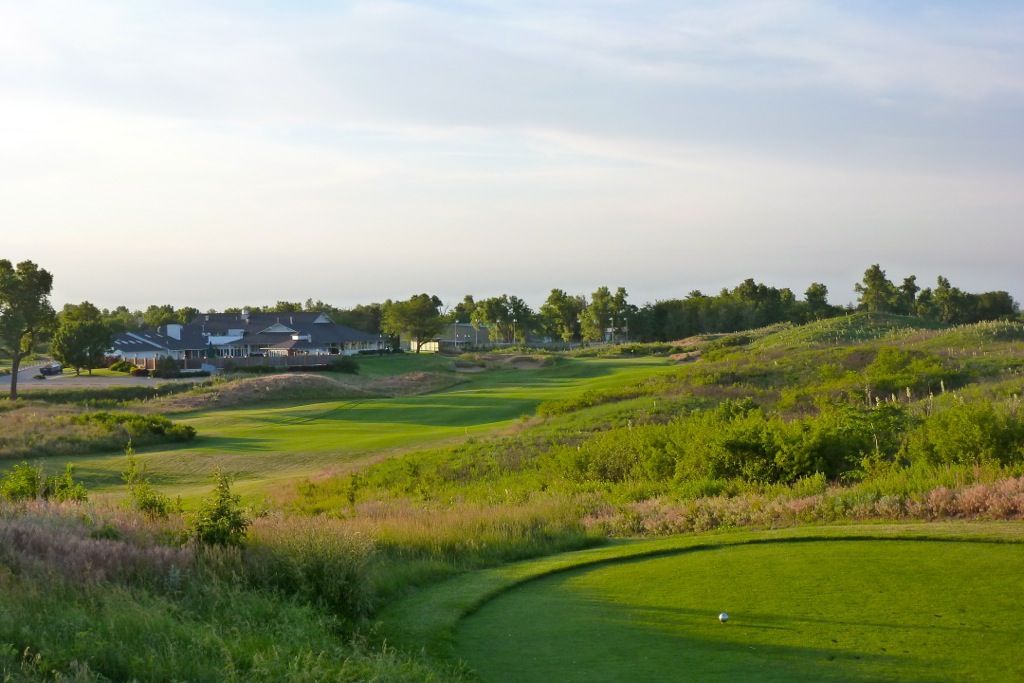

Not surprisingly the fairway at the 18th is rolling and rumpled...
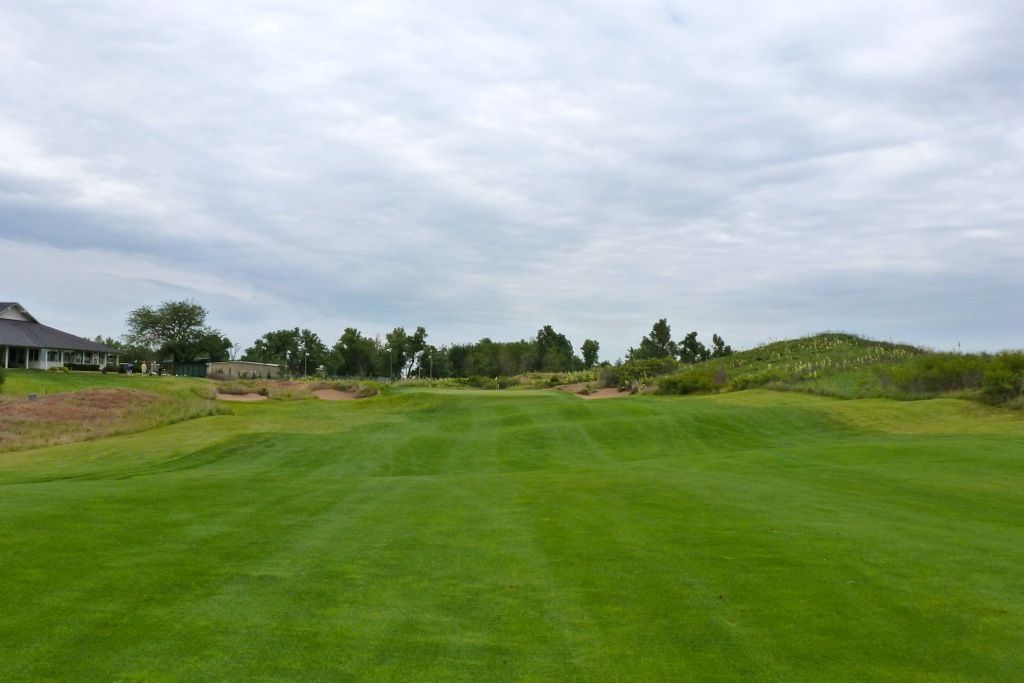
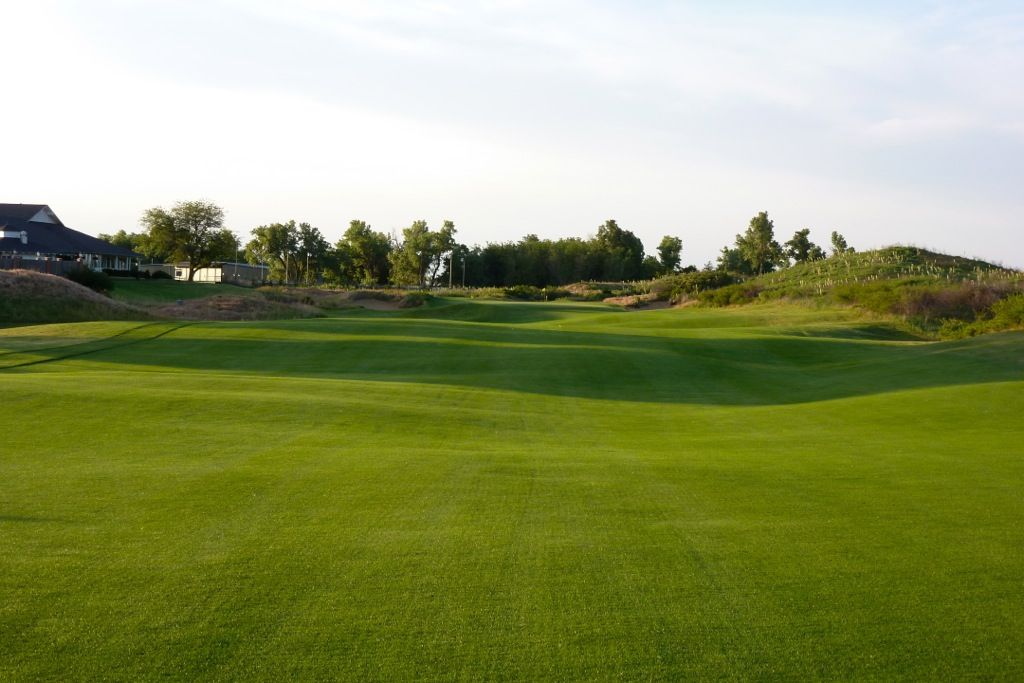
Approaches from the right side of the fairway can be run onto the 18th green, while approaches from the left must be aerial and played over a hollow short of the green.
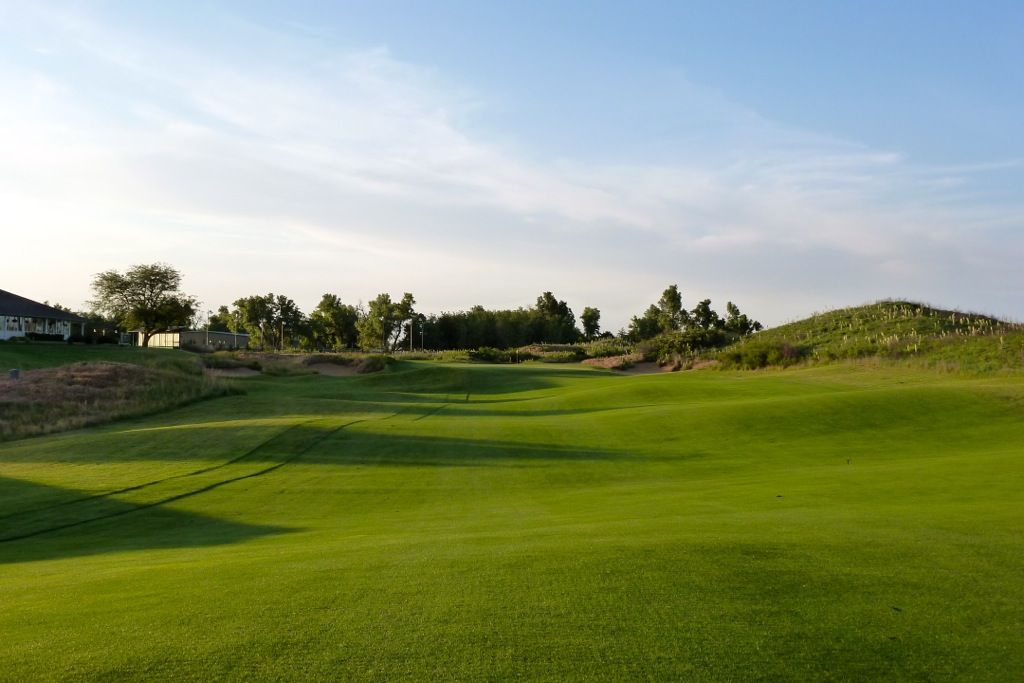
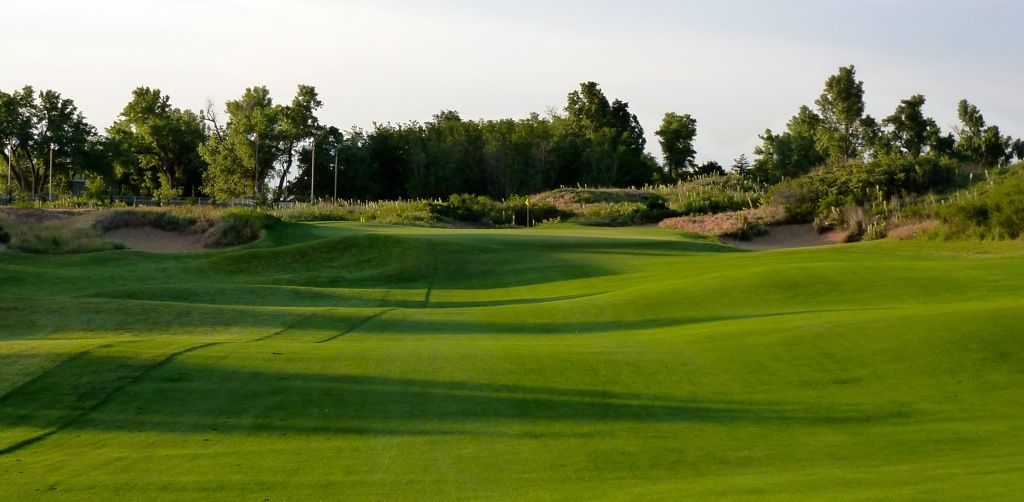
The 18th green site is another wonderful Perry Maxwell creation (or should I say find?) tucked amongst the dunes.
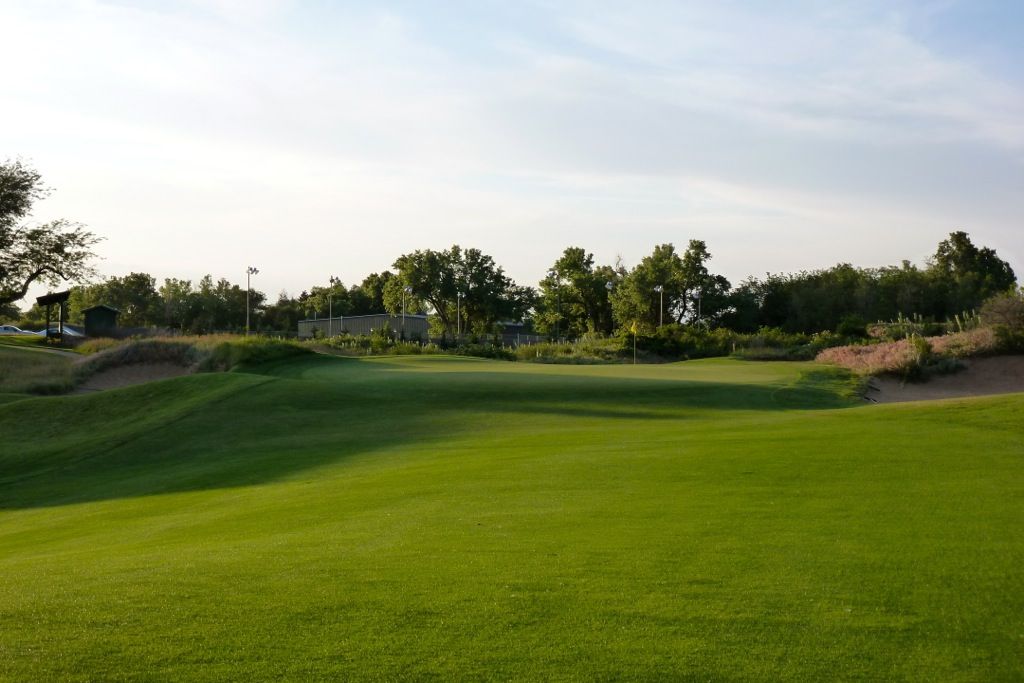
A look at the hollow short-left of the green:

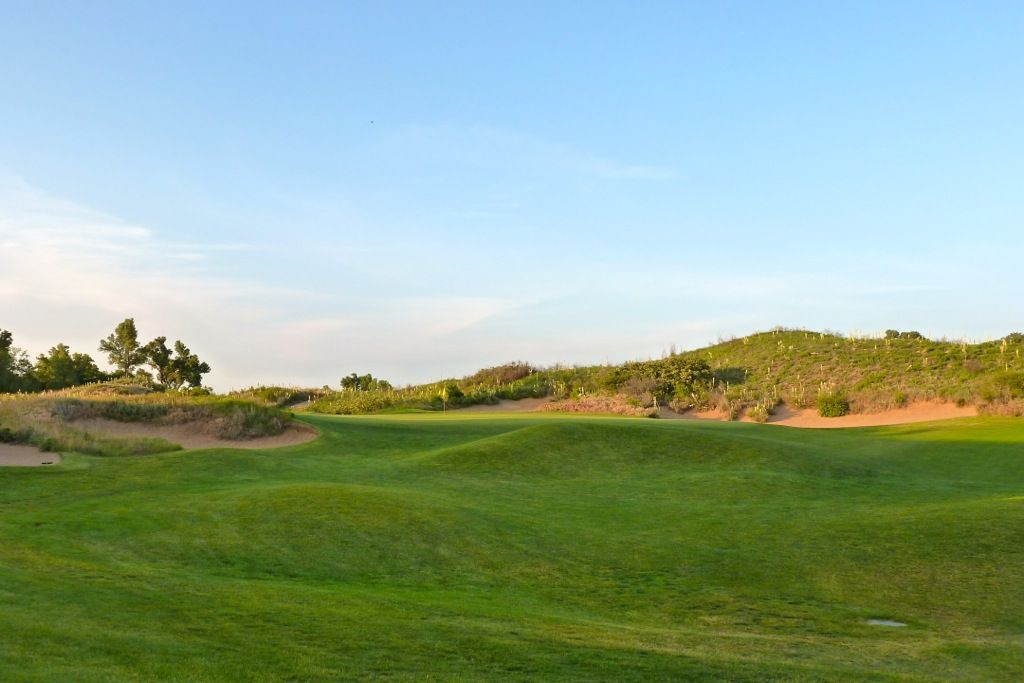
Green site from the 10th tee:
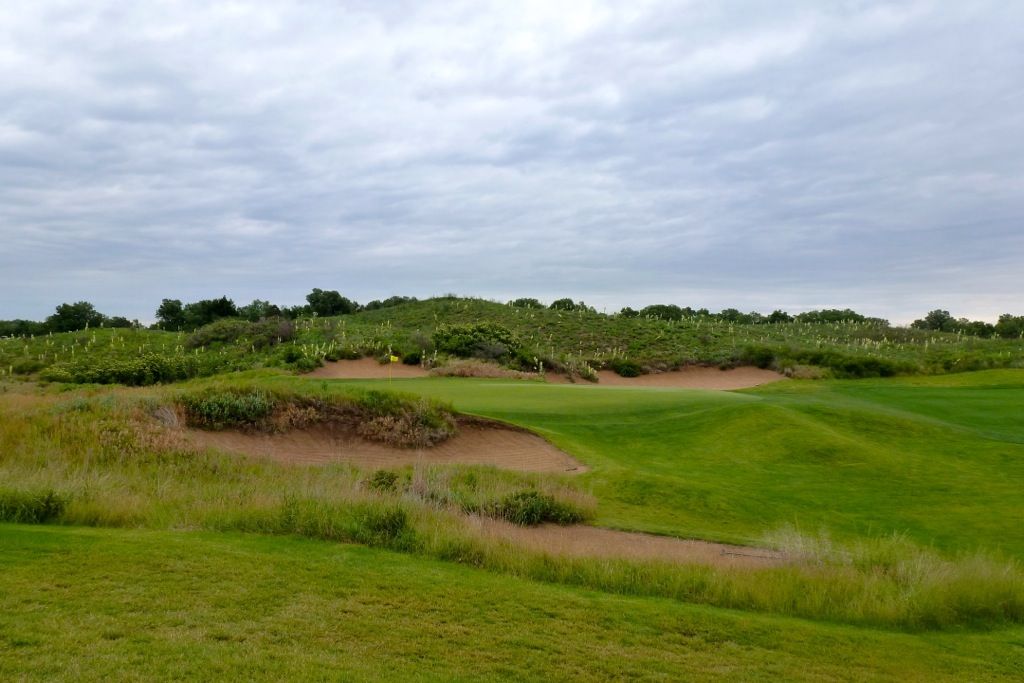
Green from short-right:
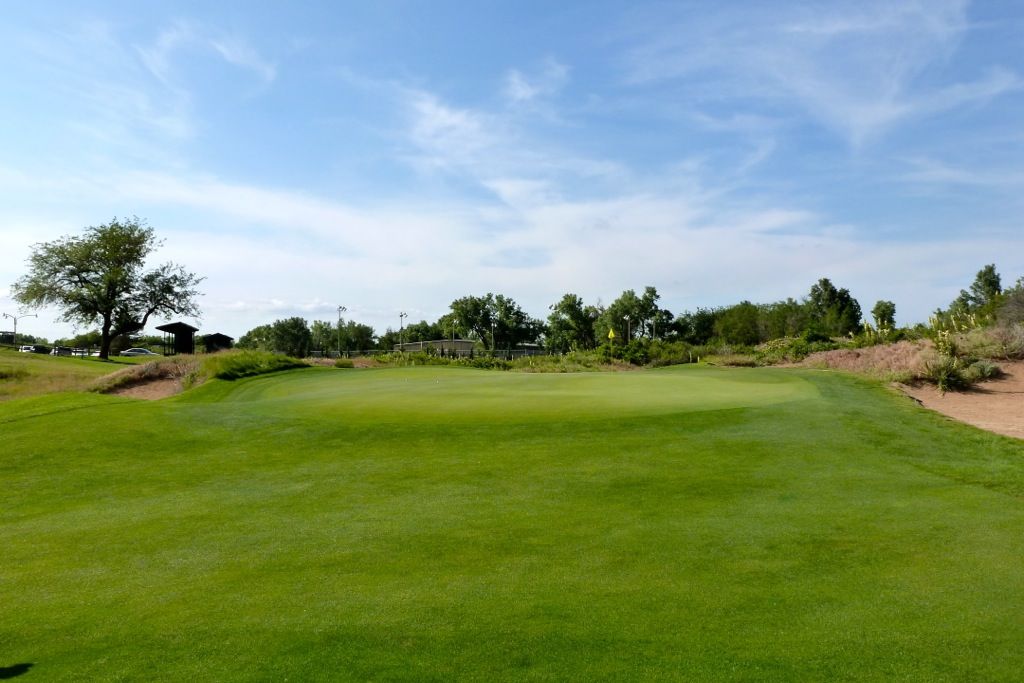
From back-left:
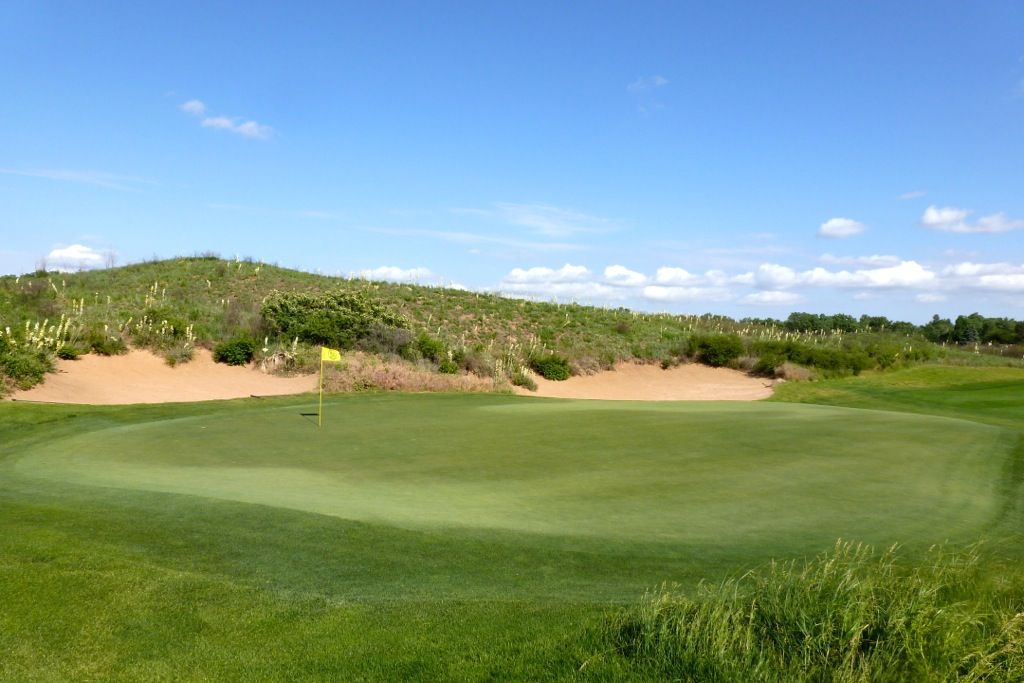
And from behind:
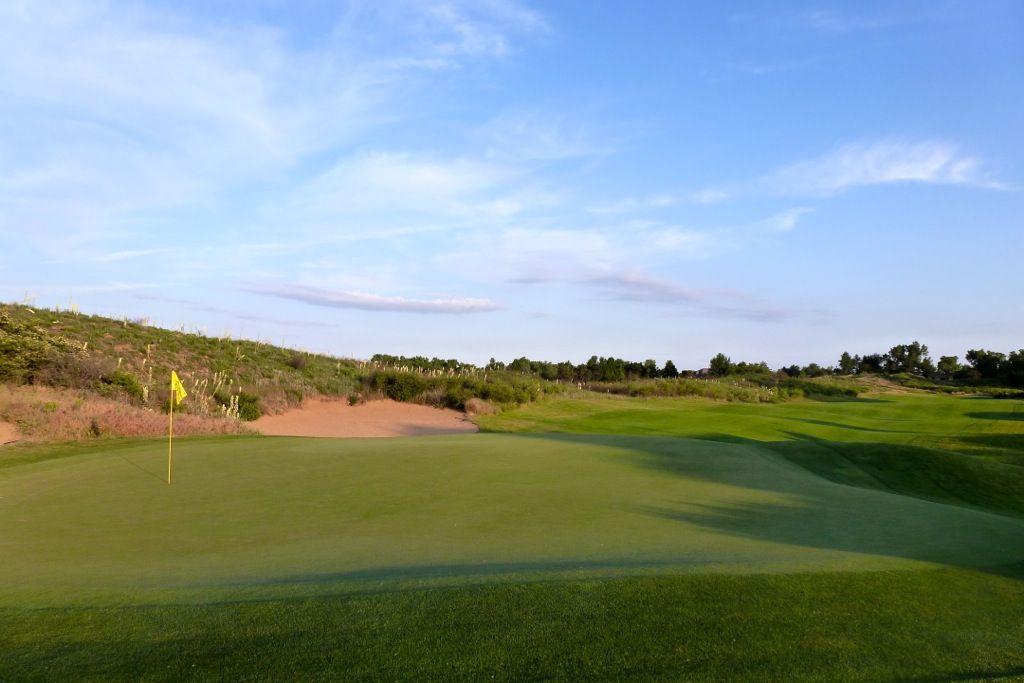

No comments:
Post a Comment